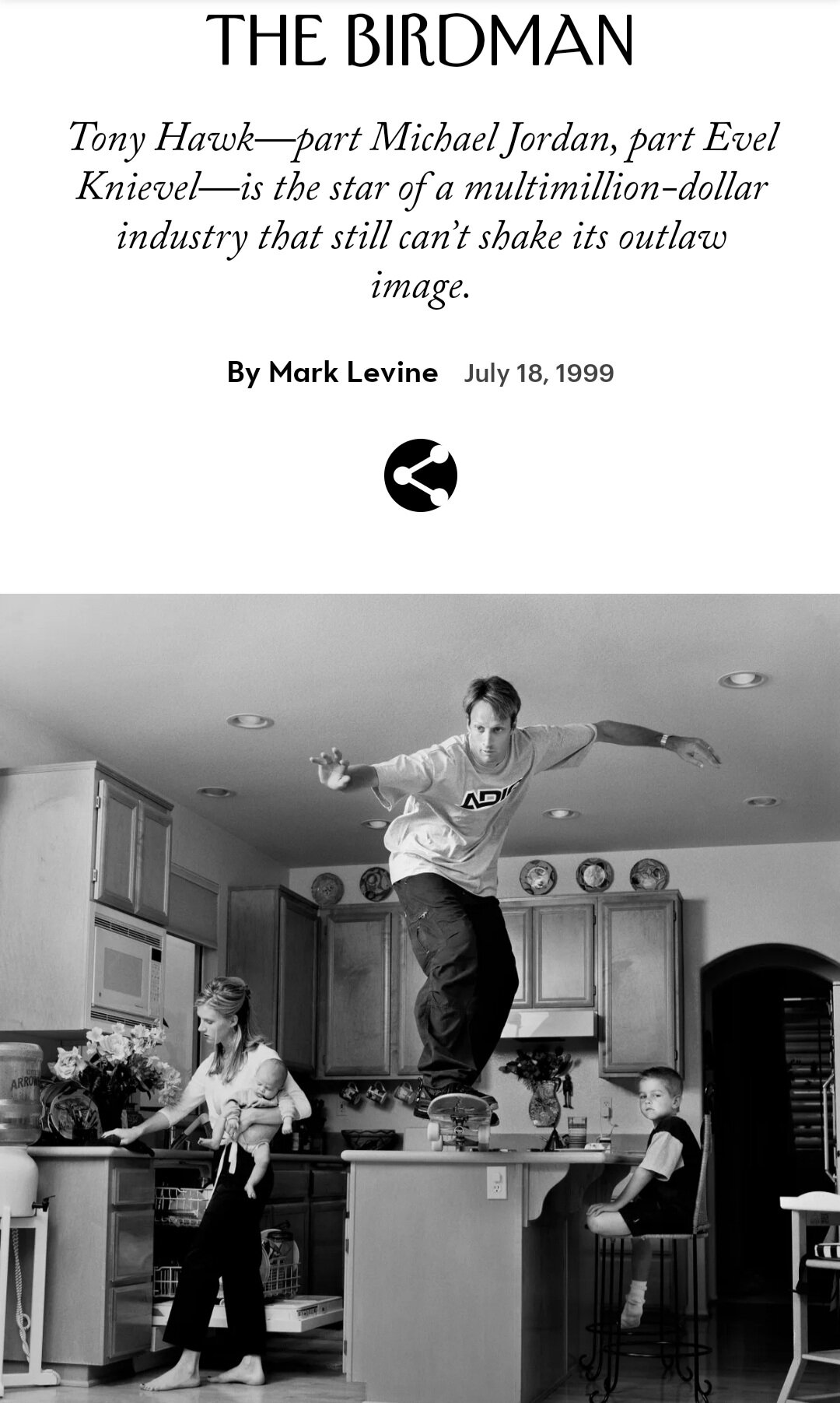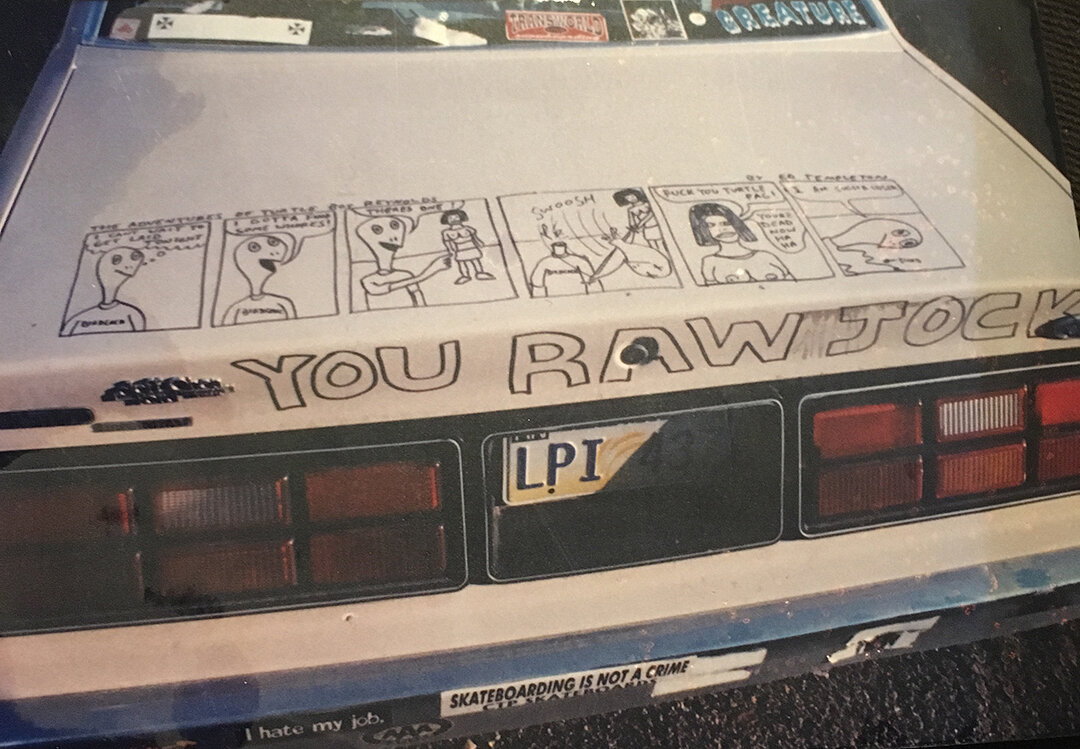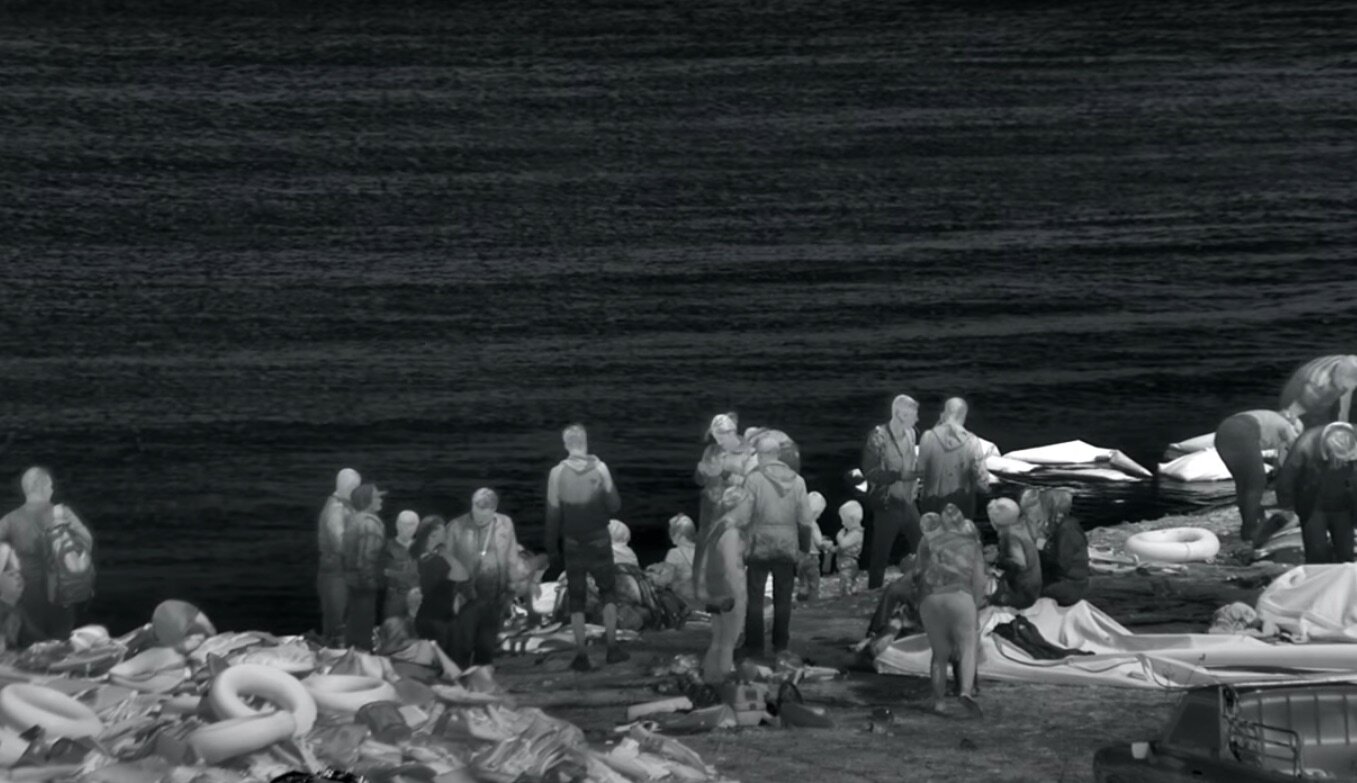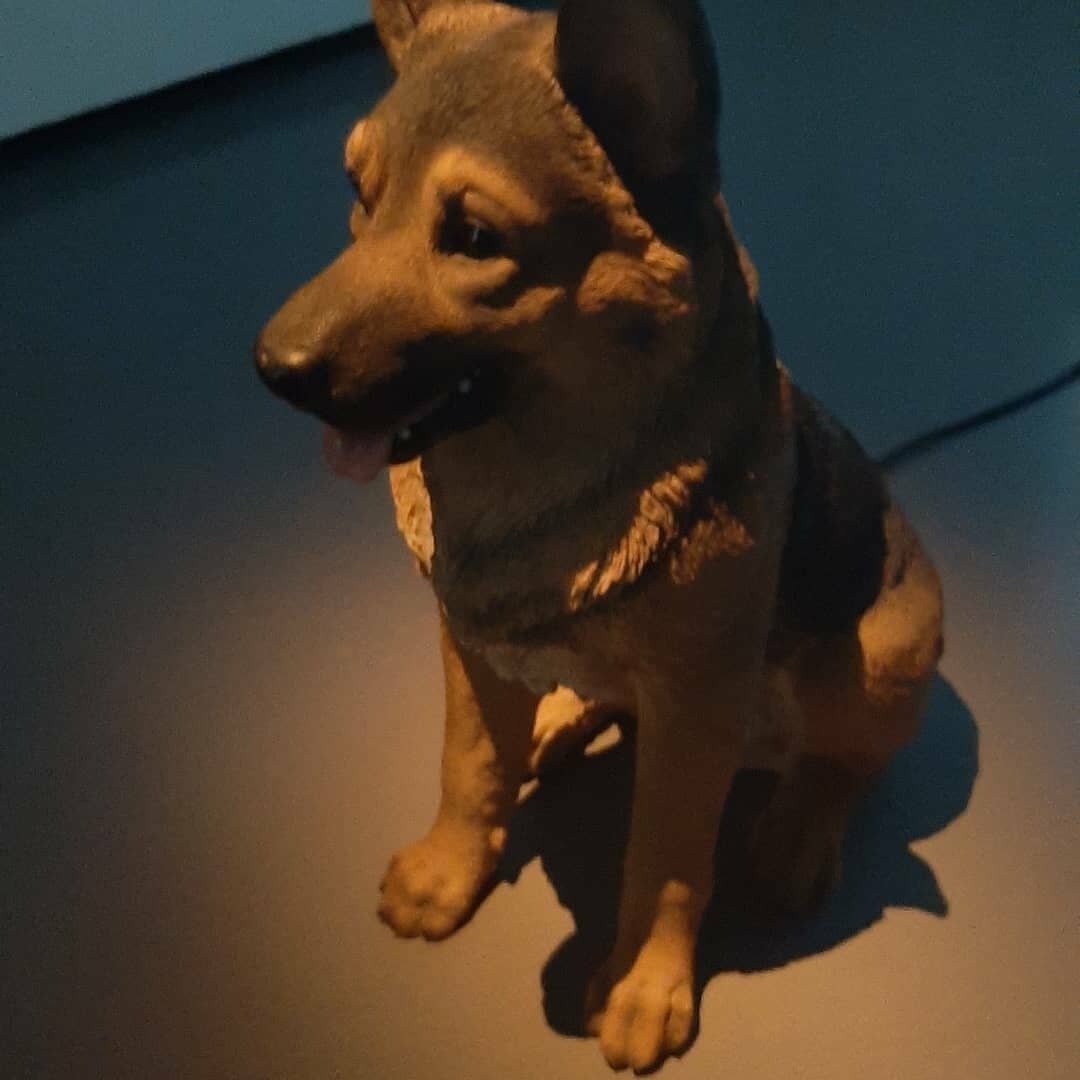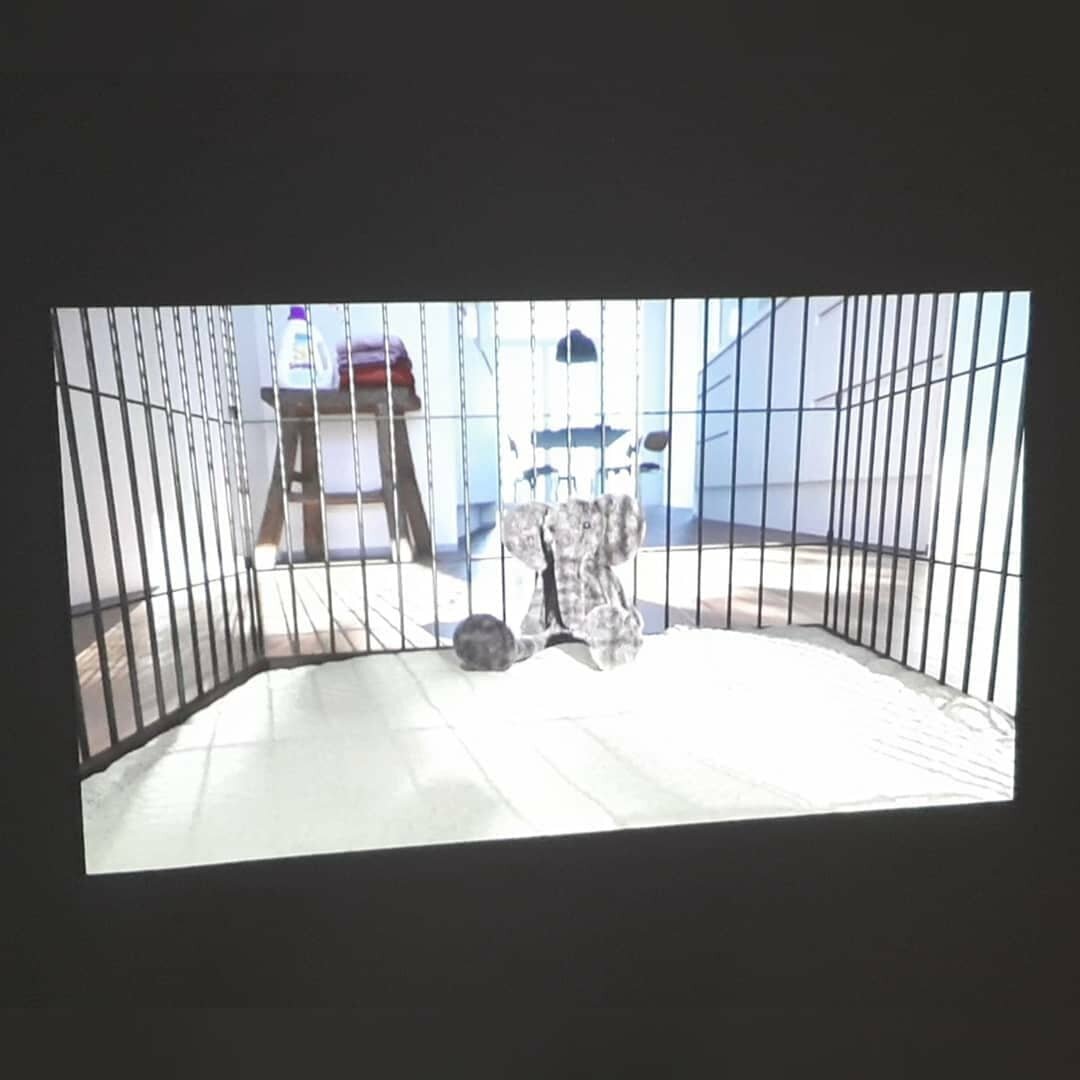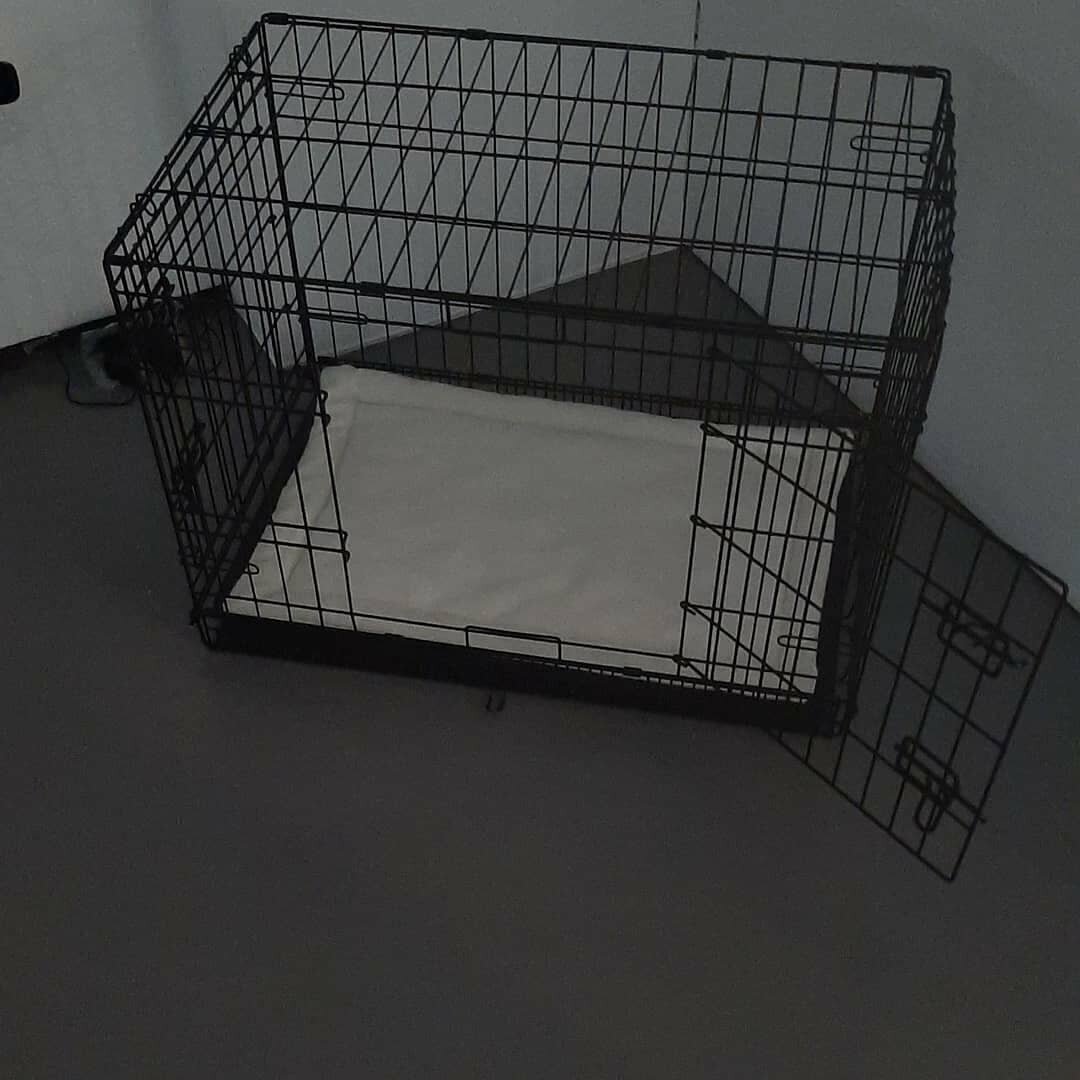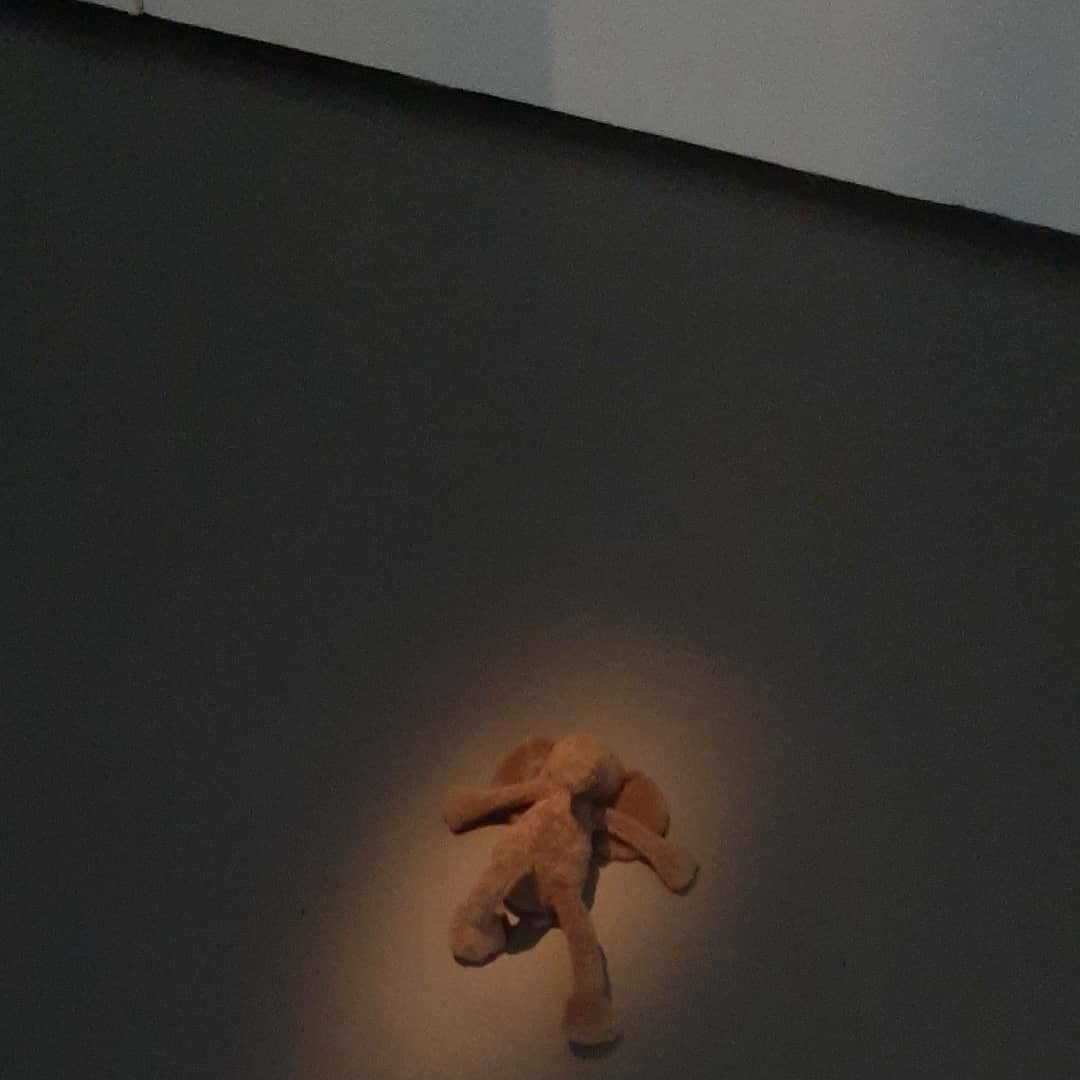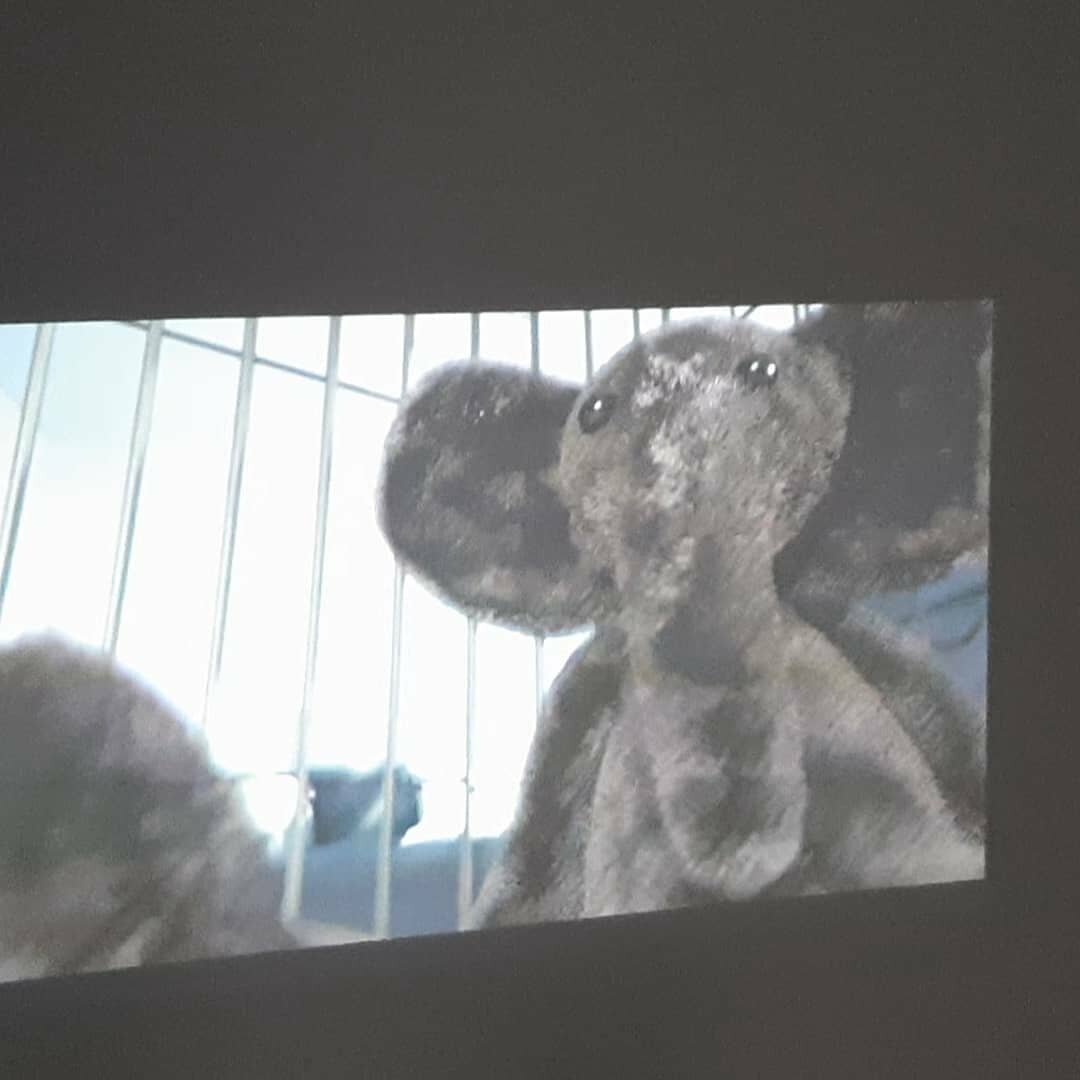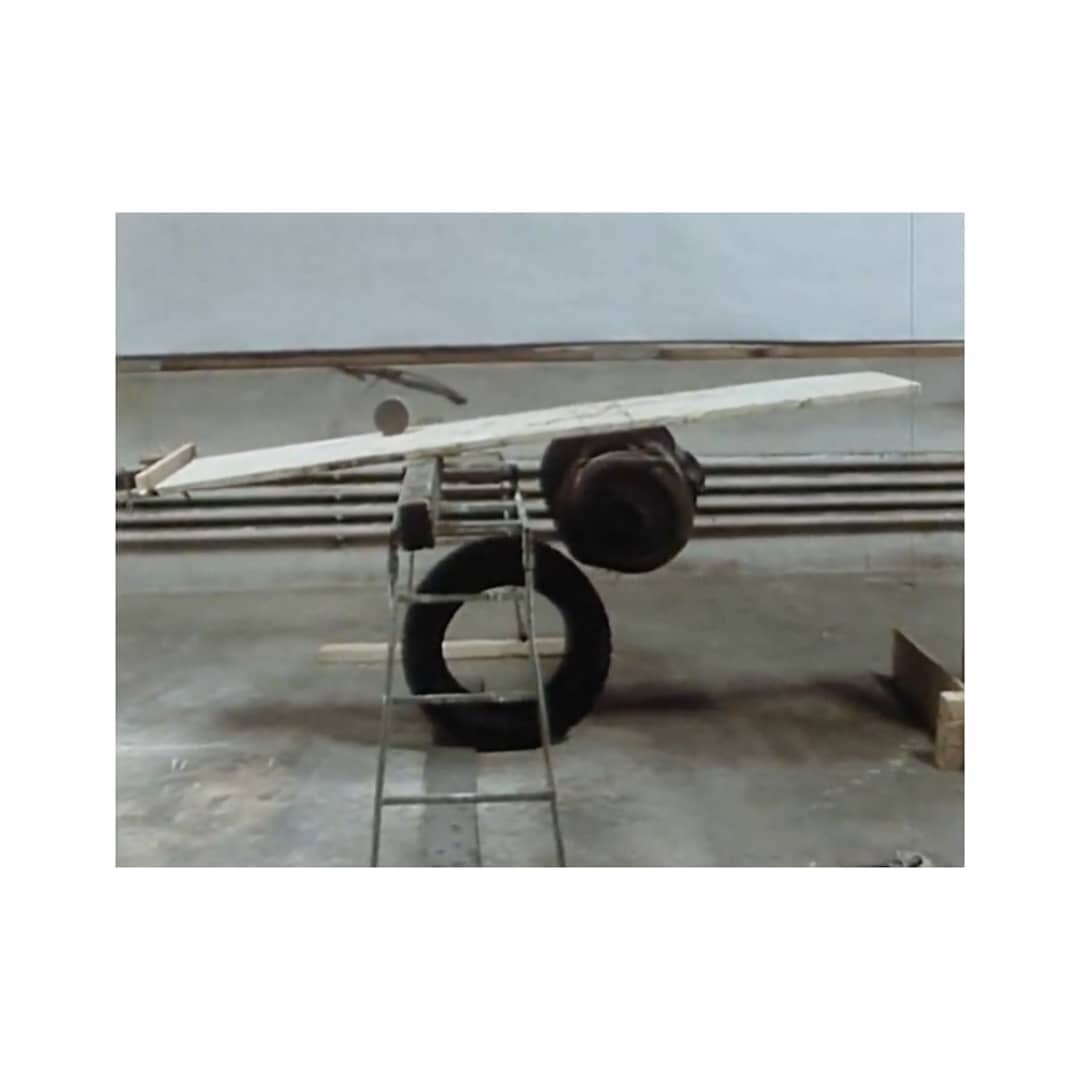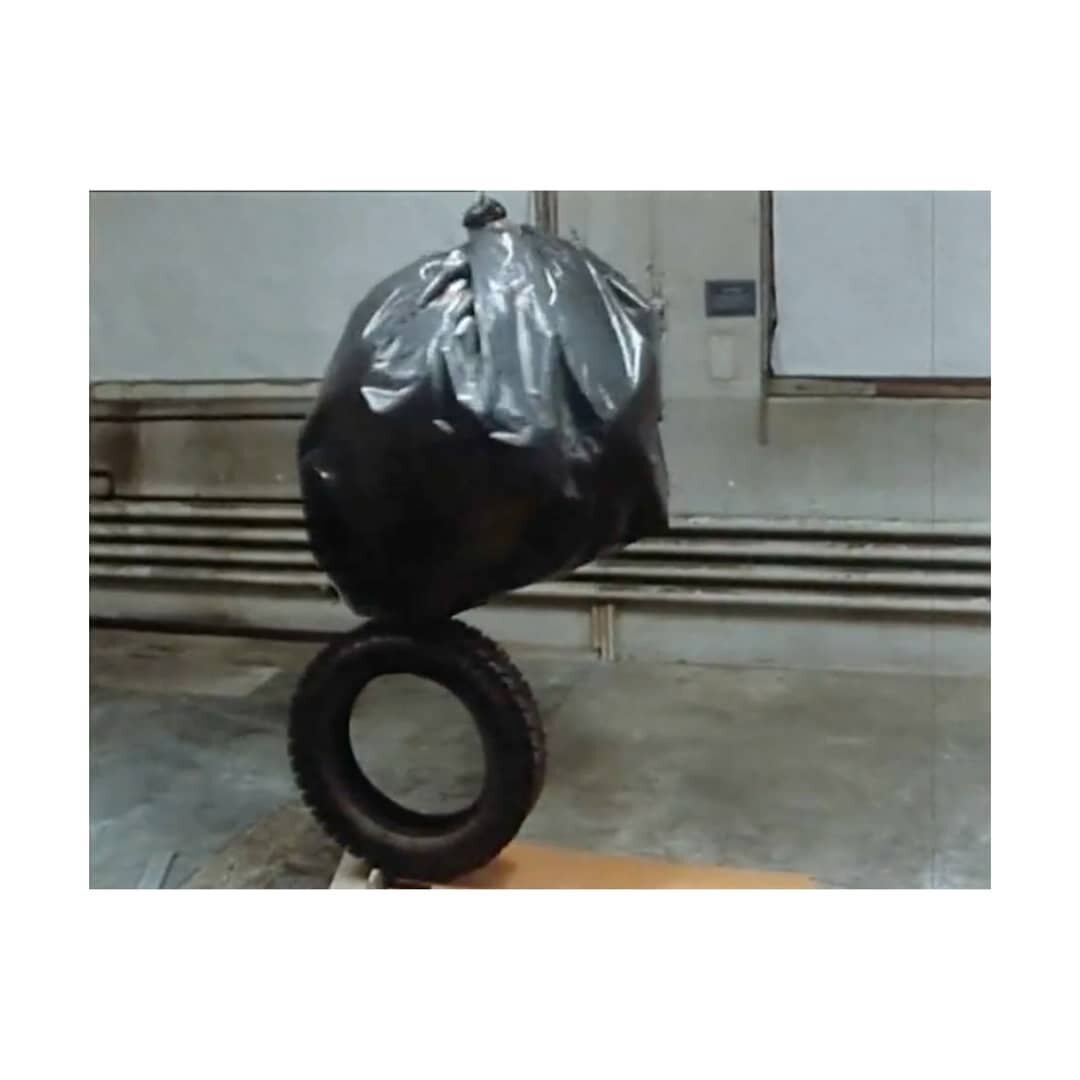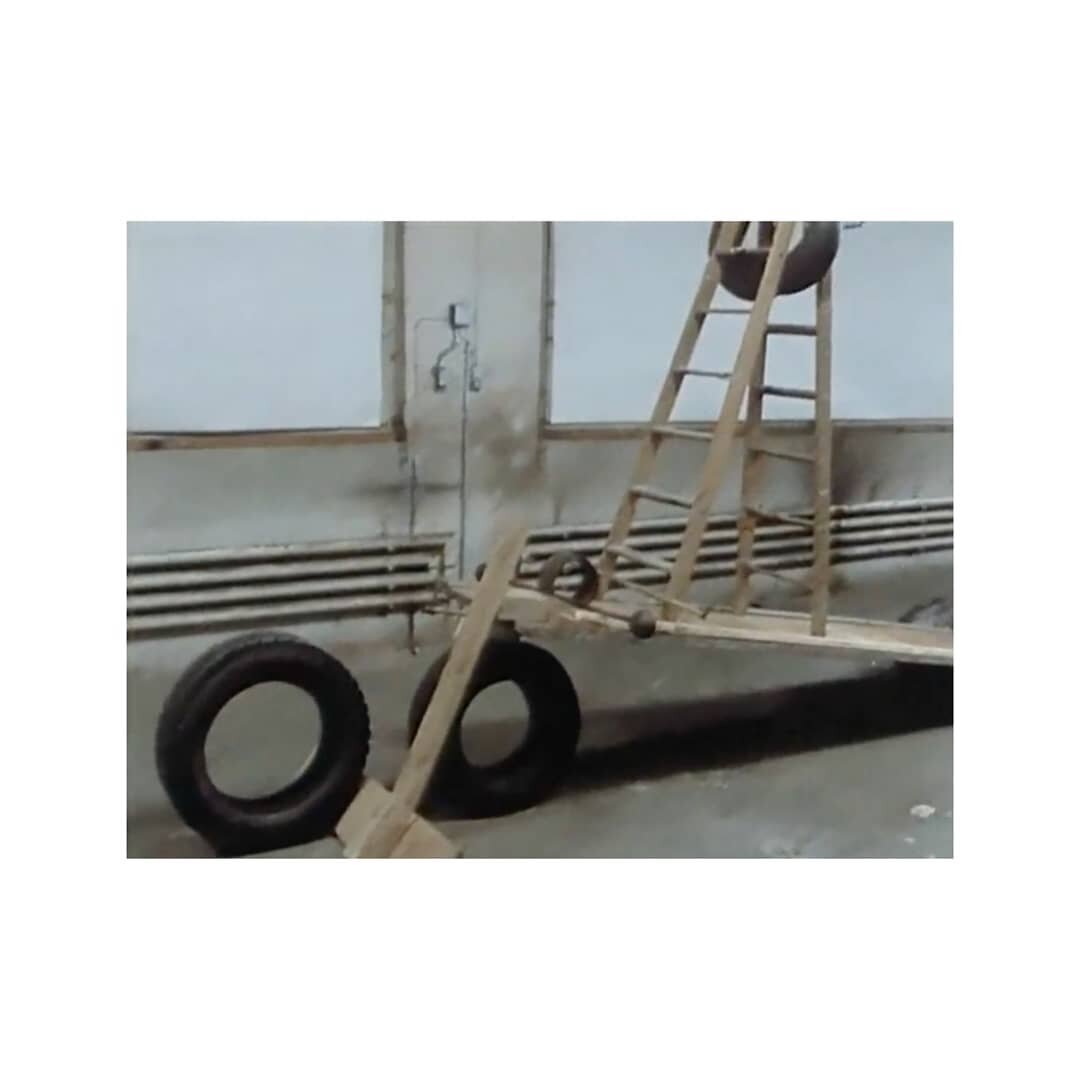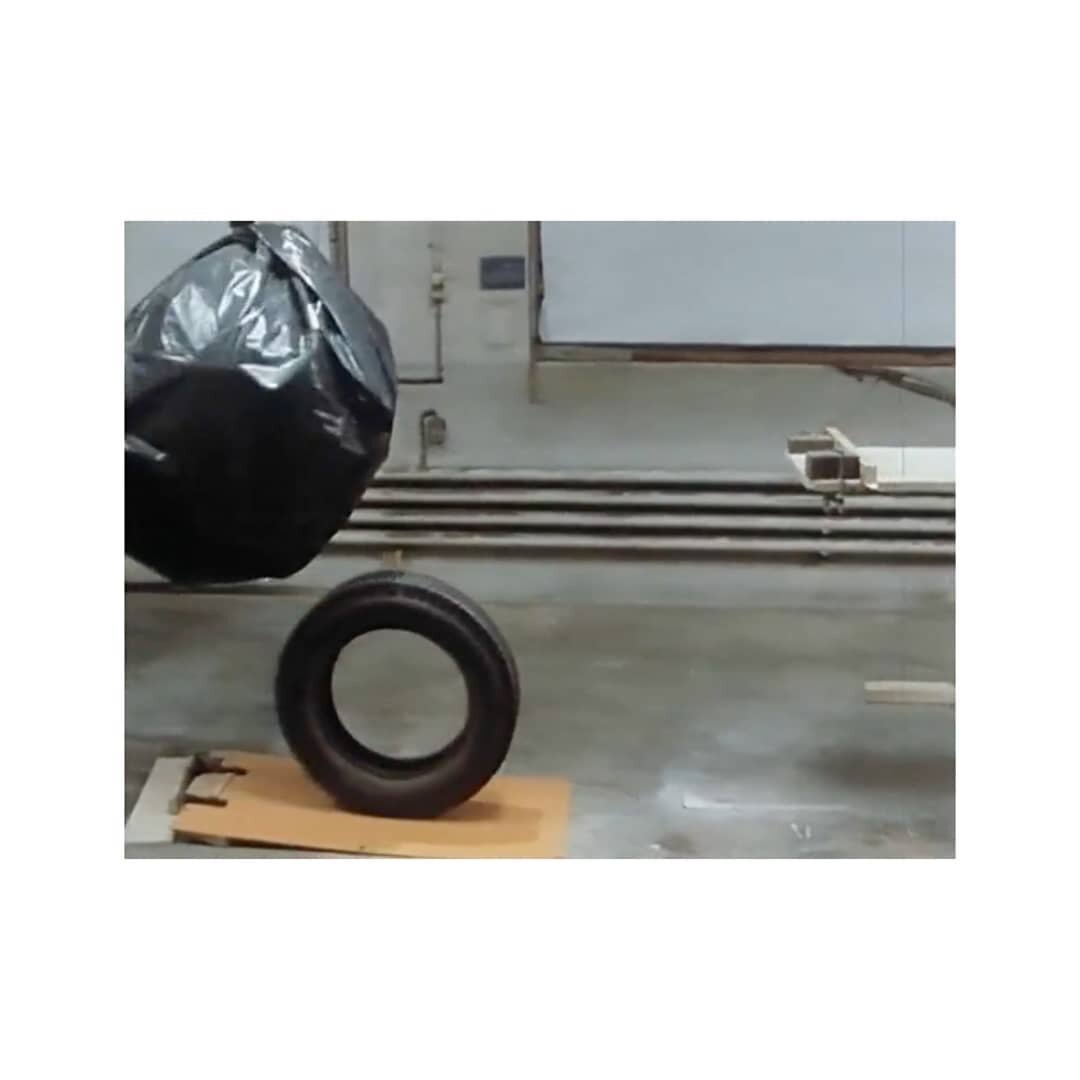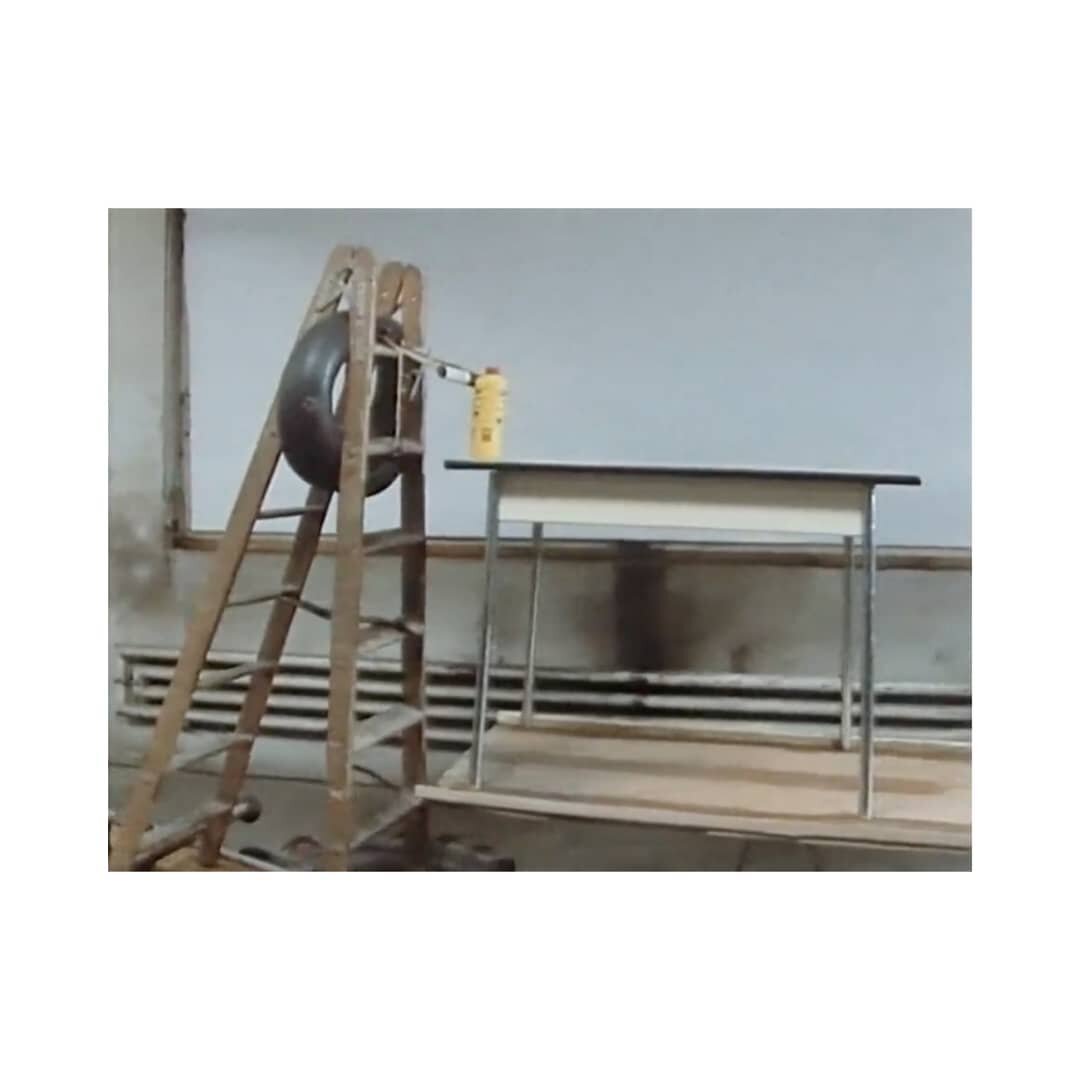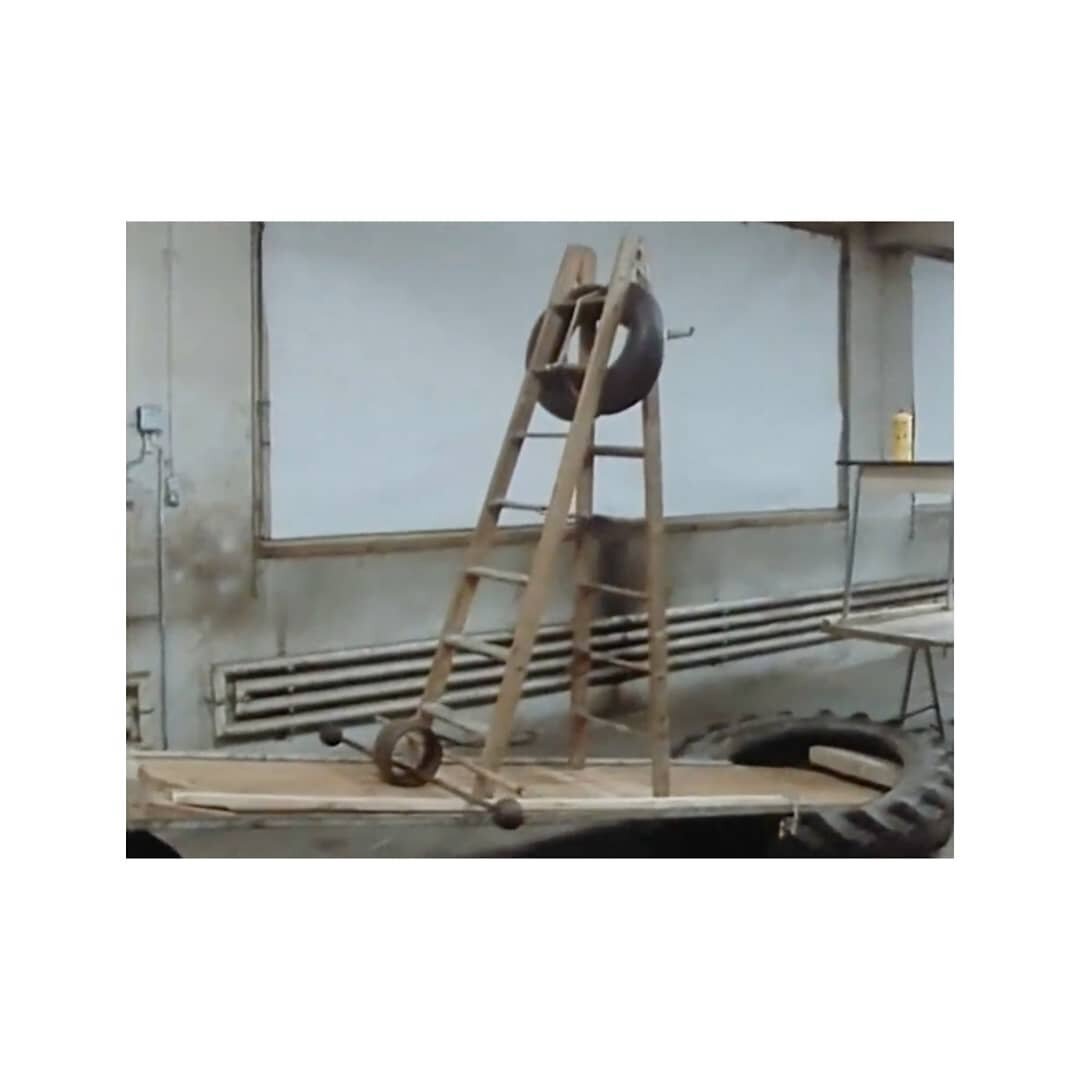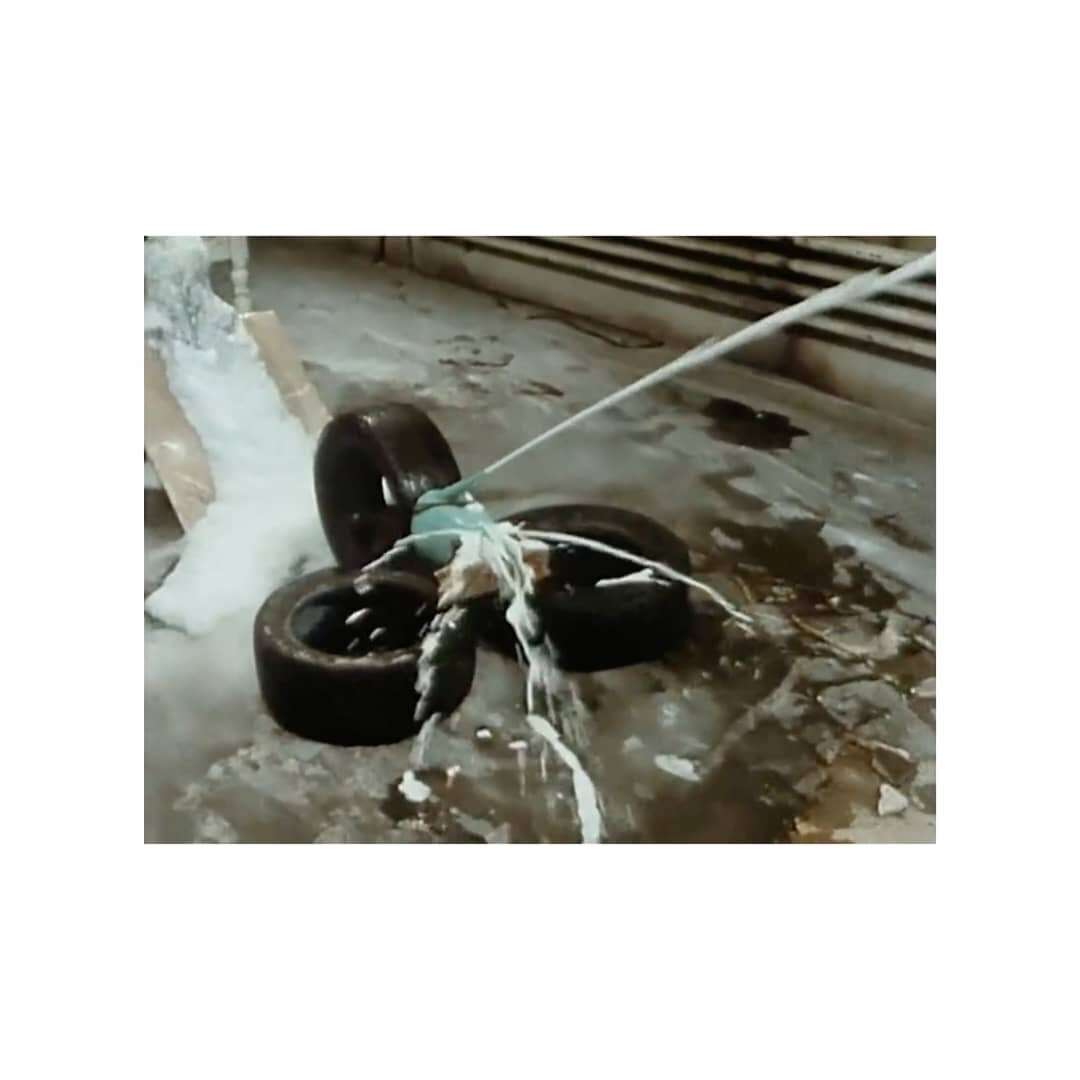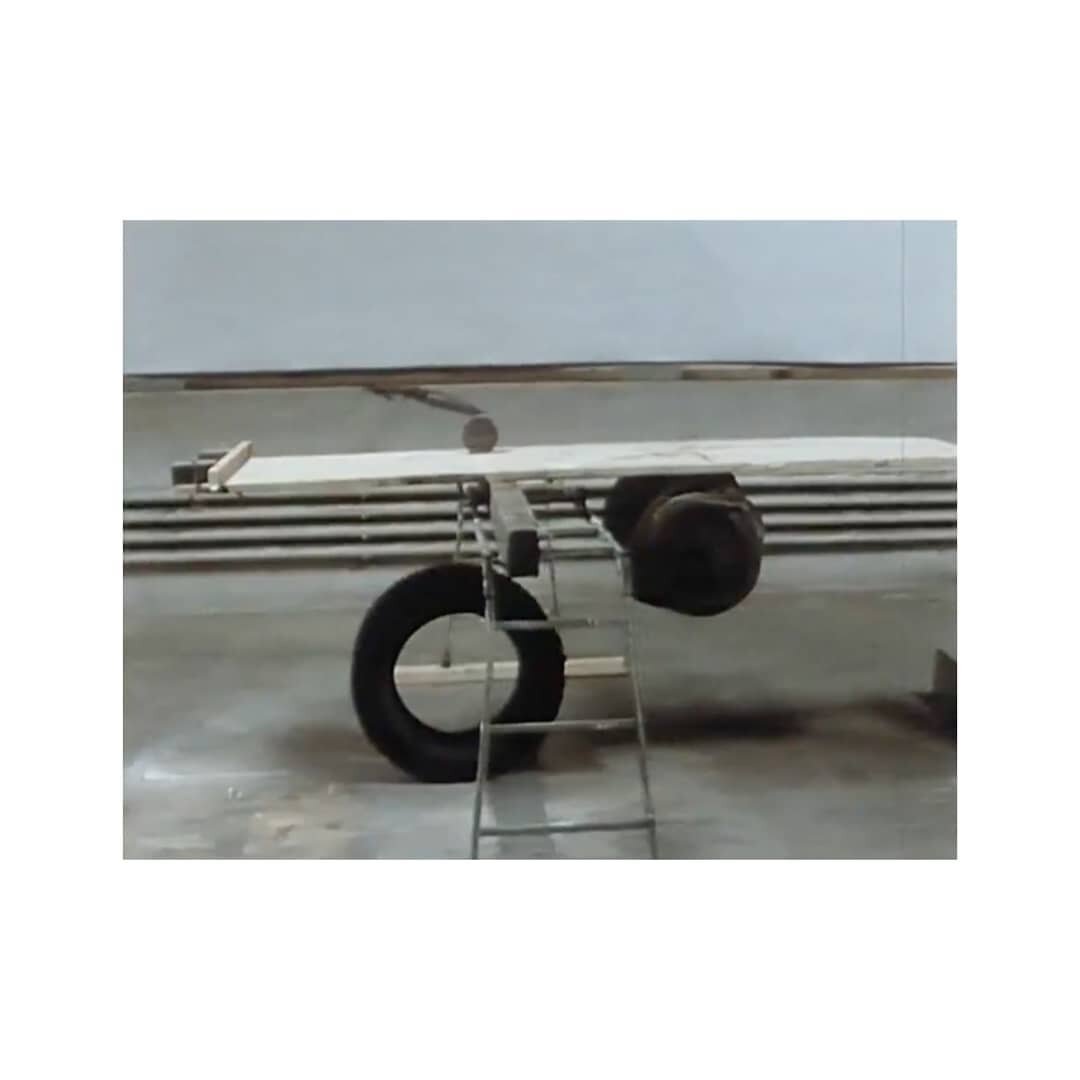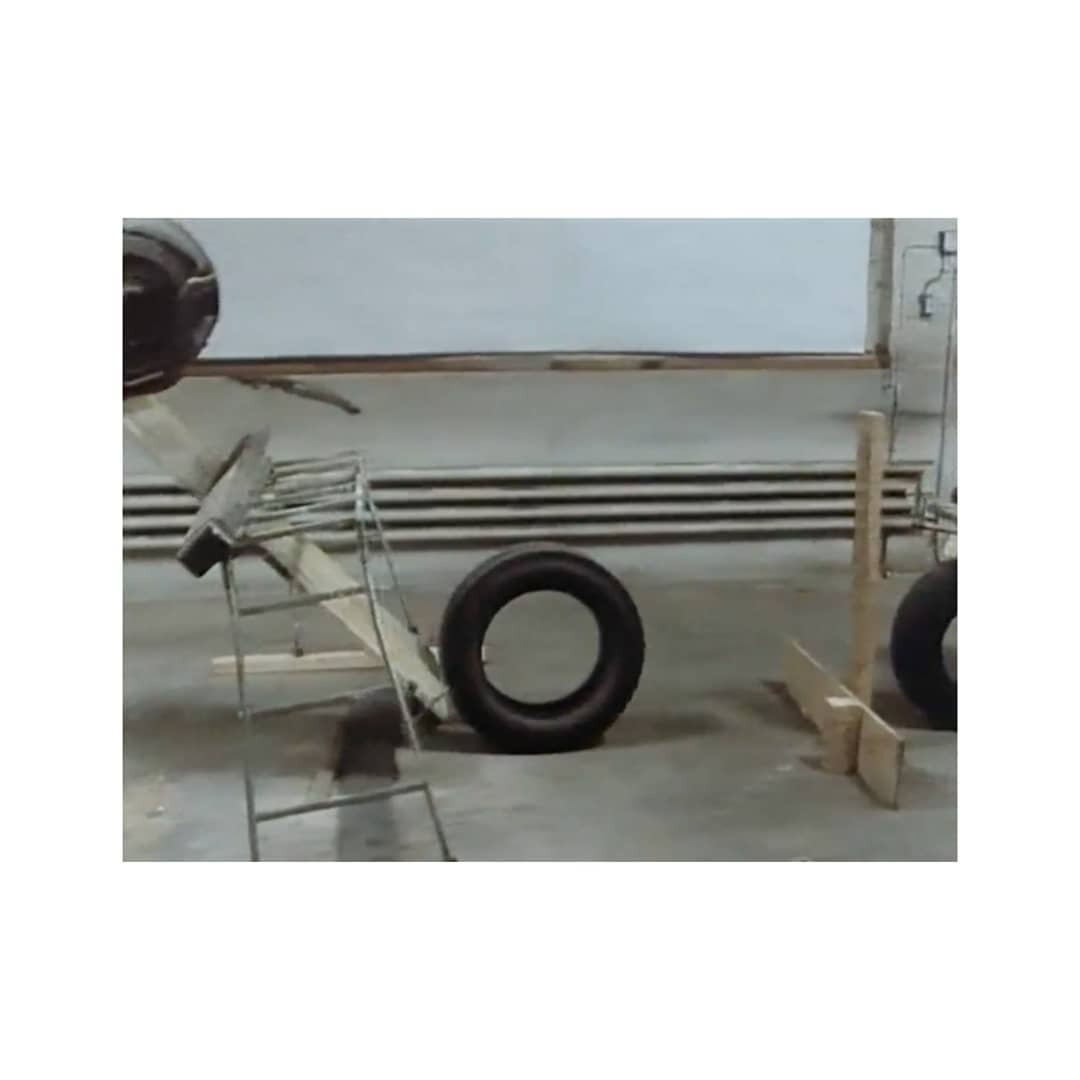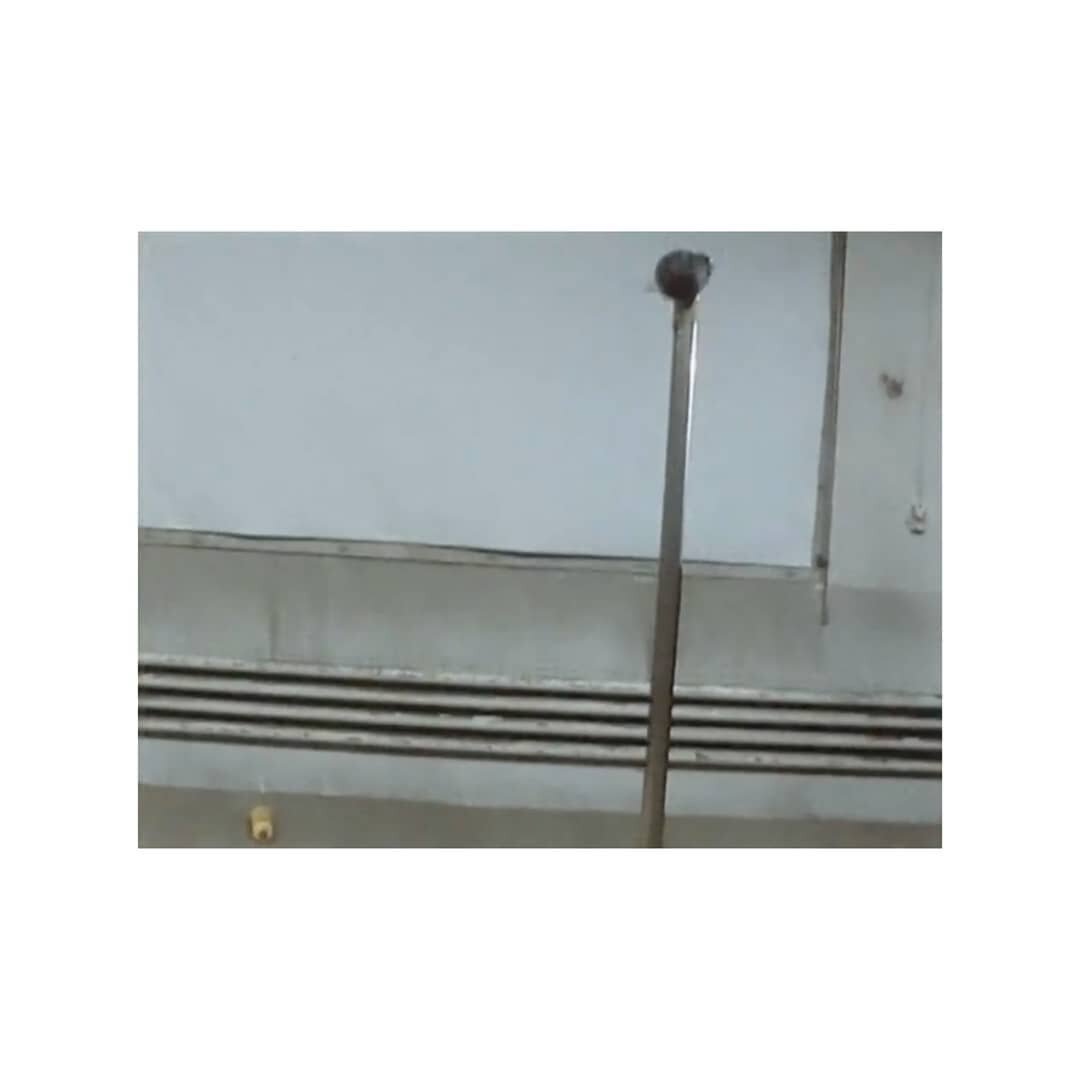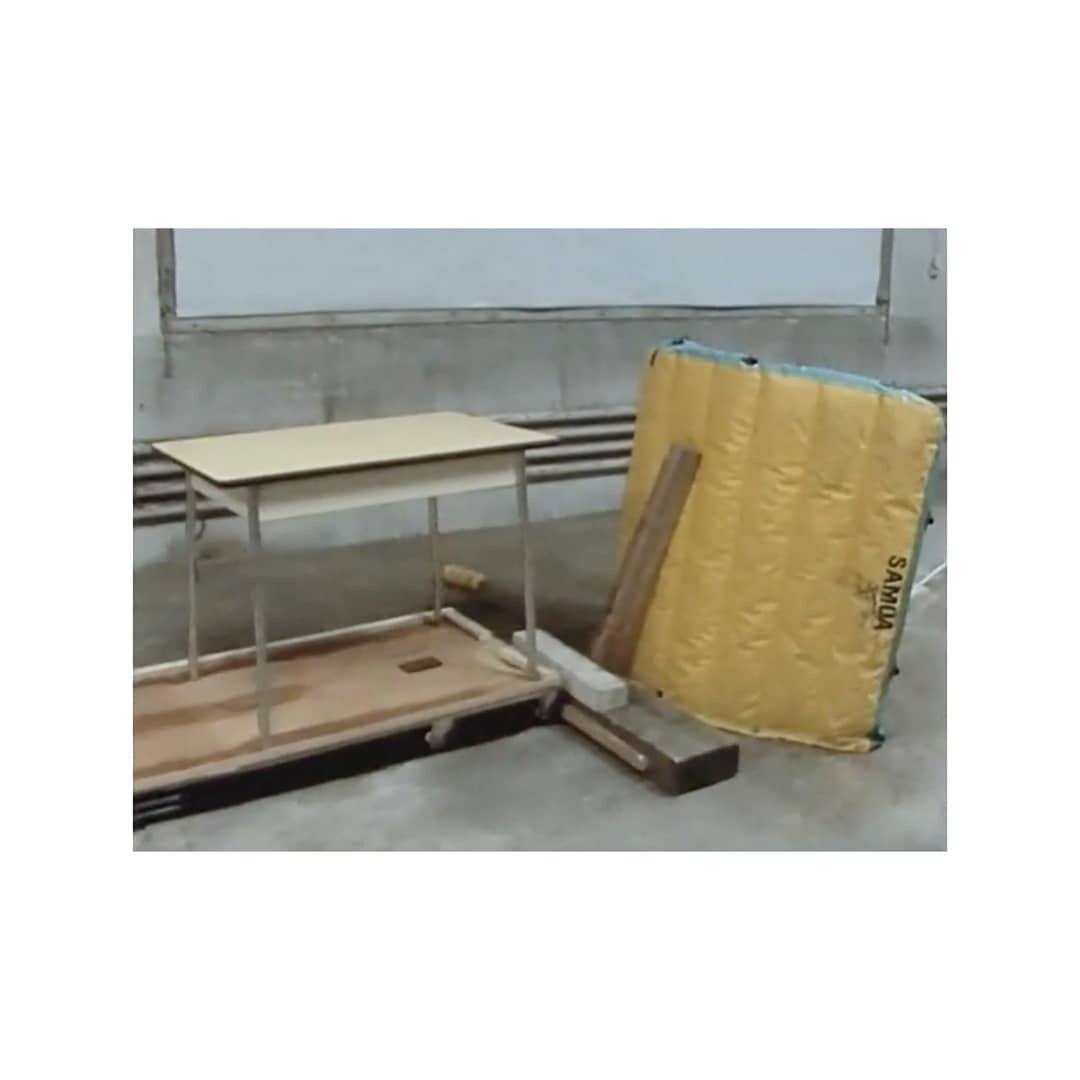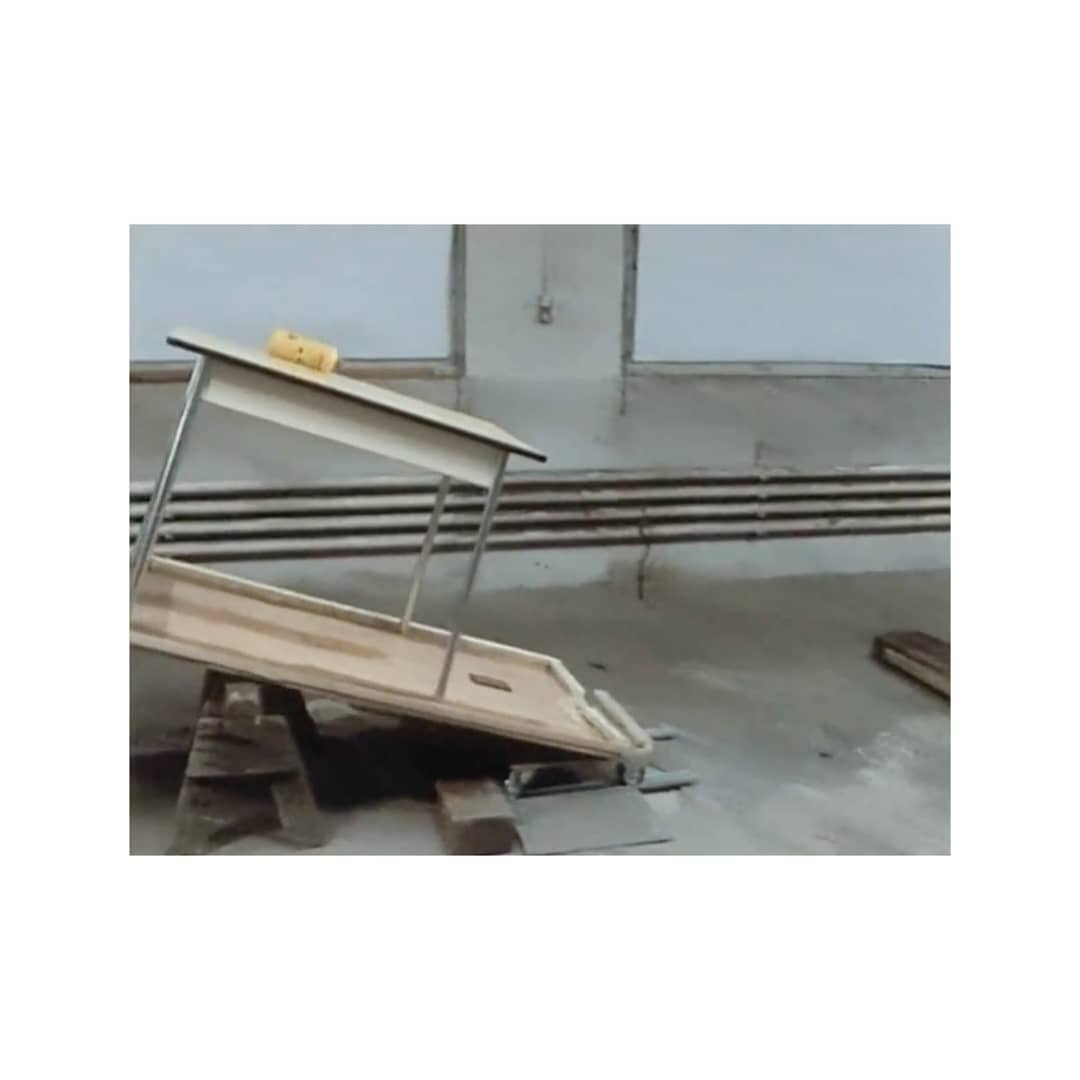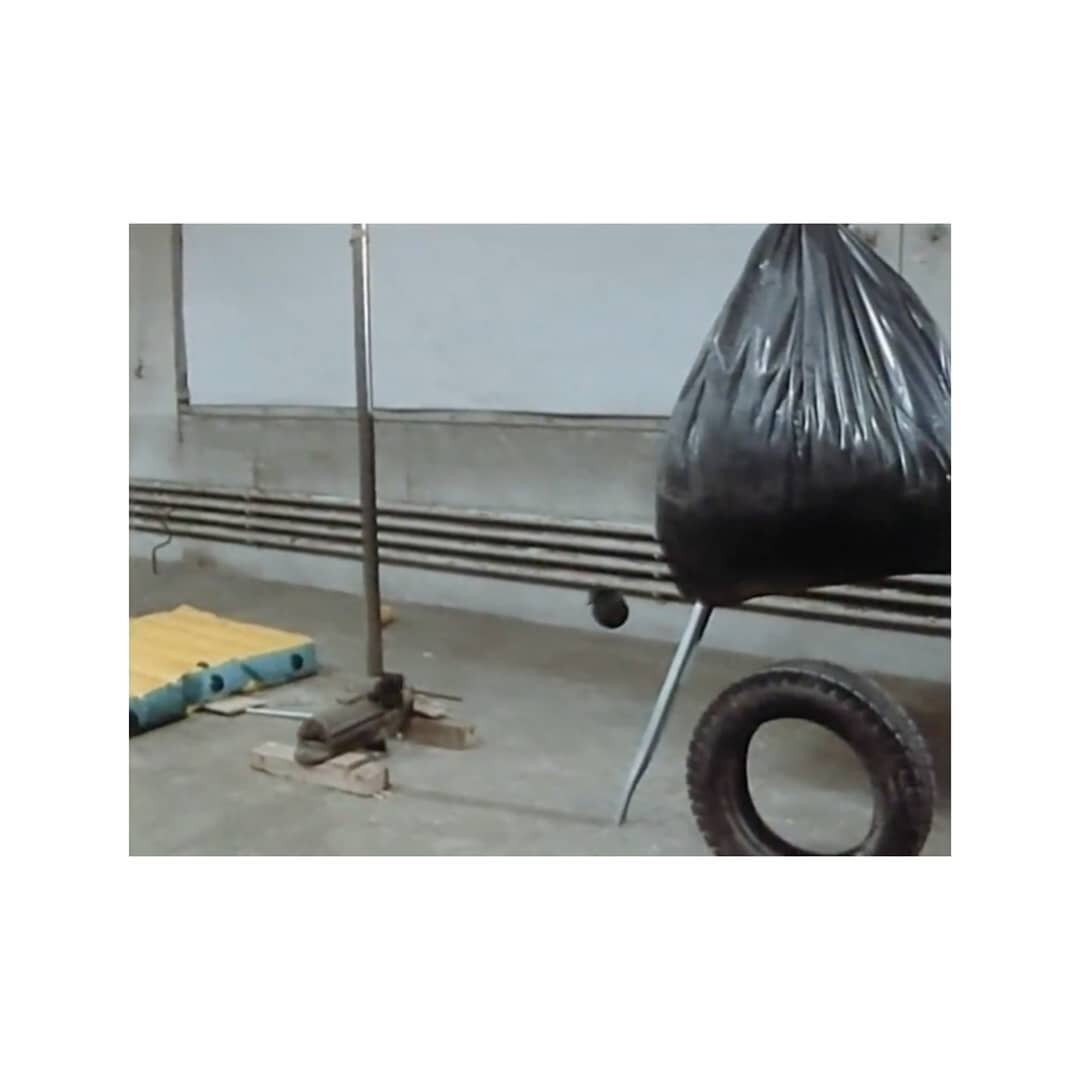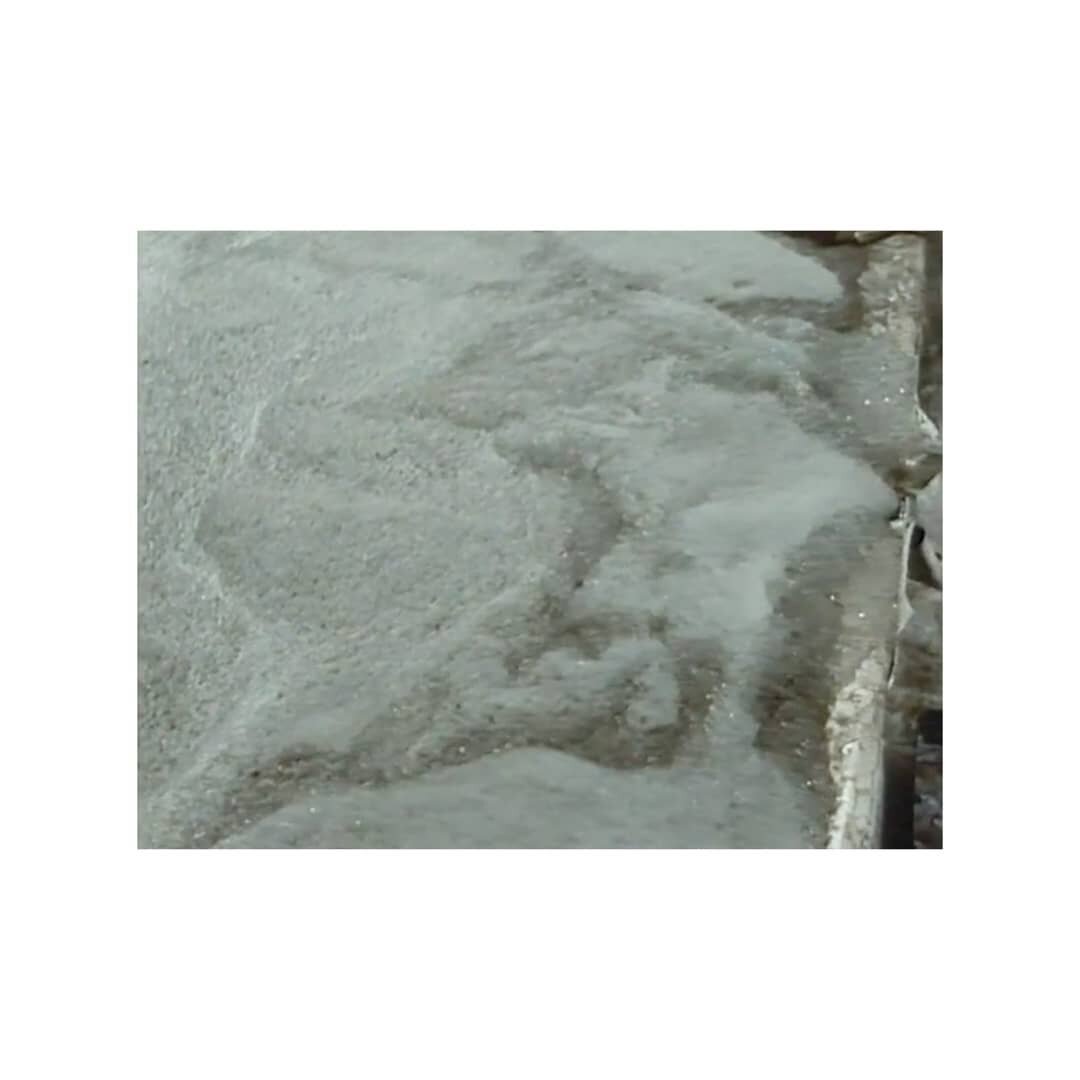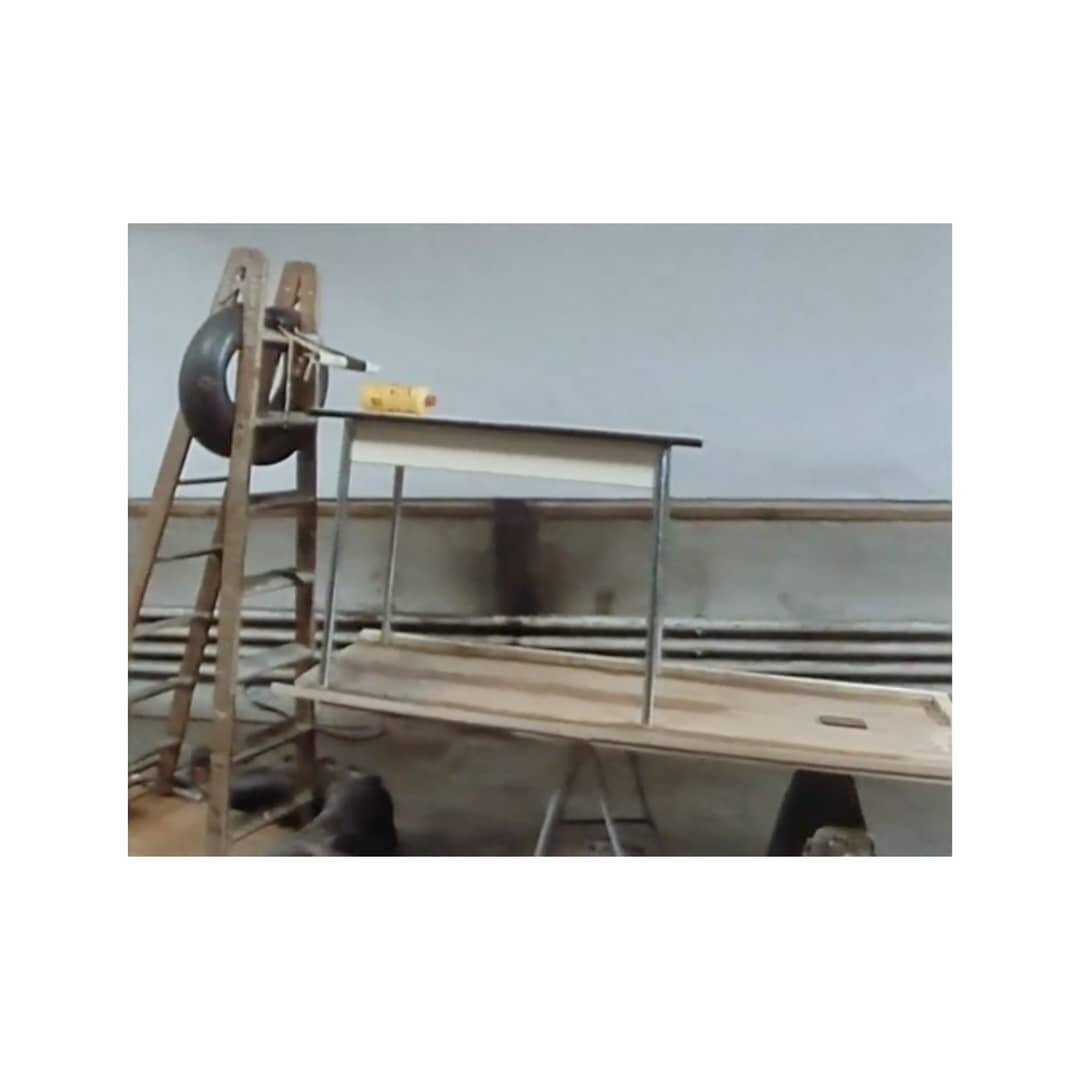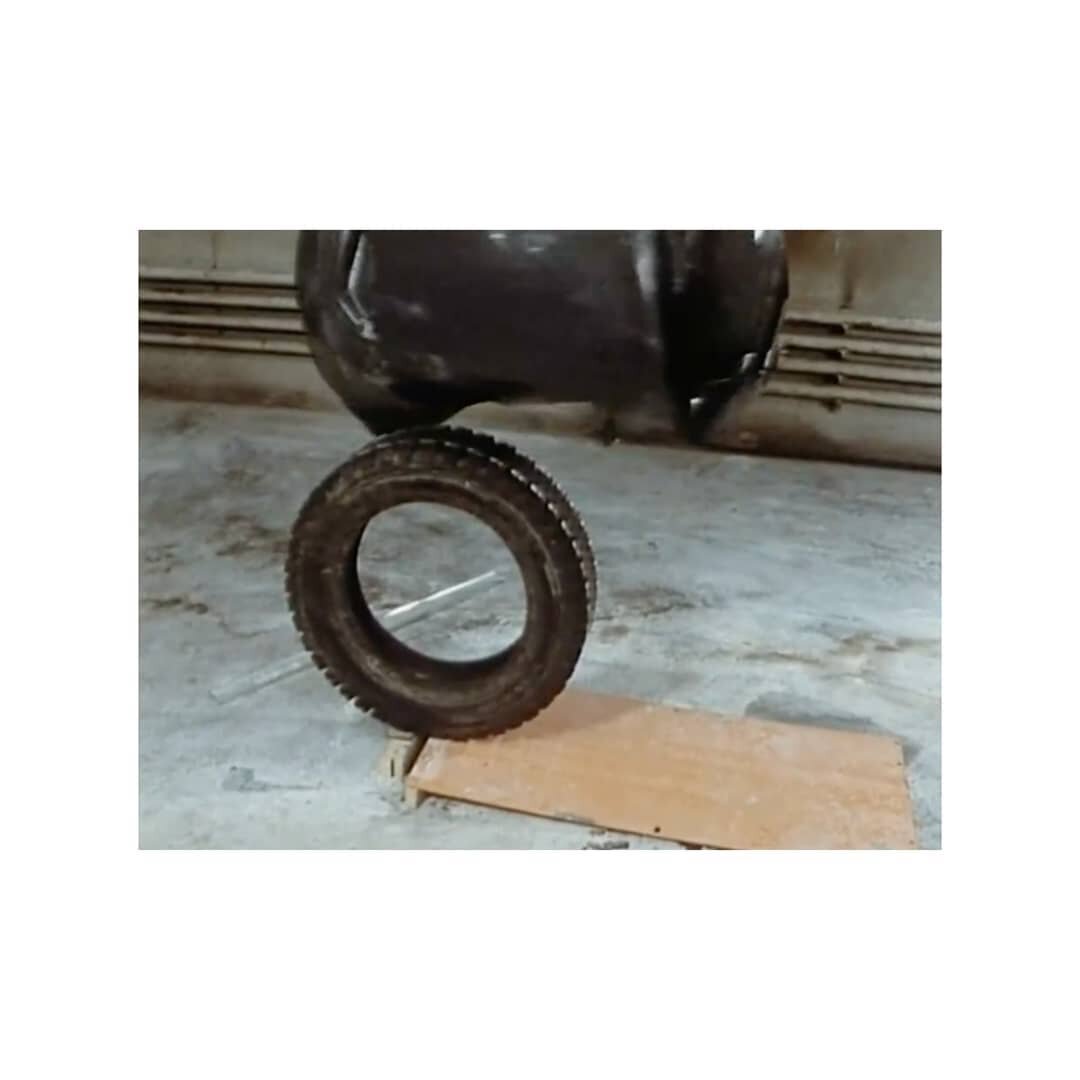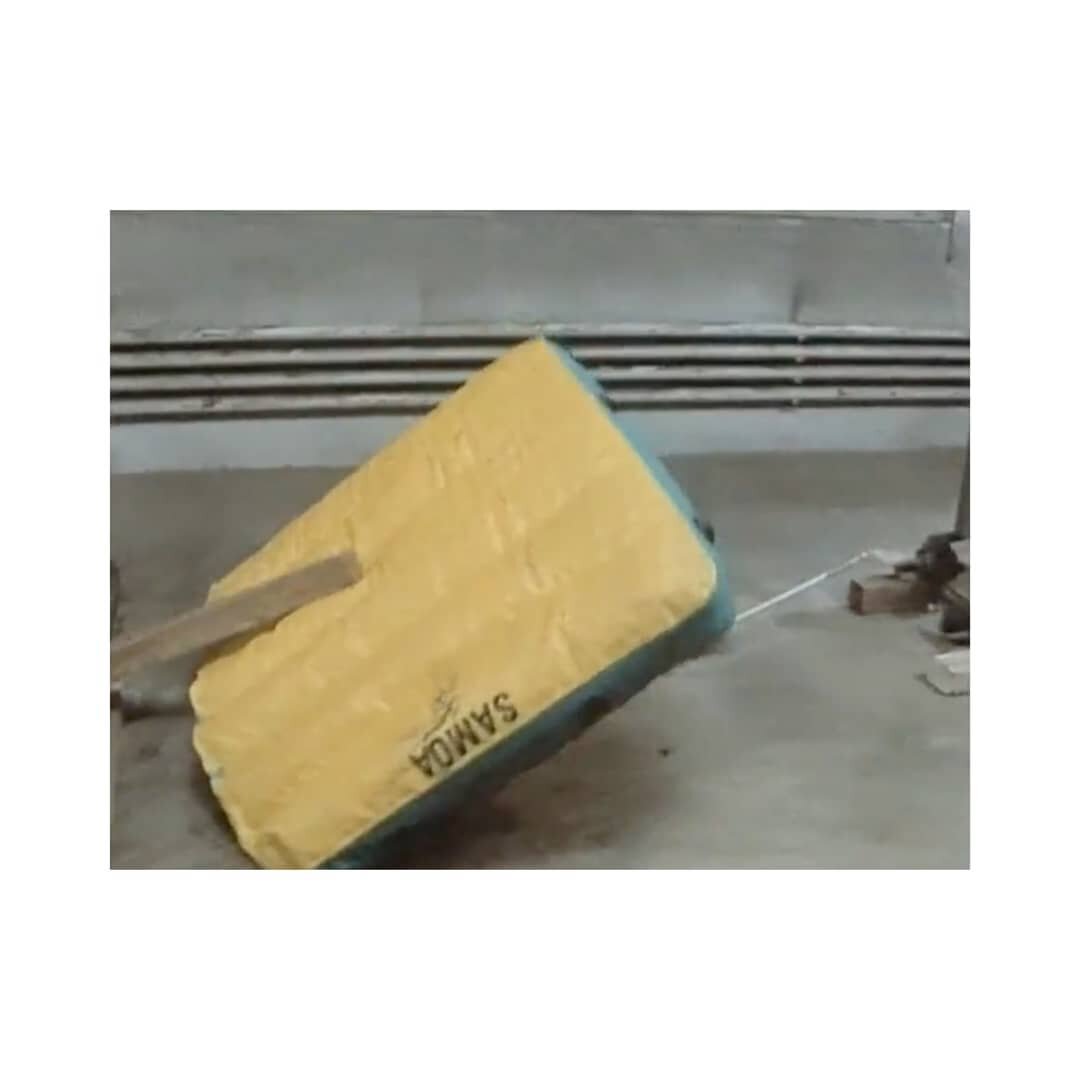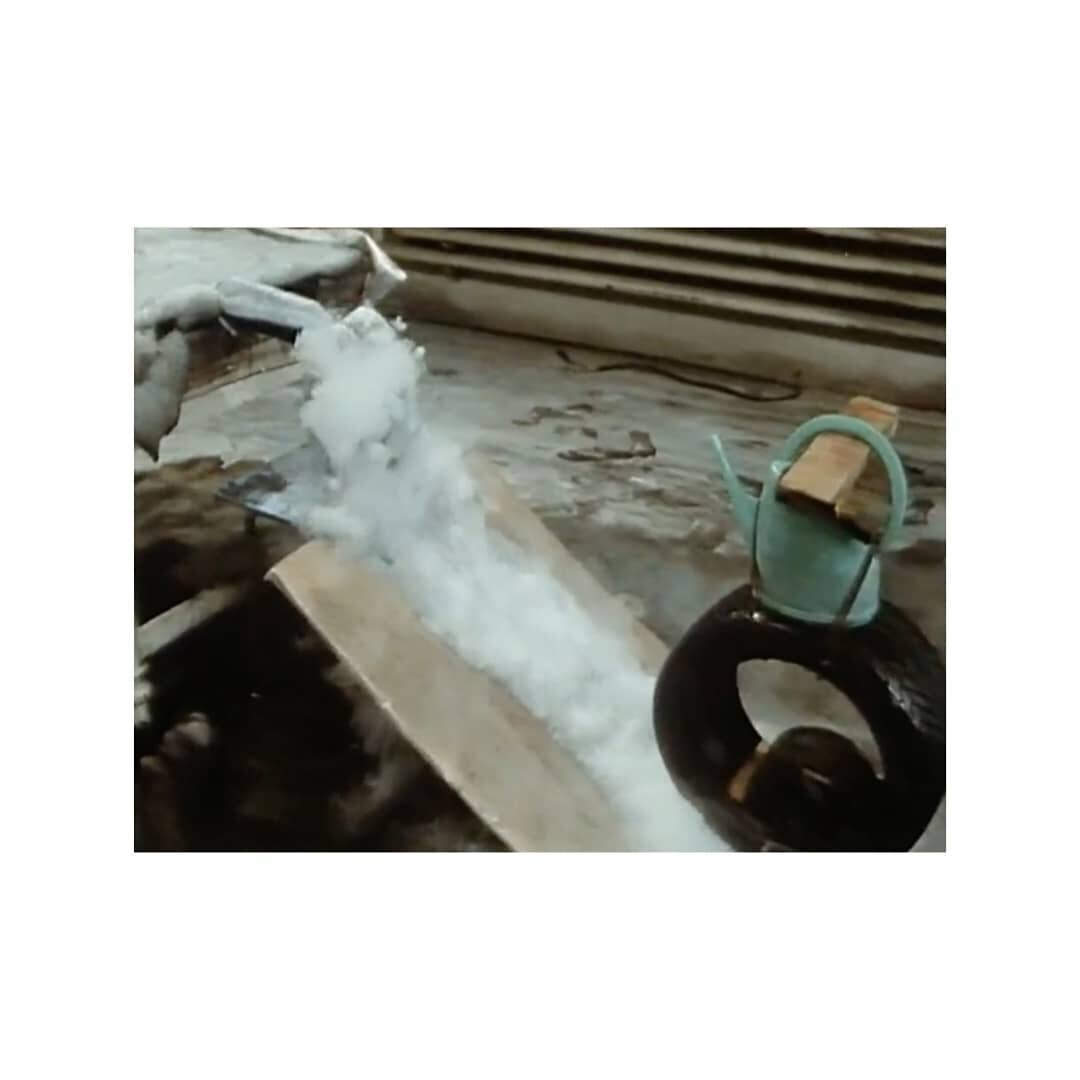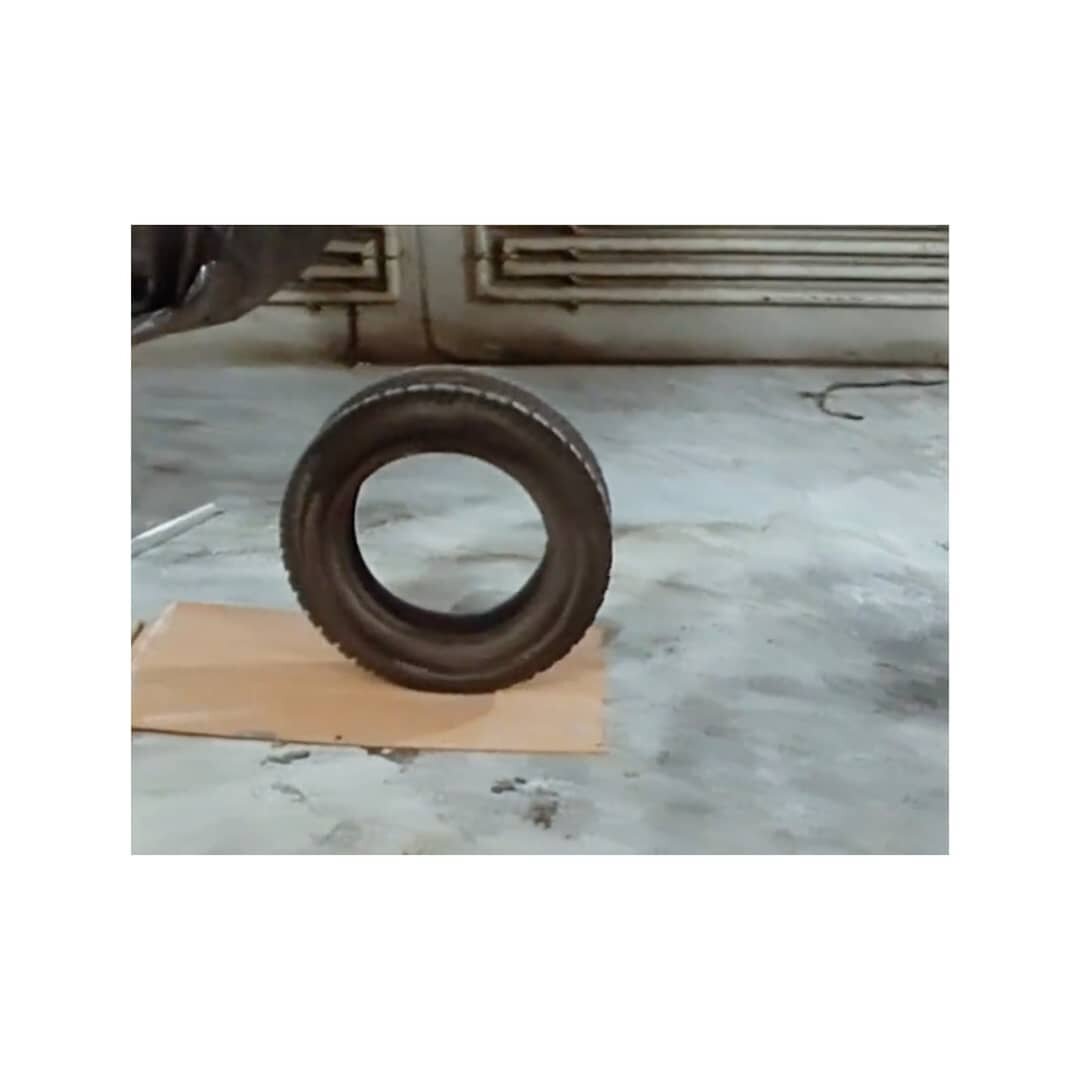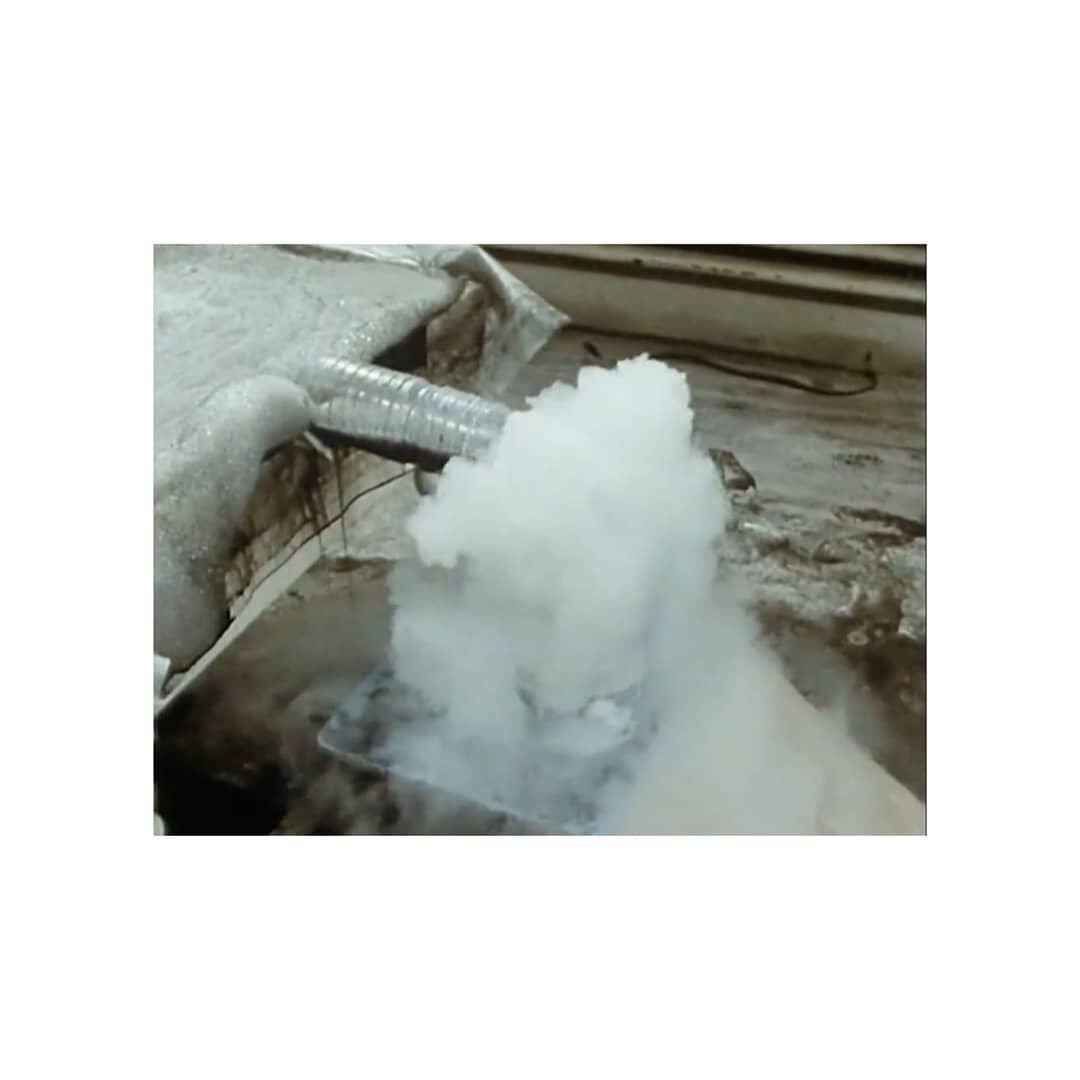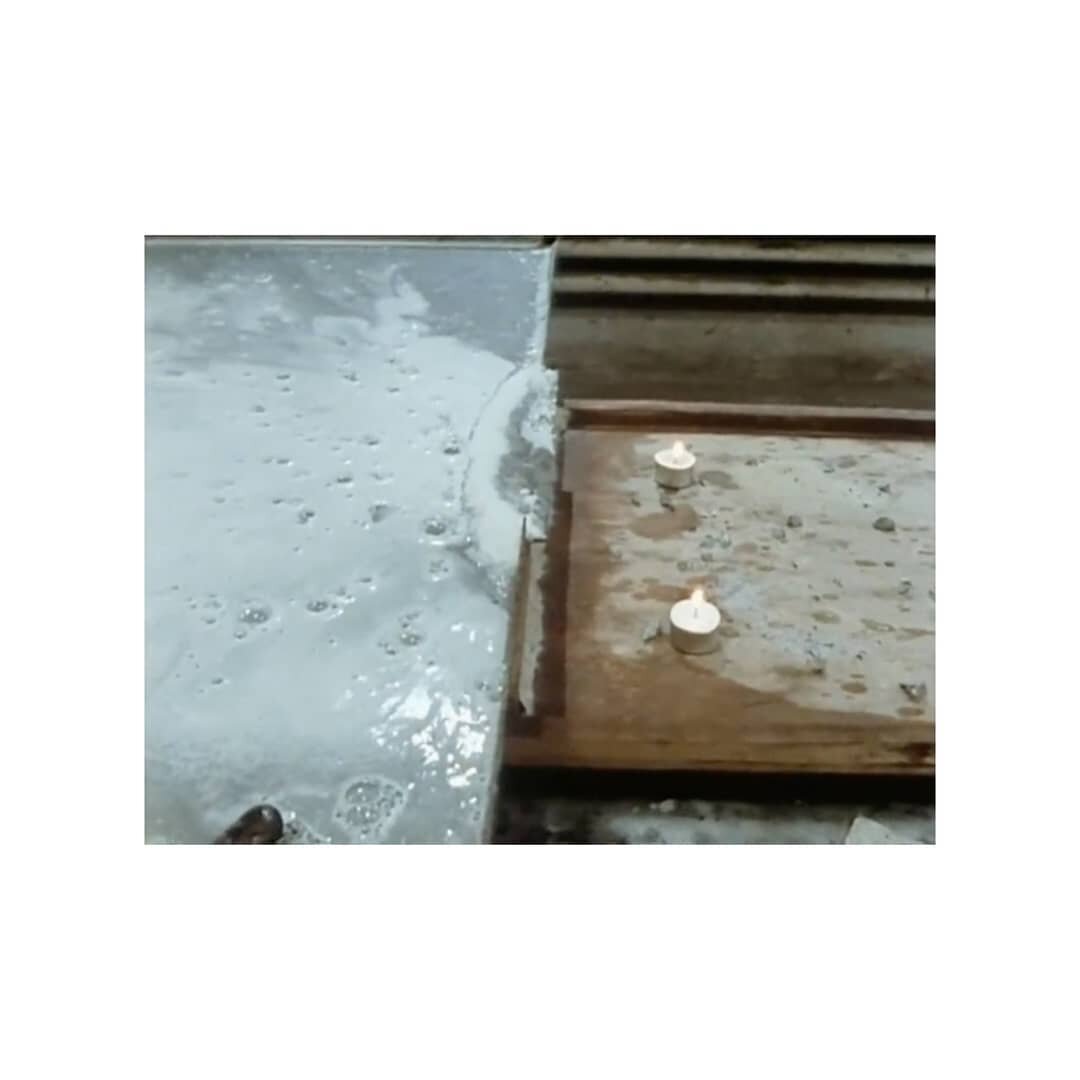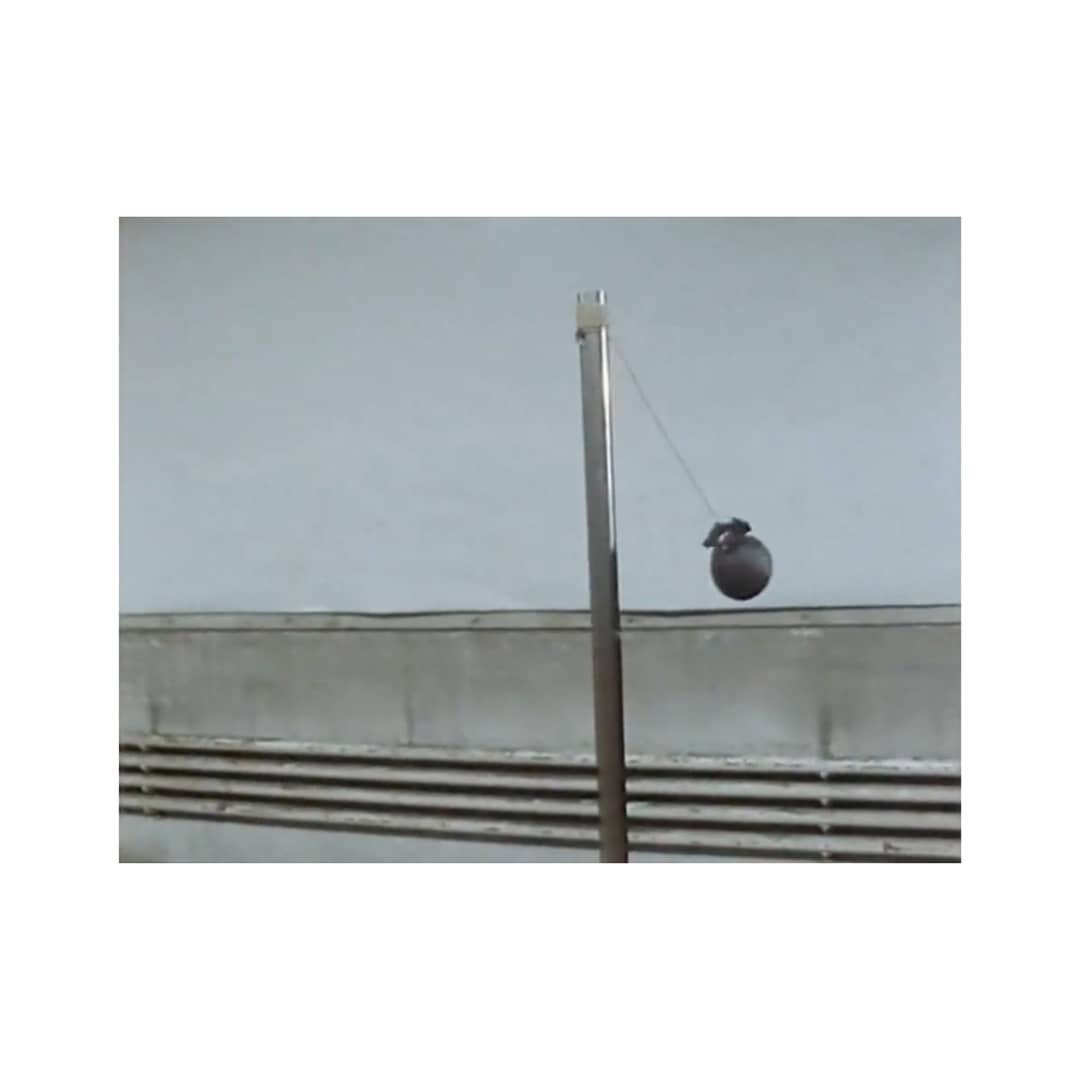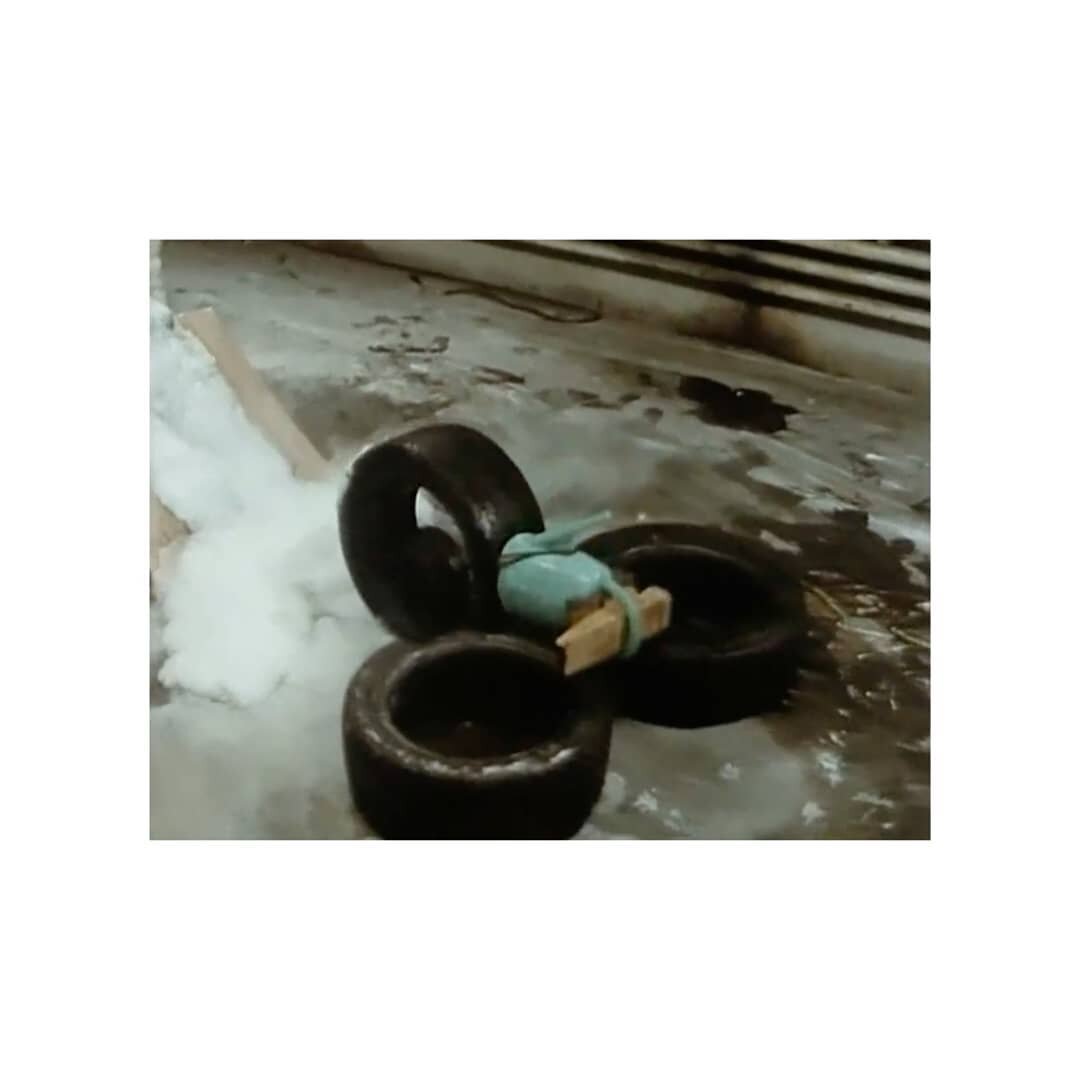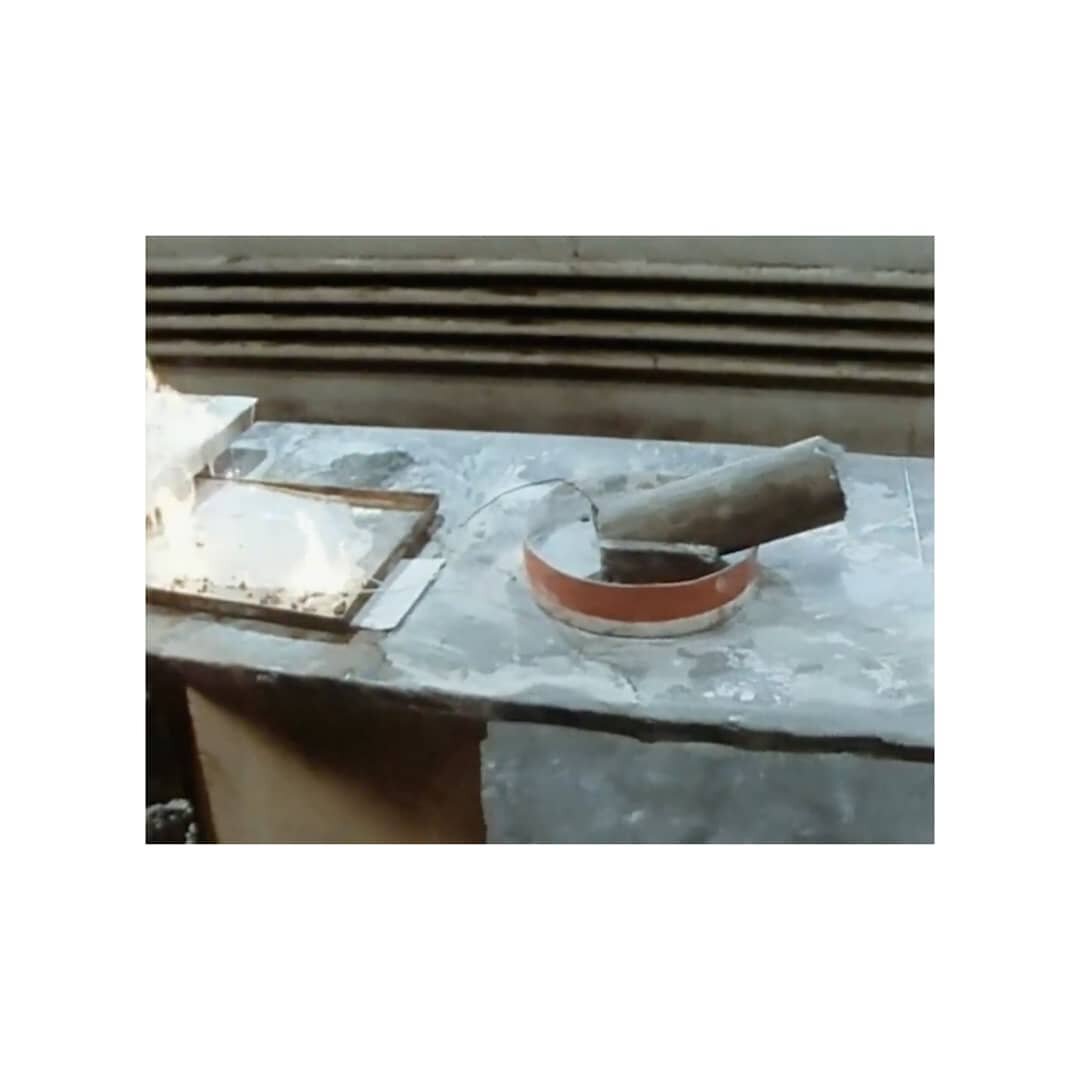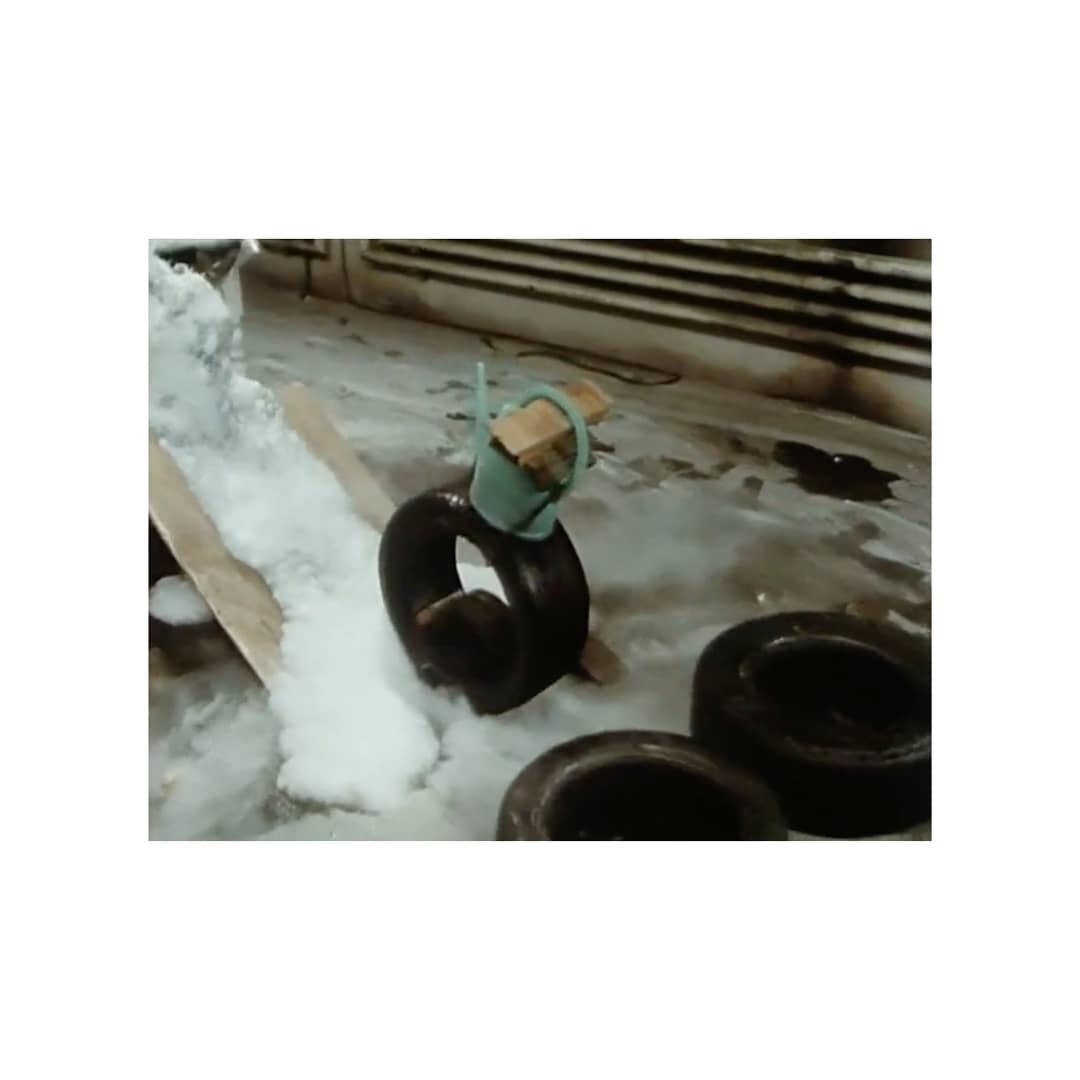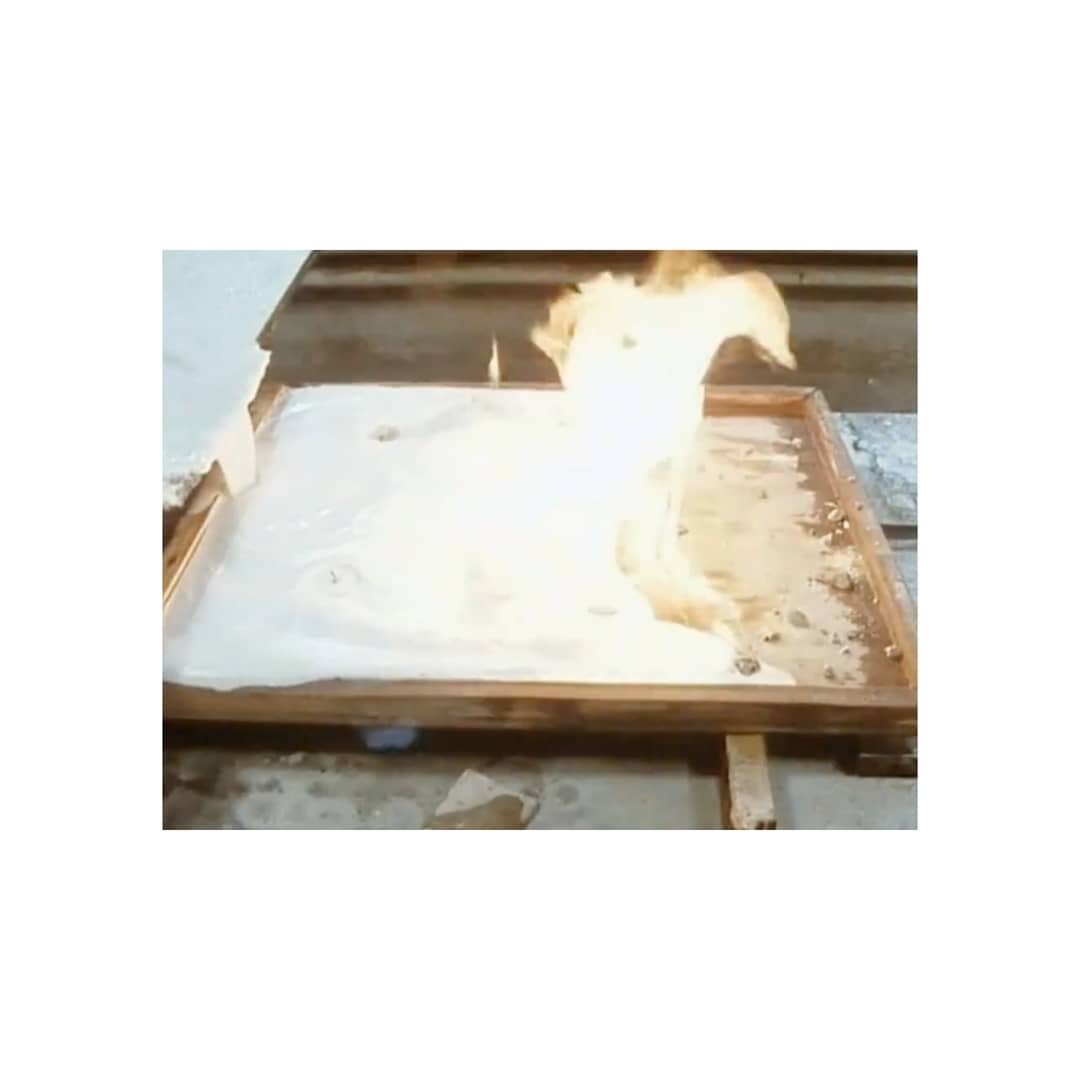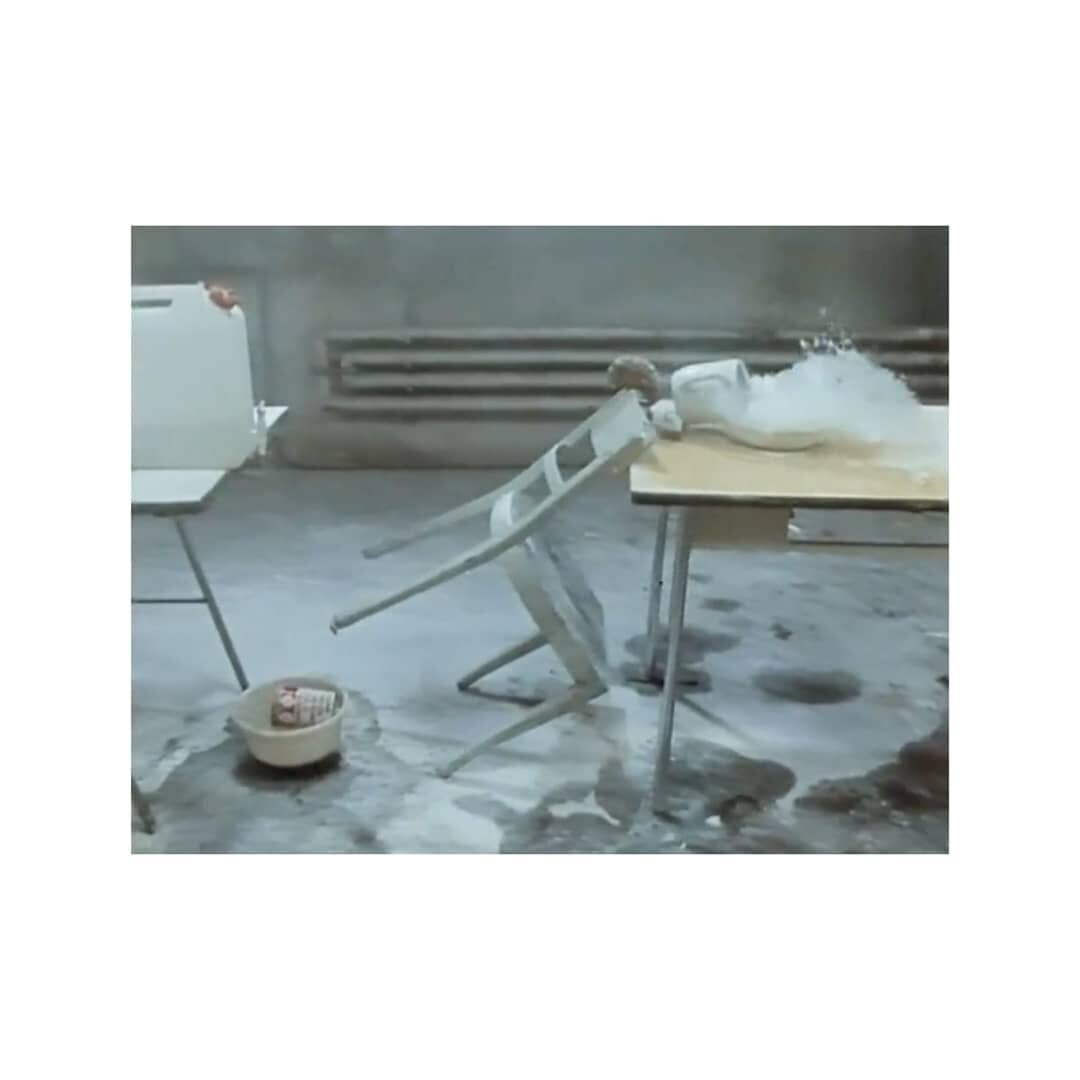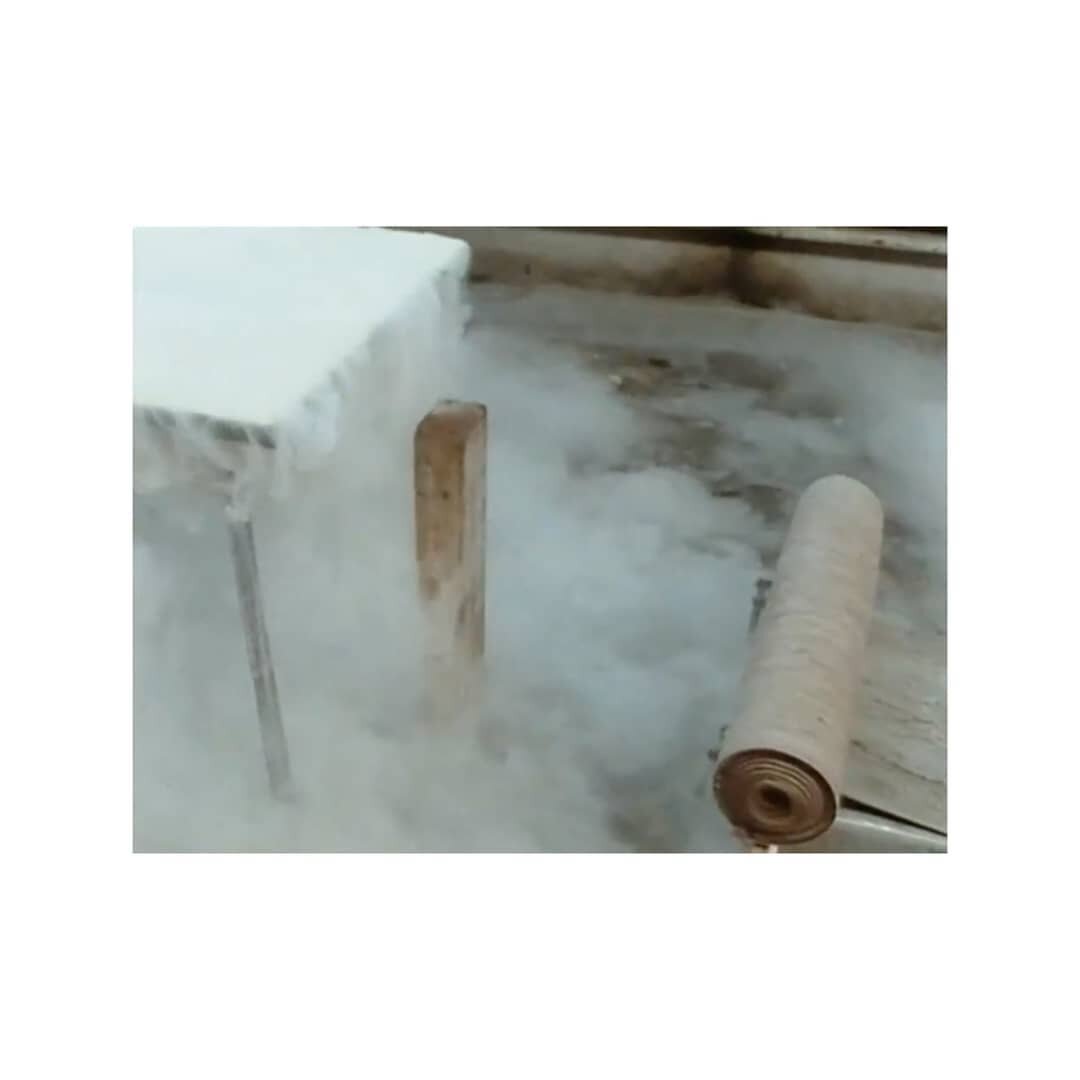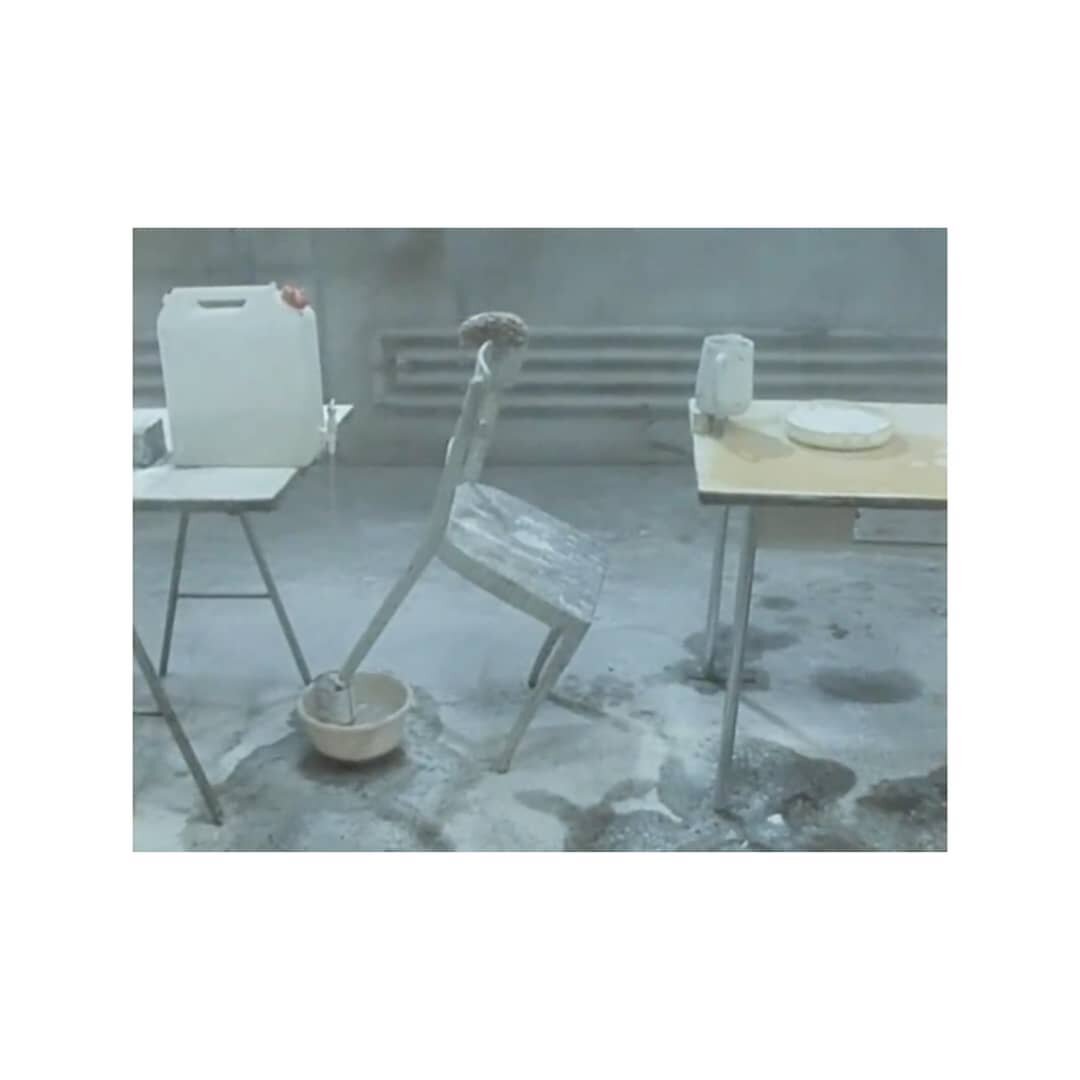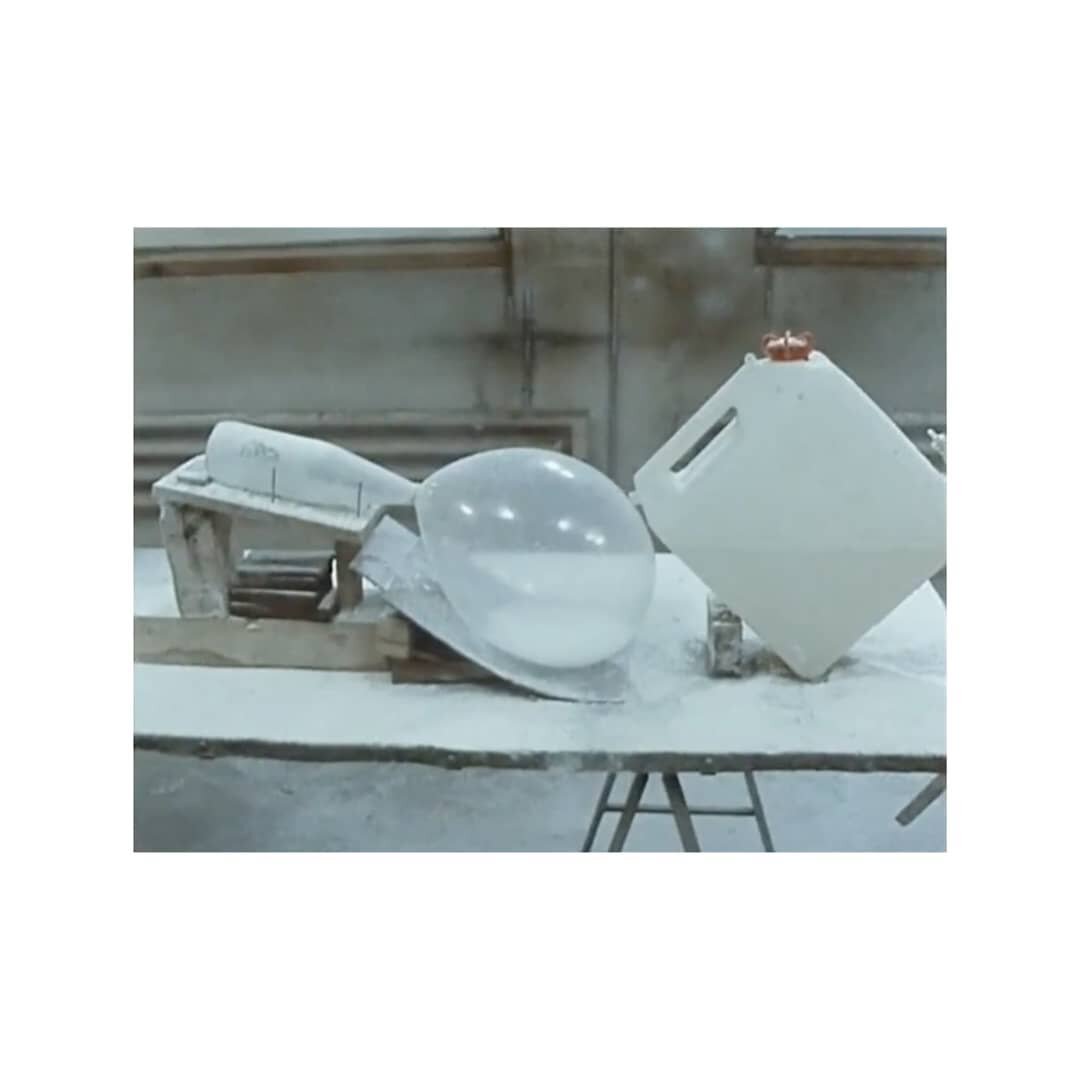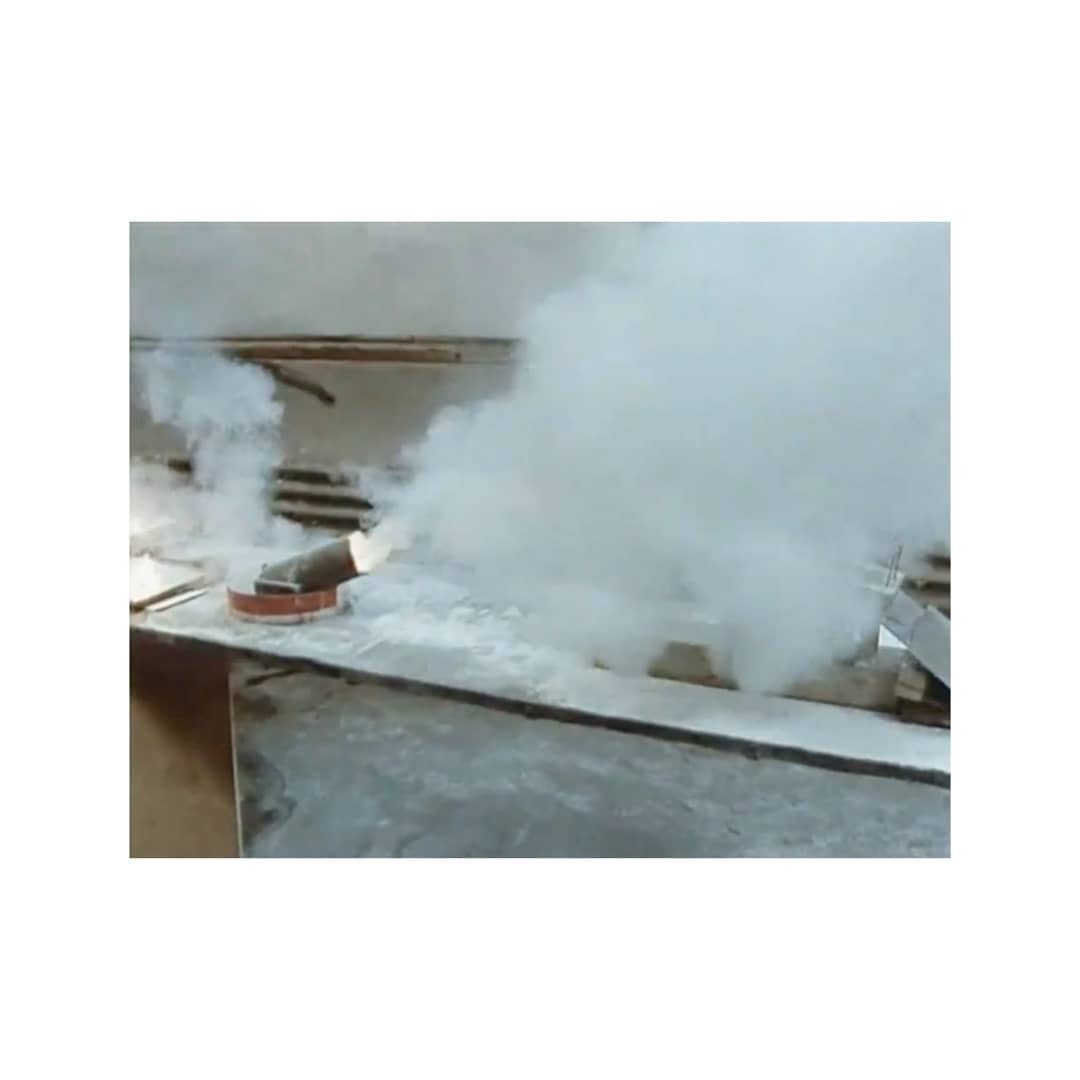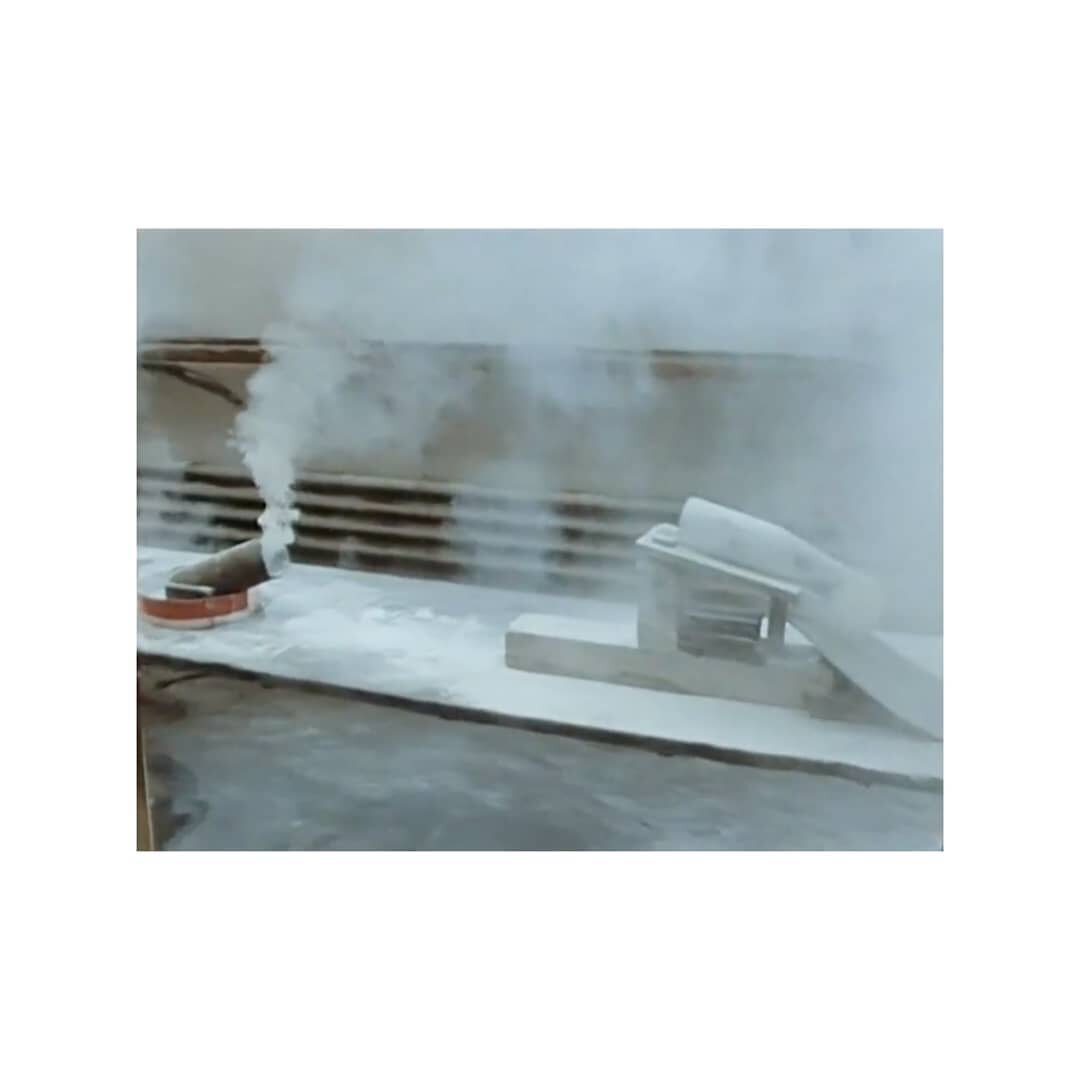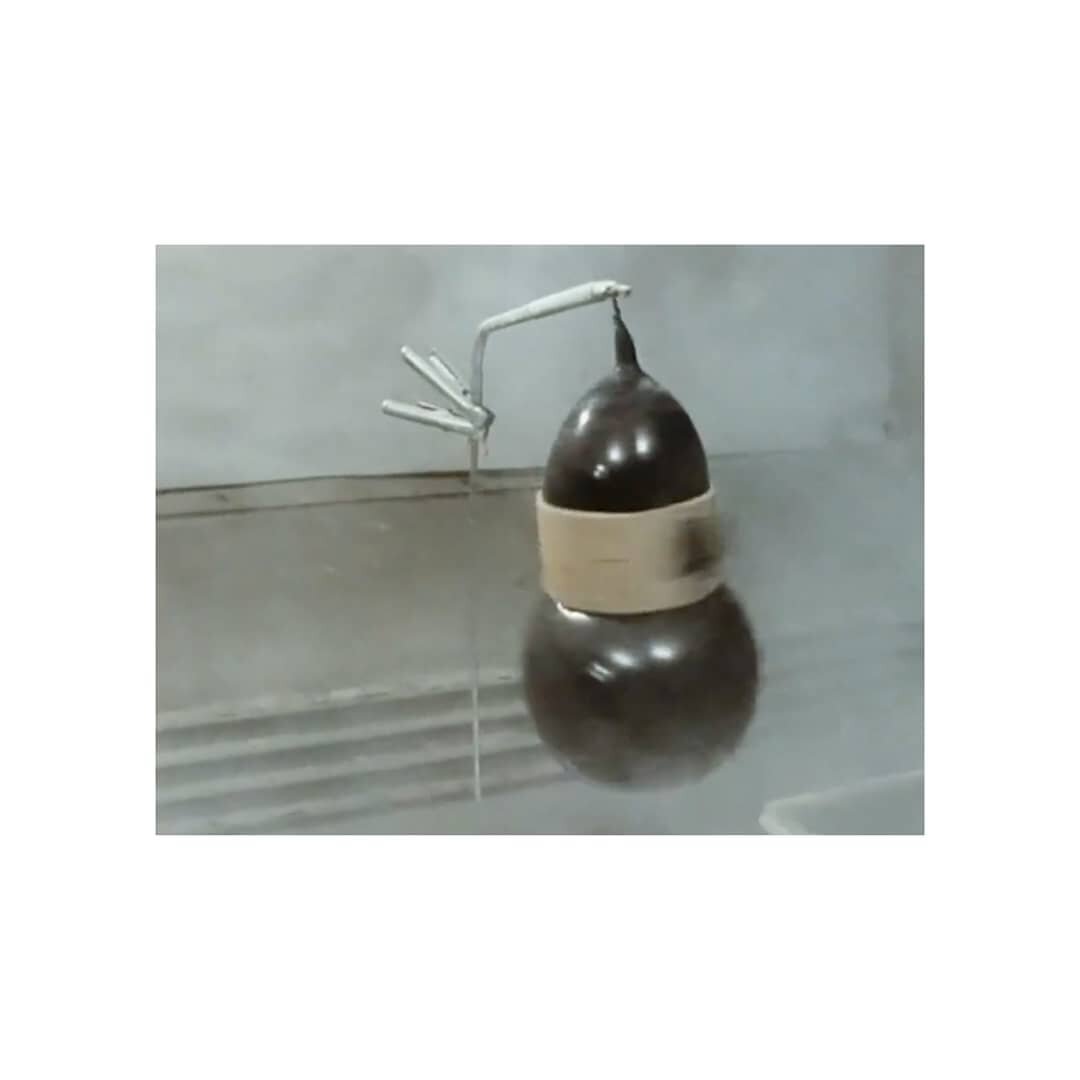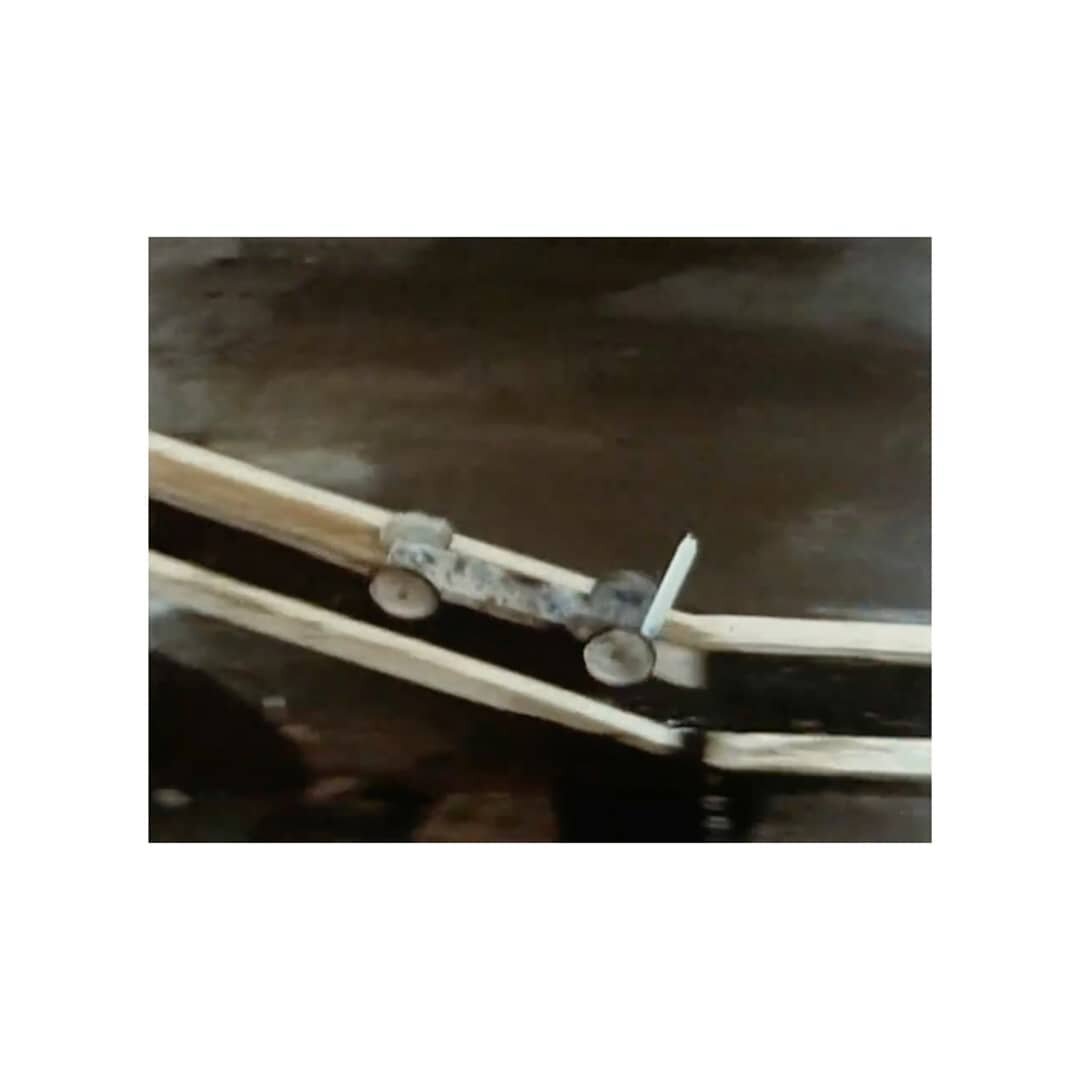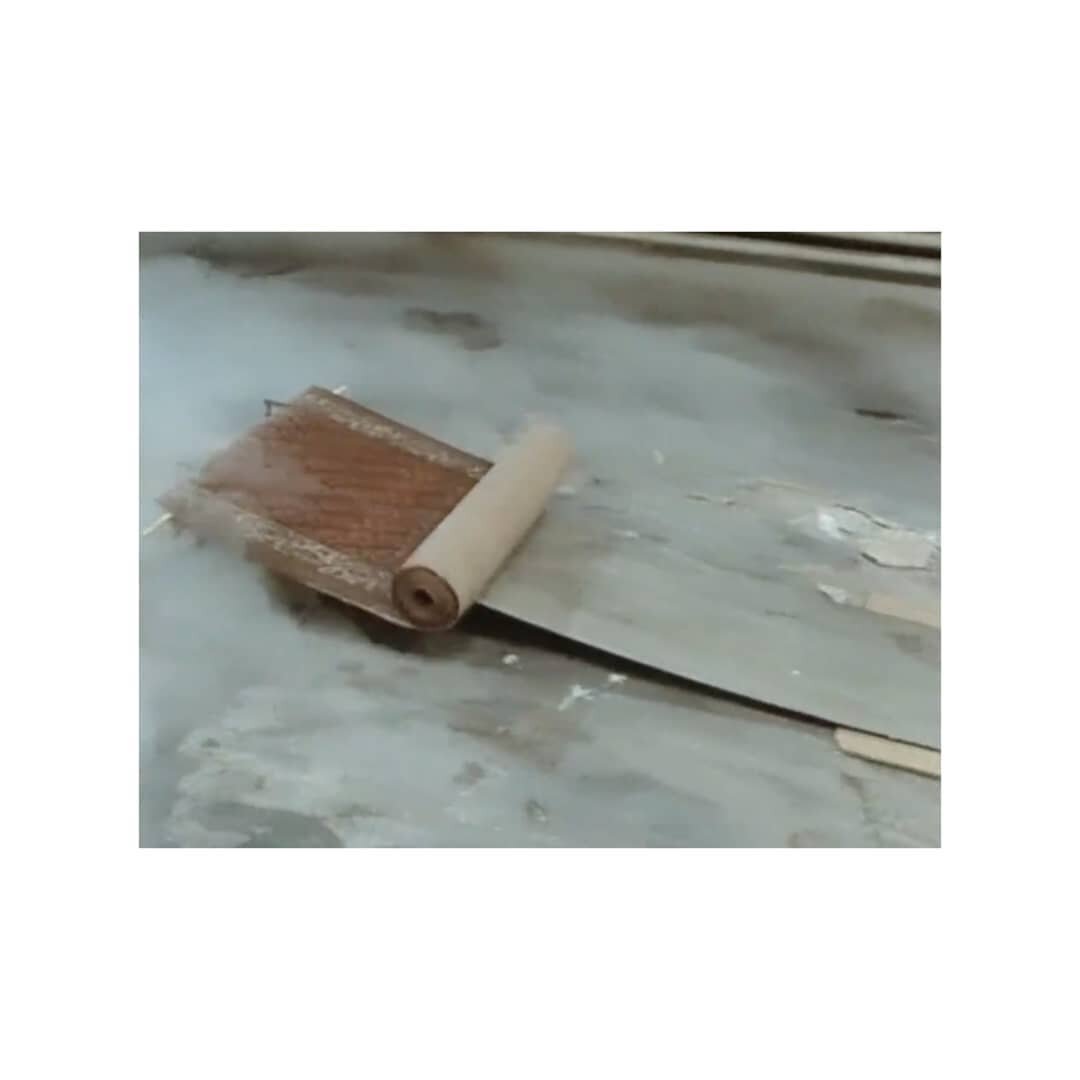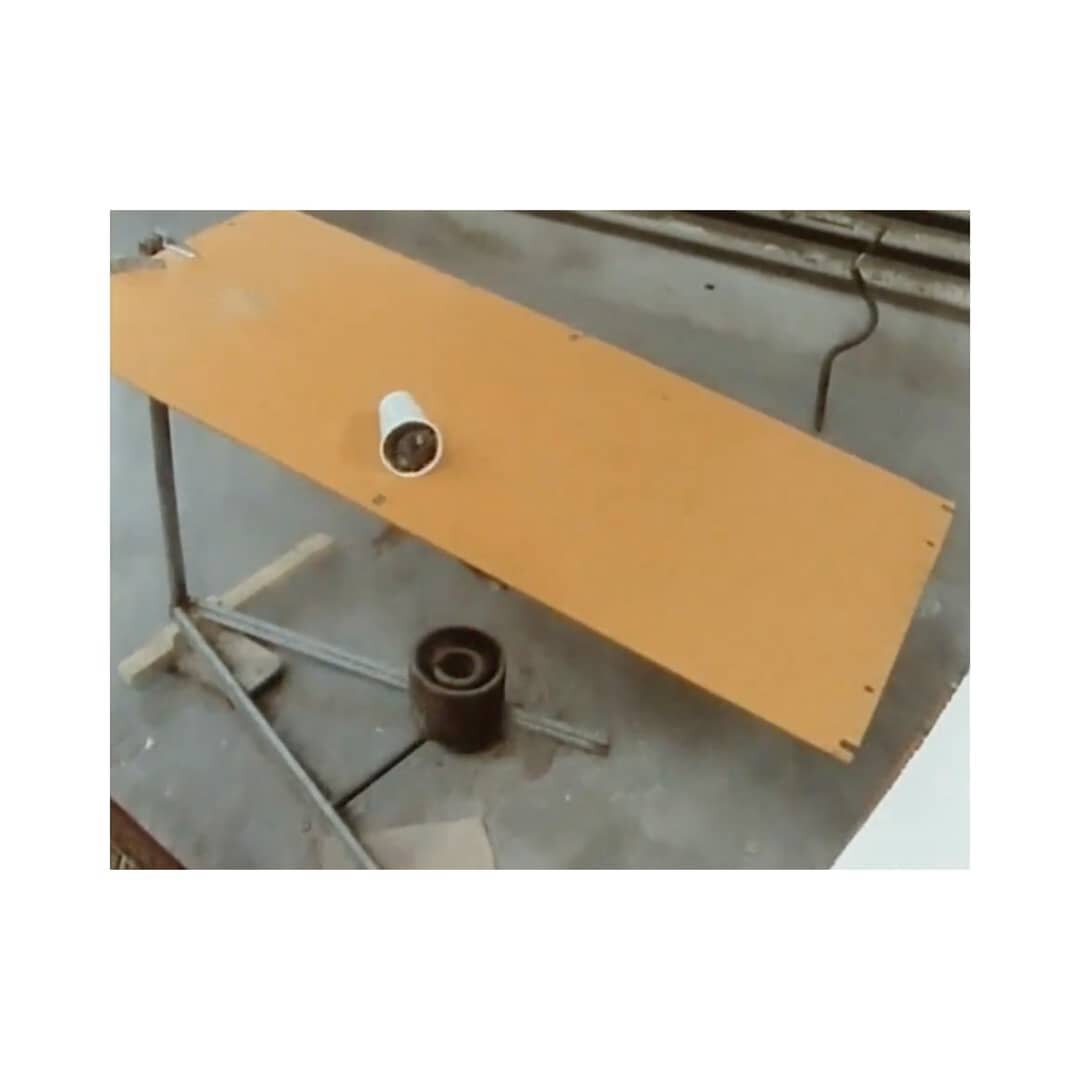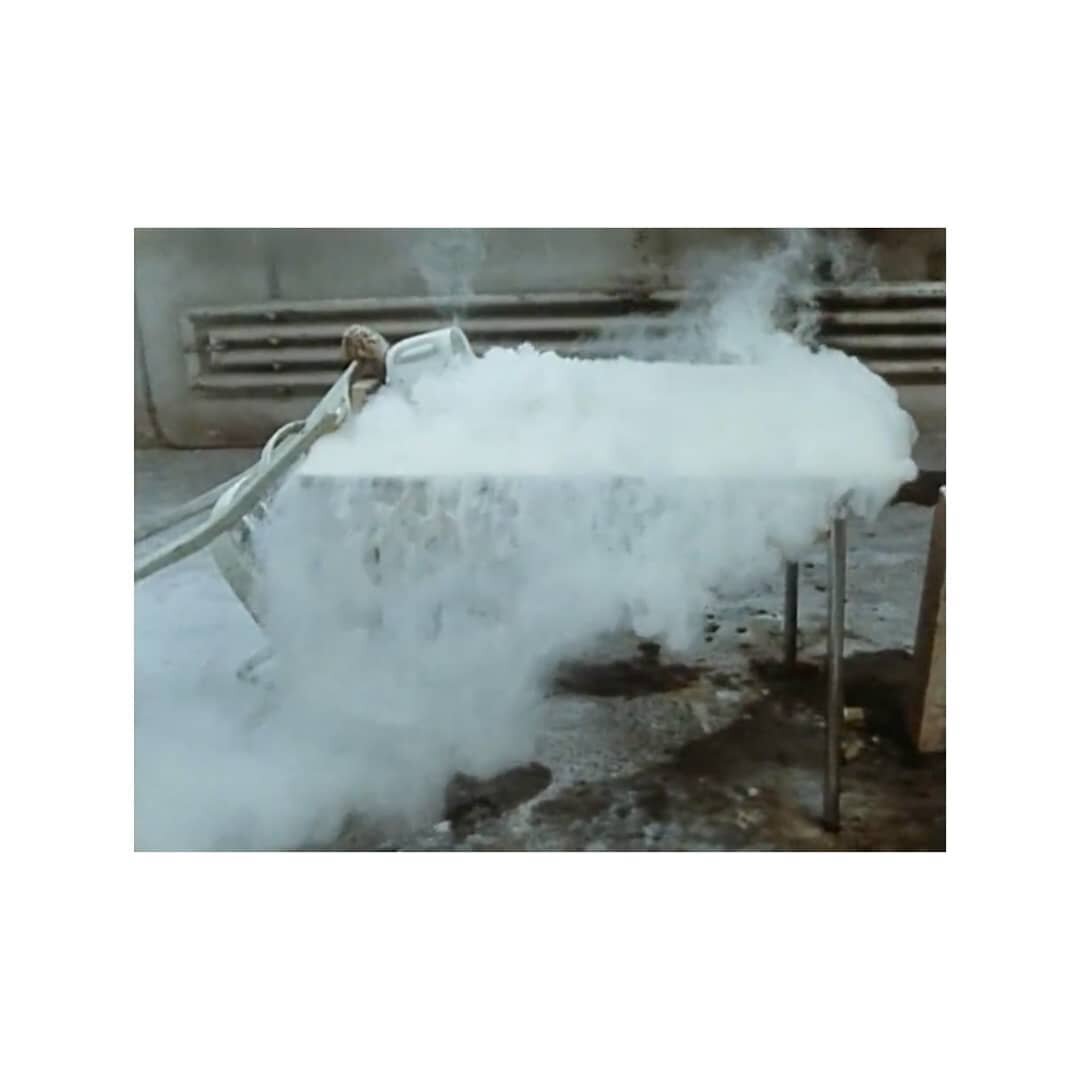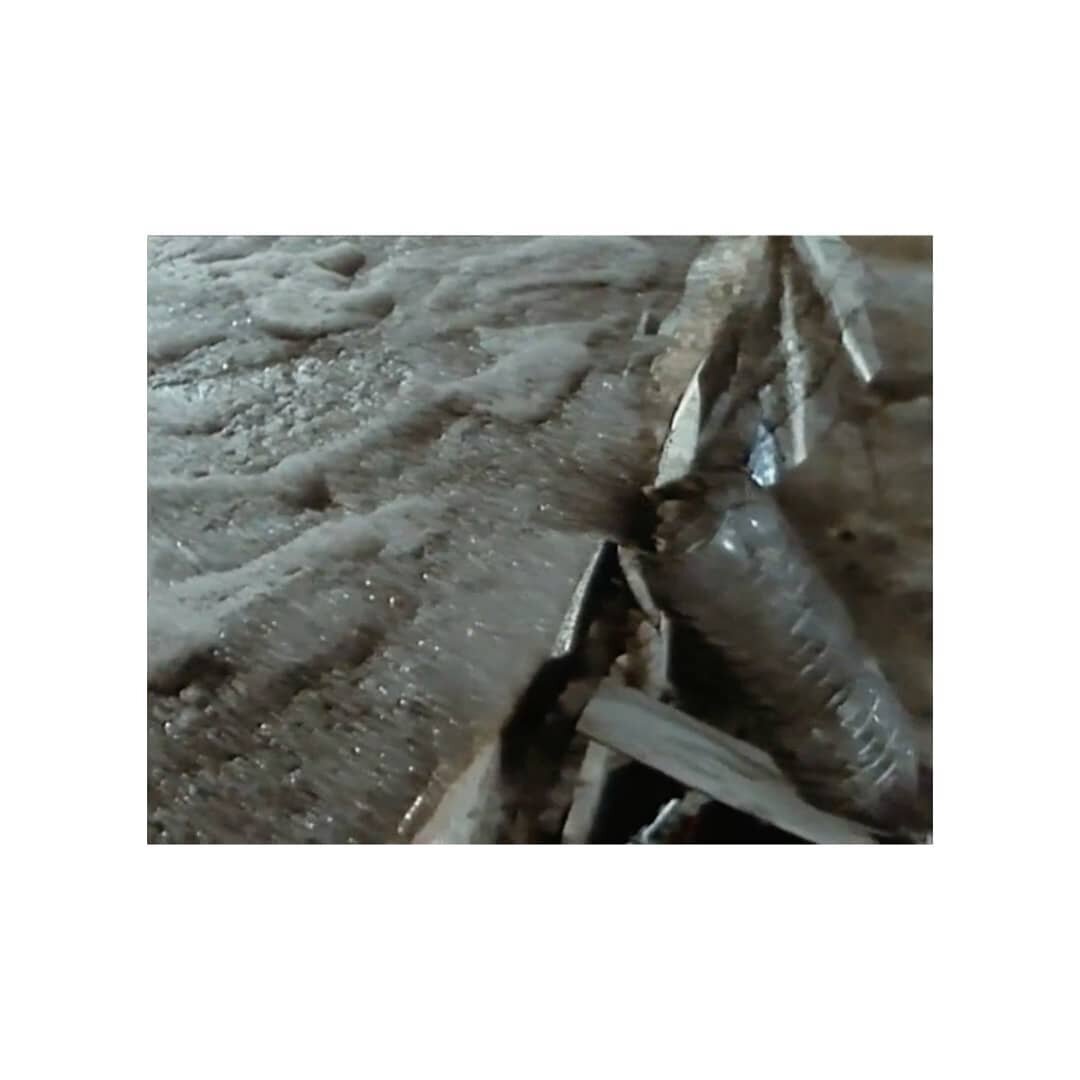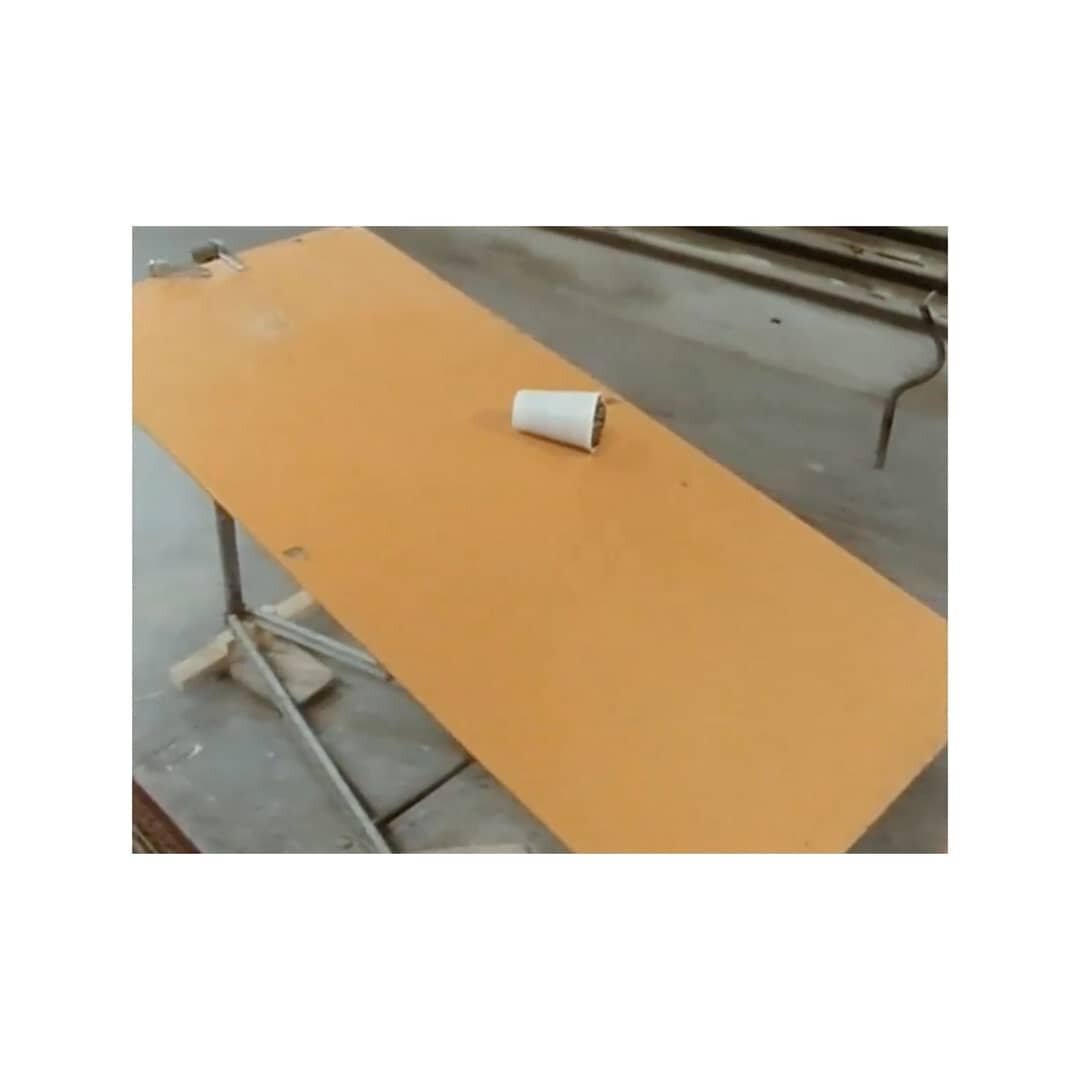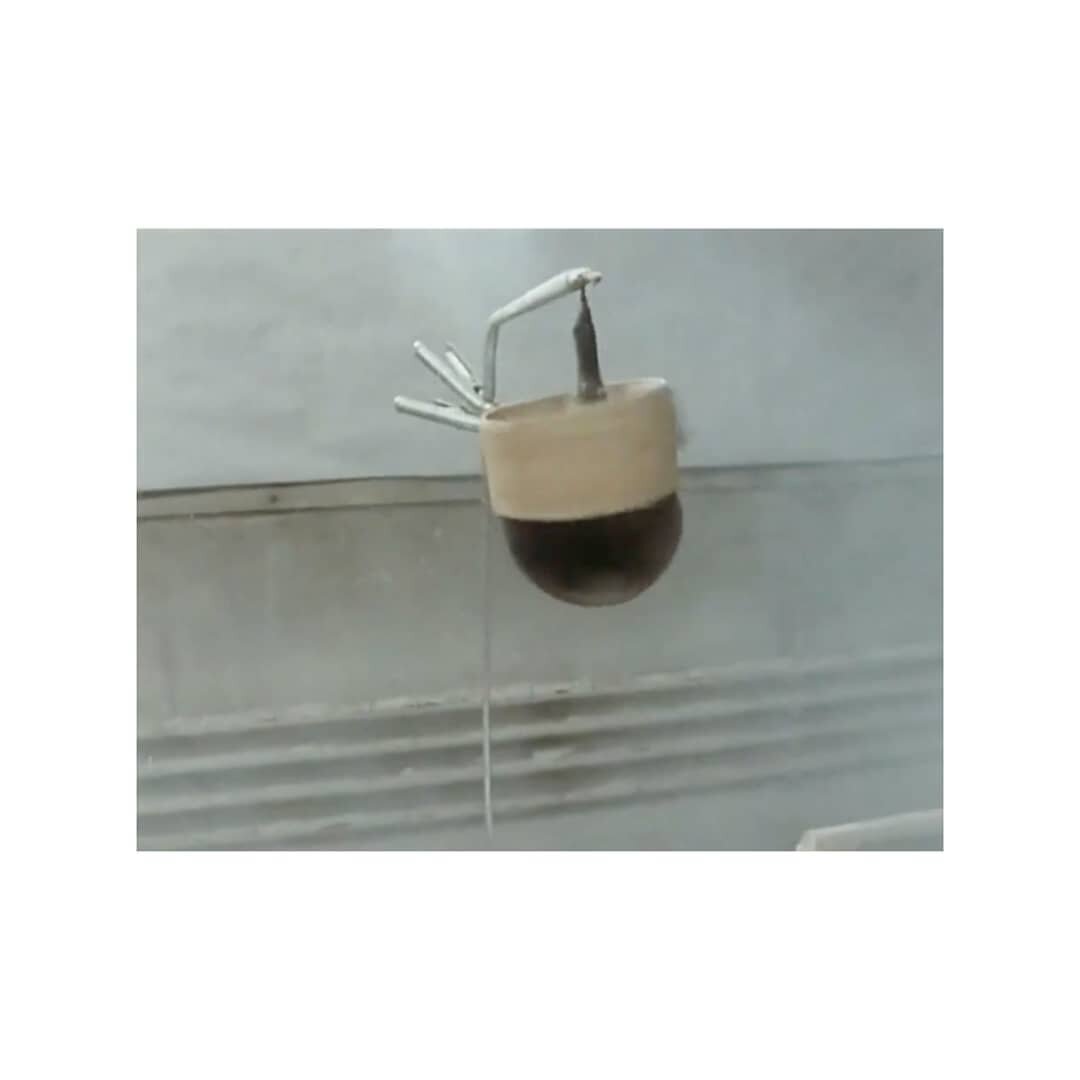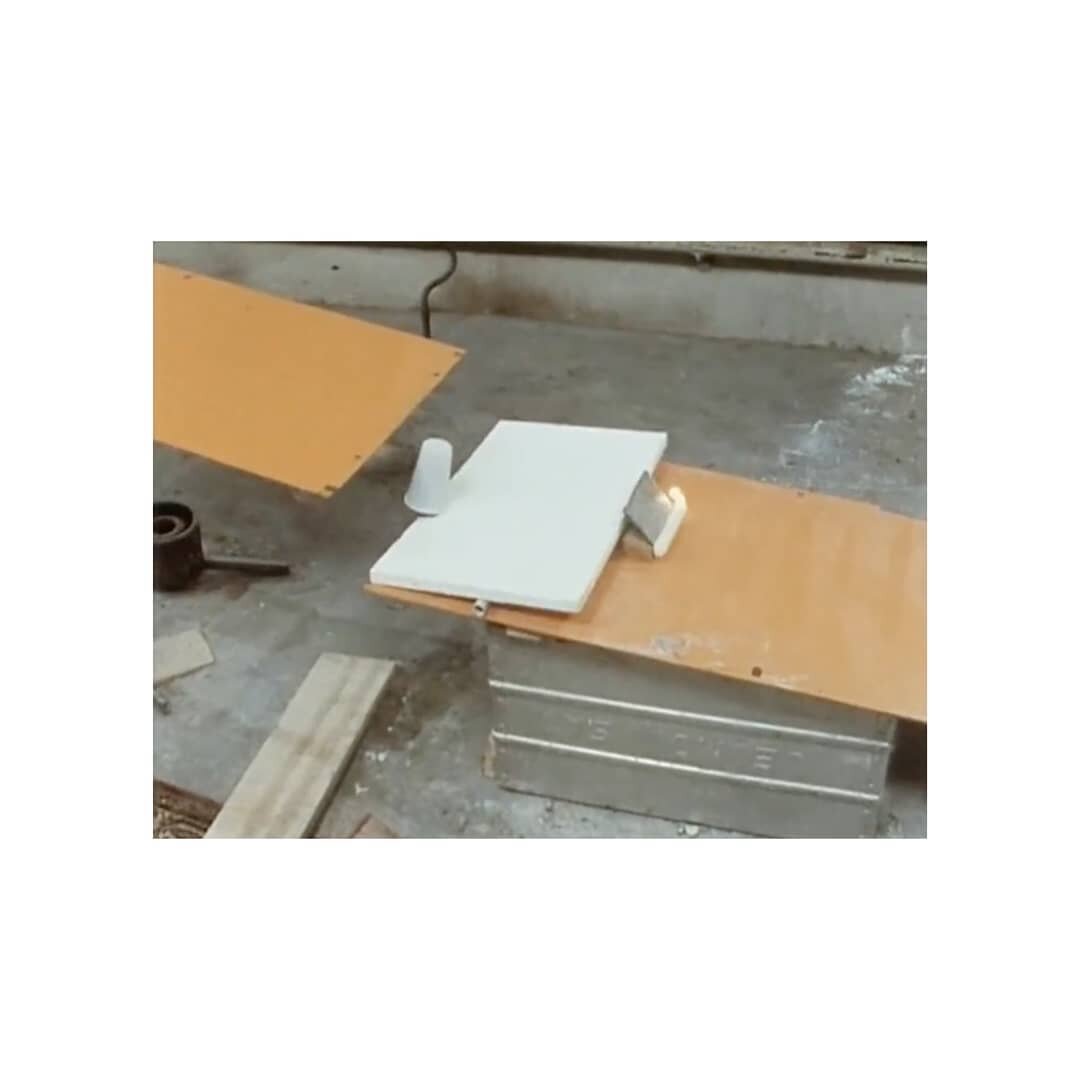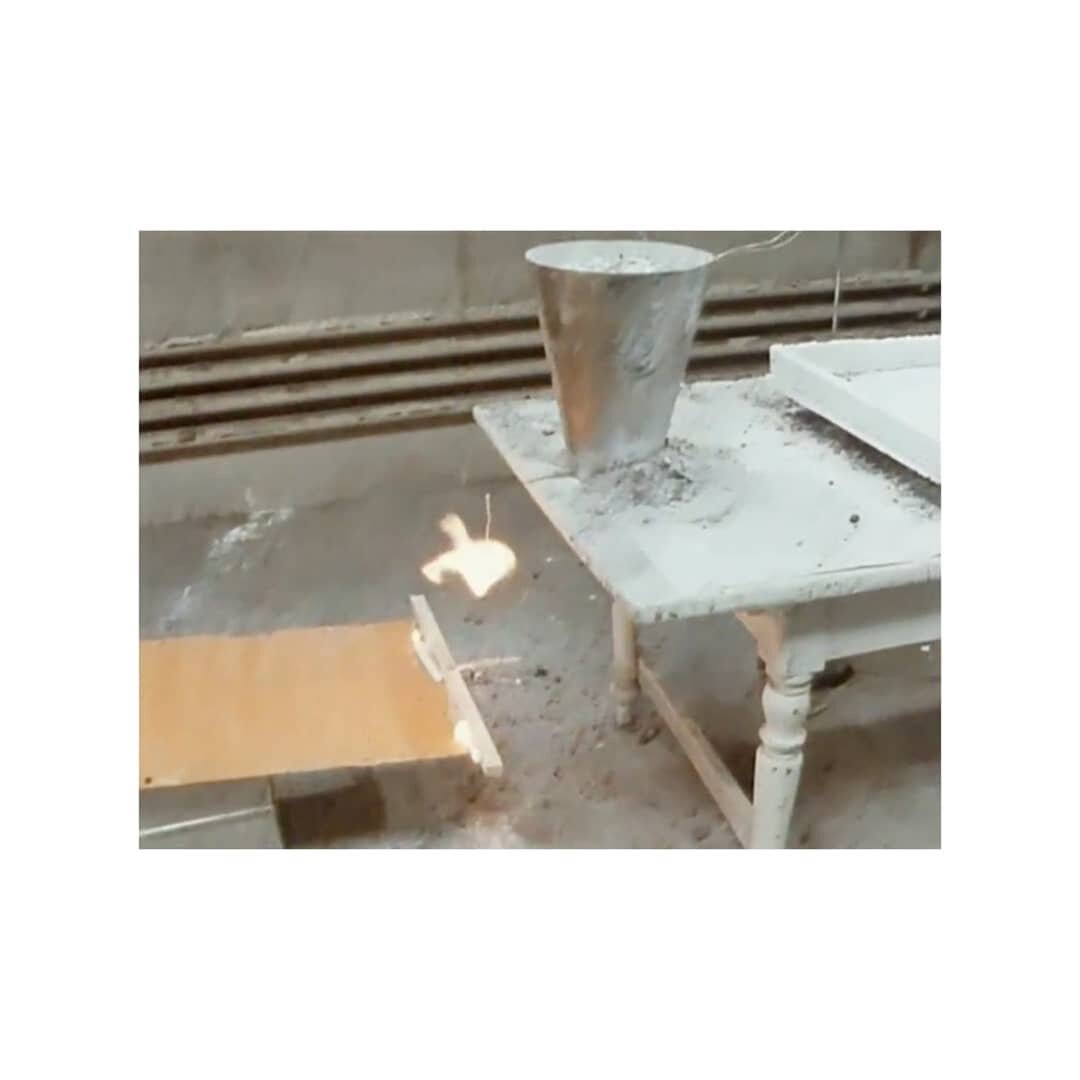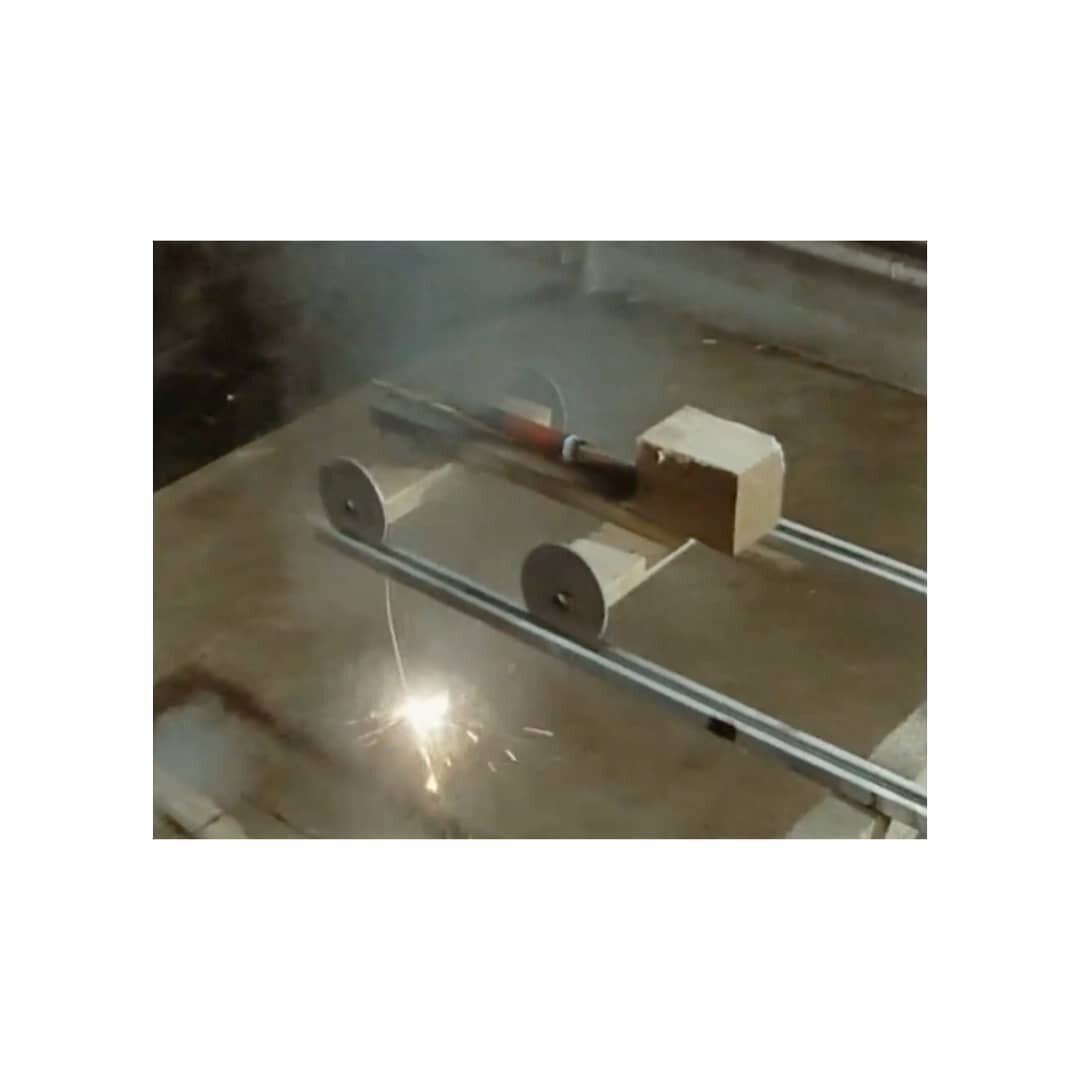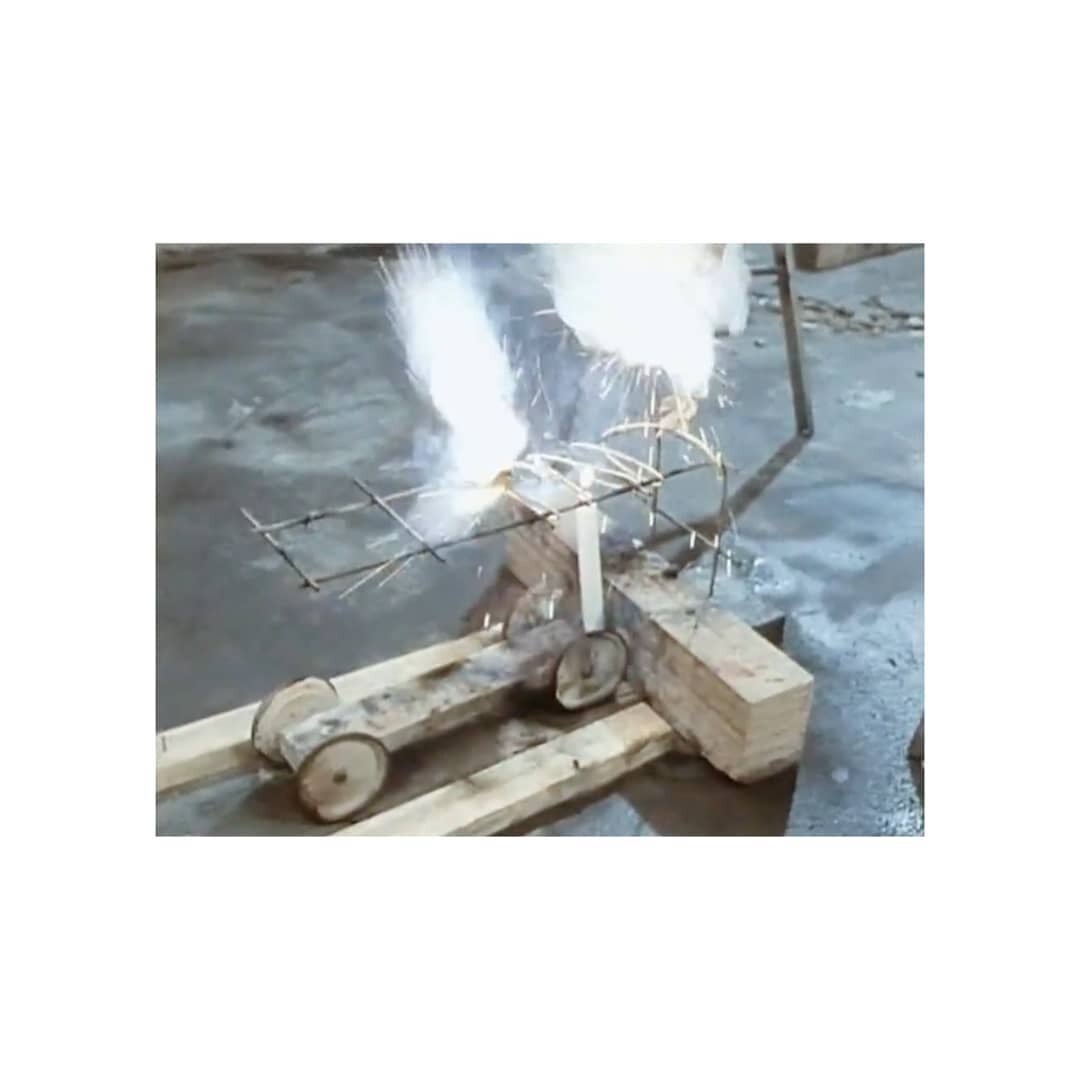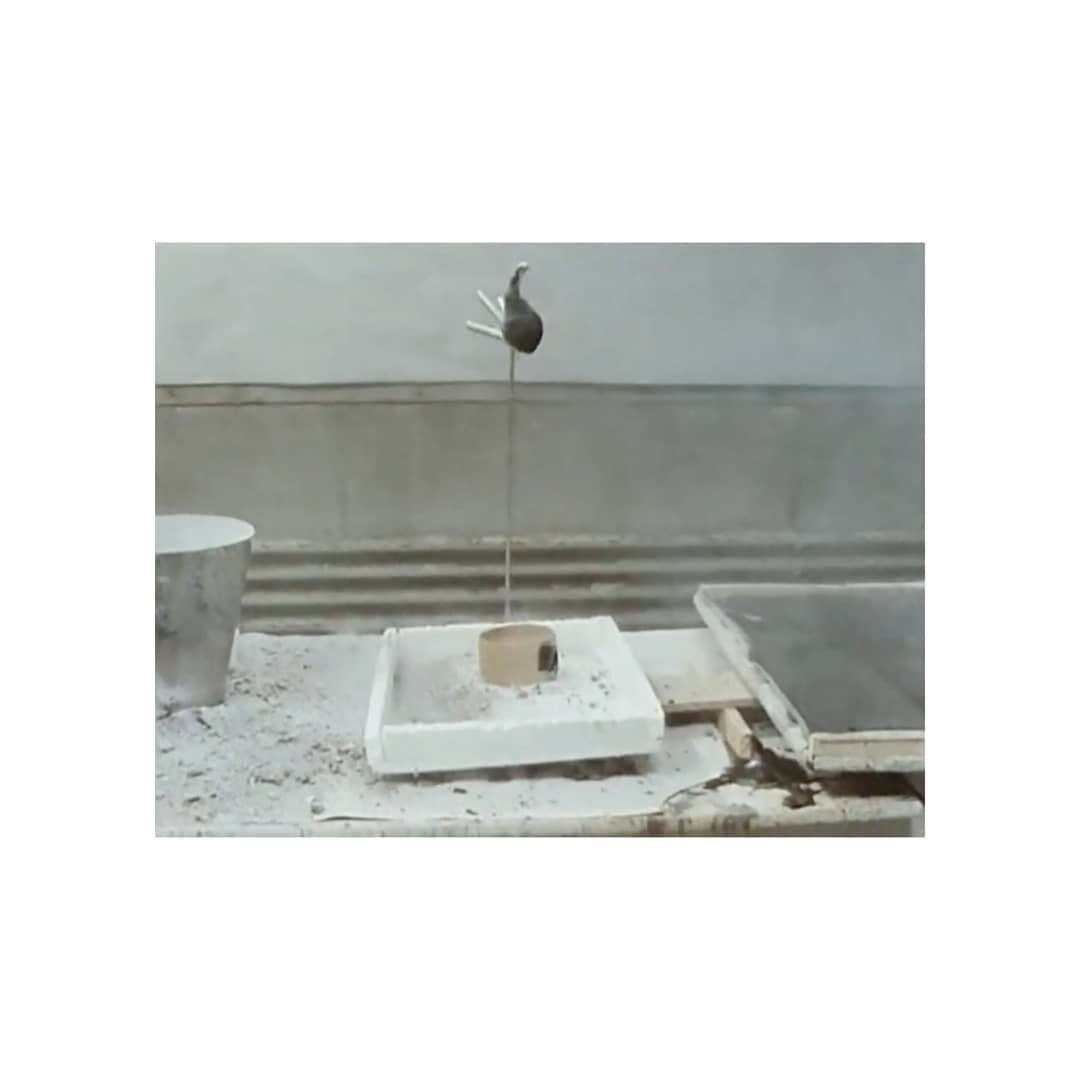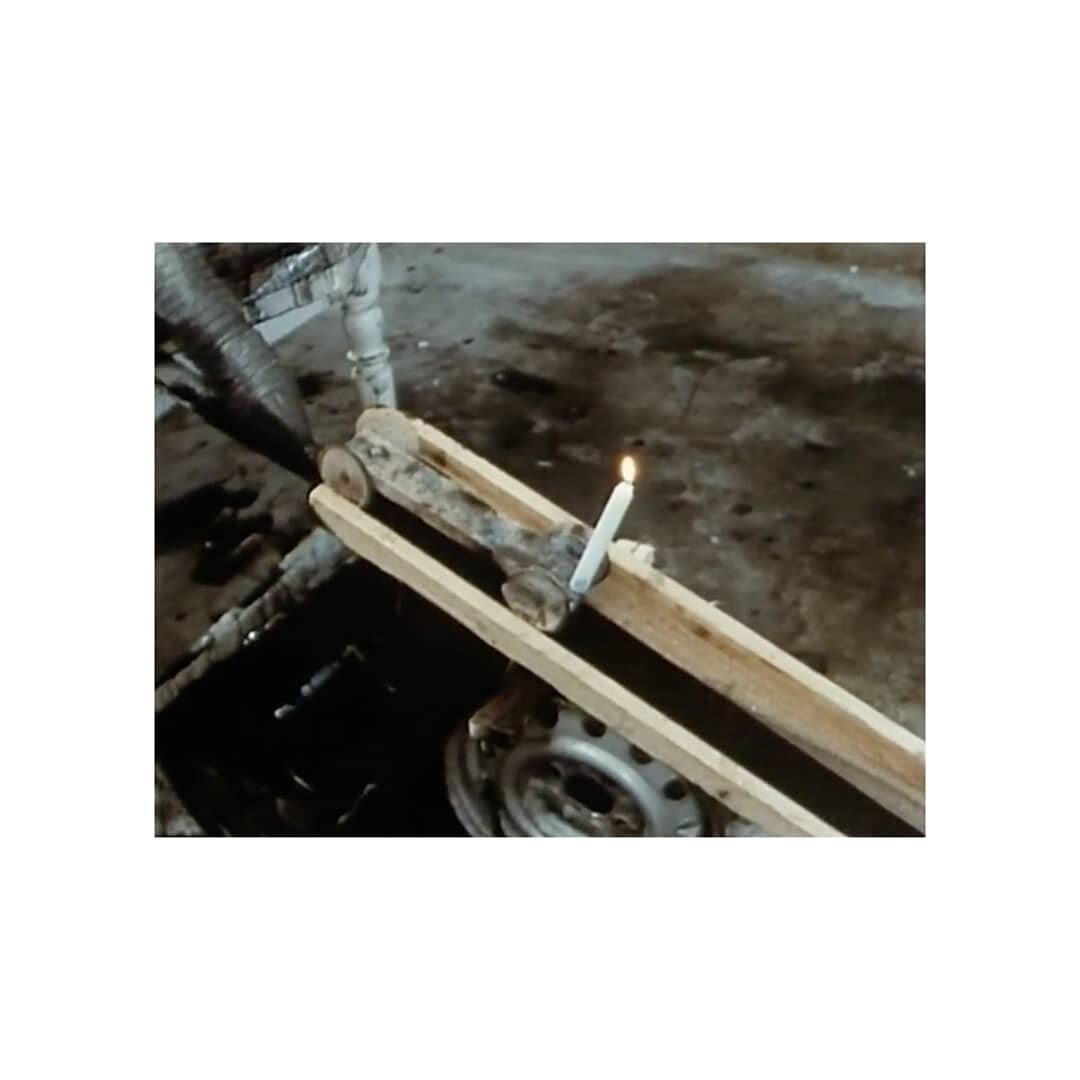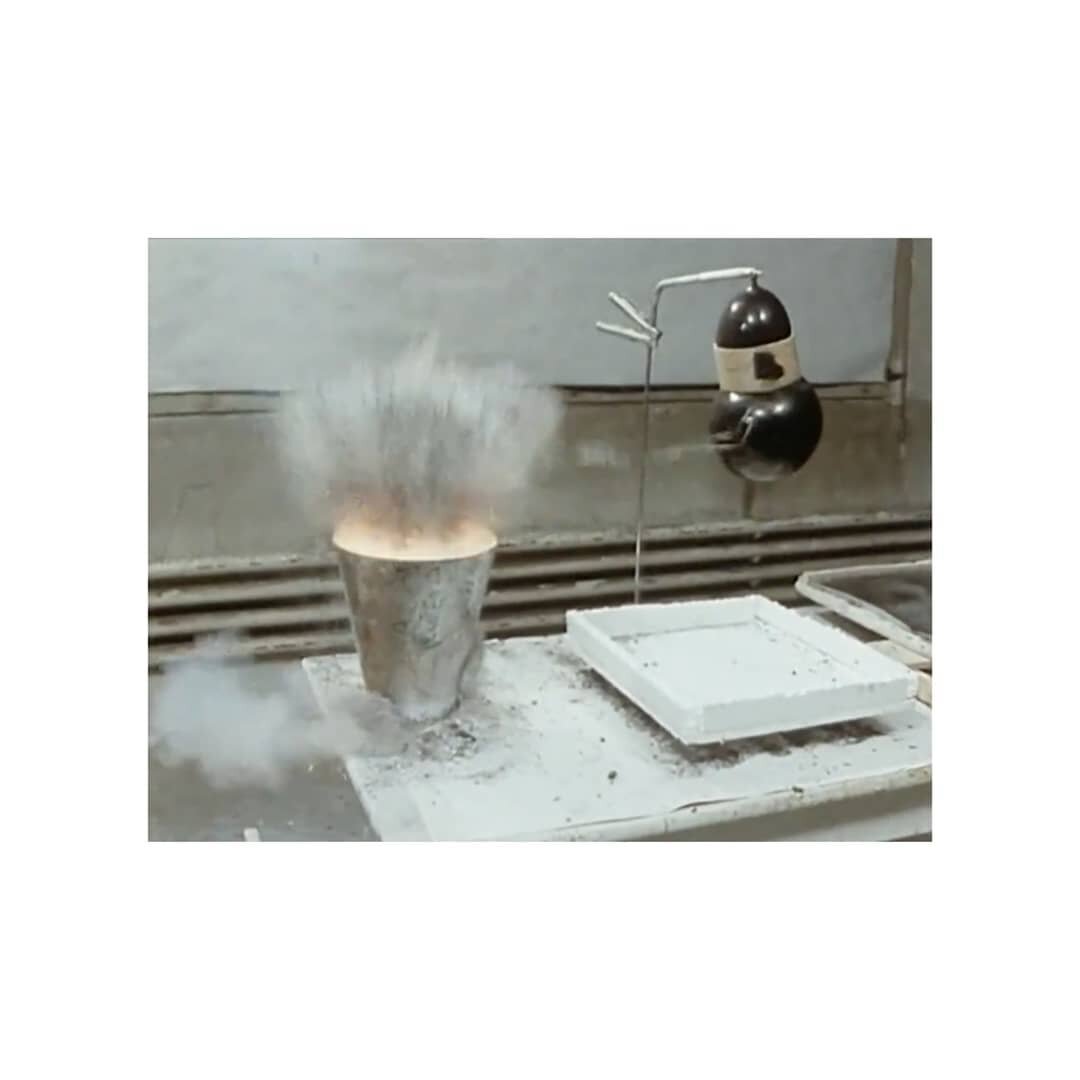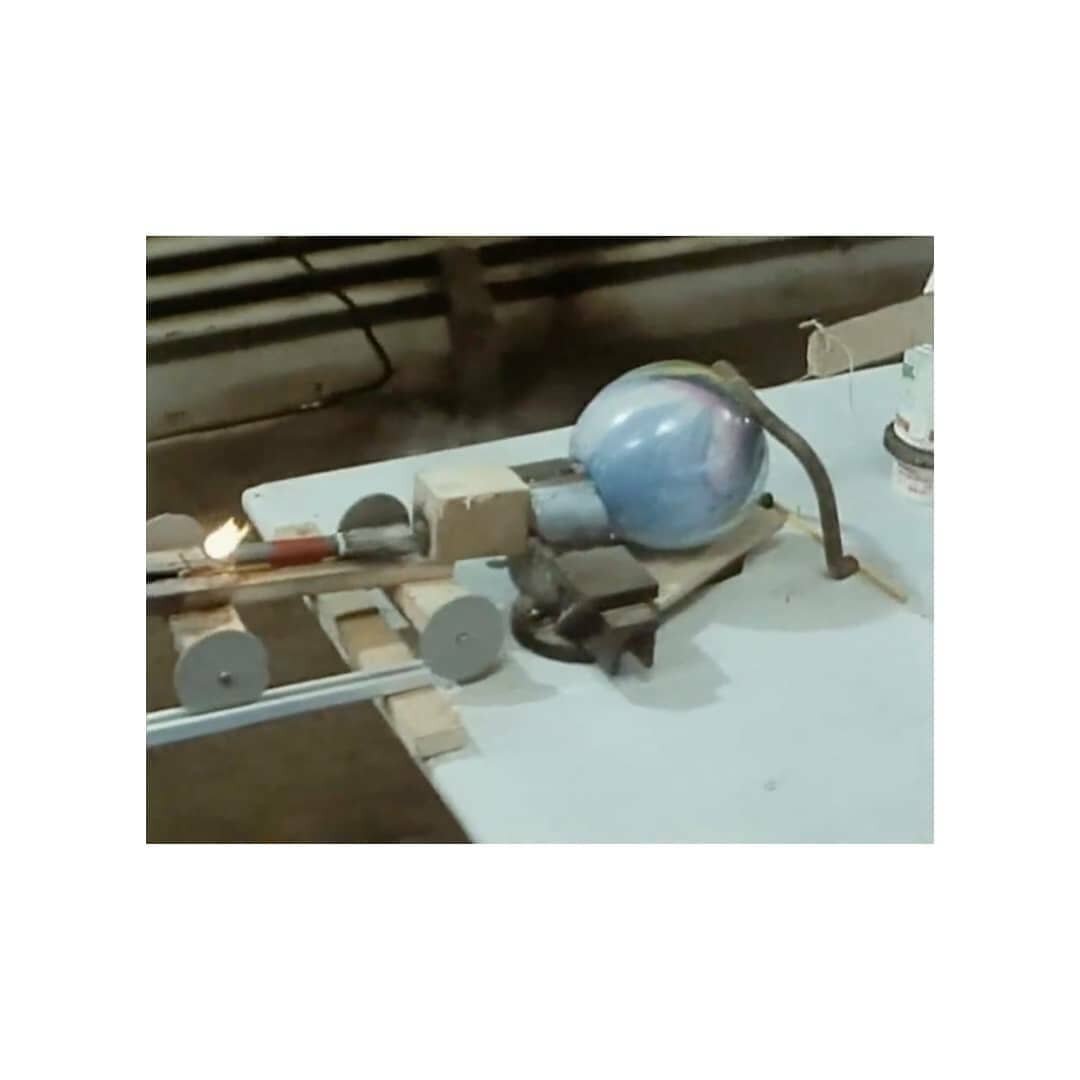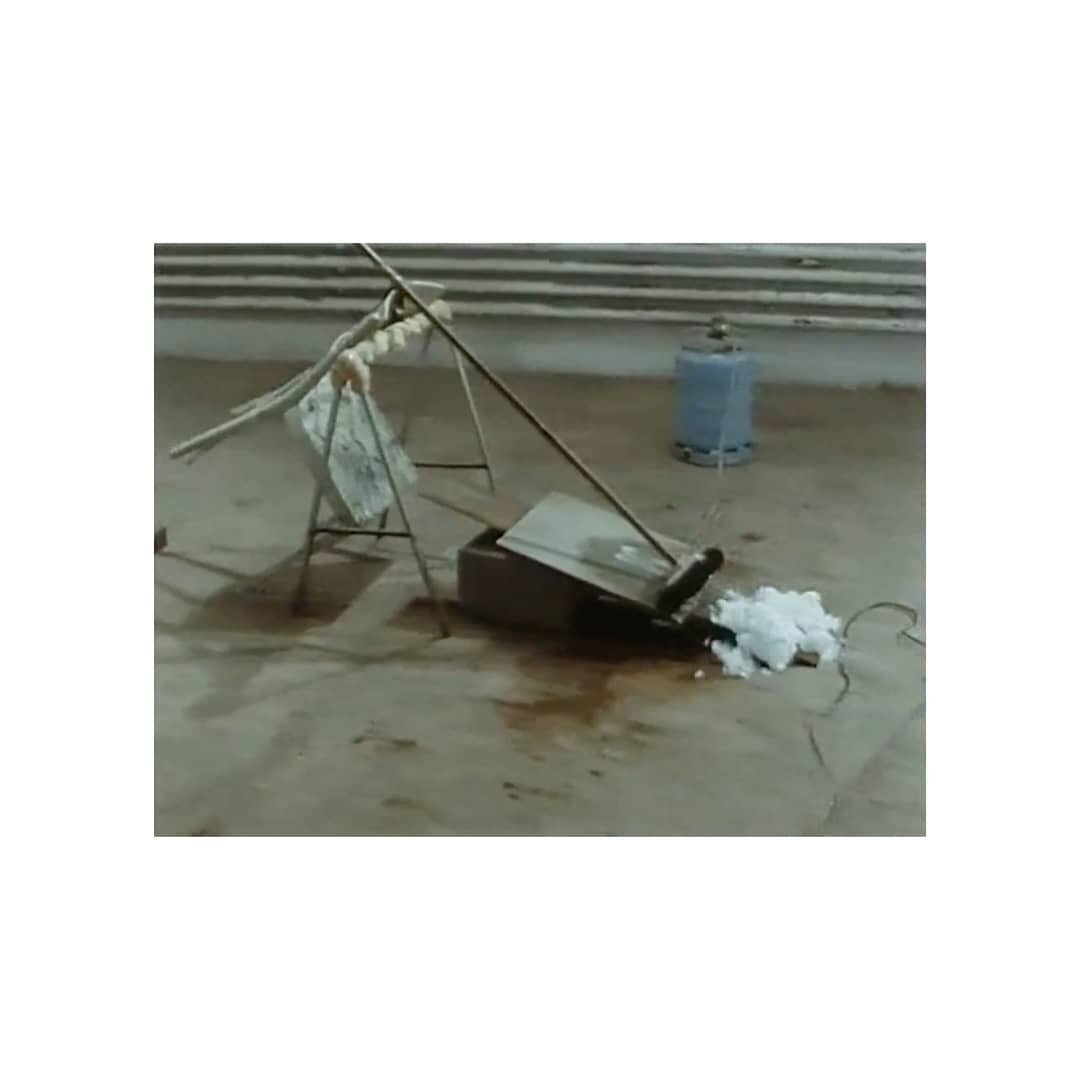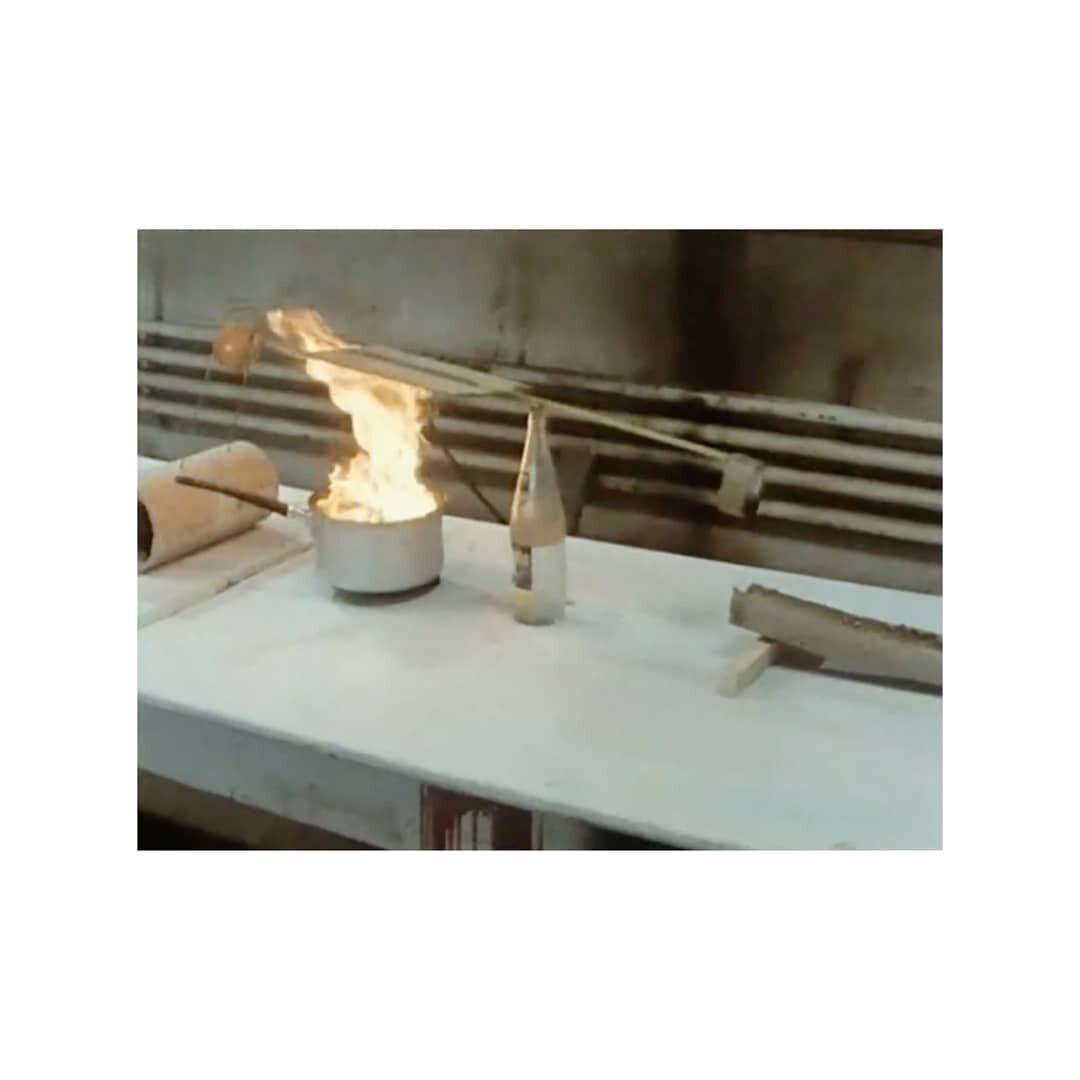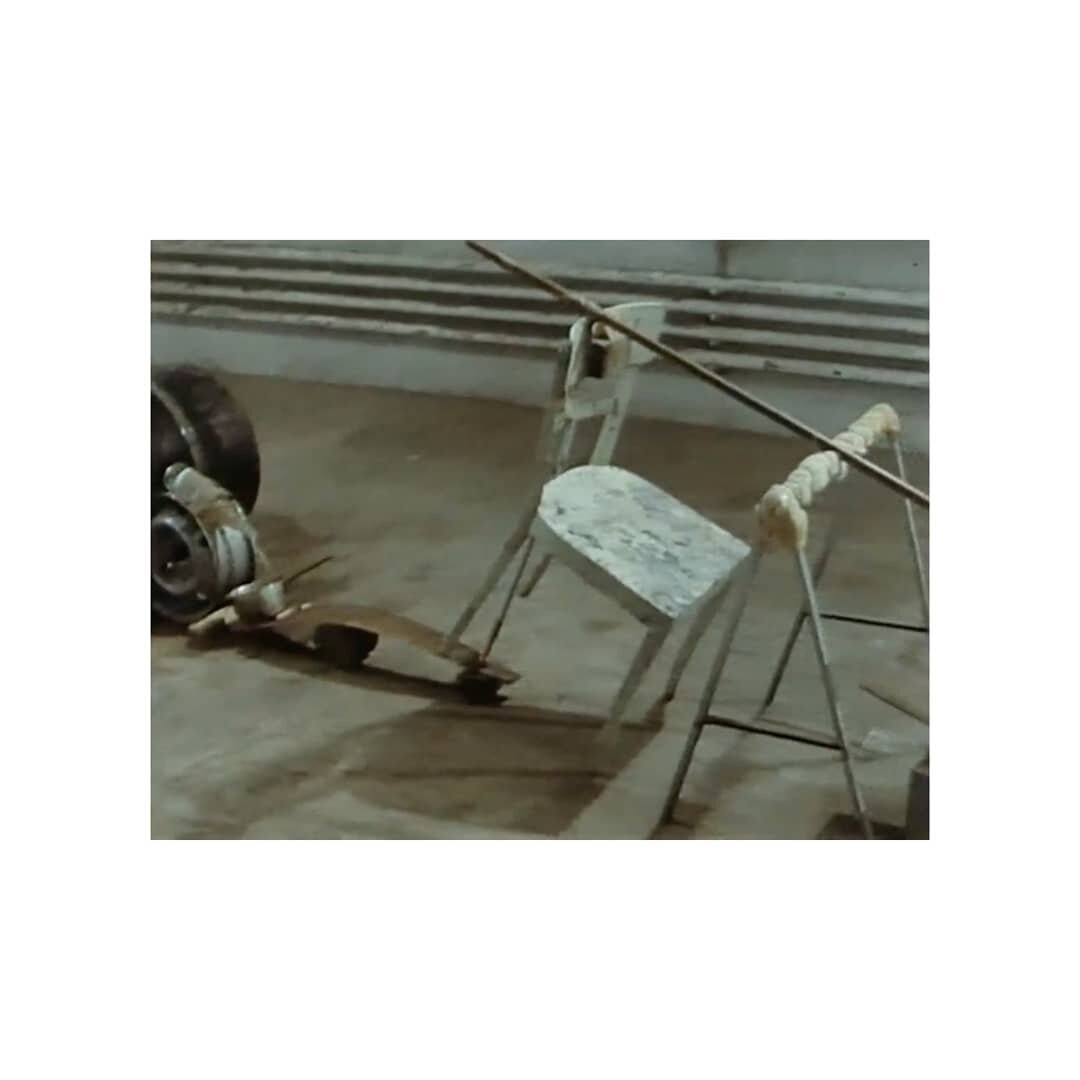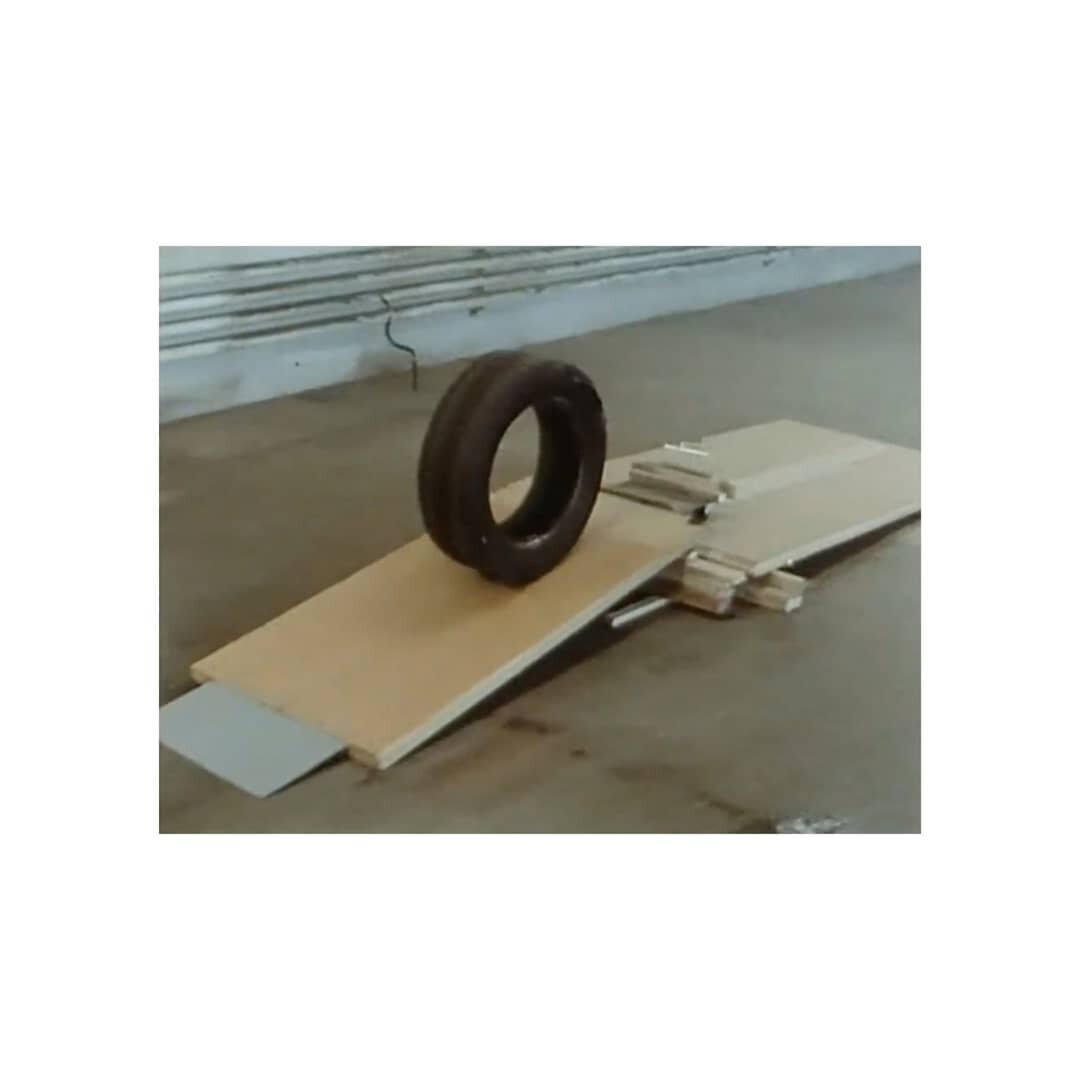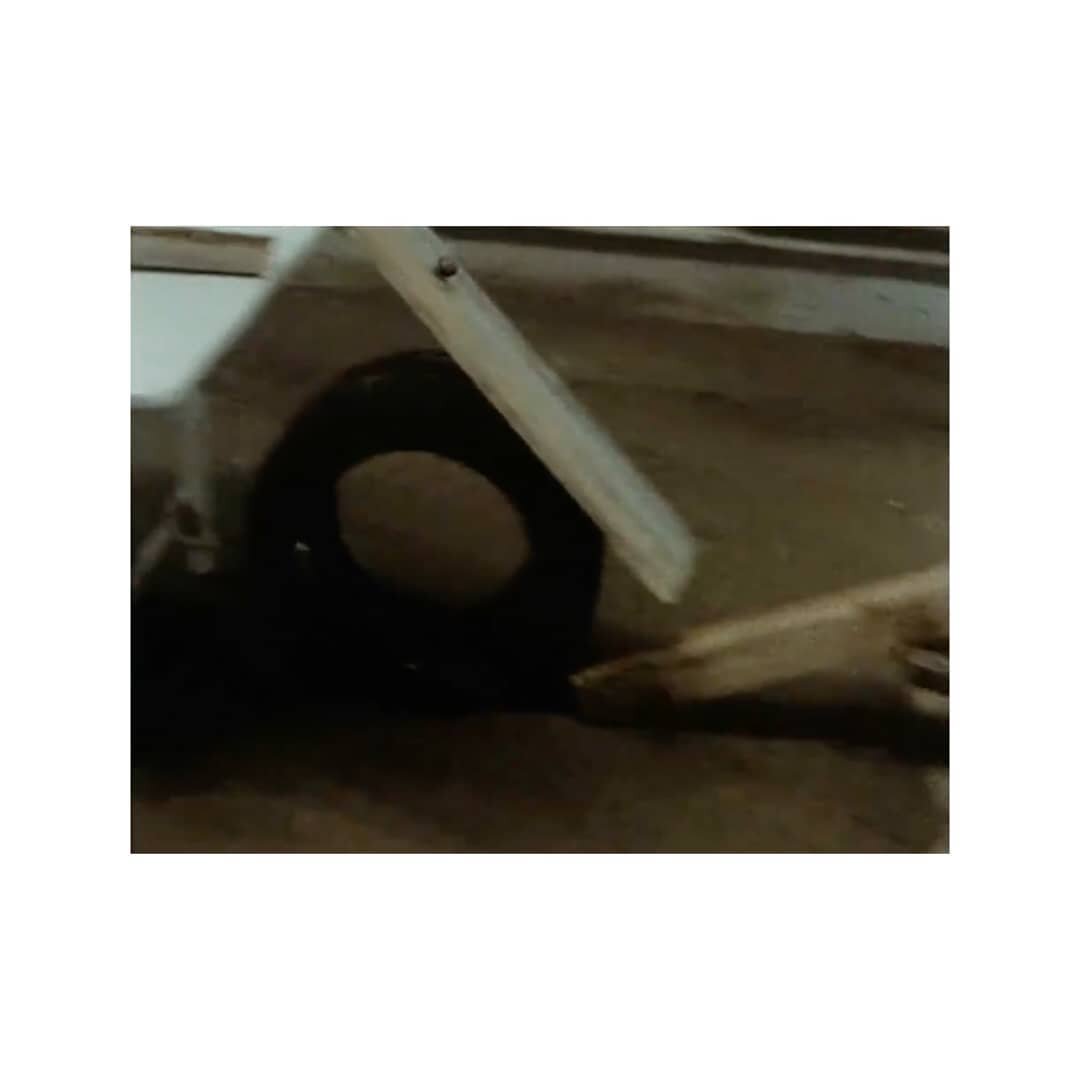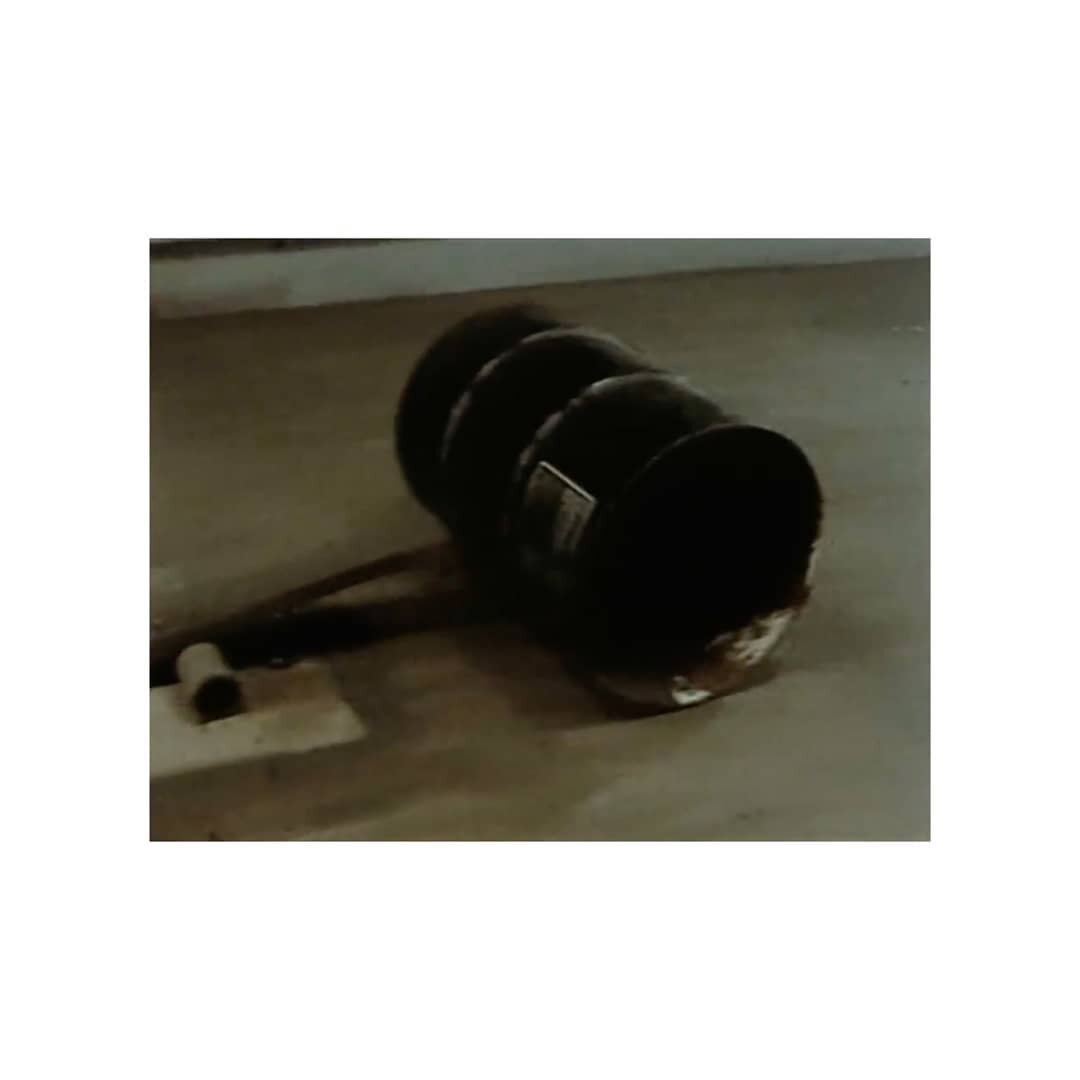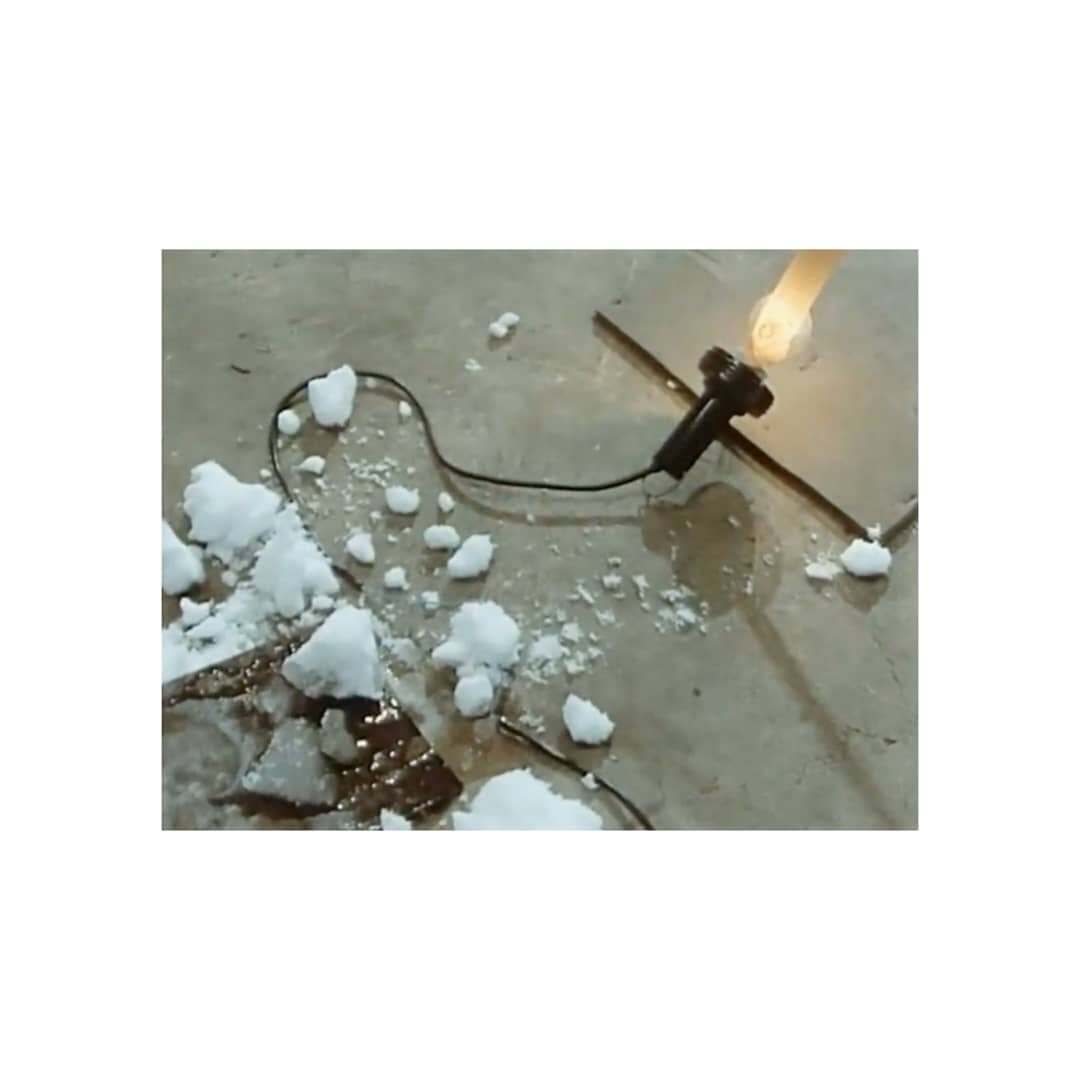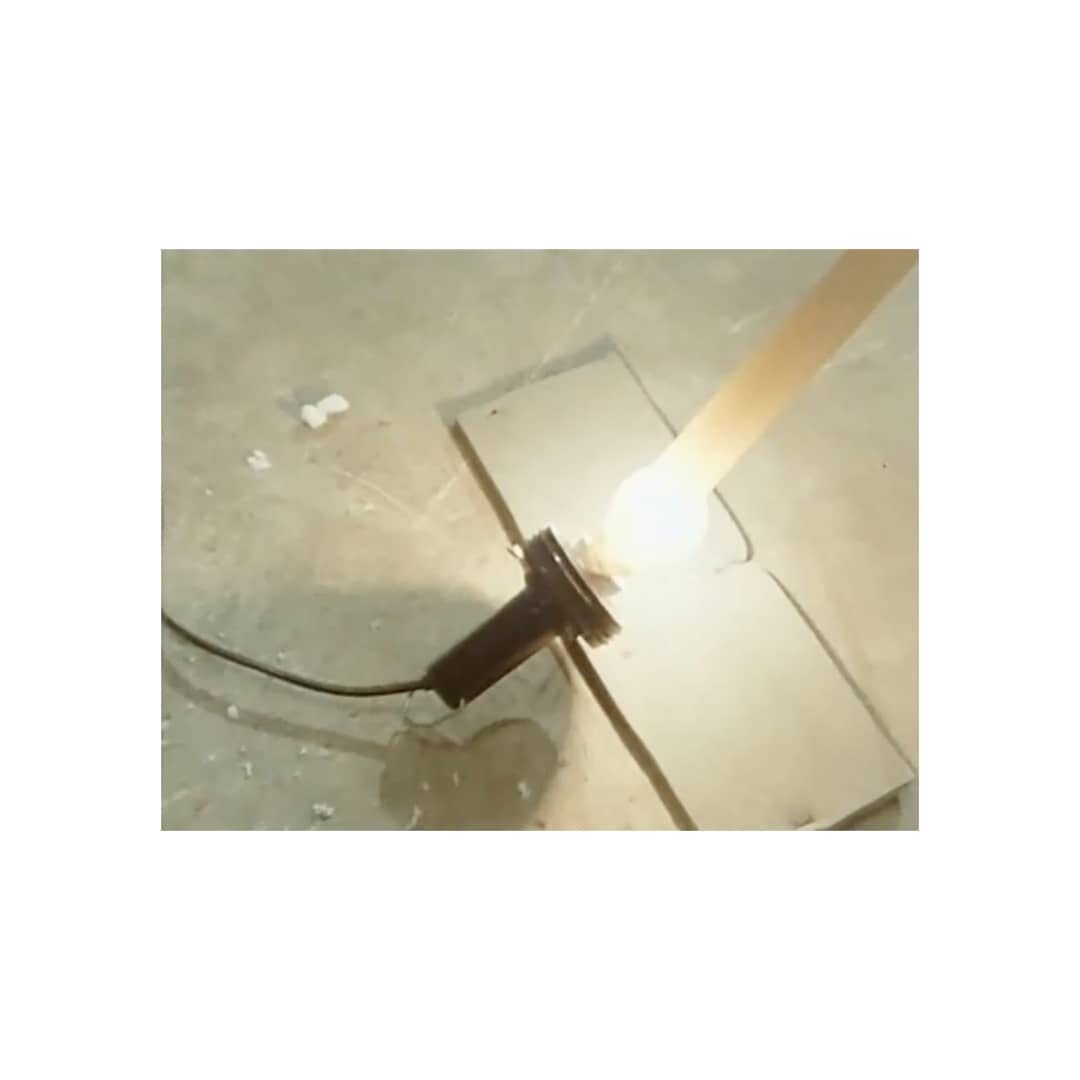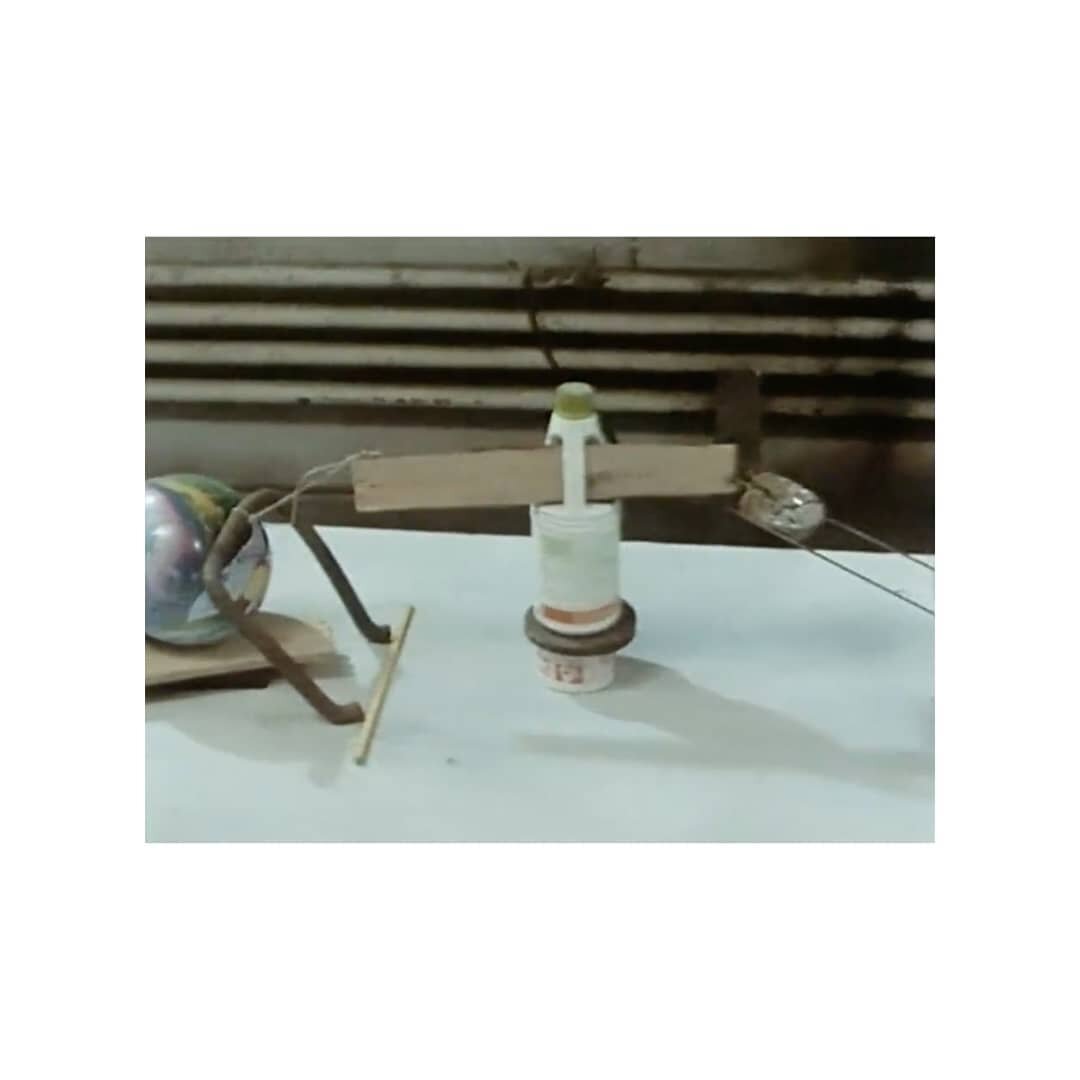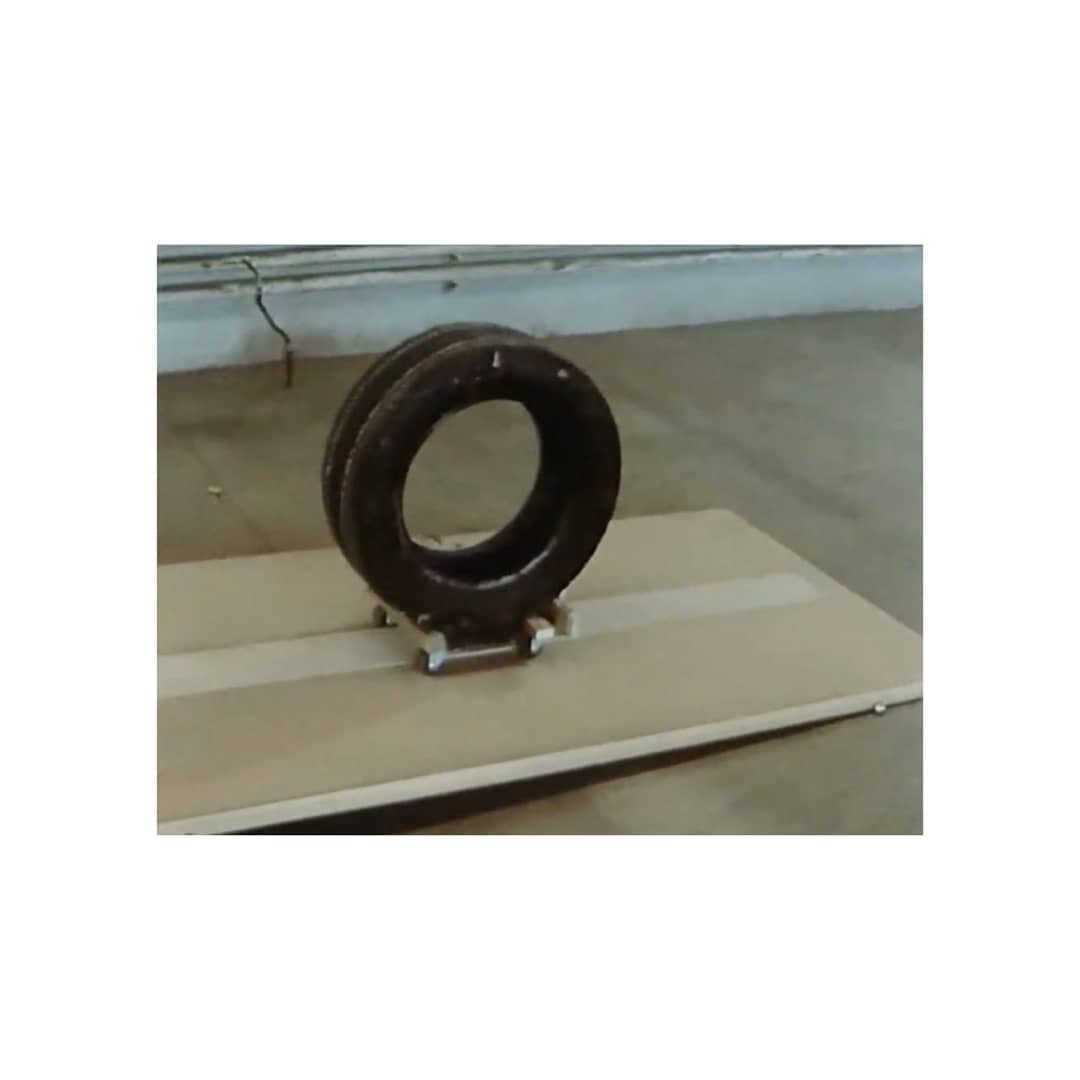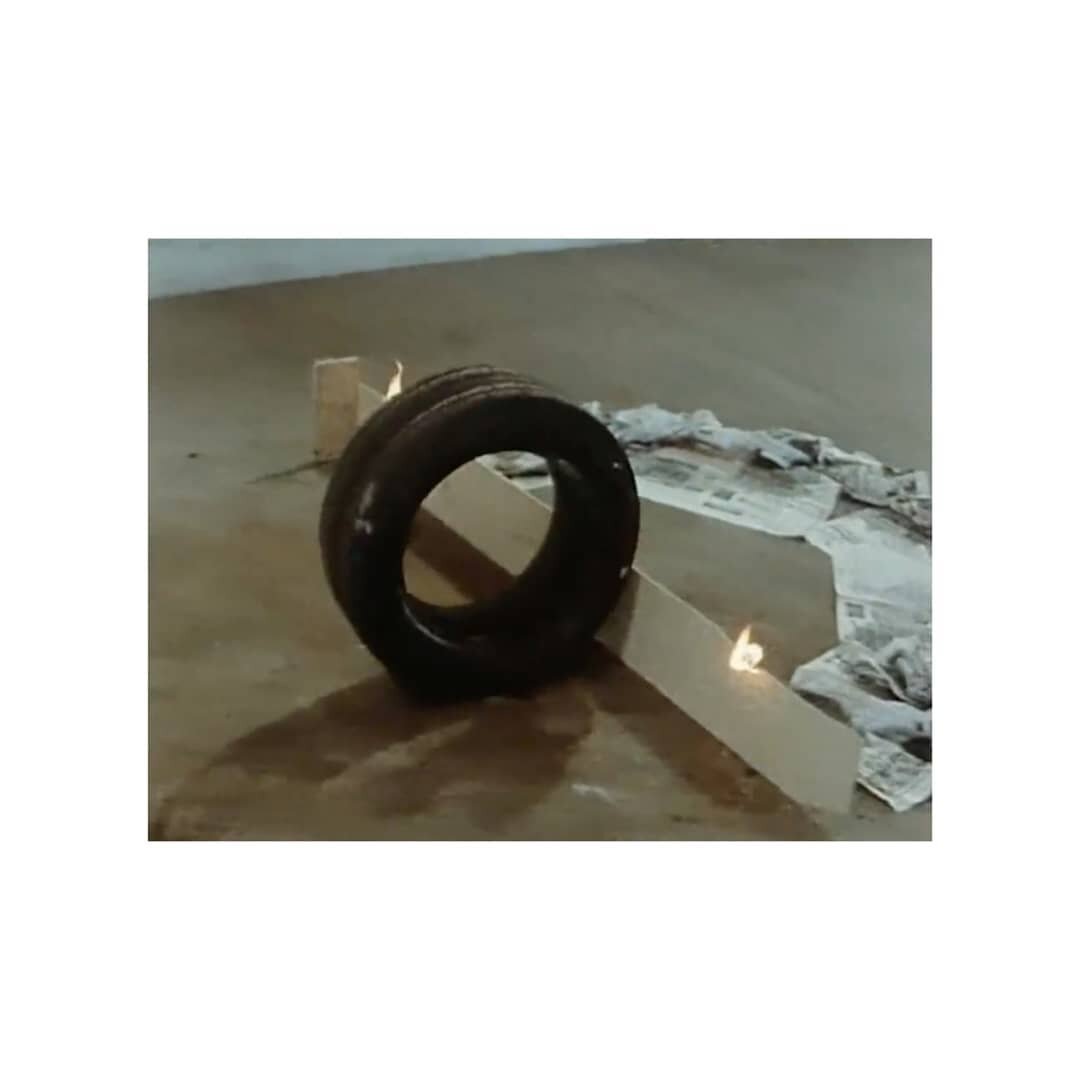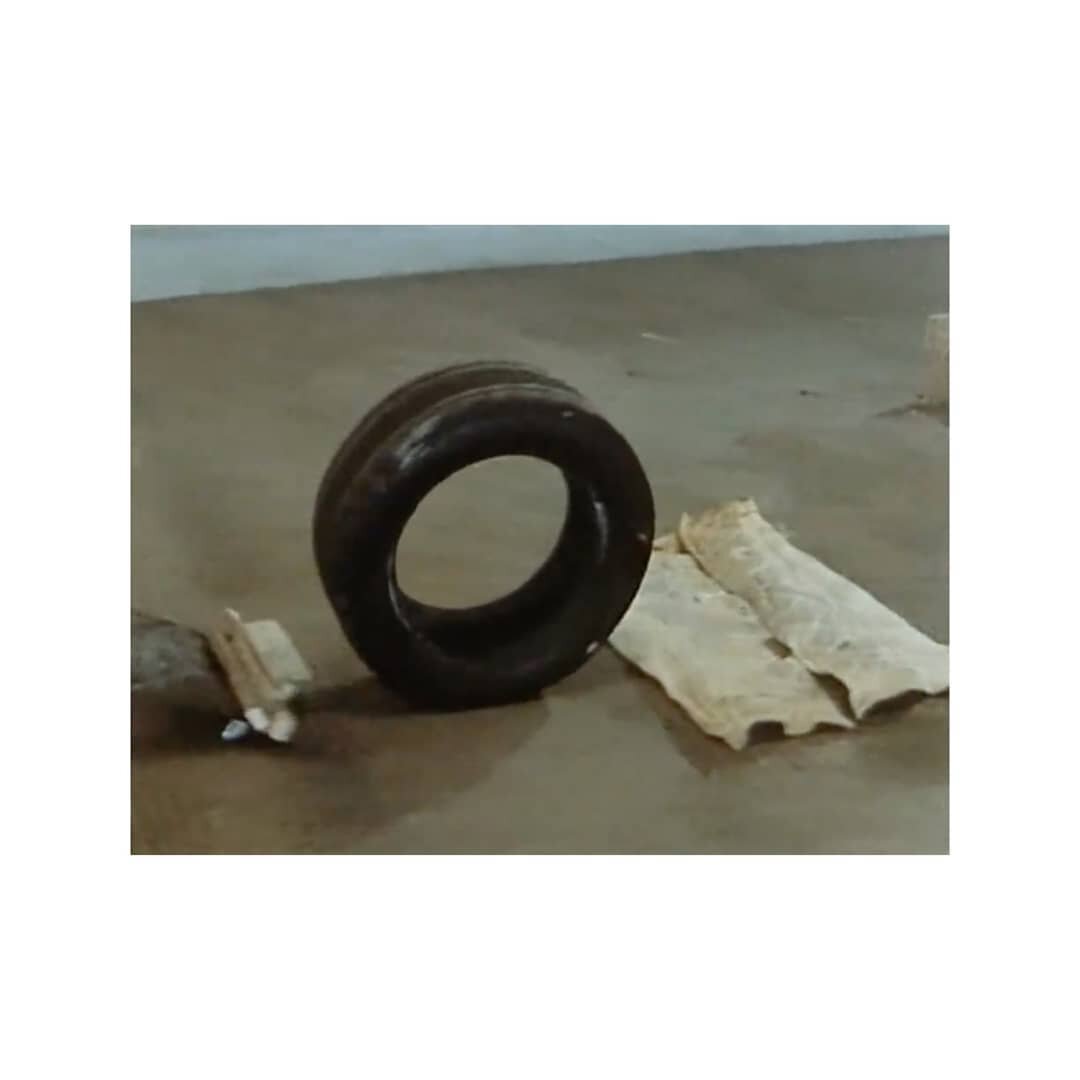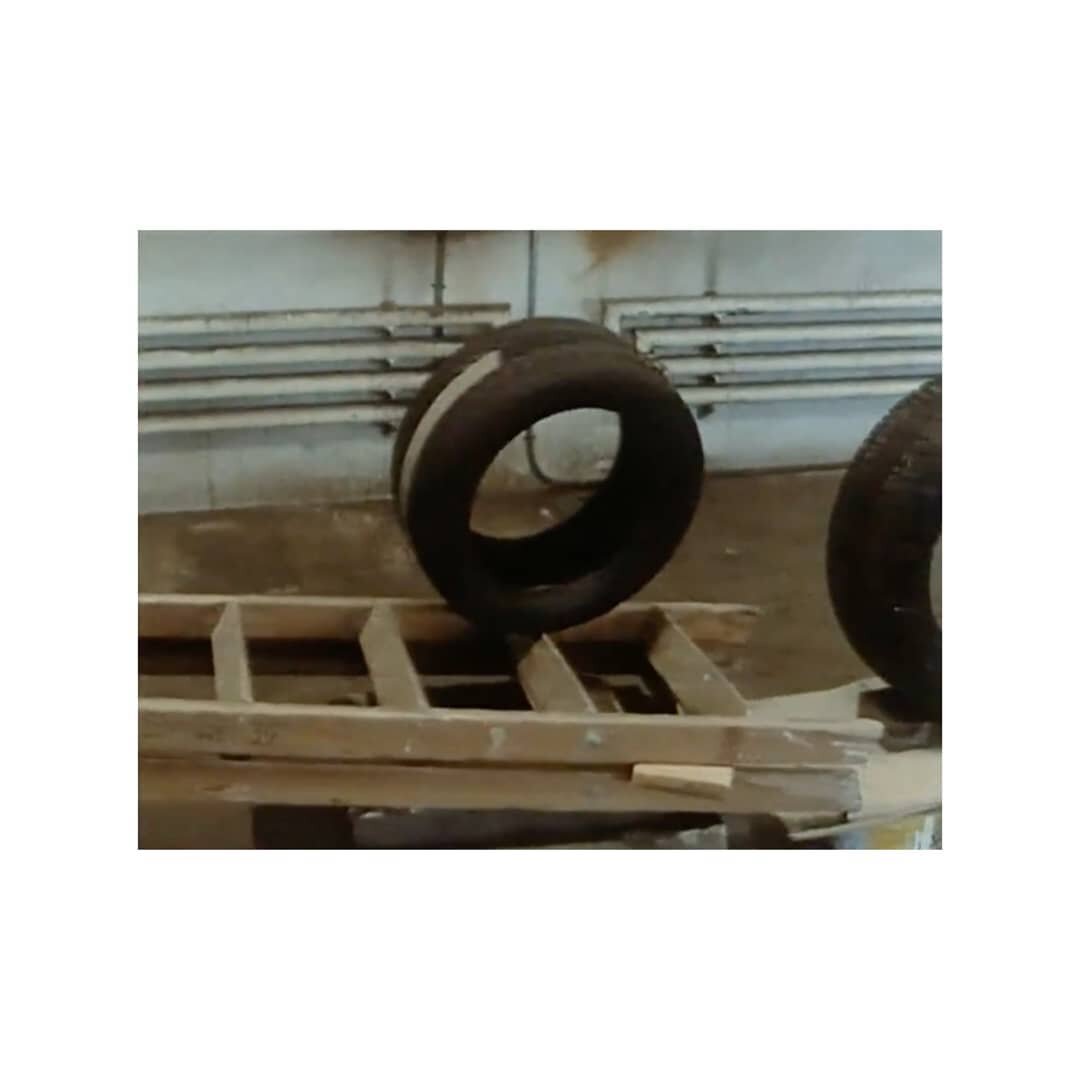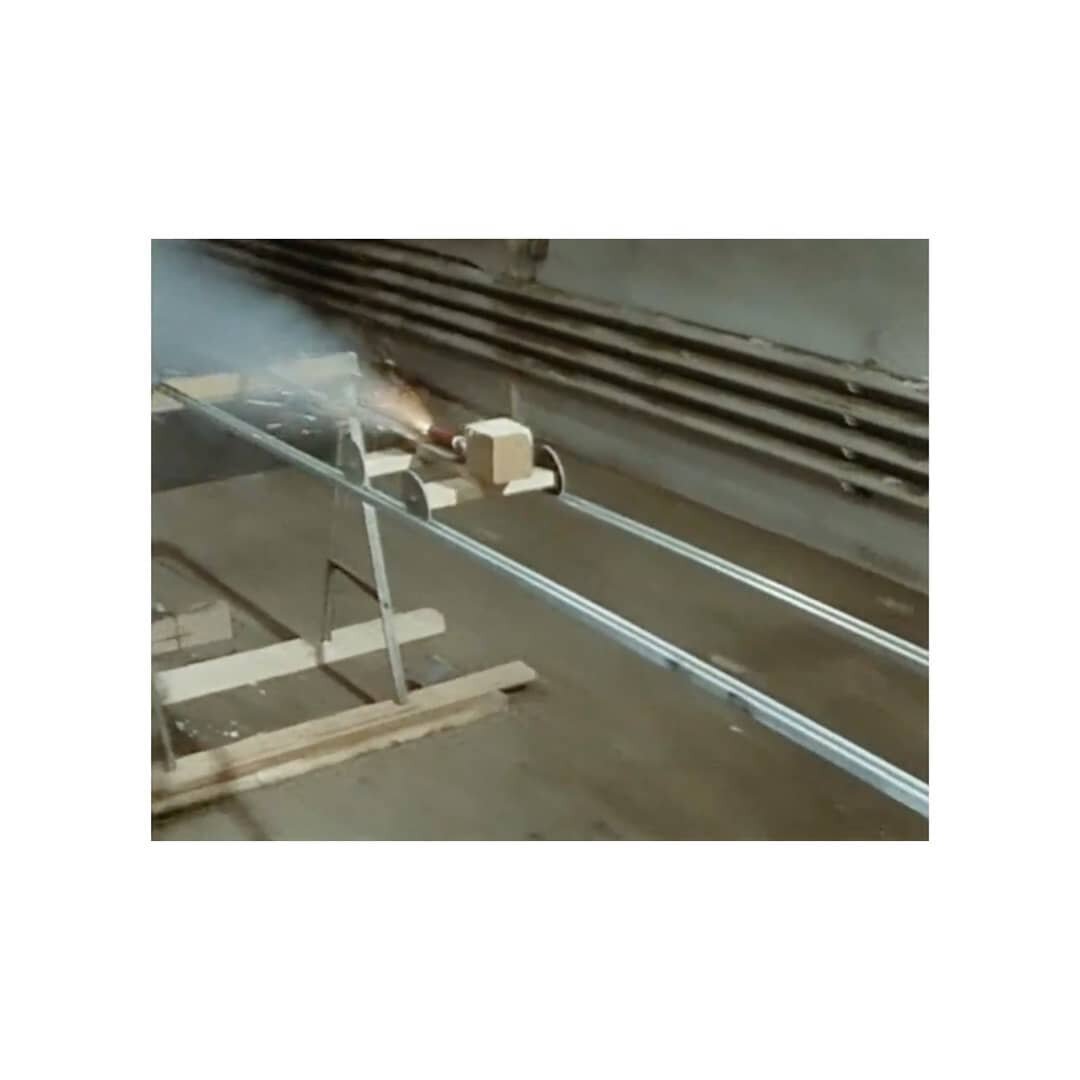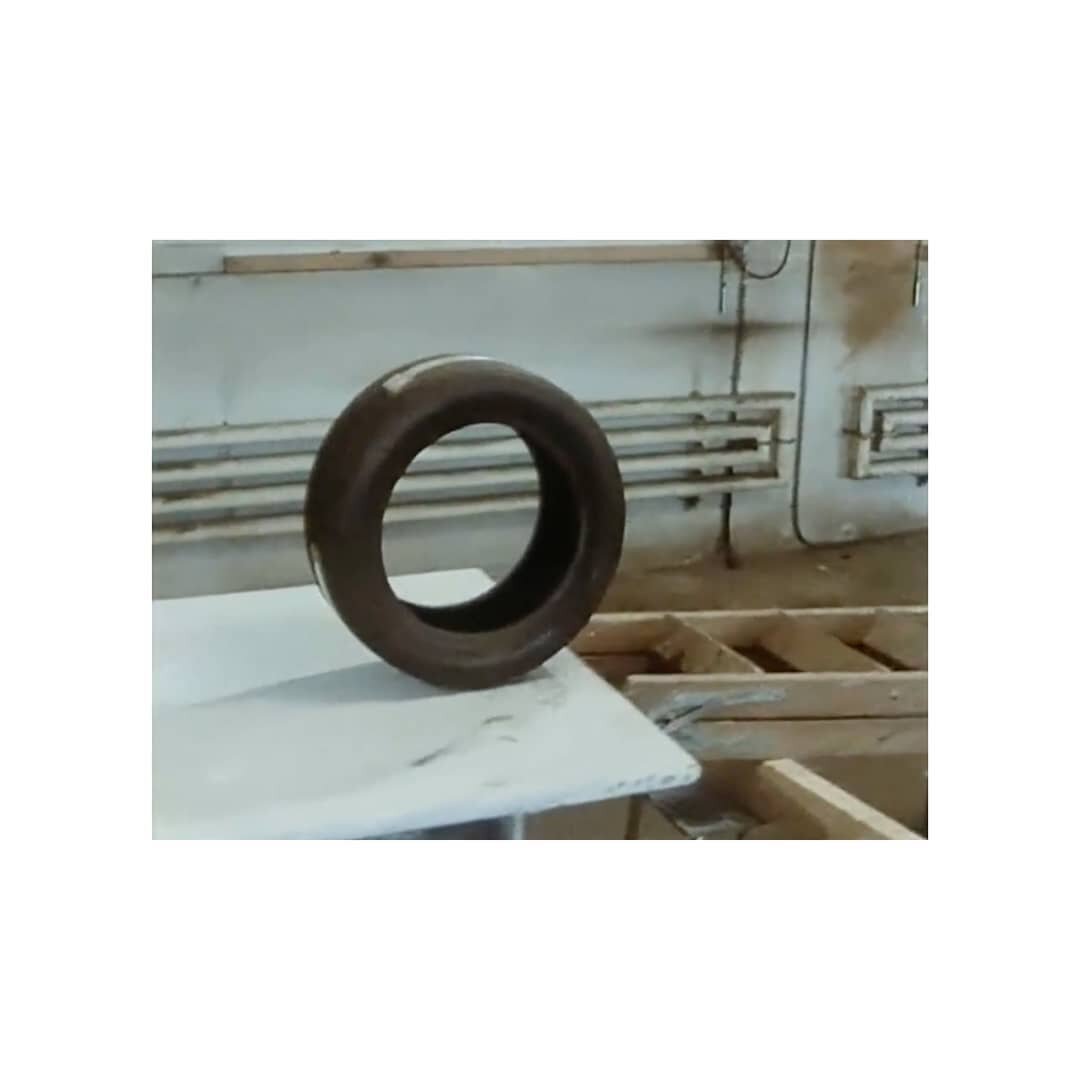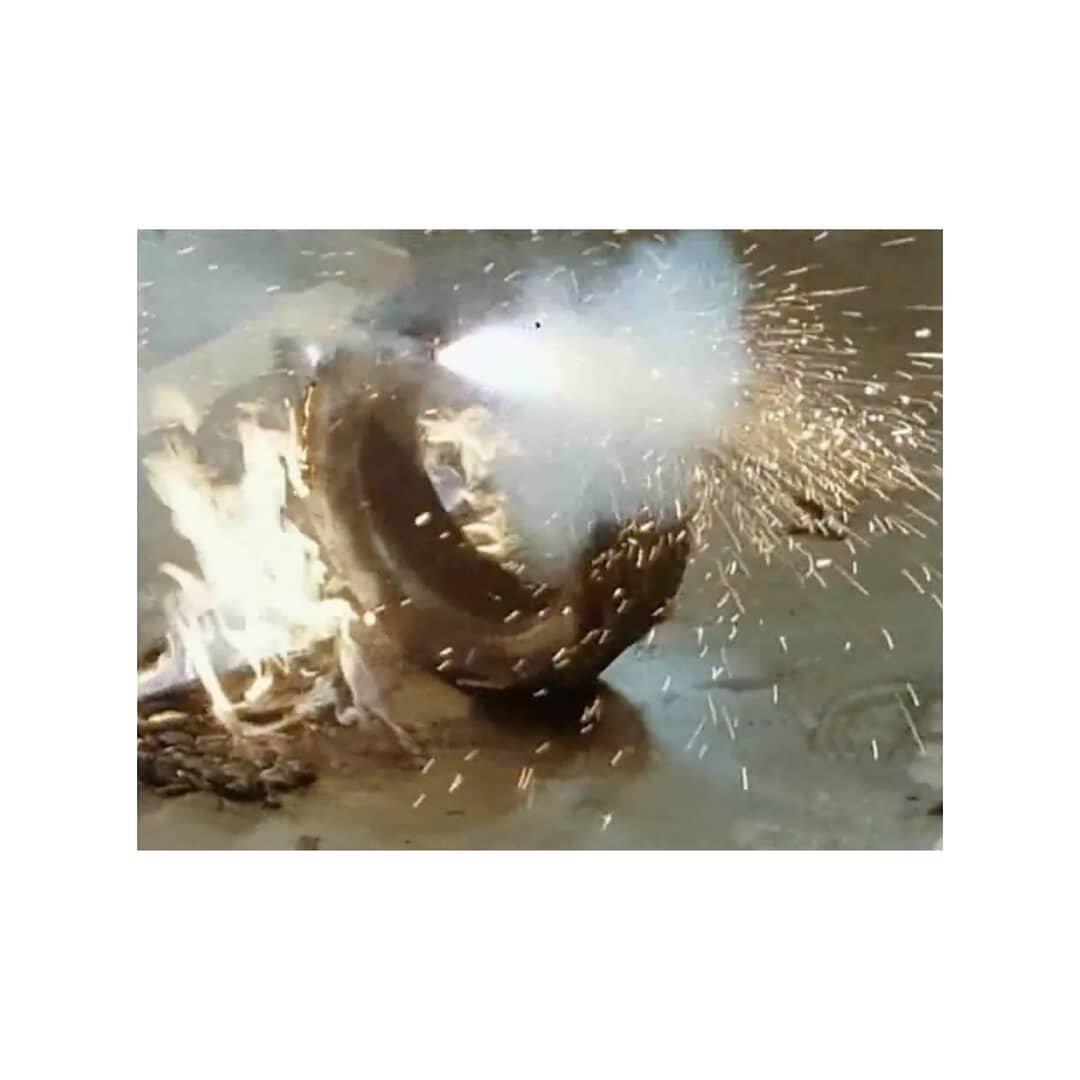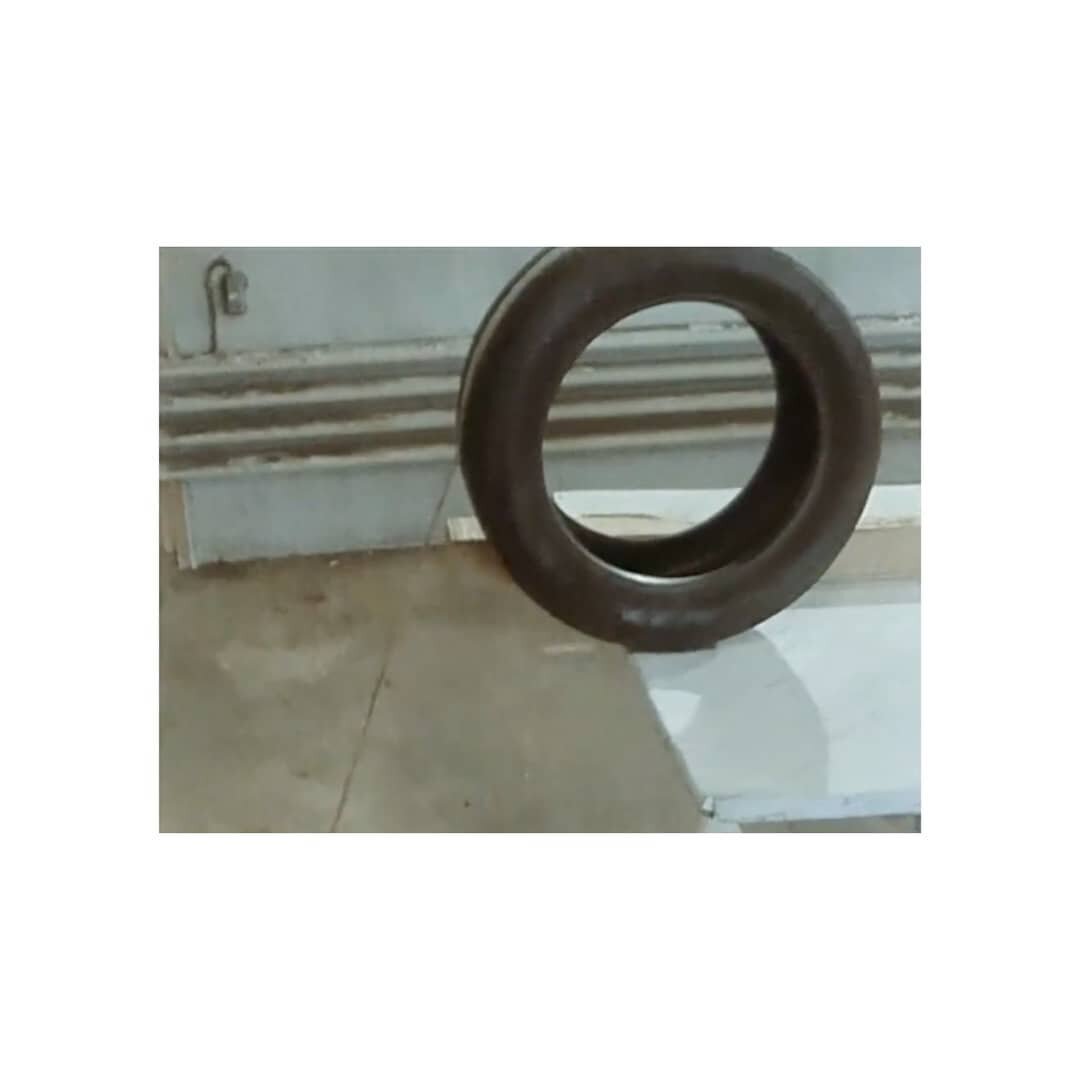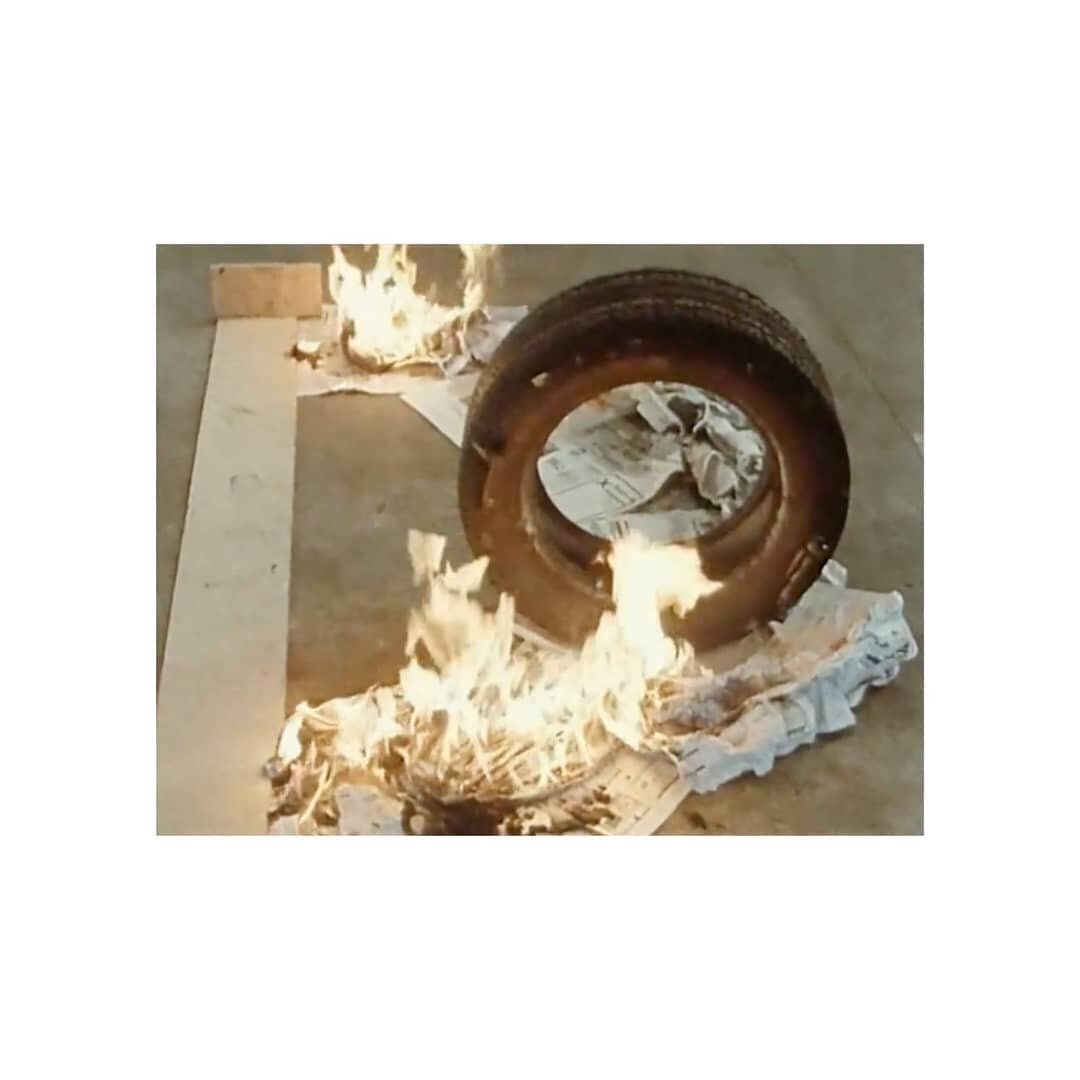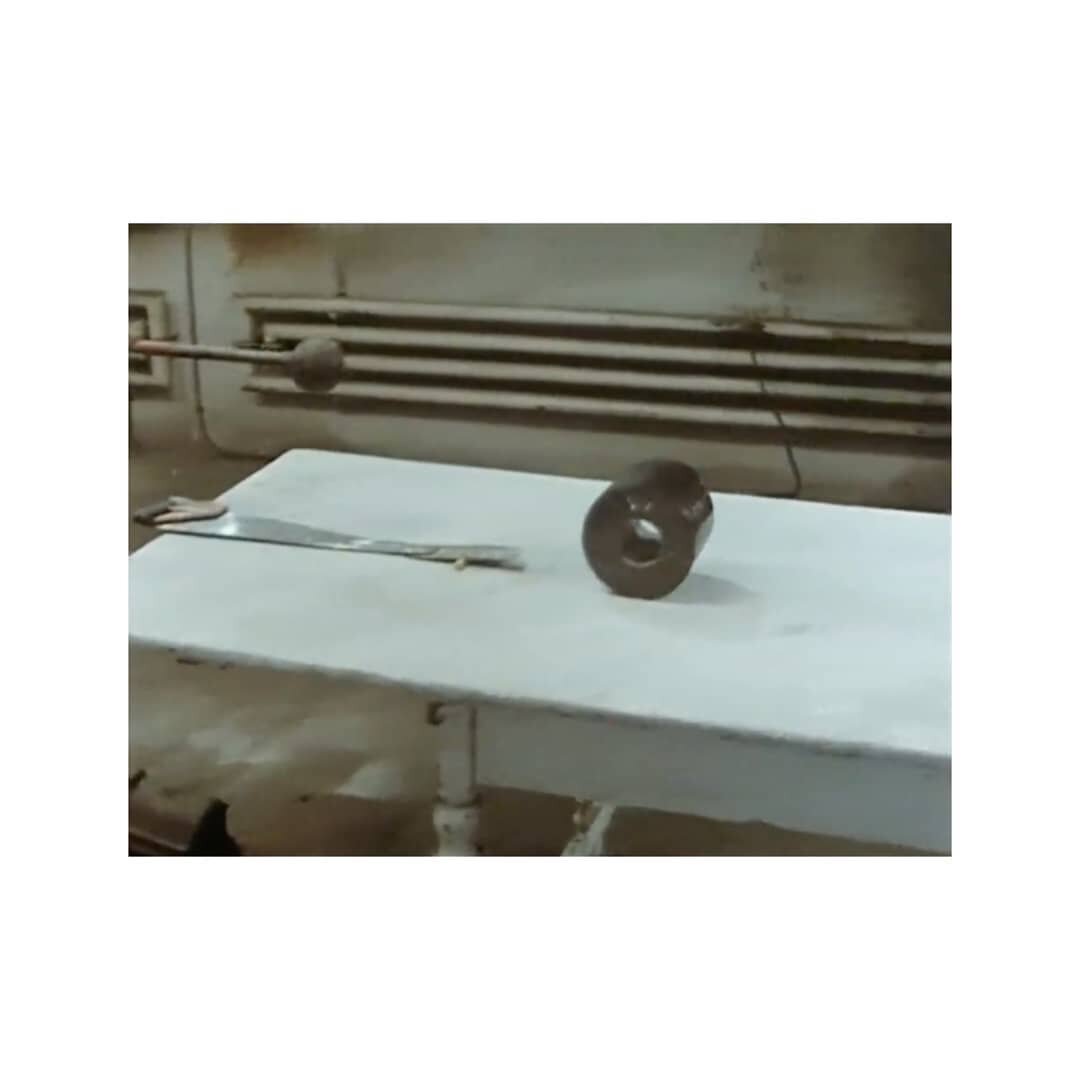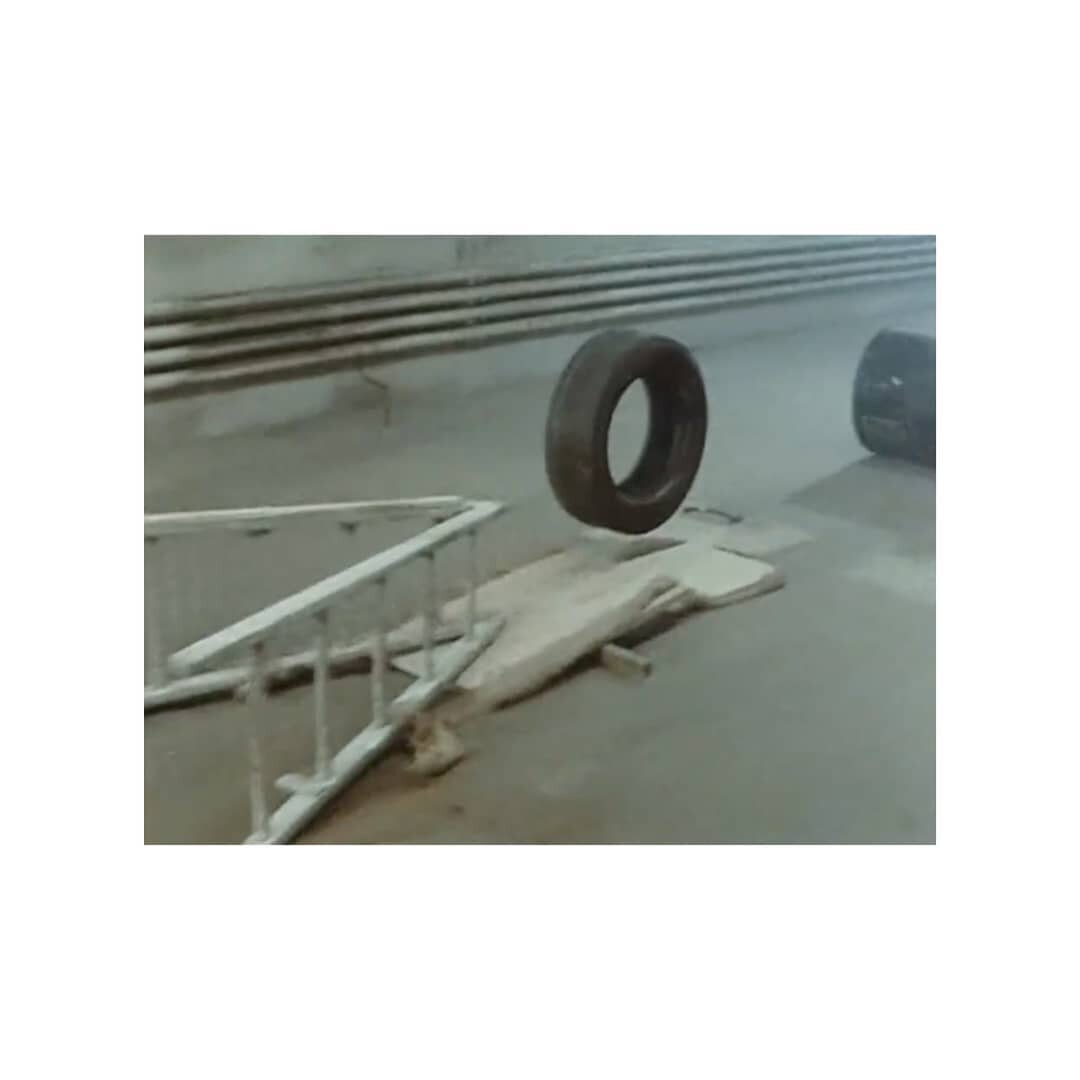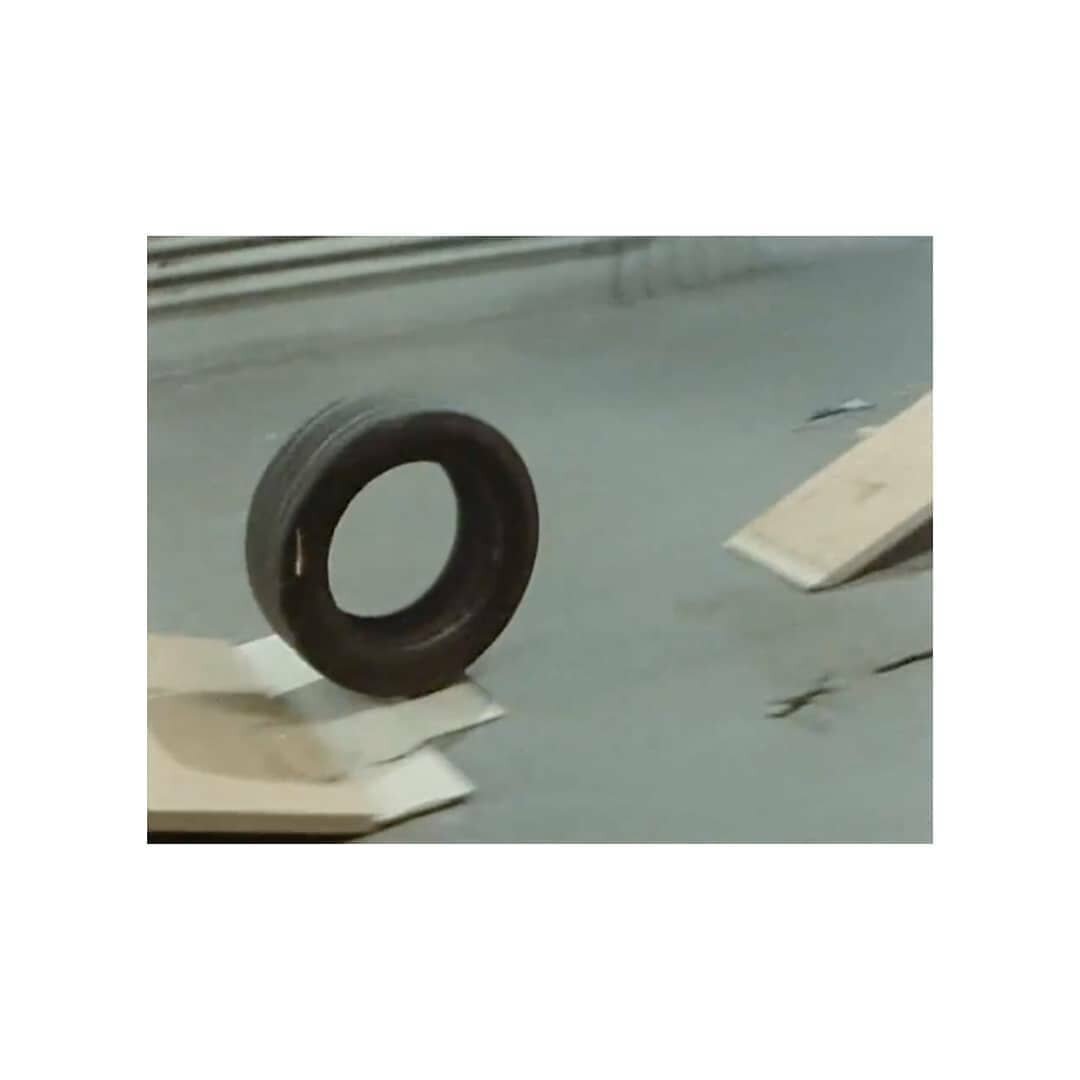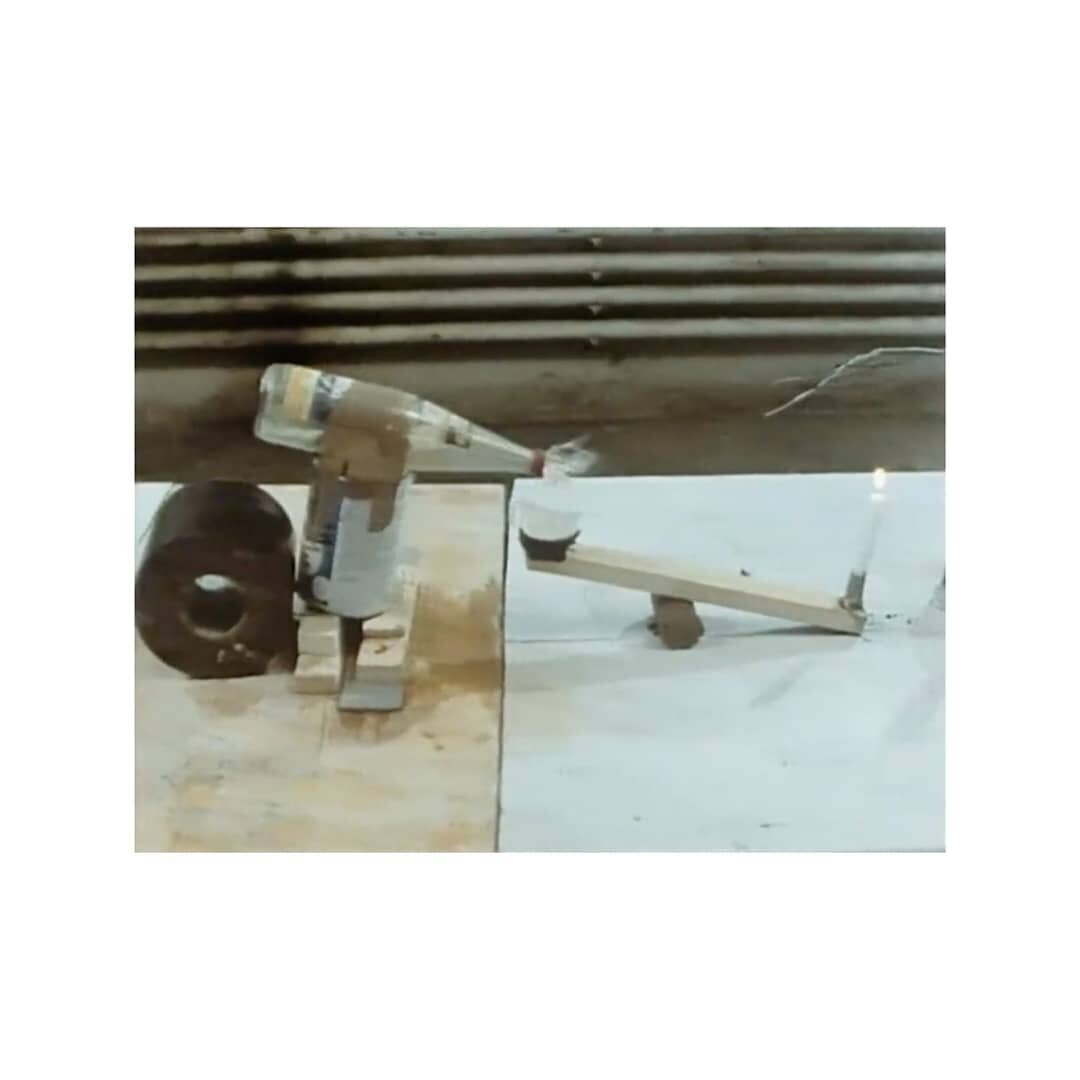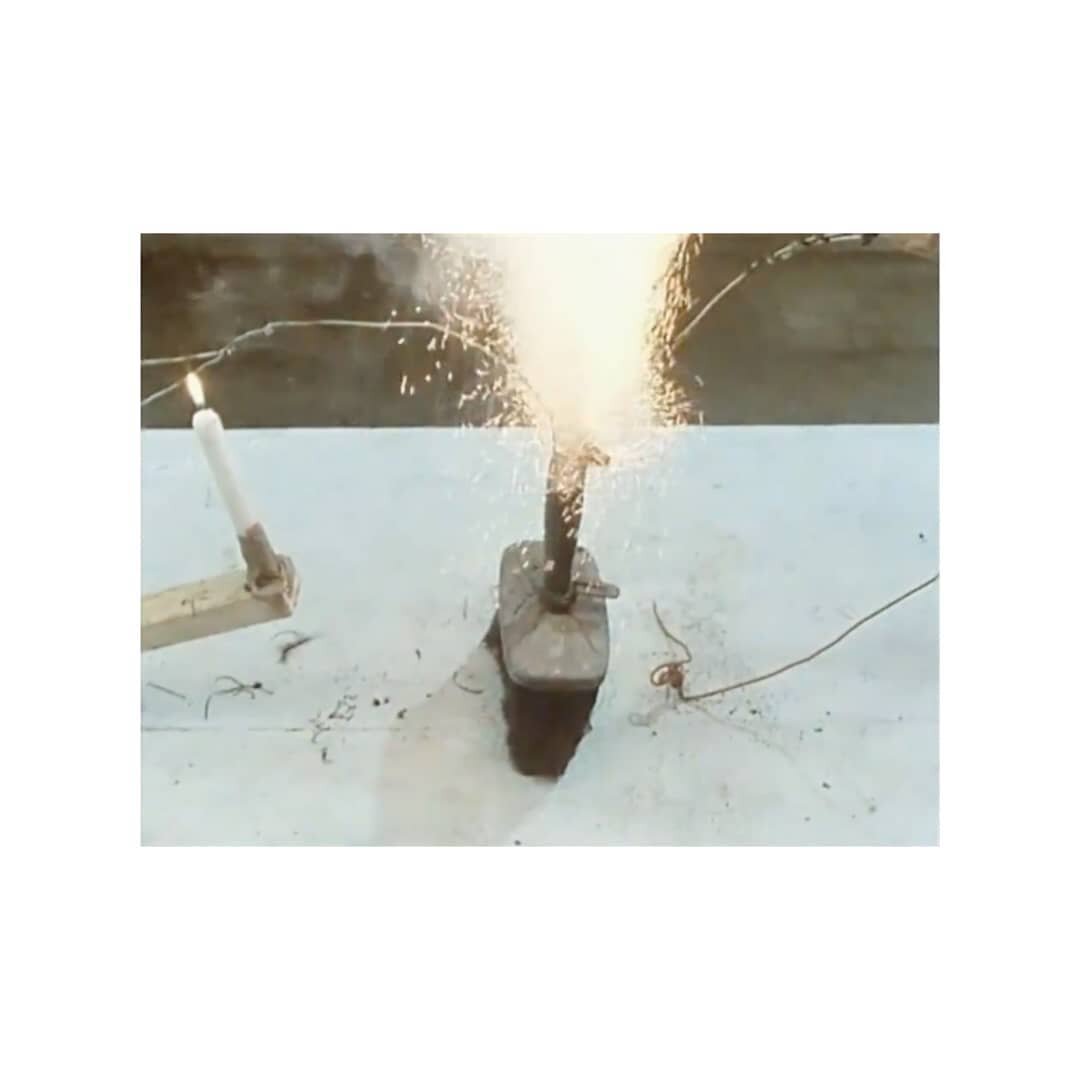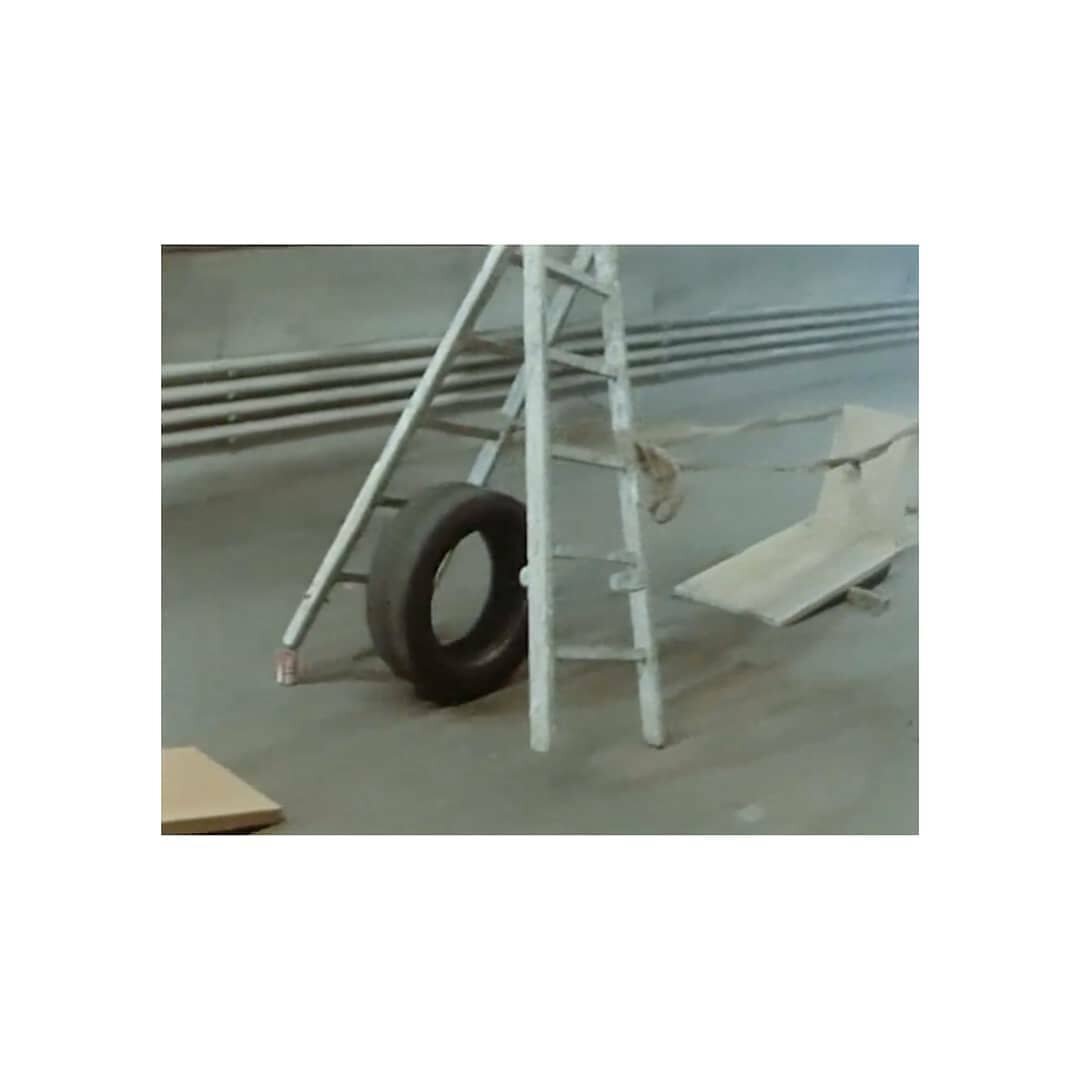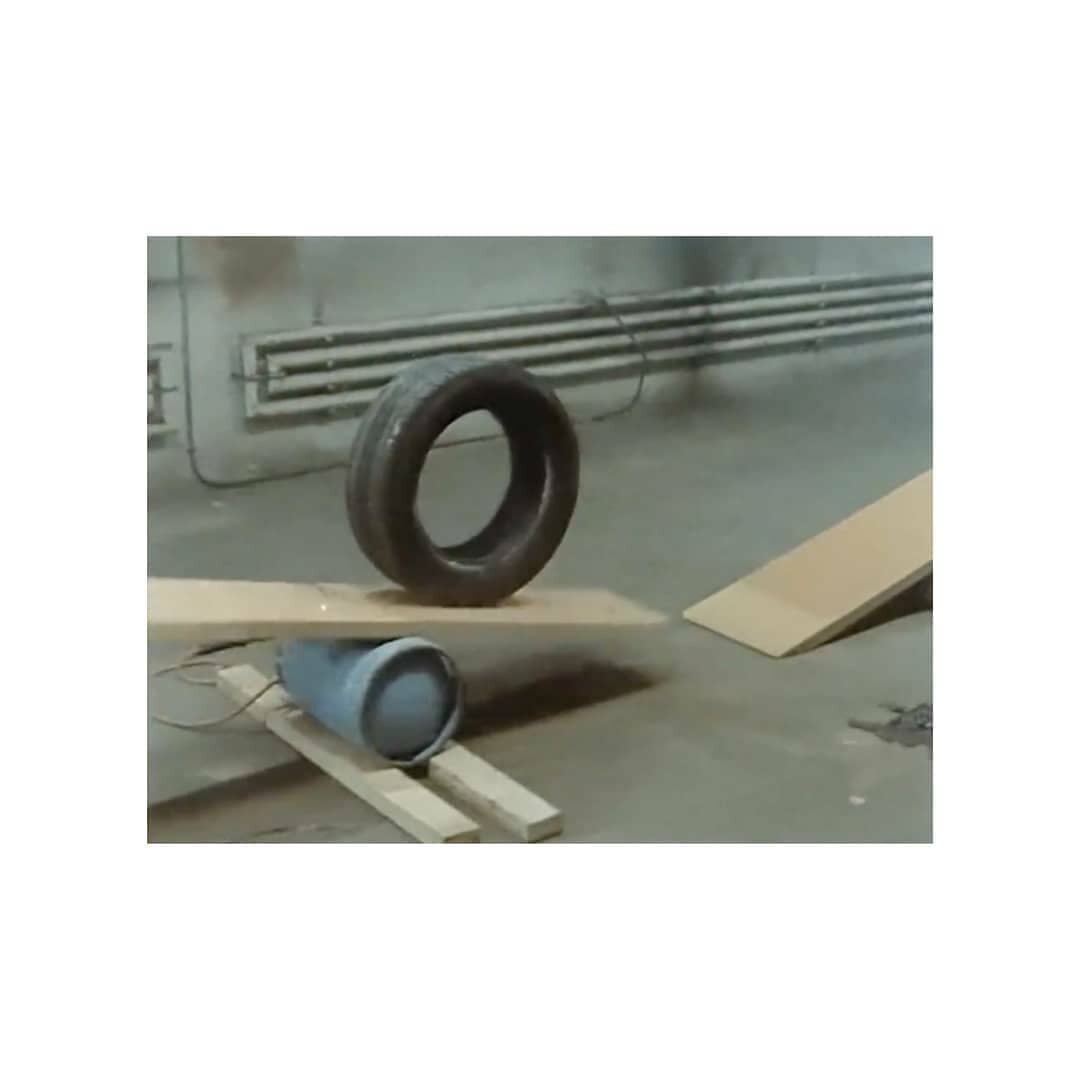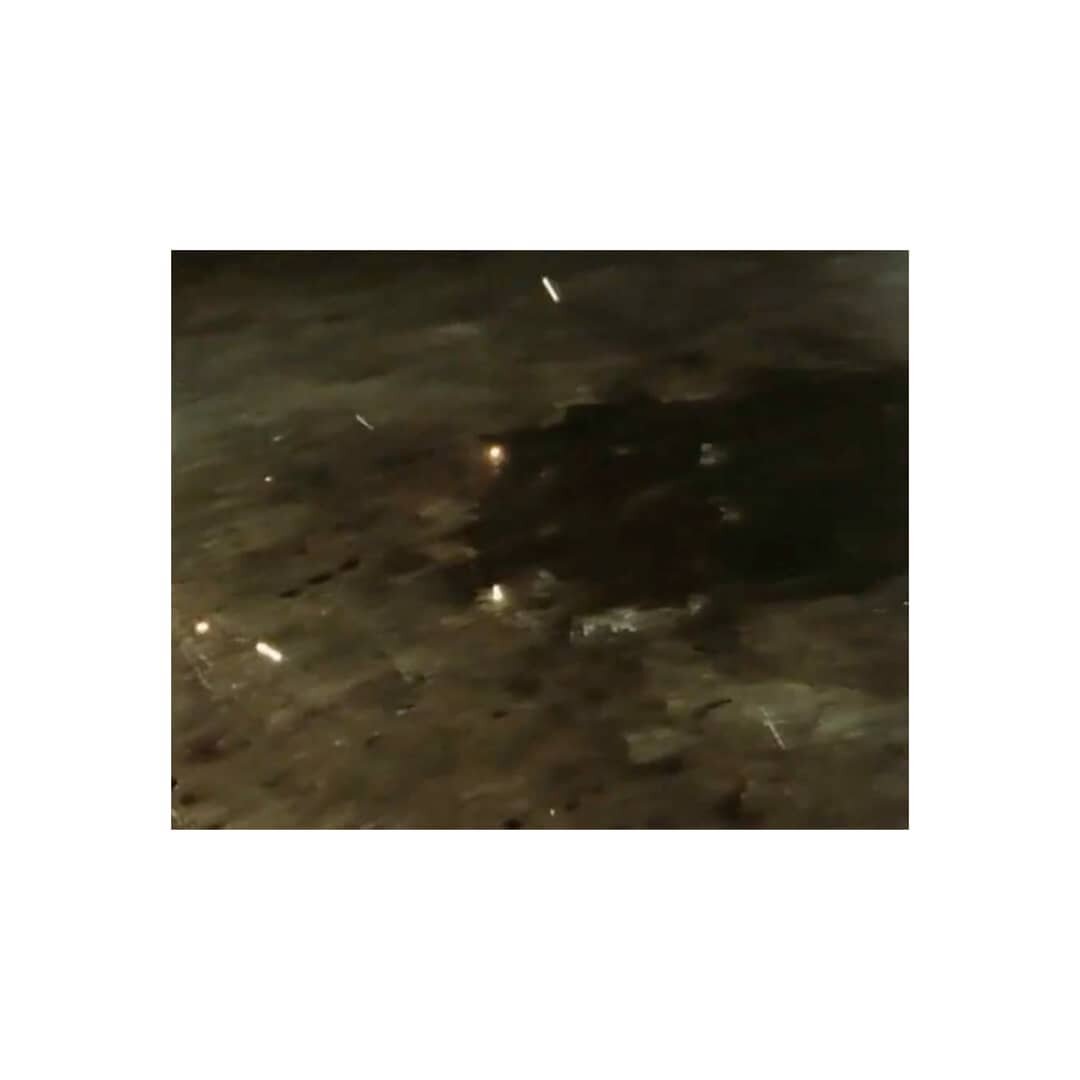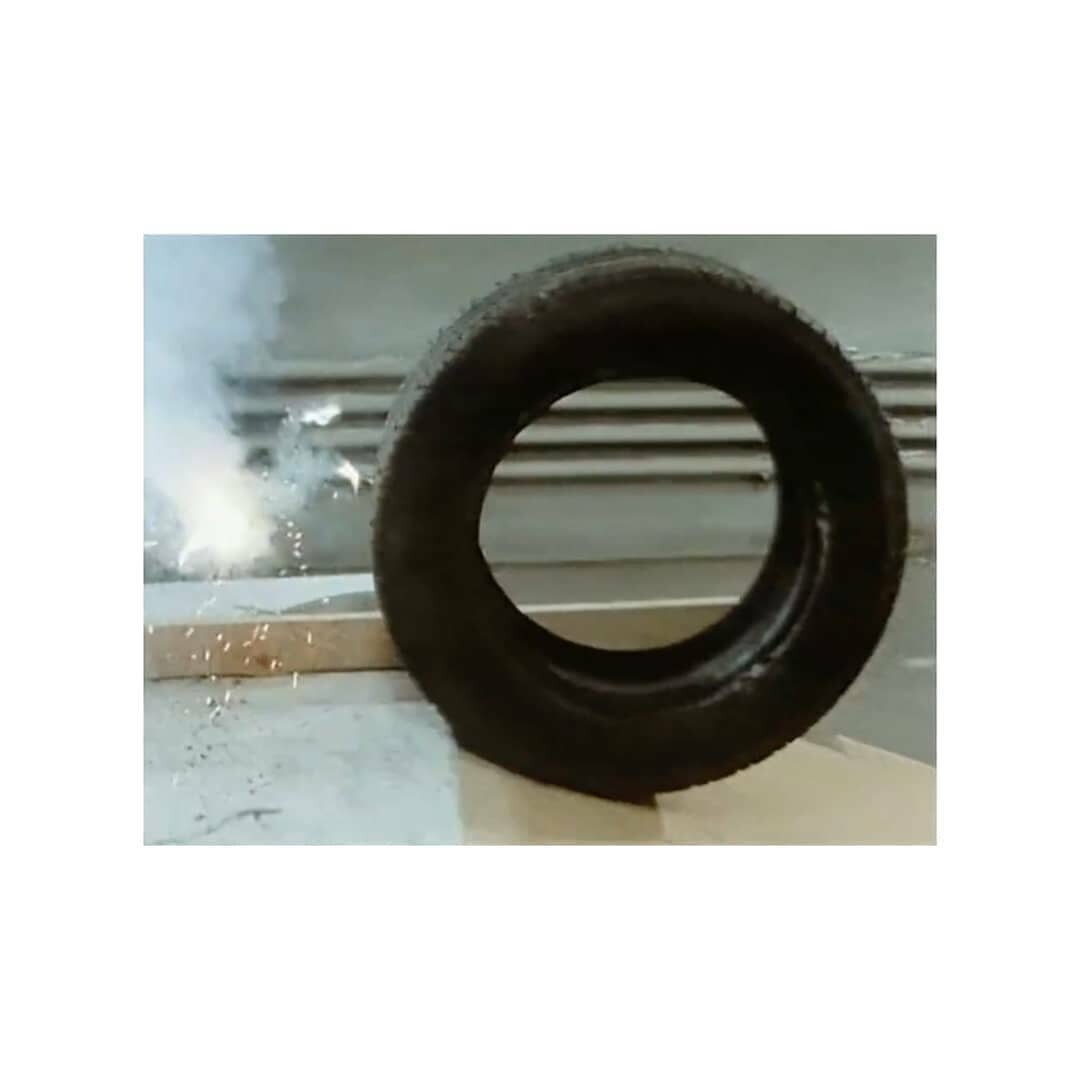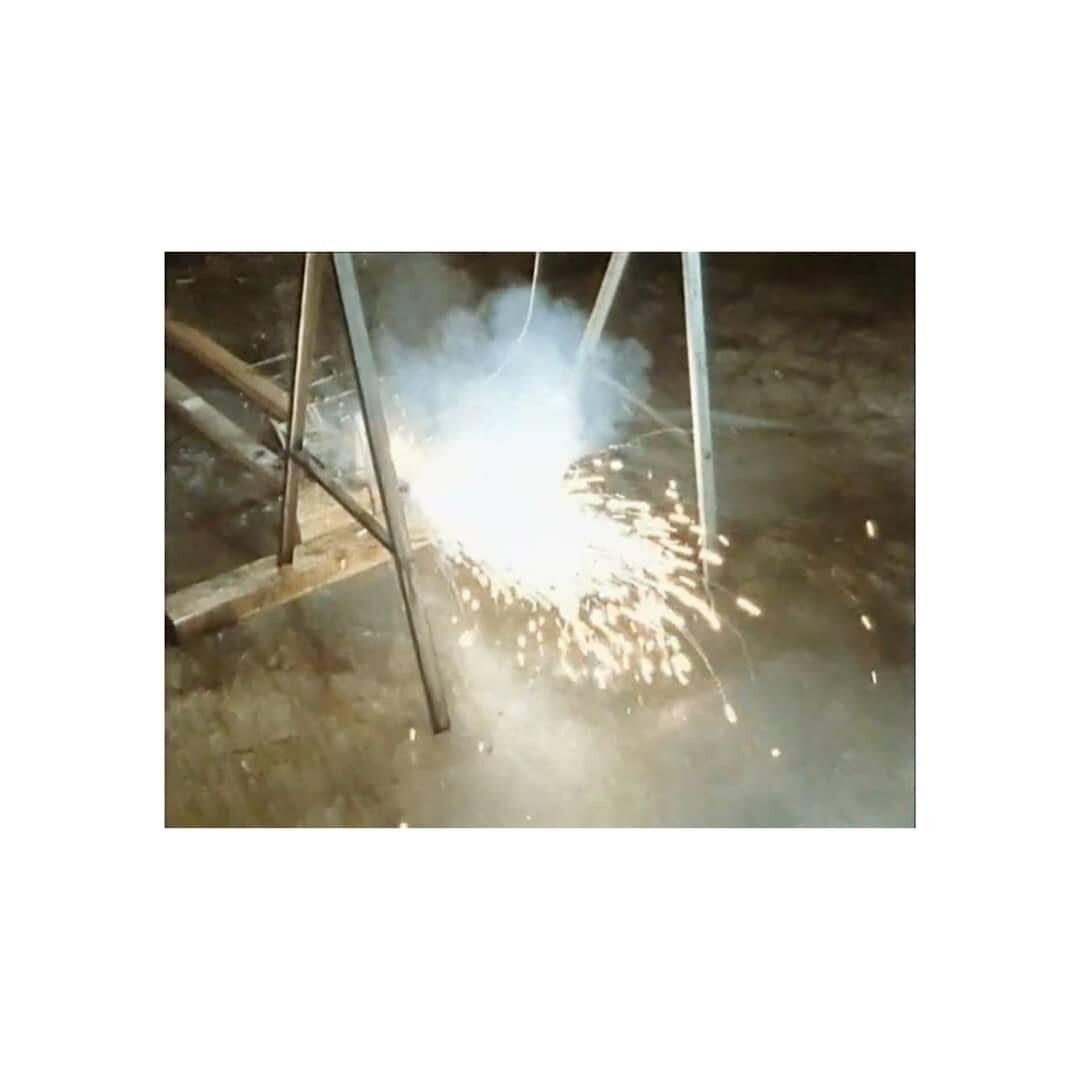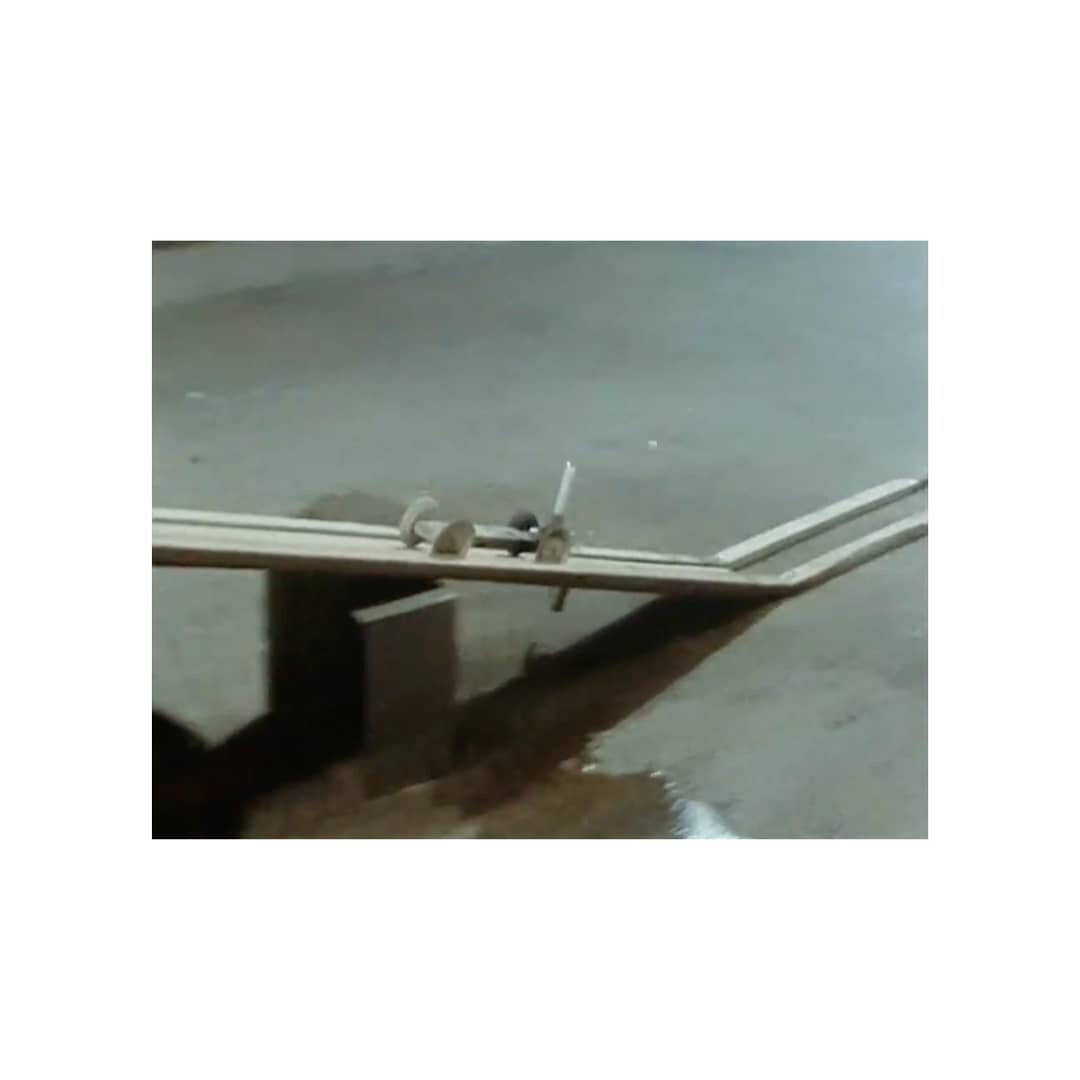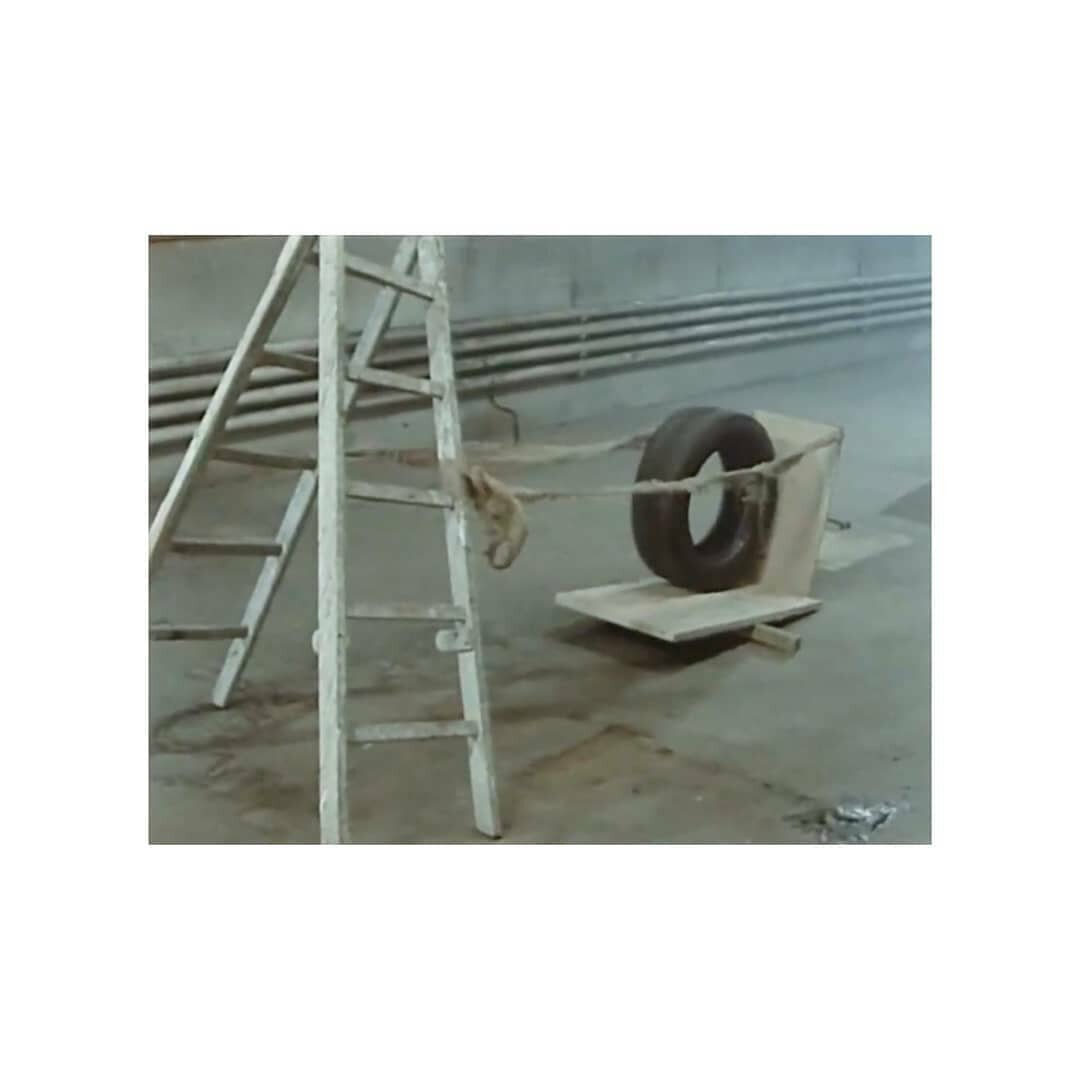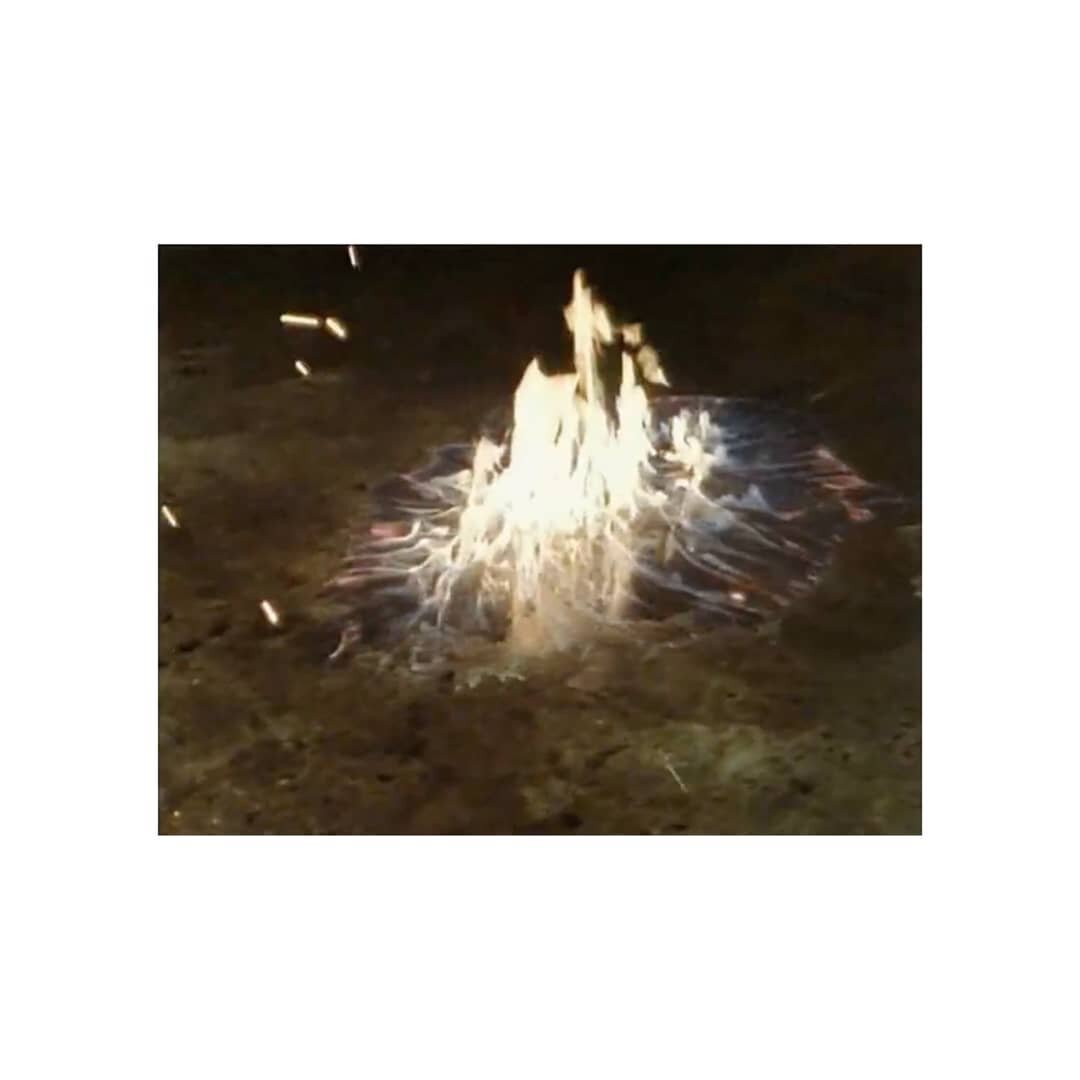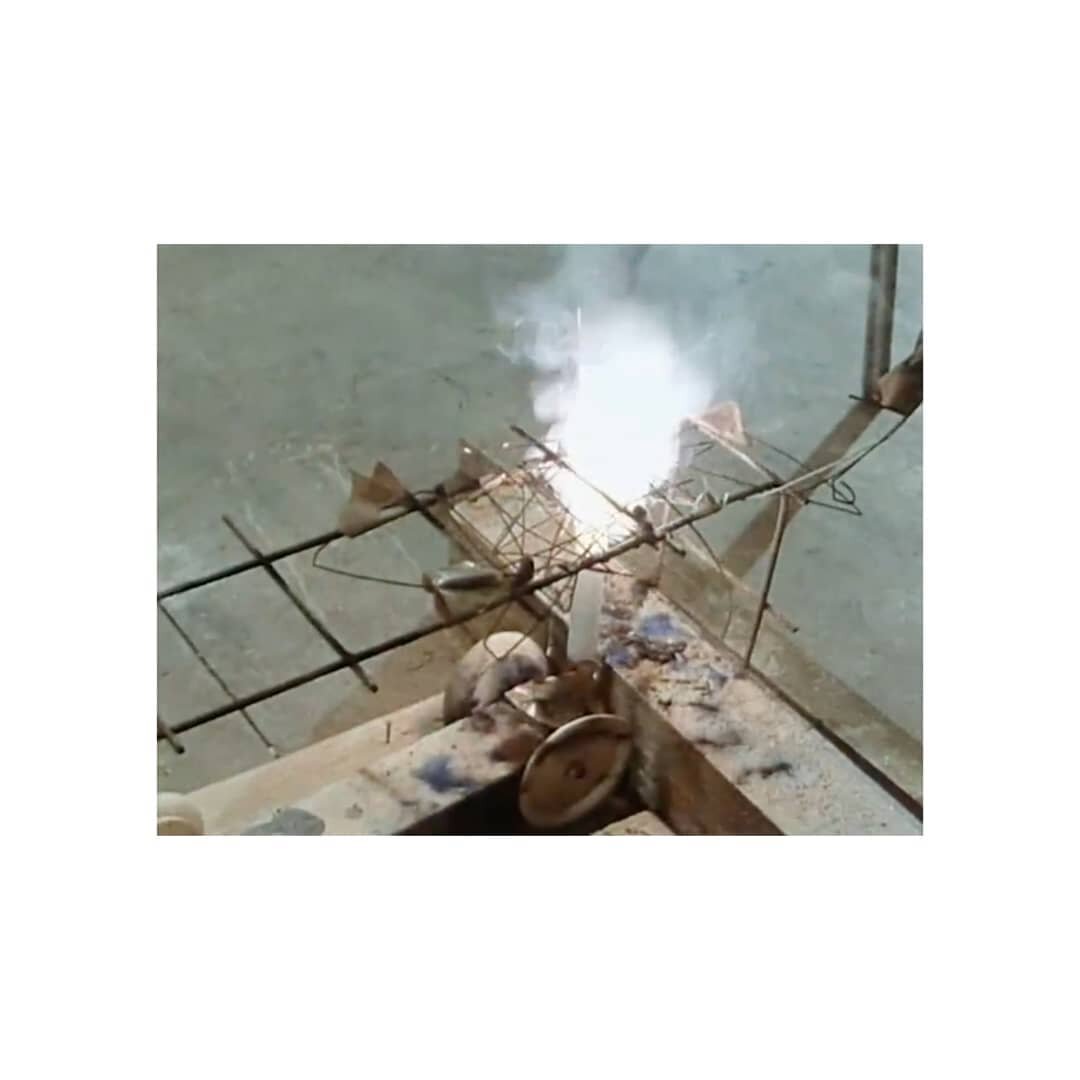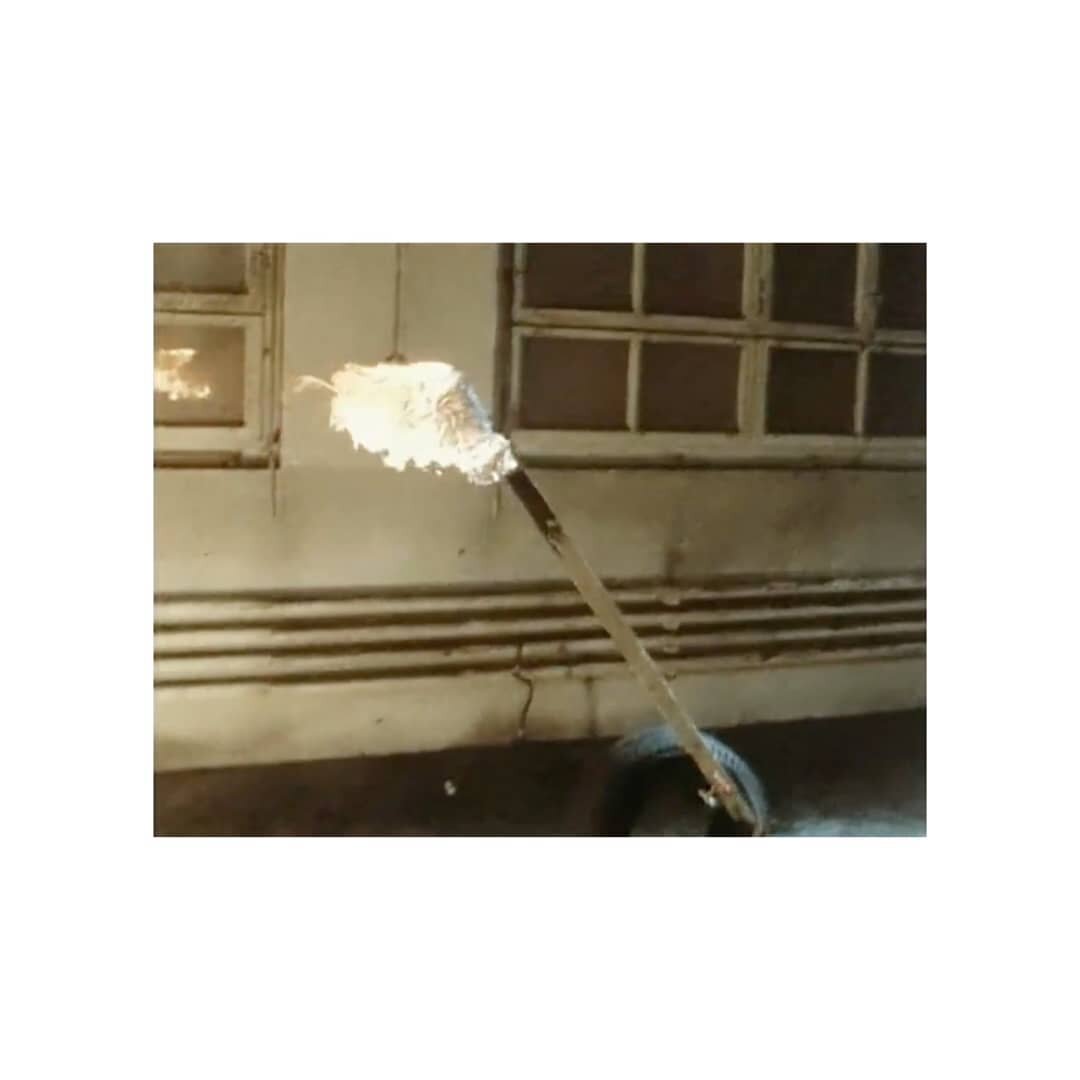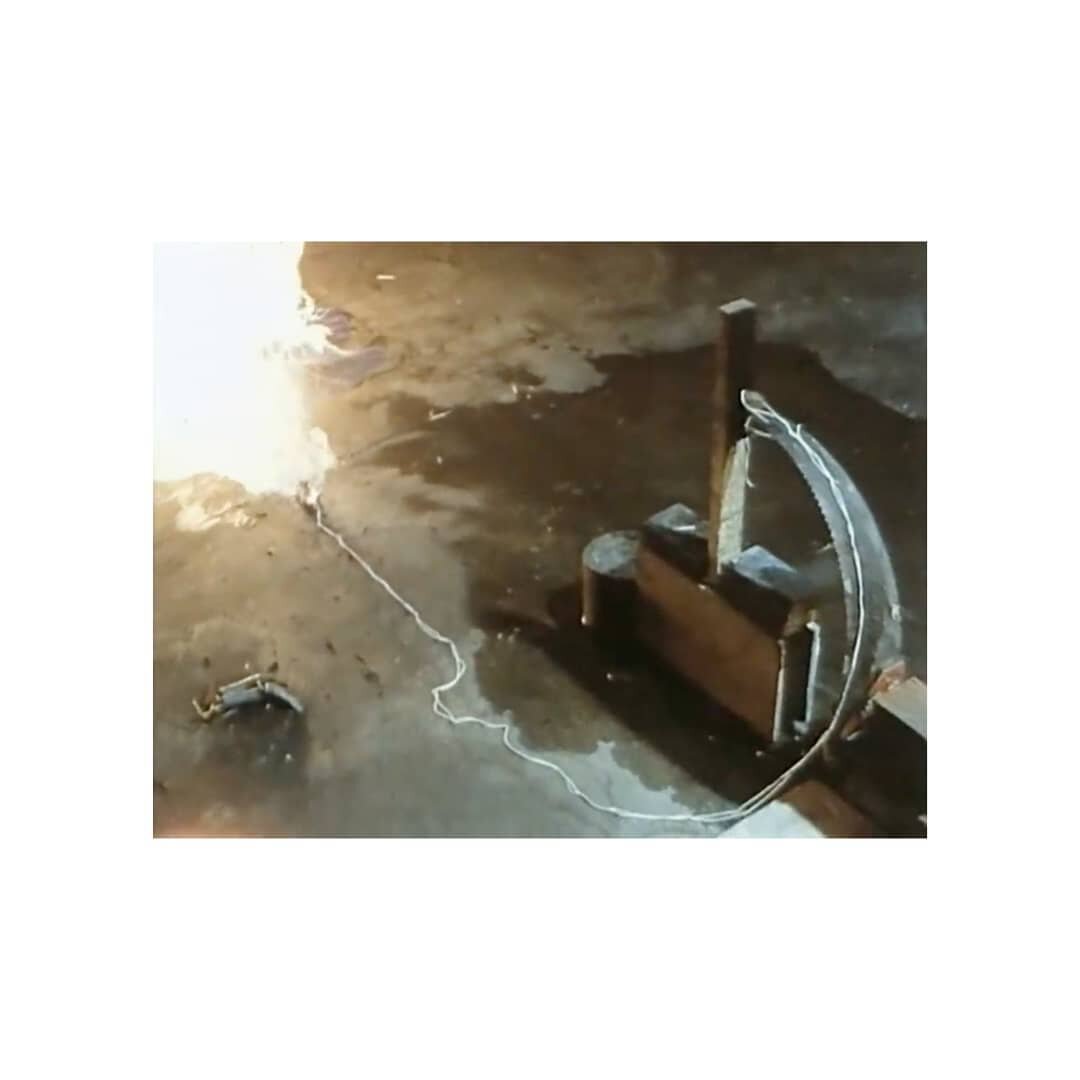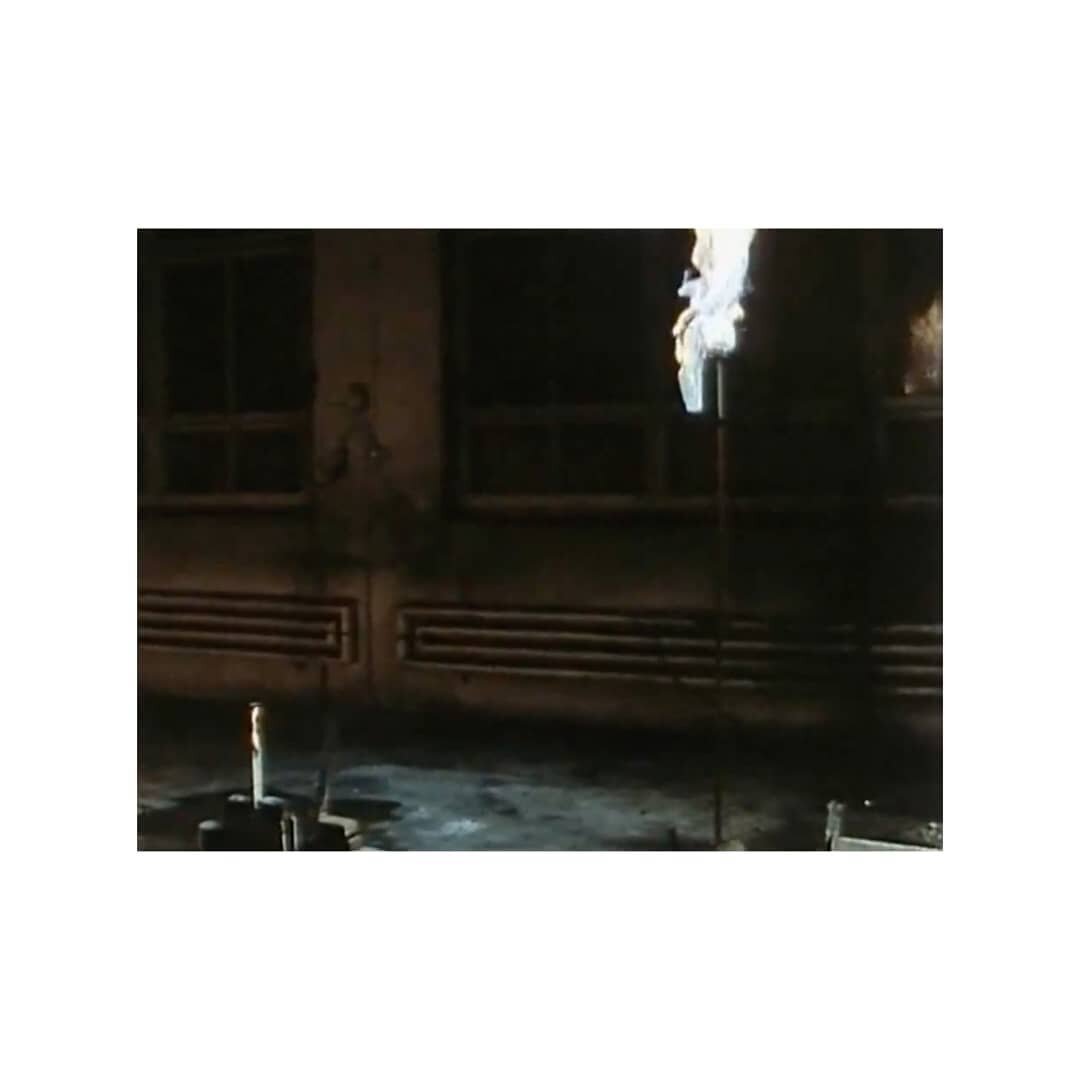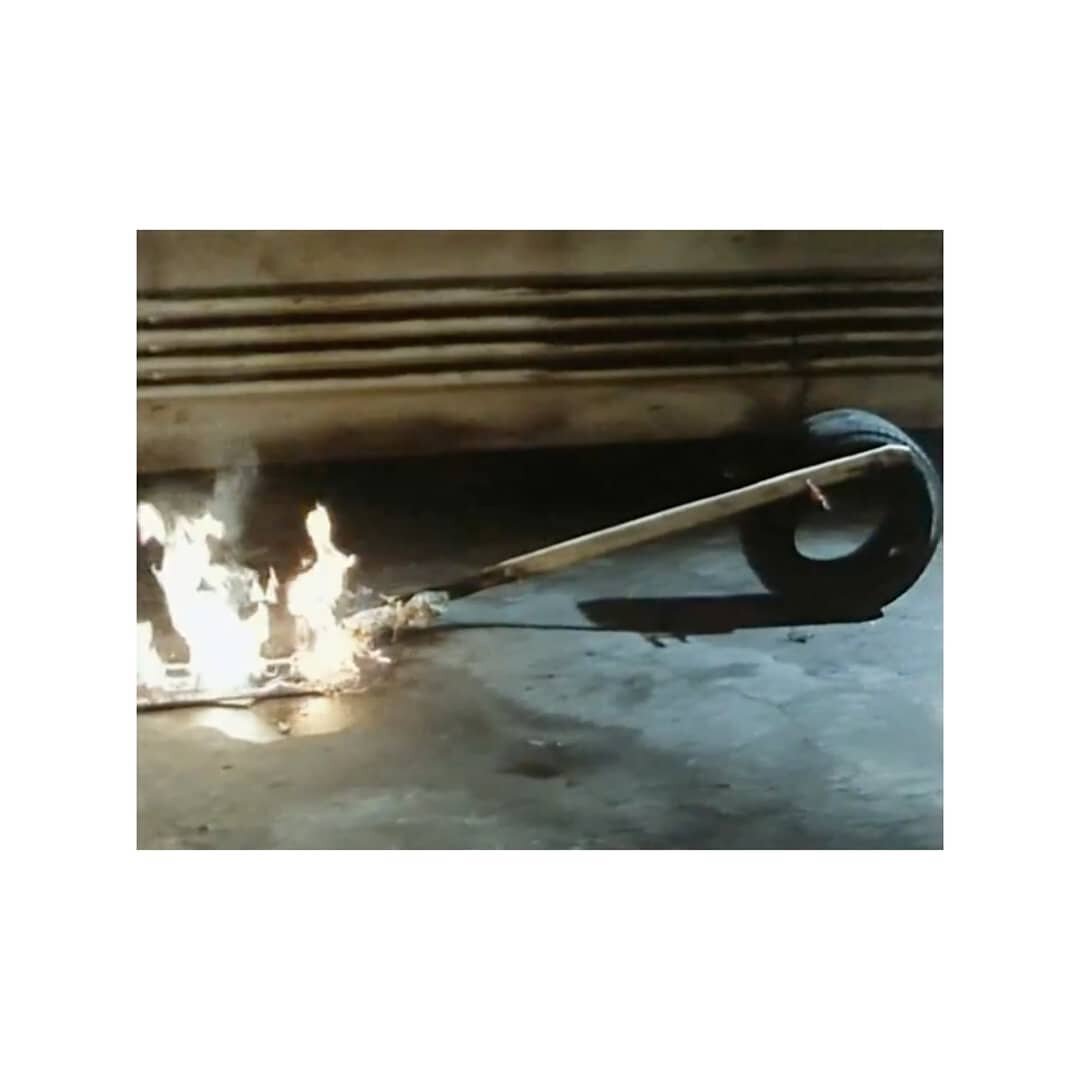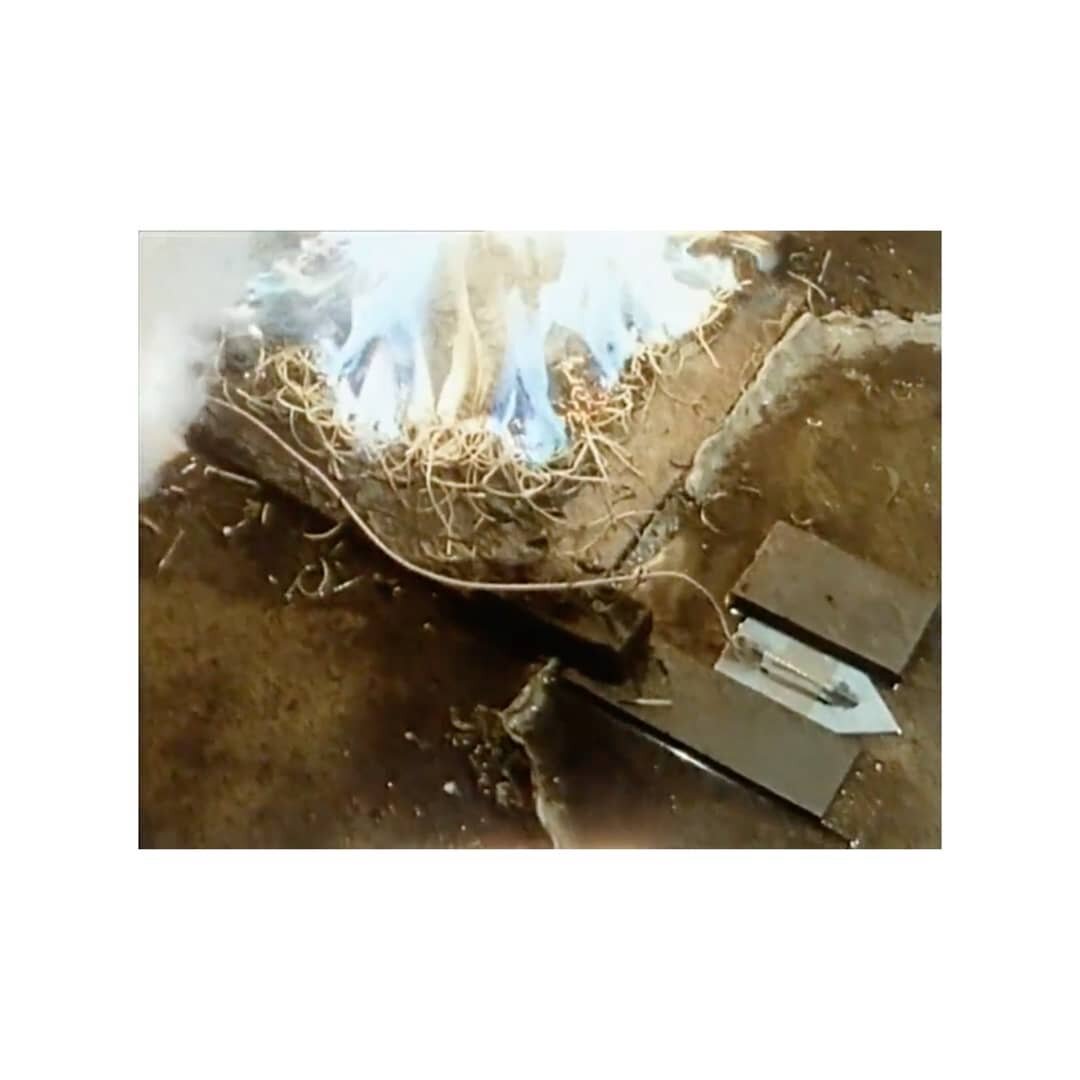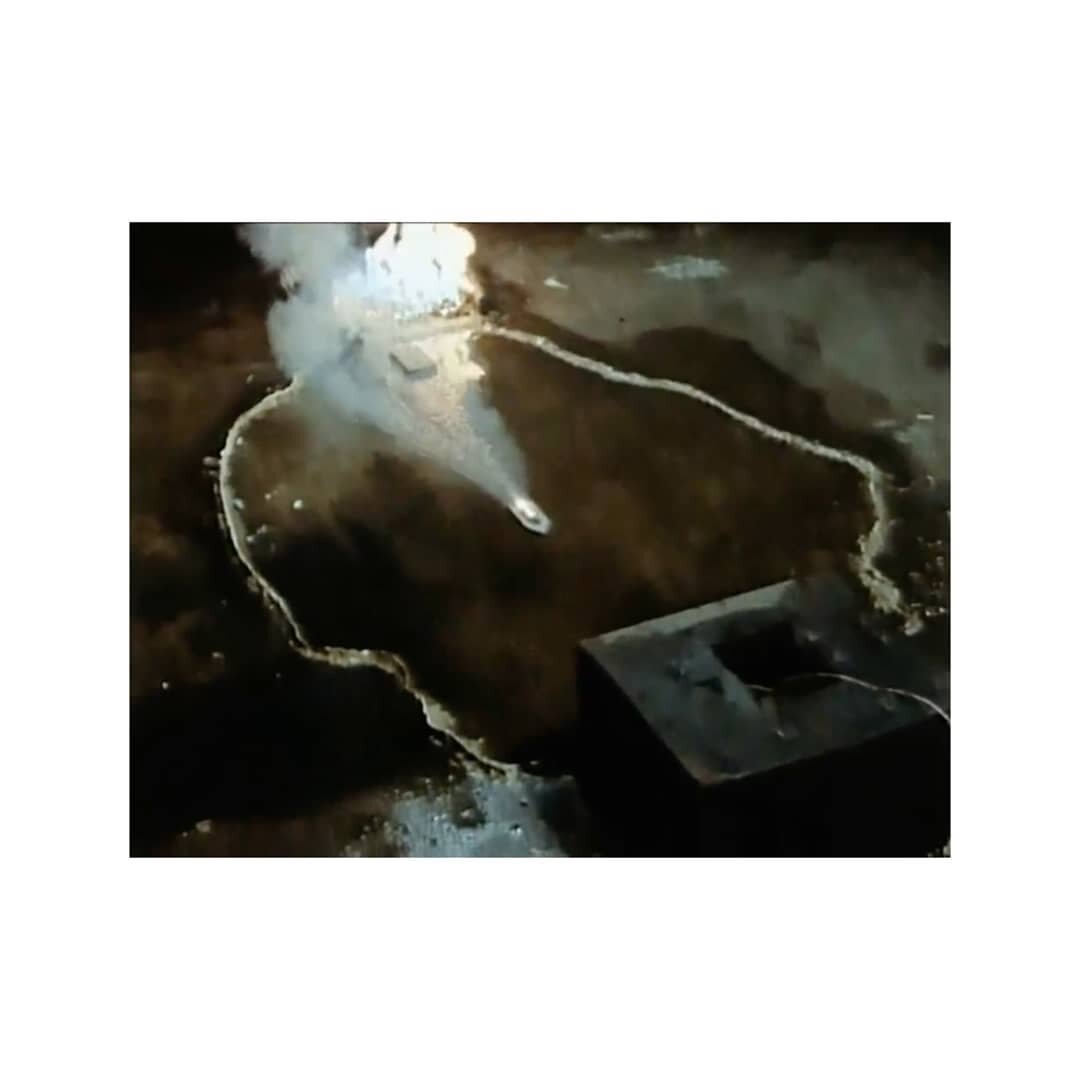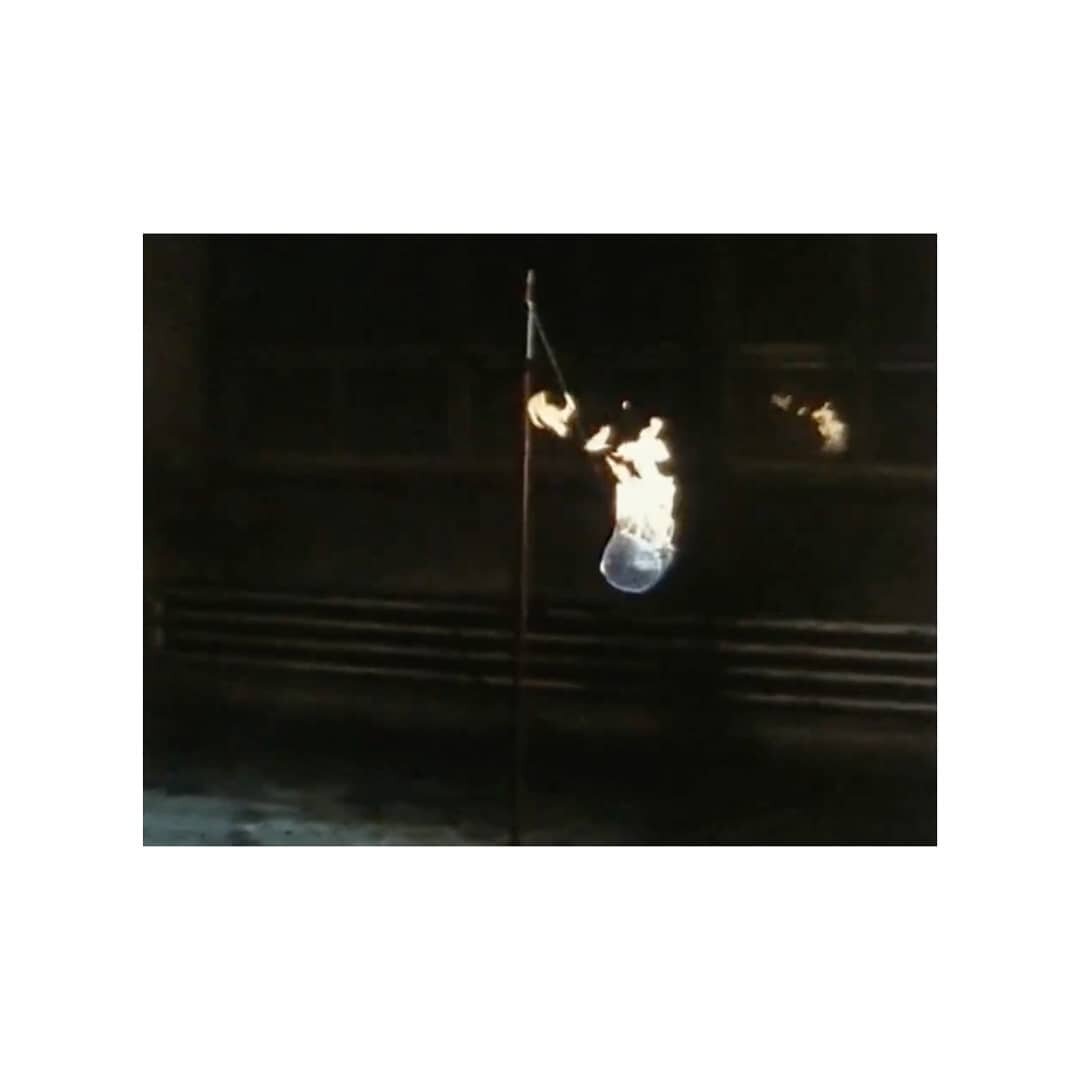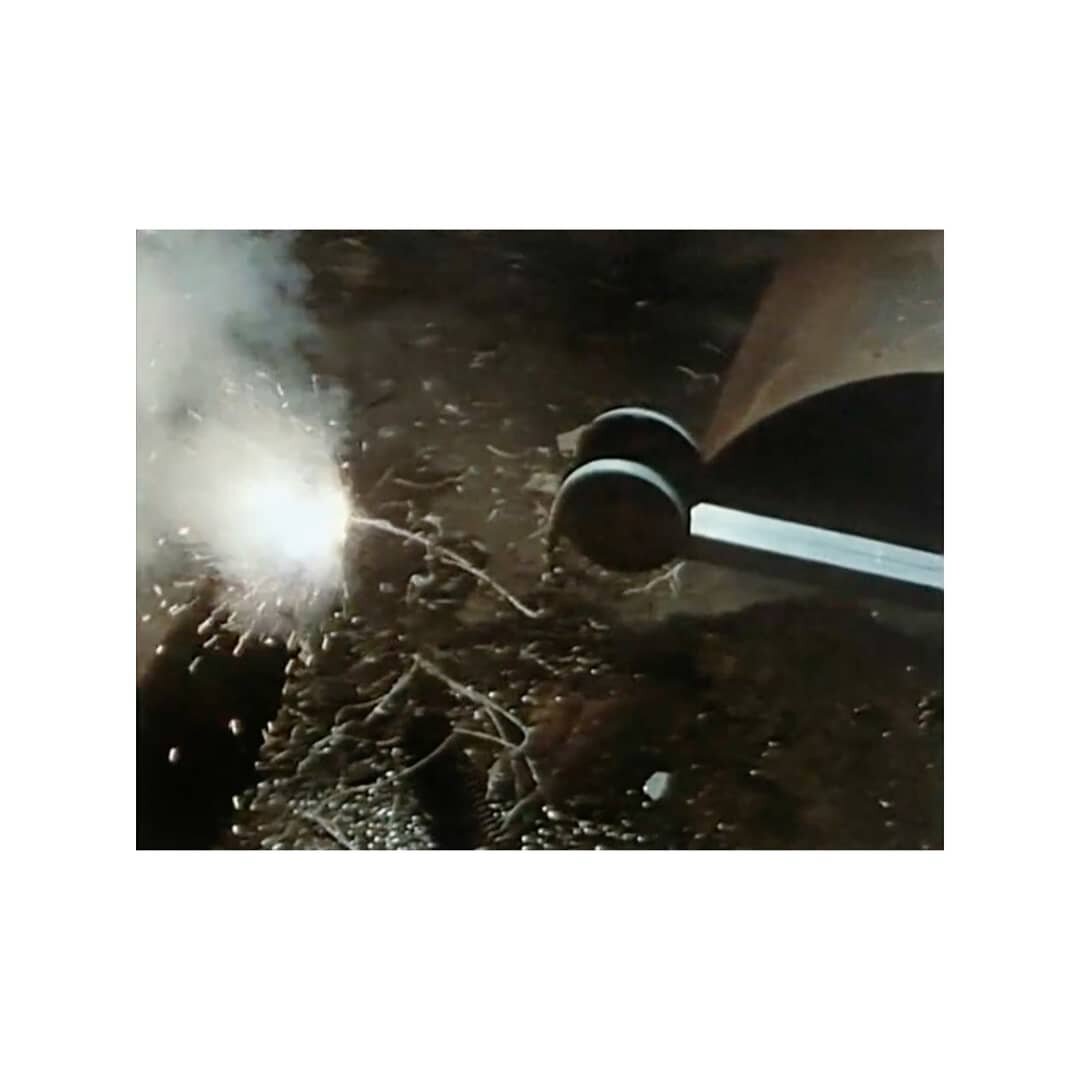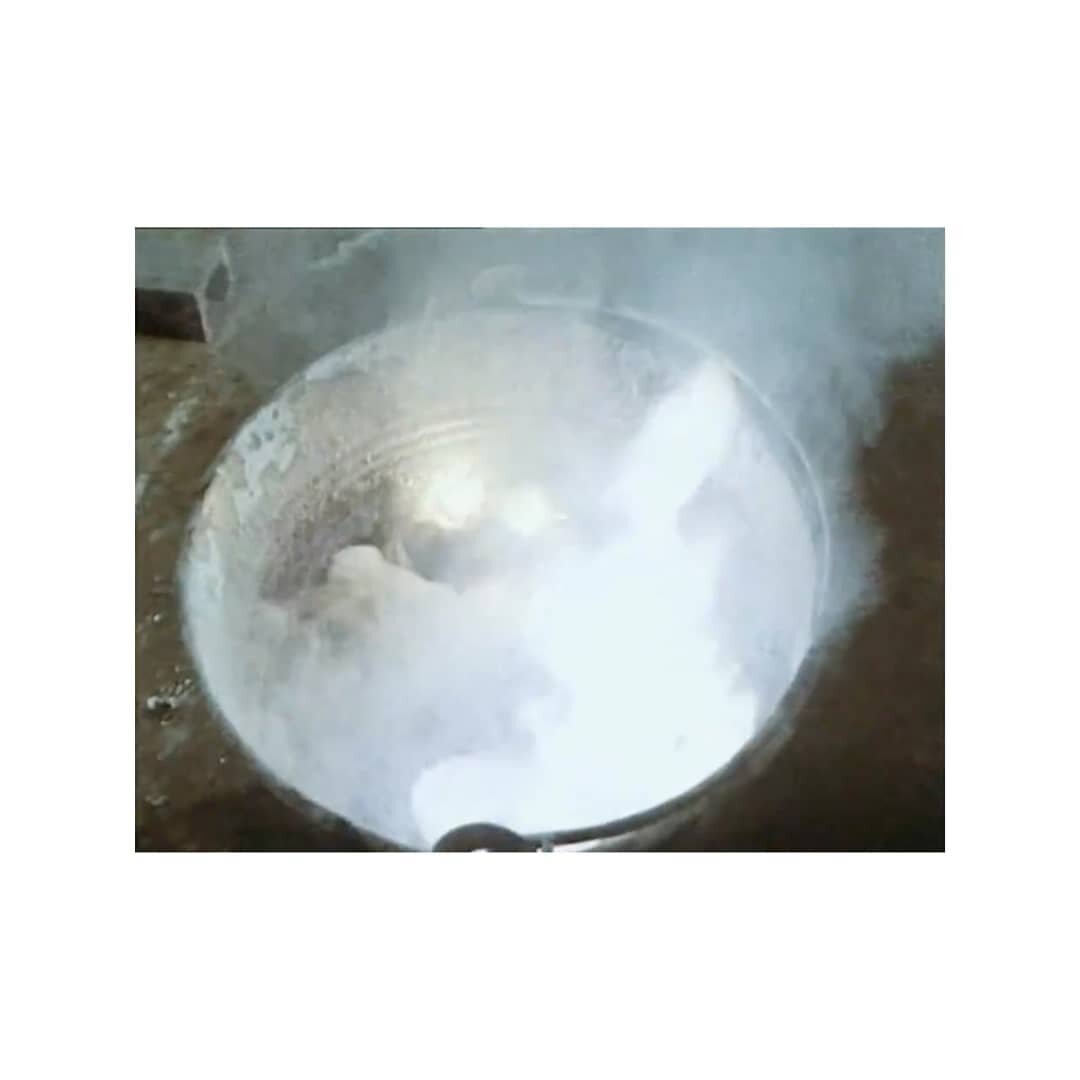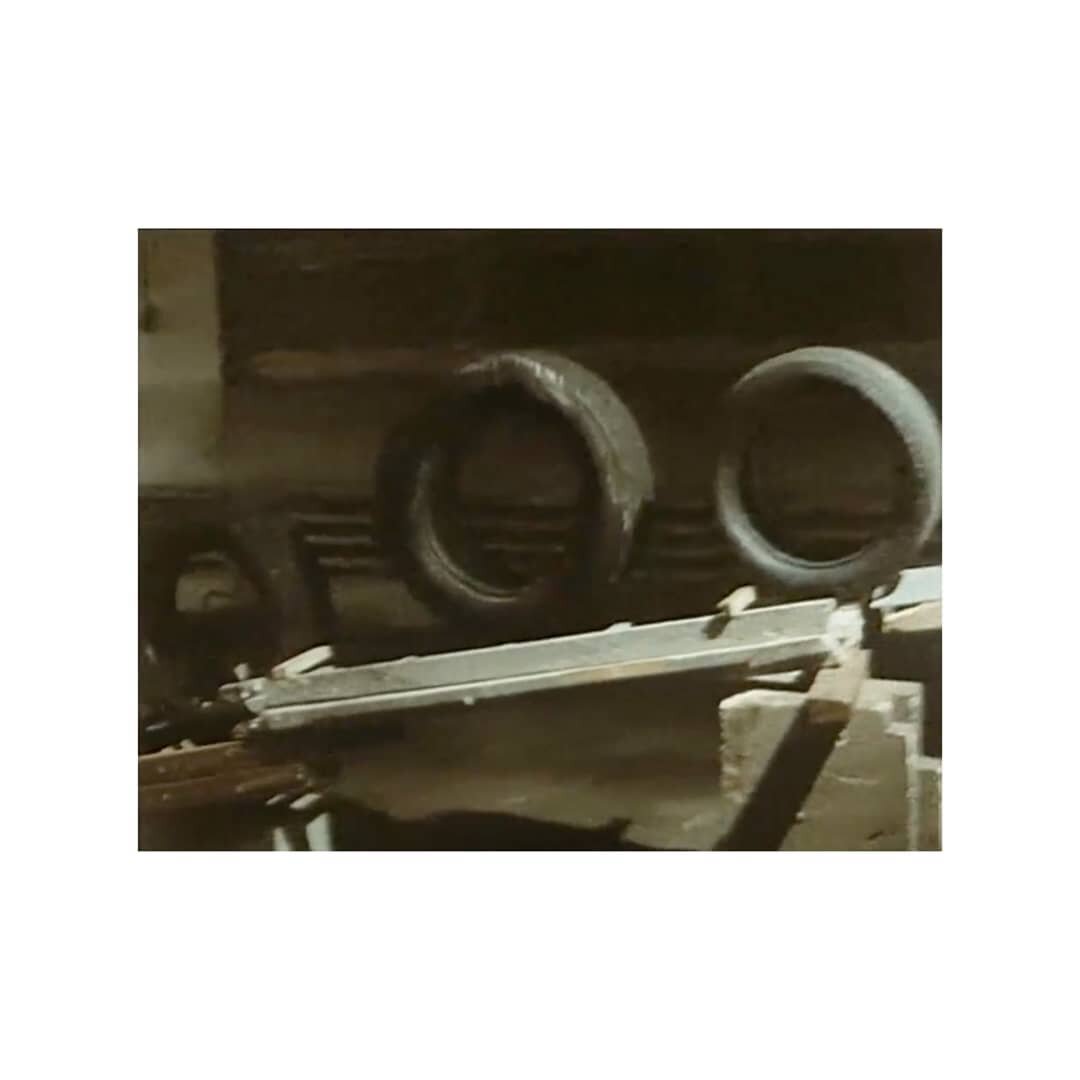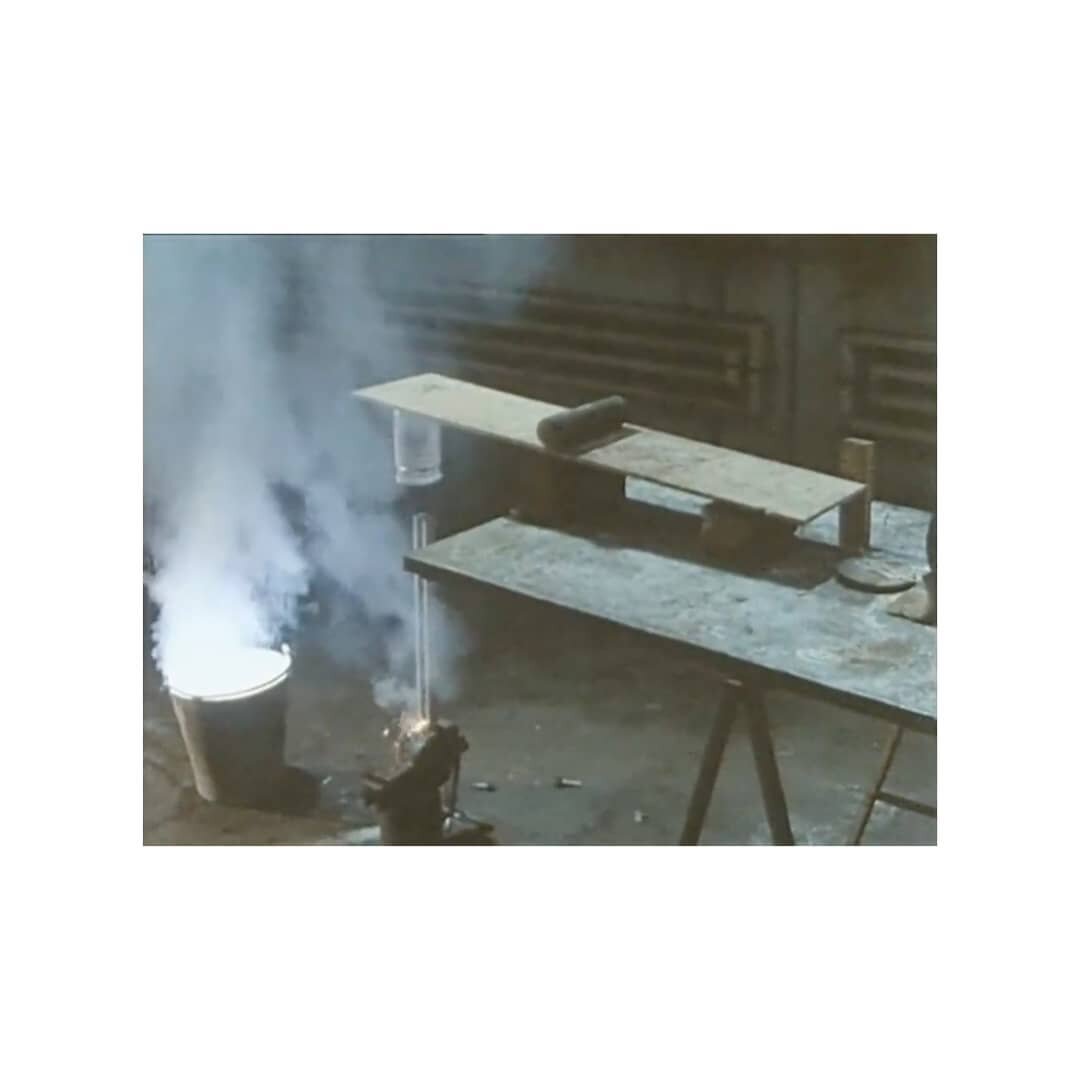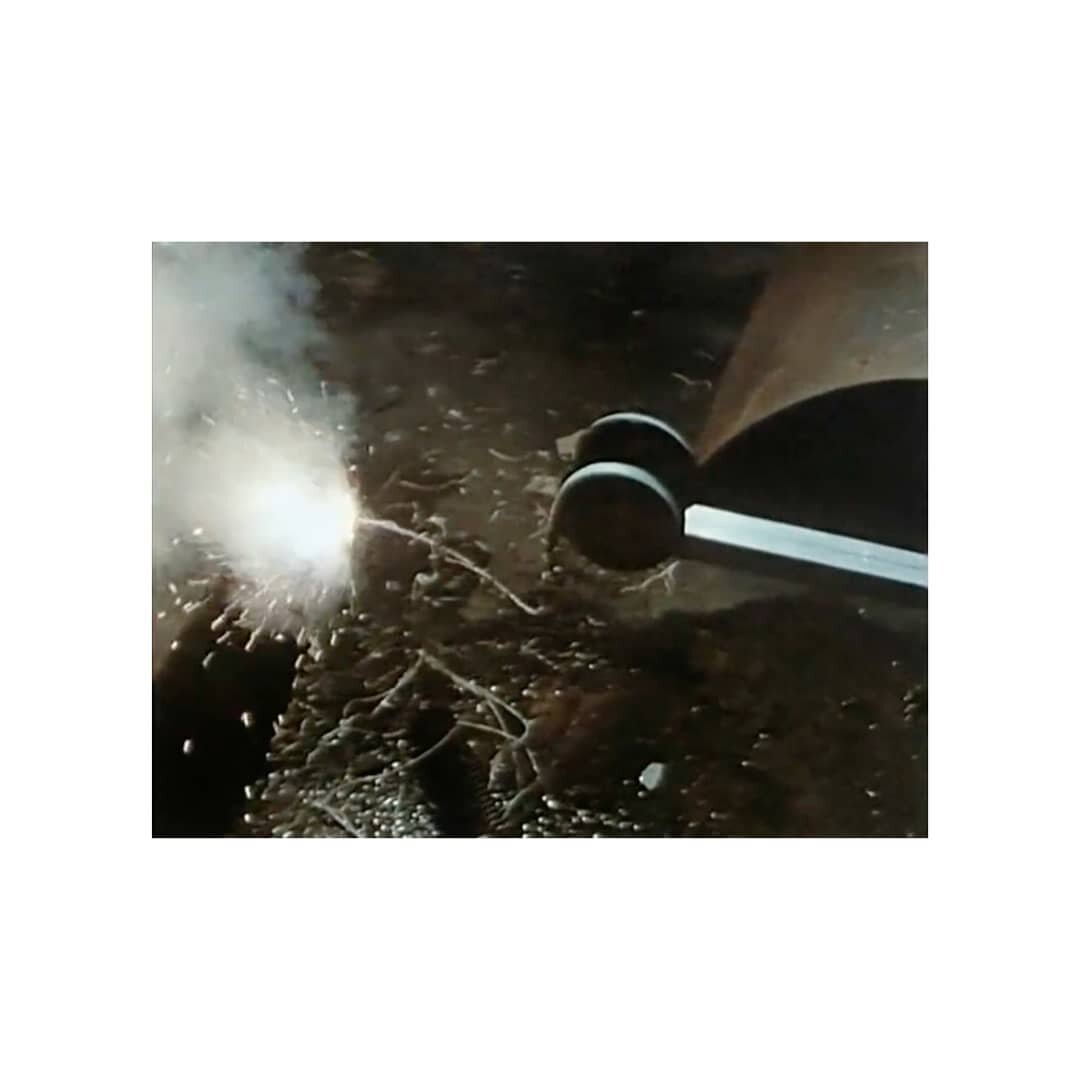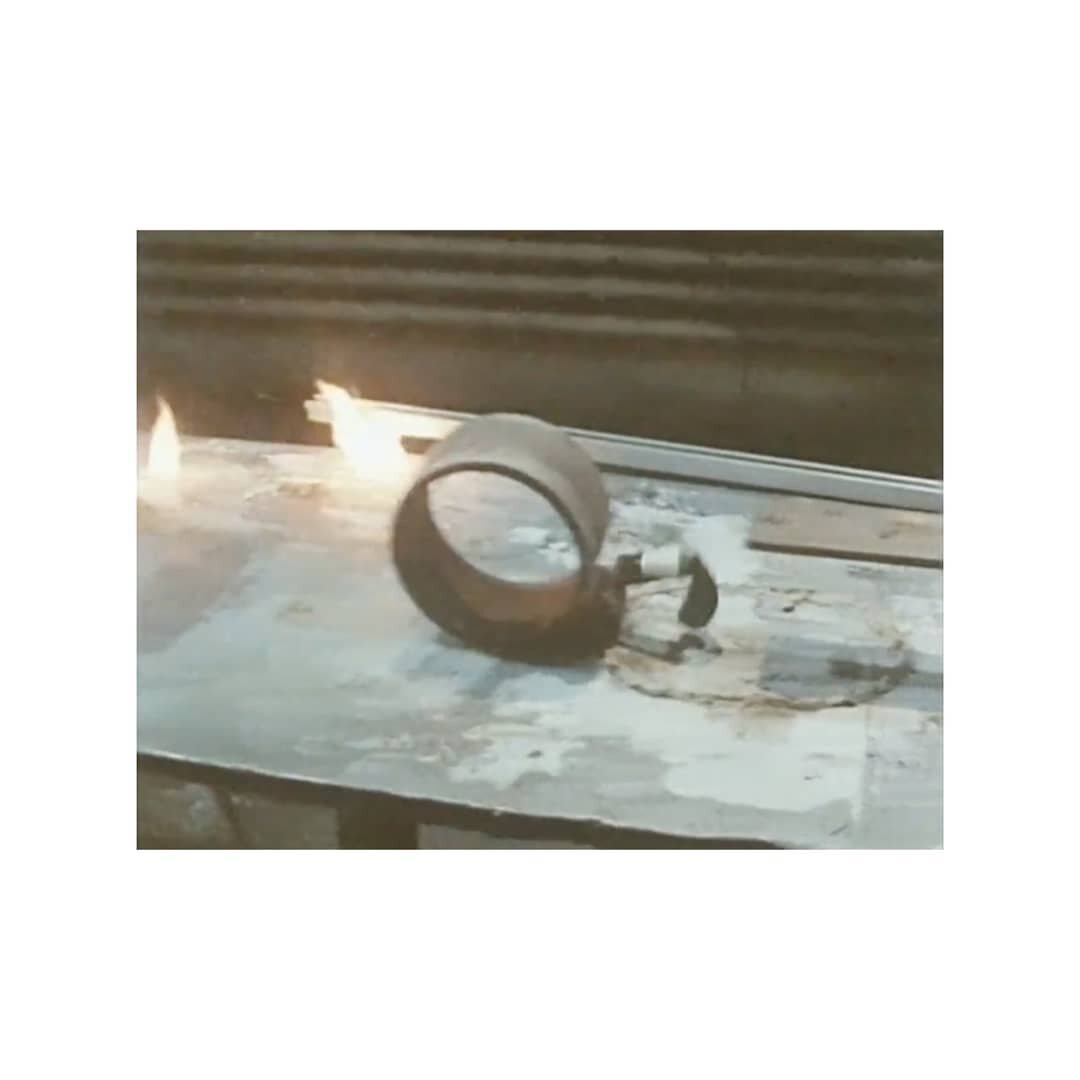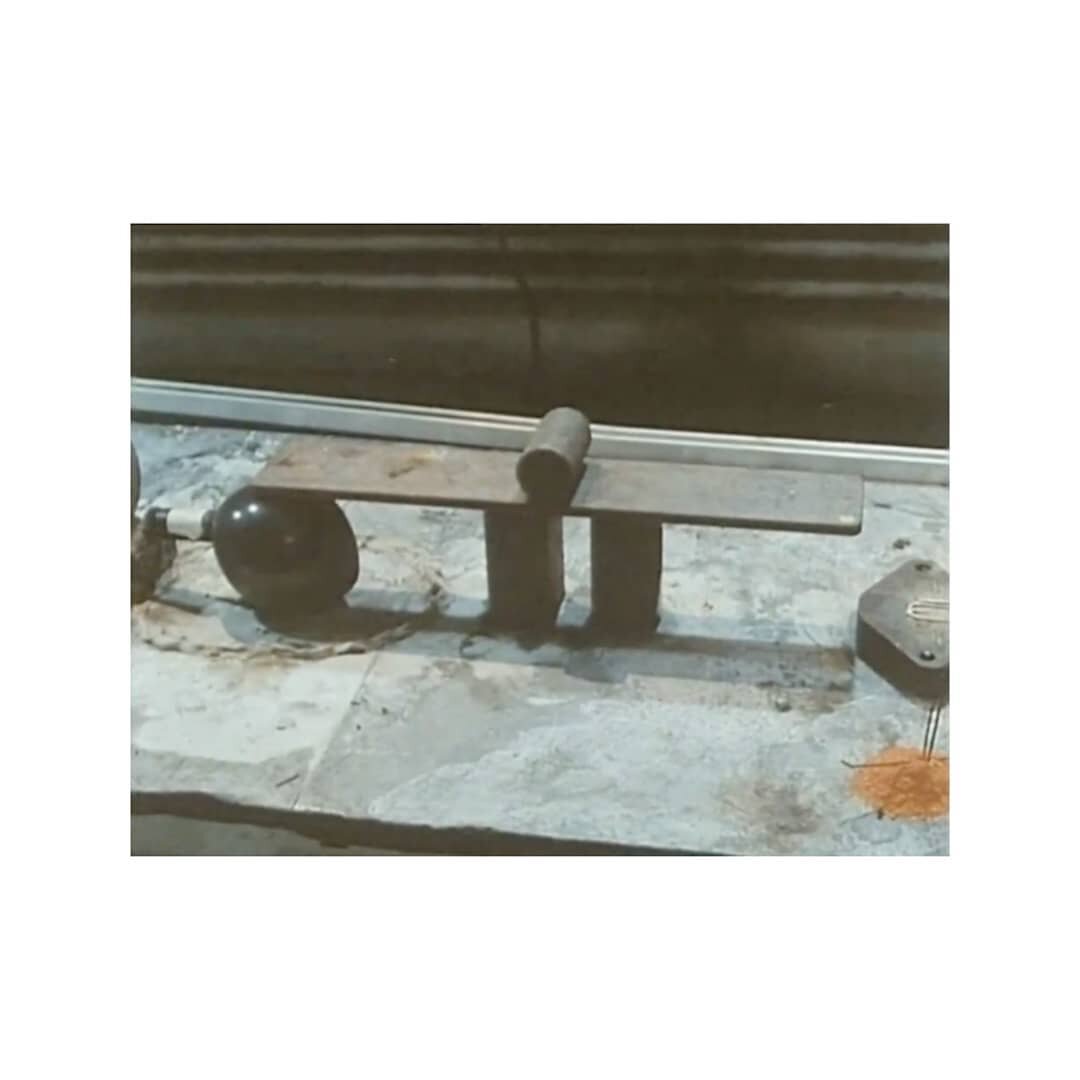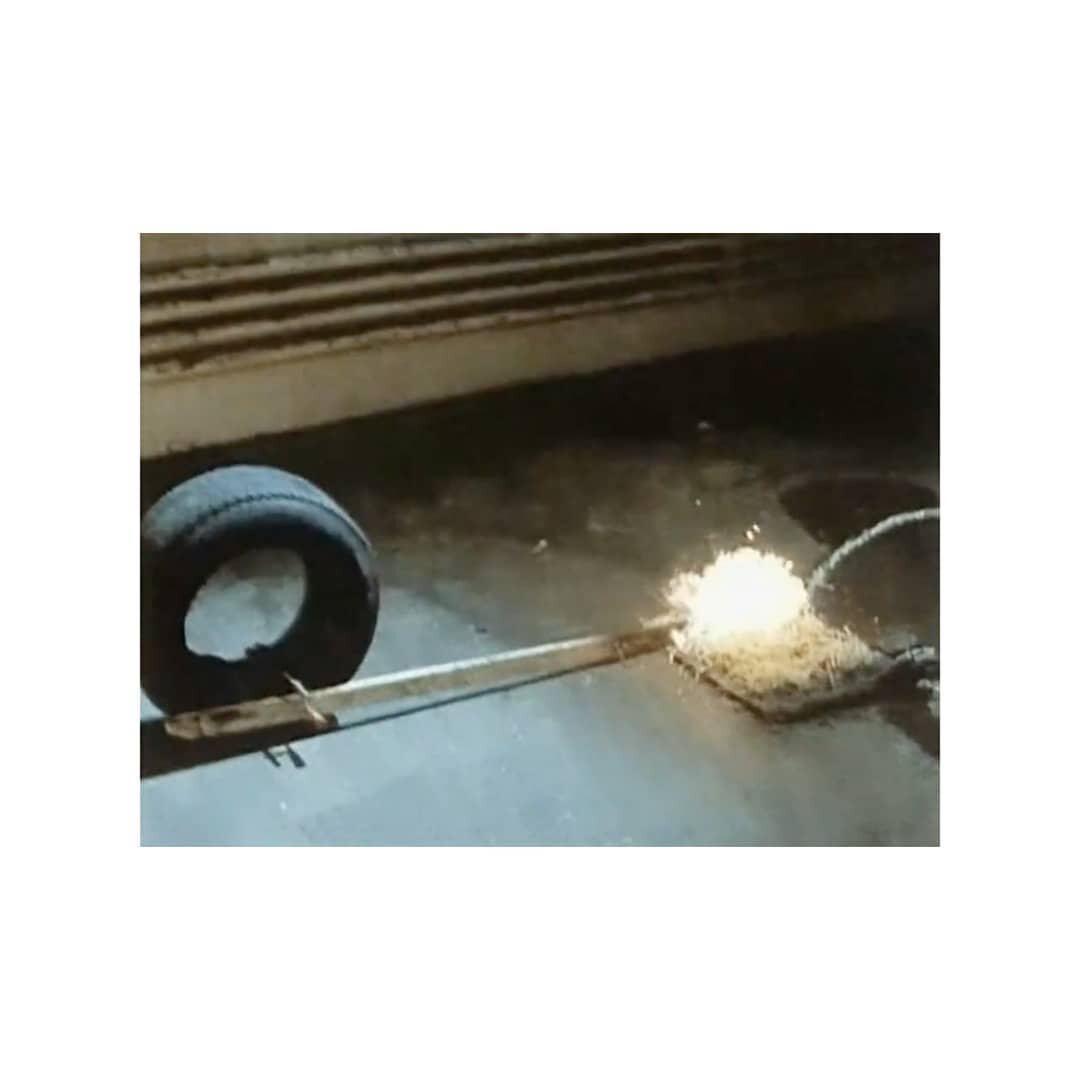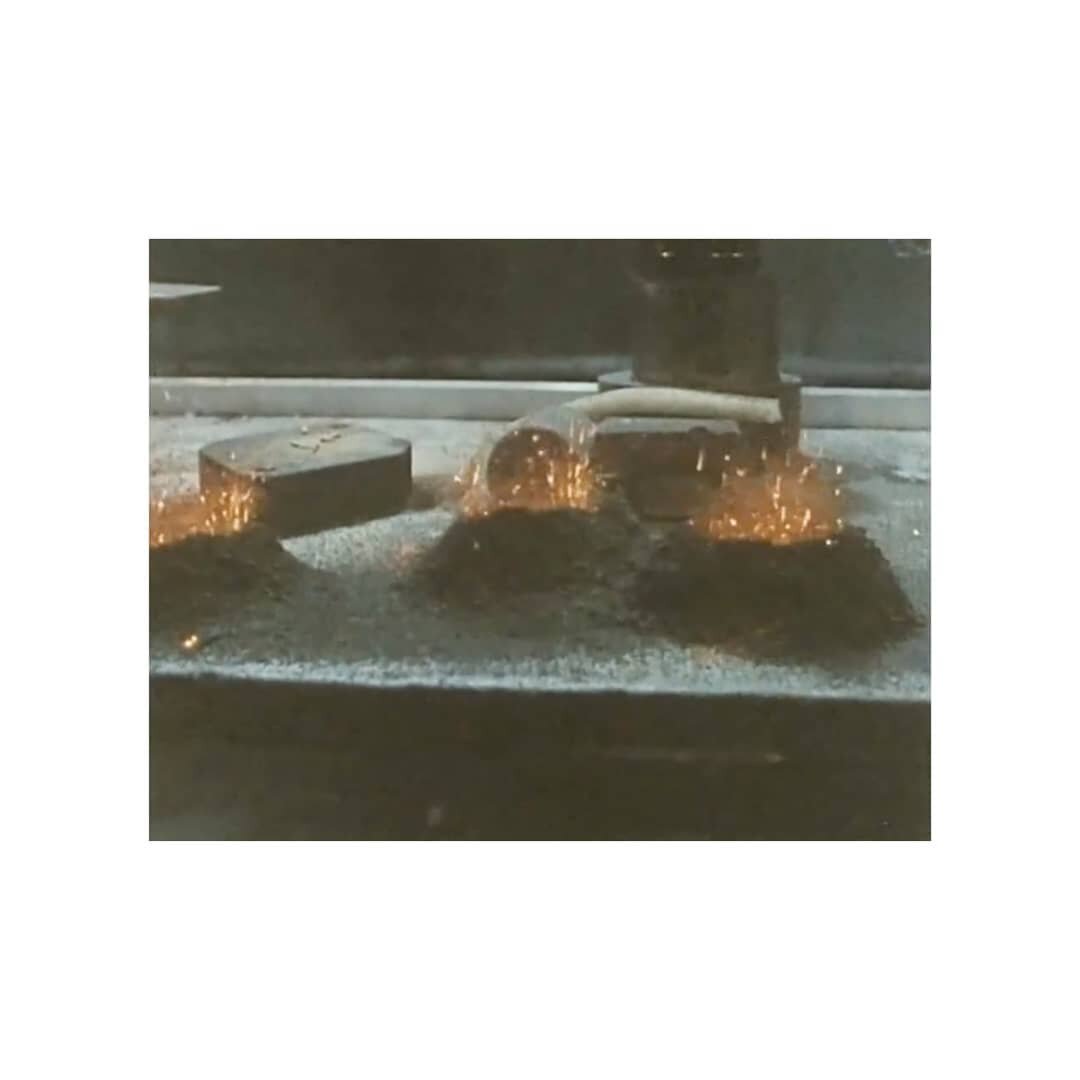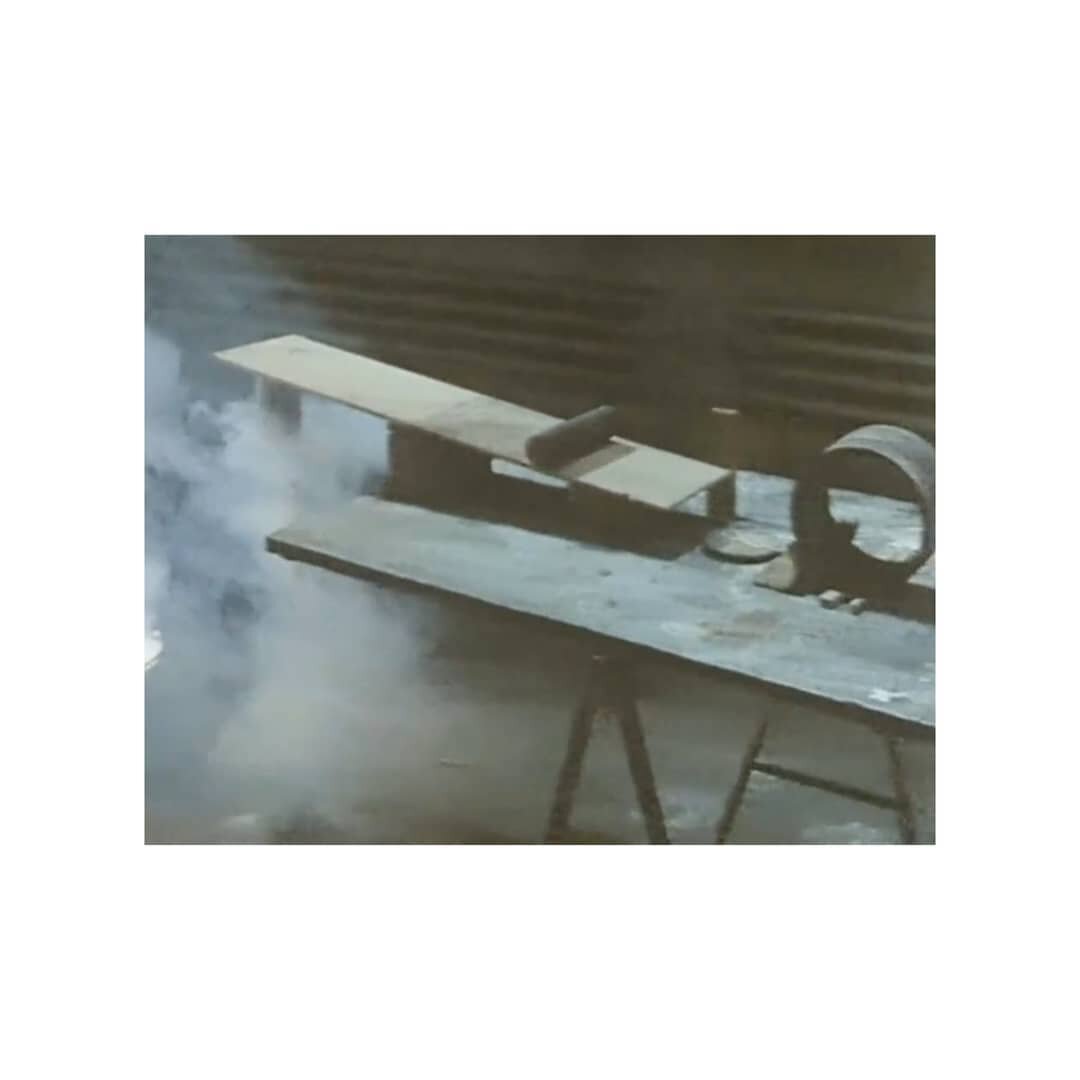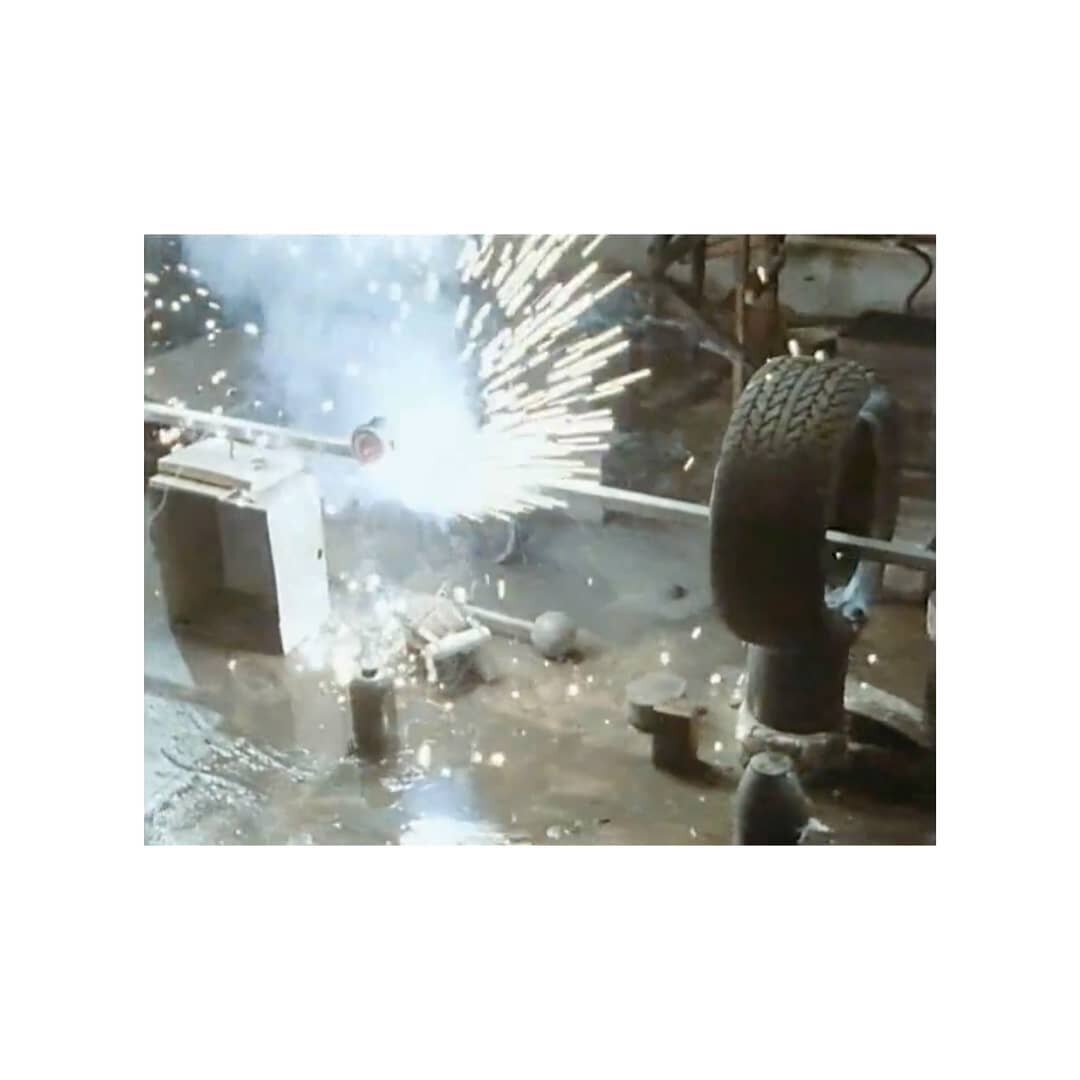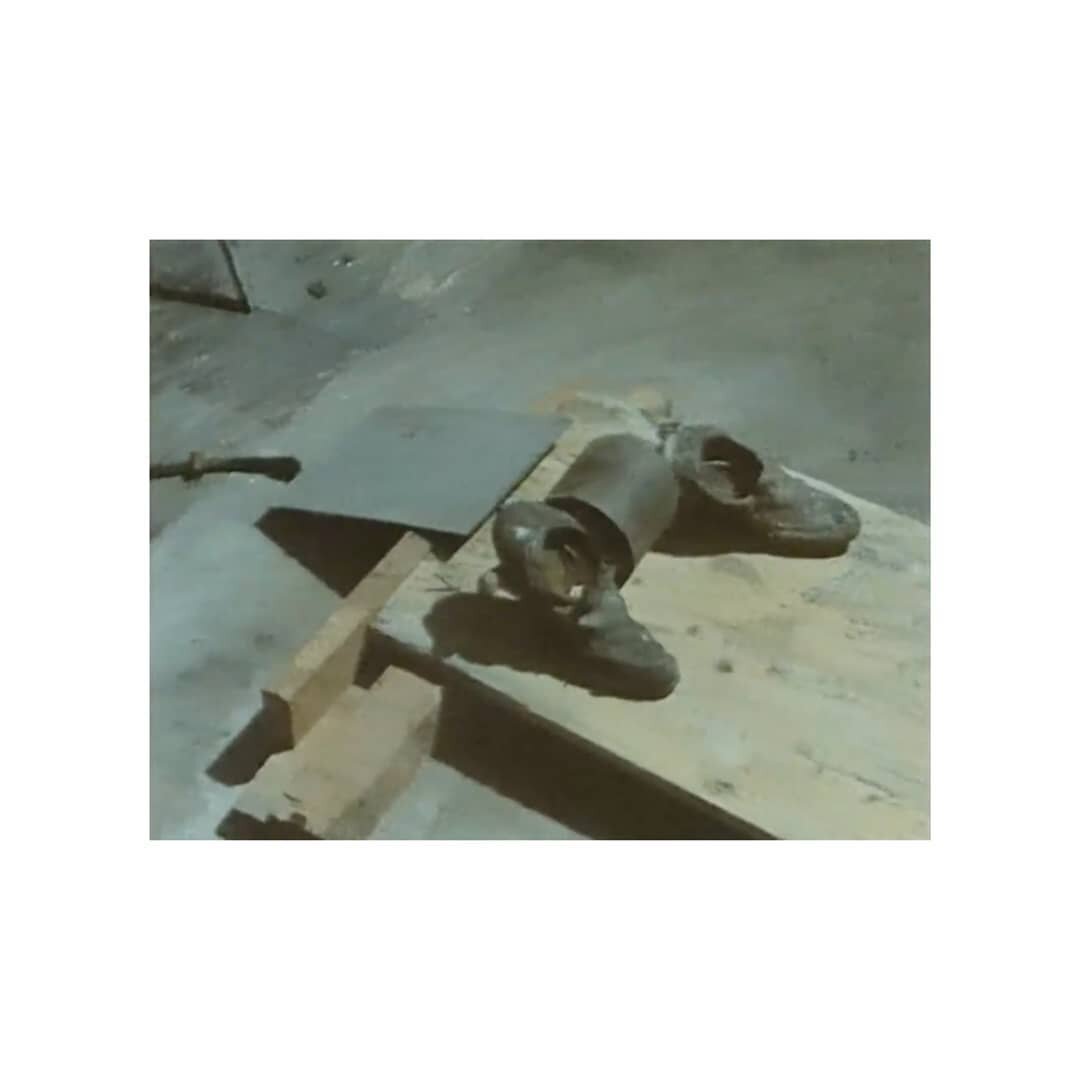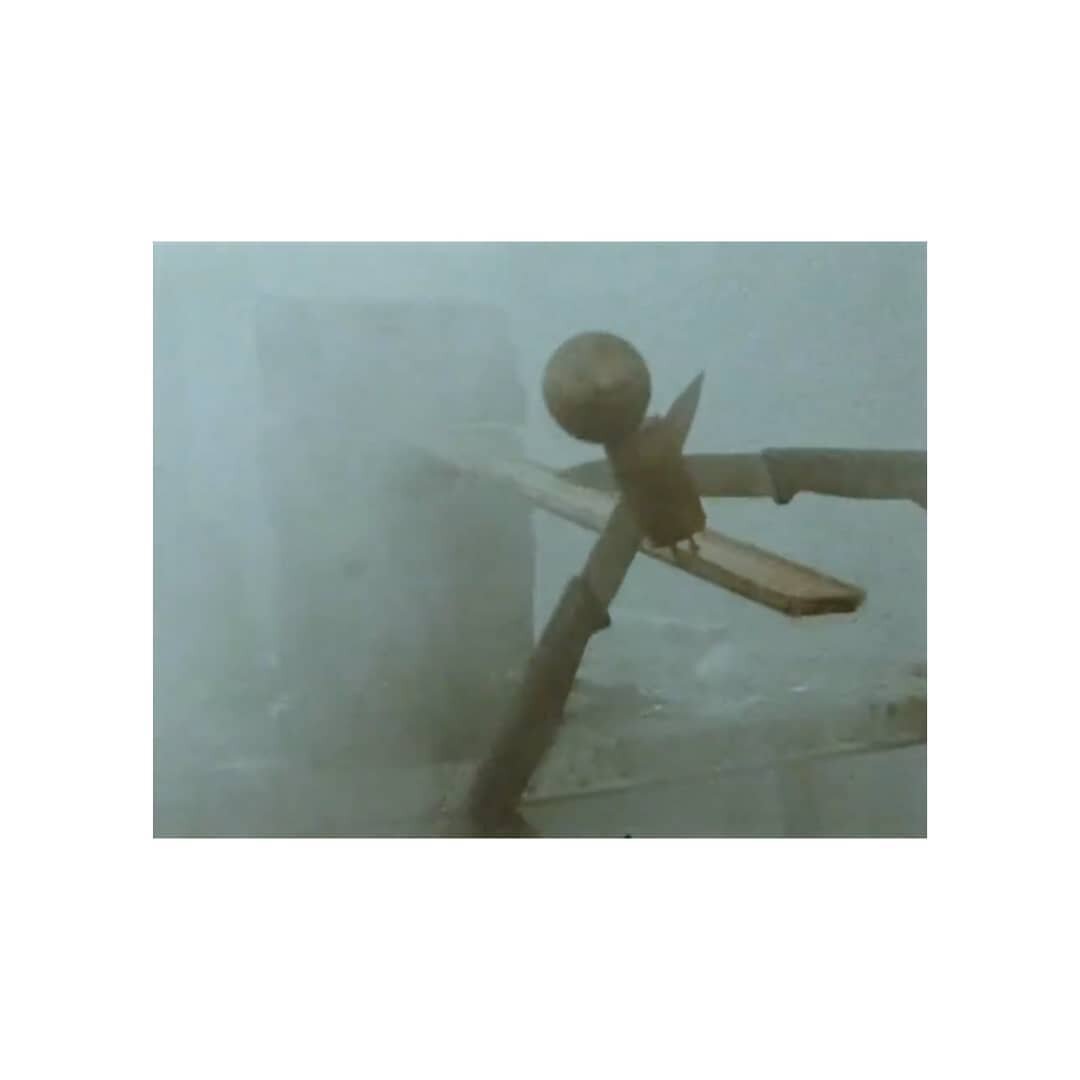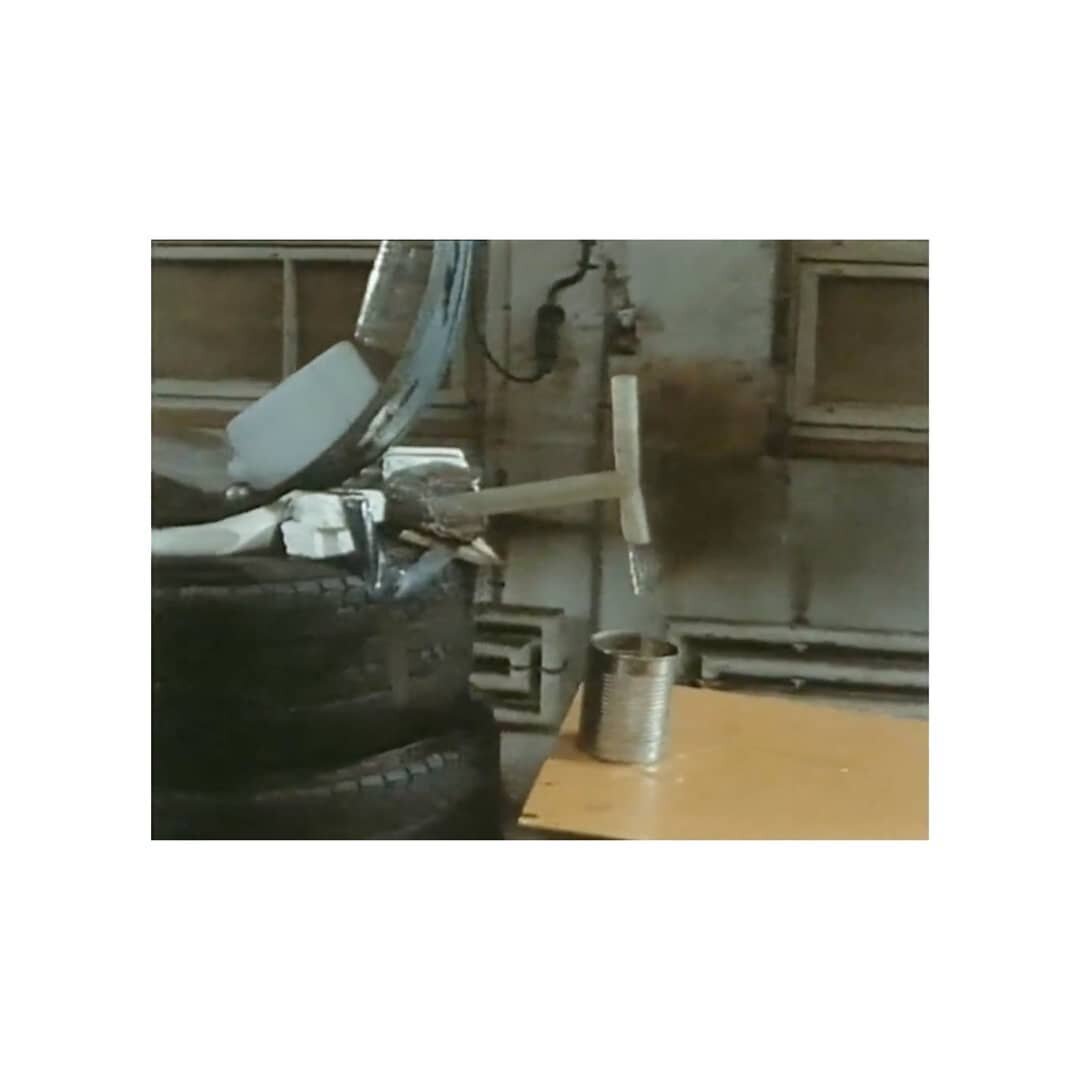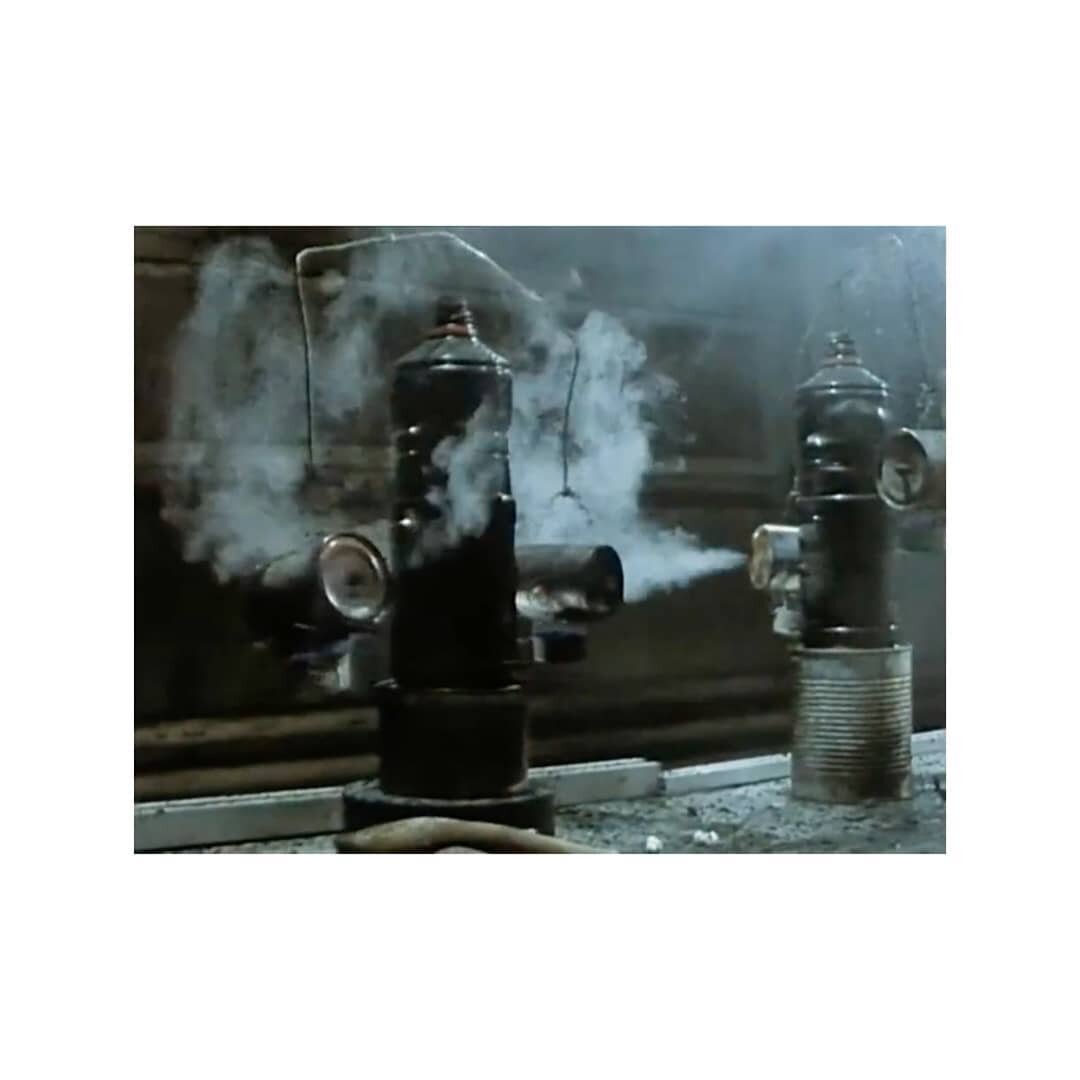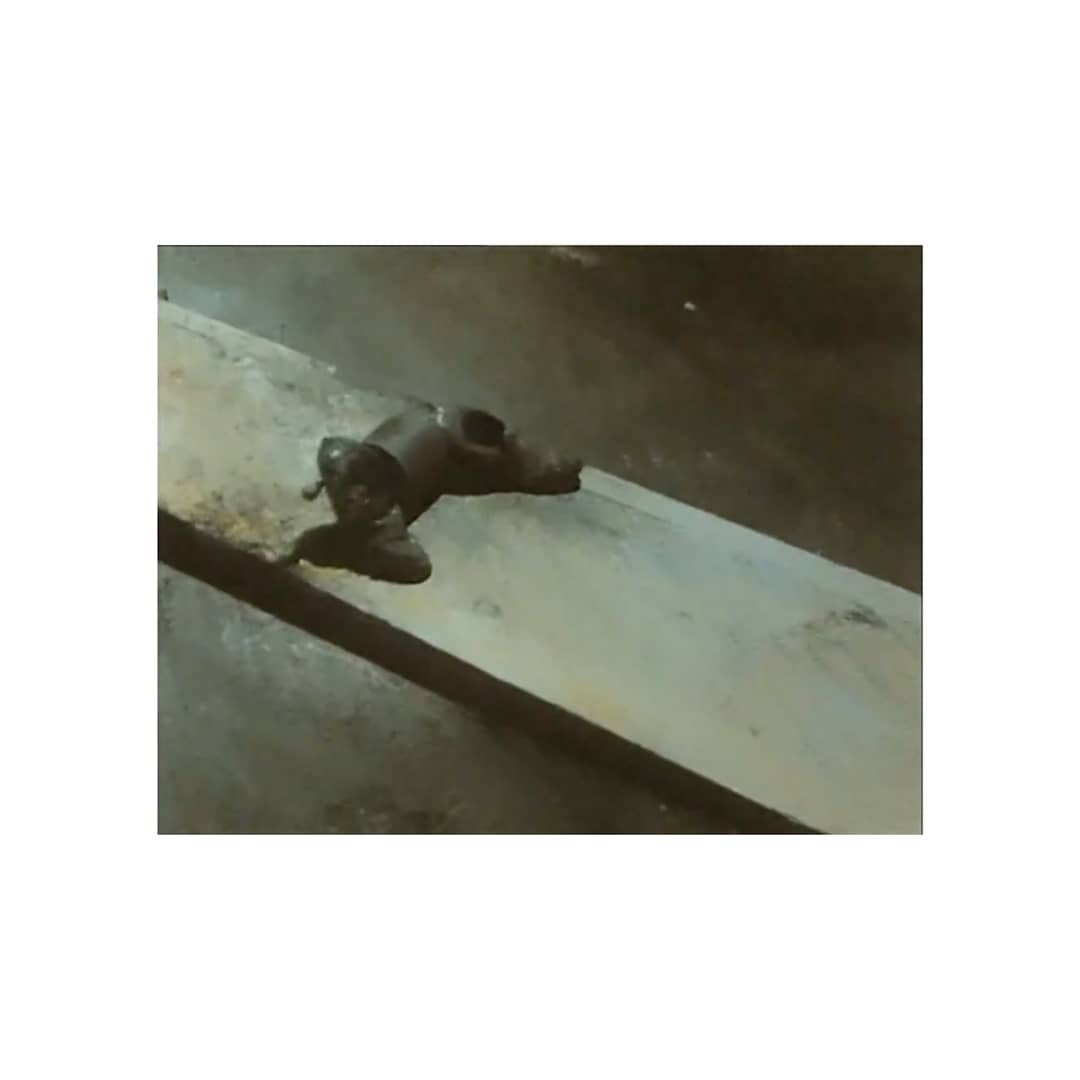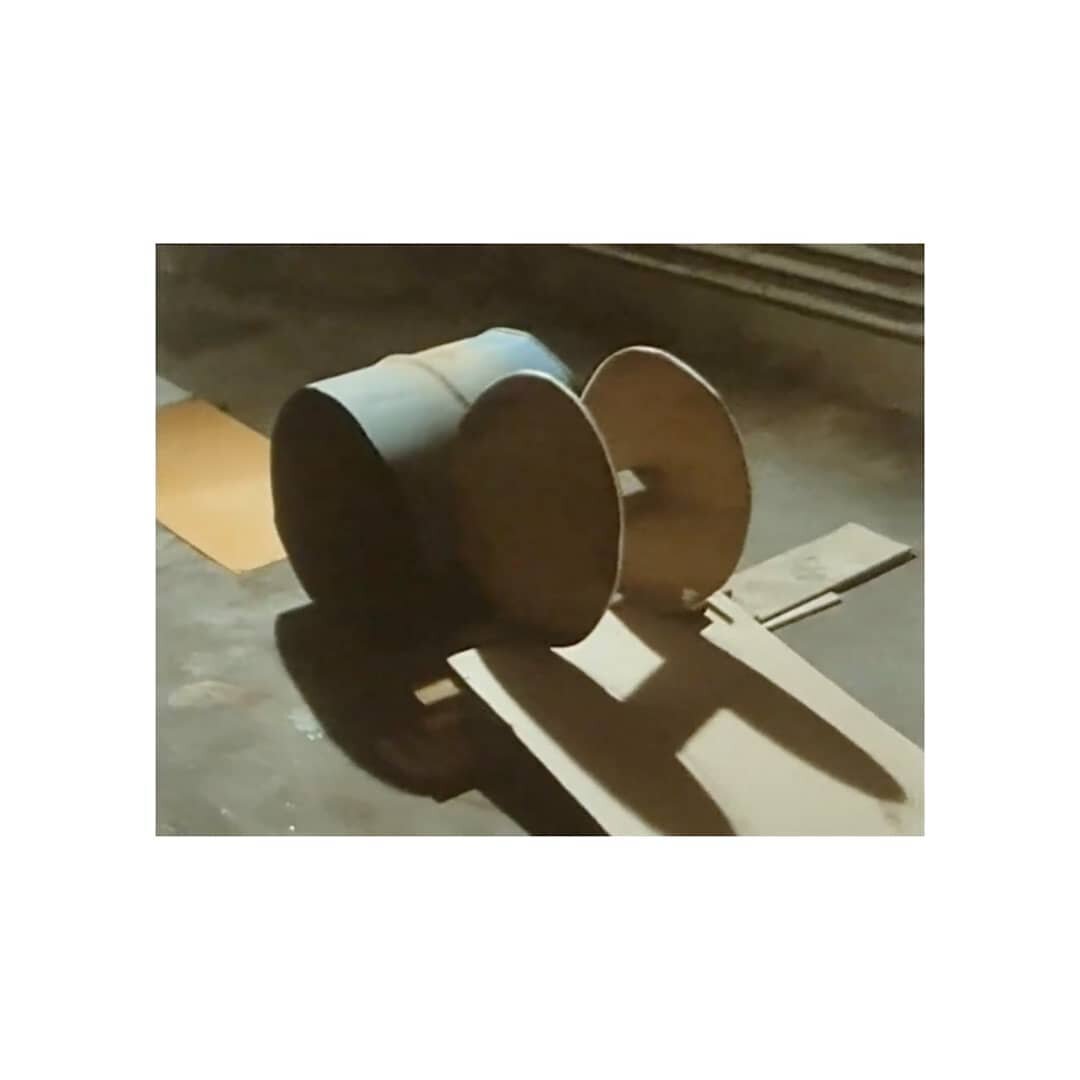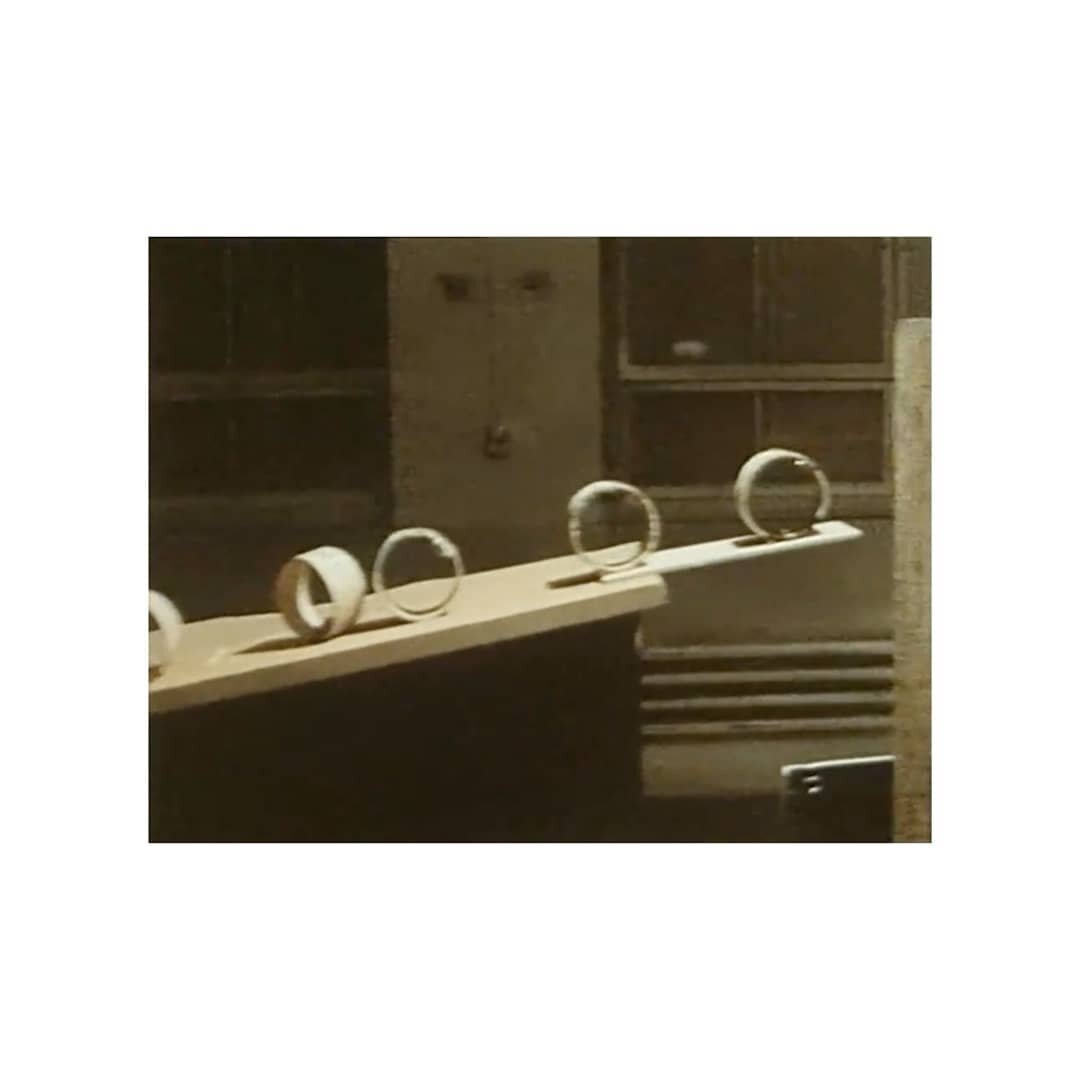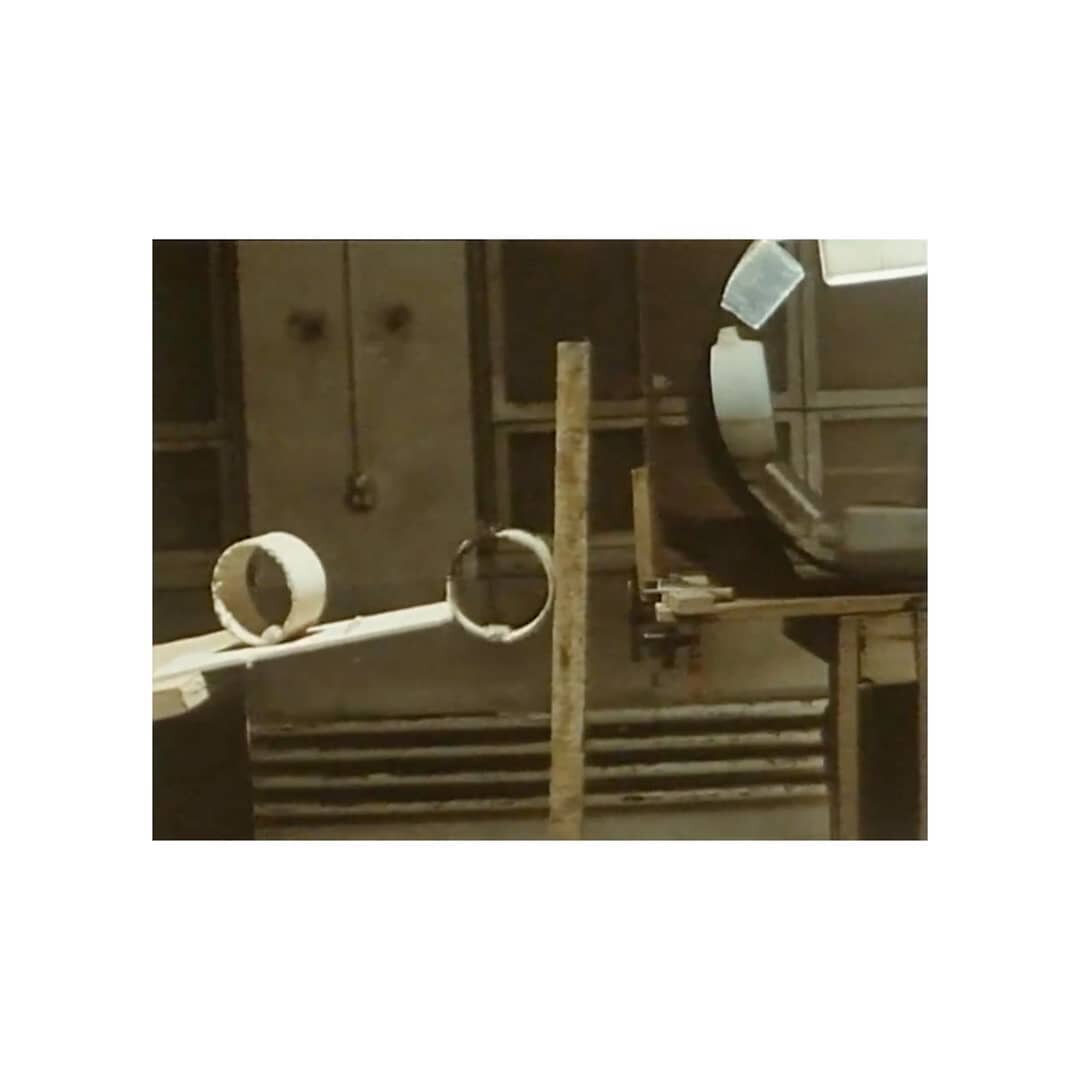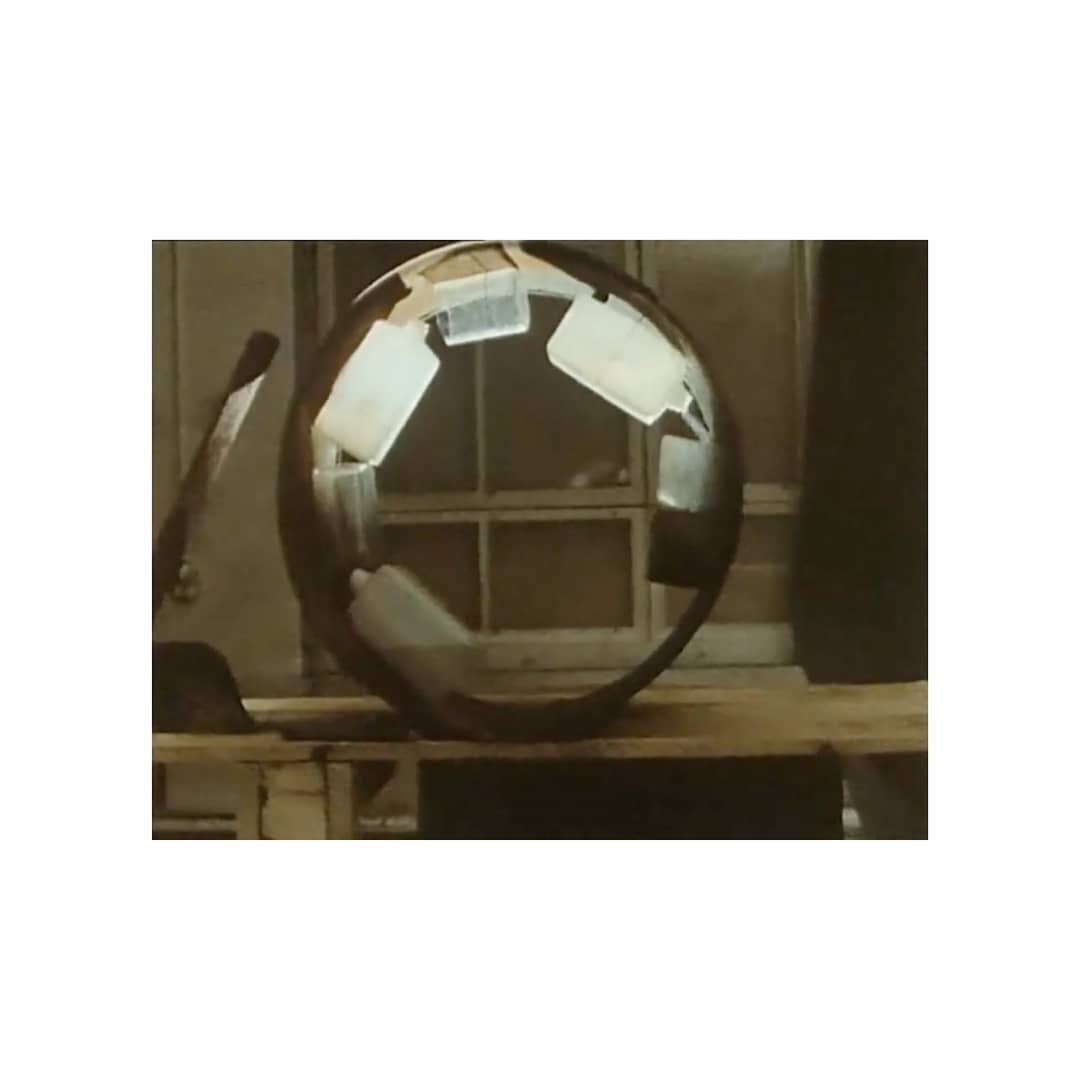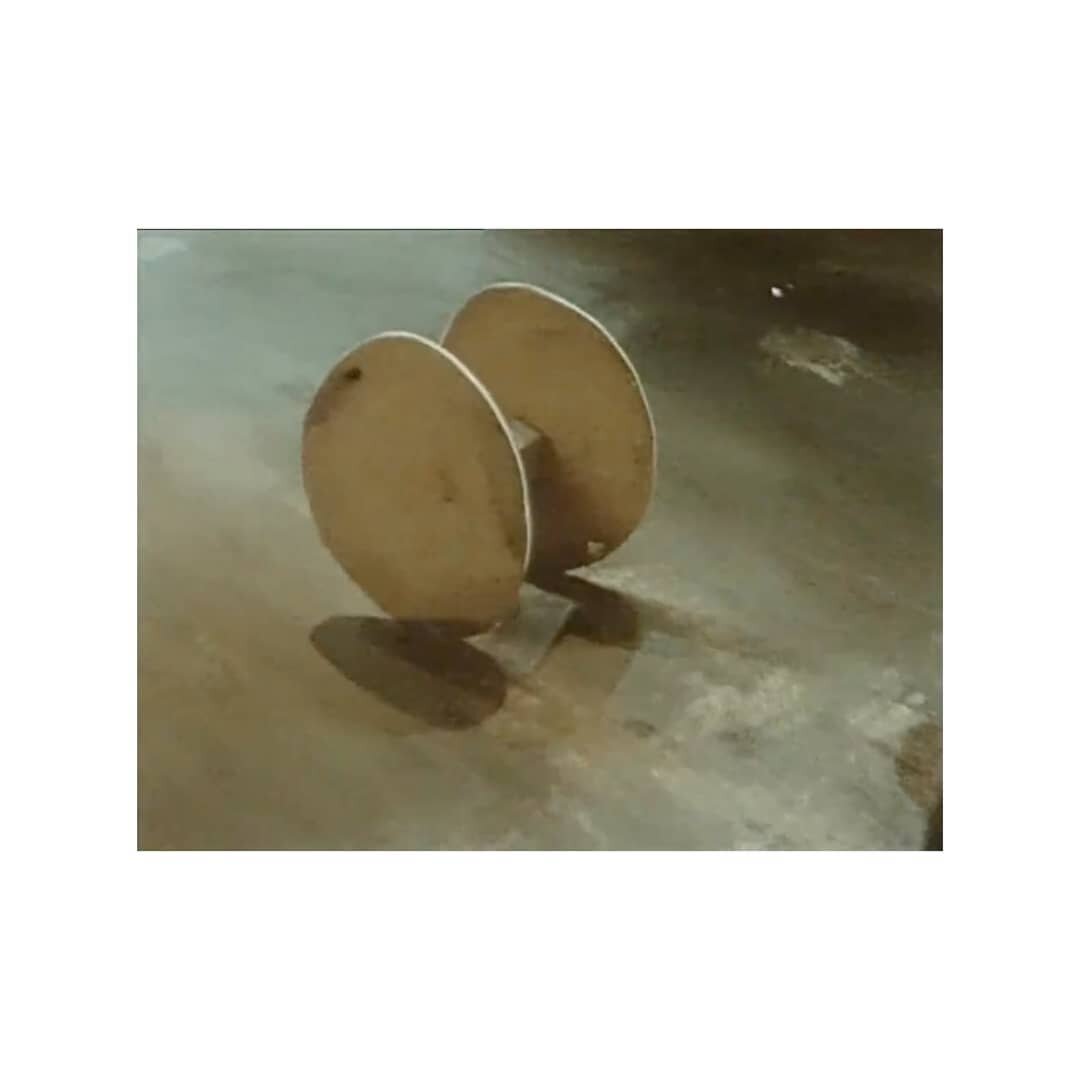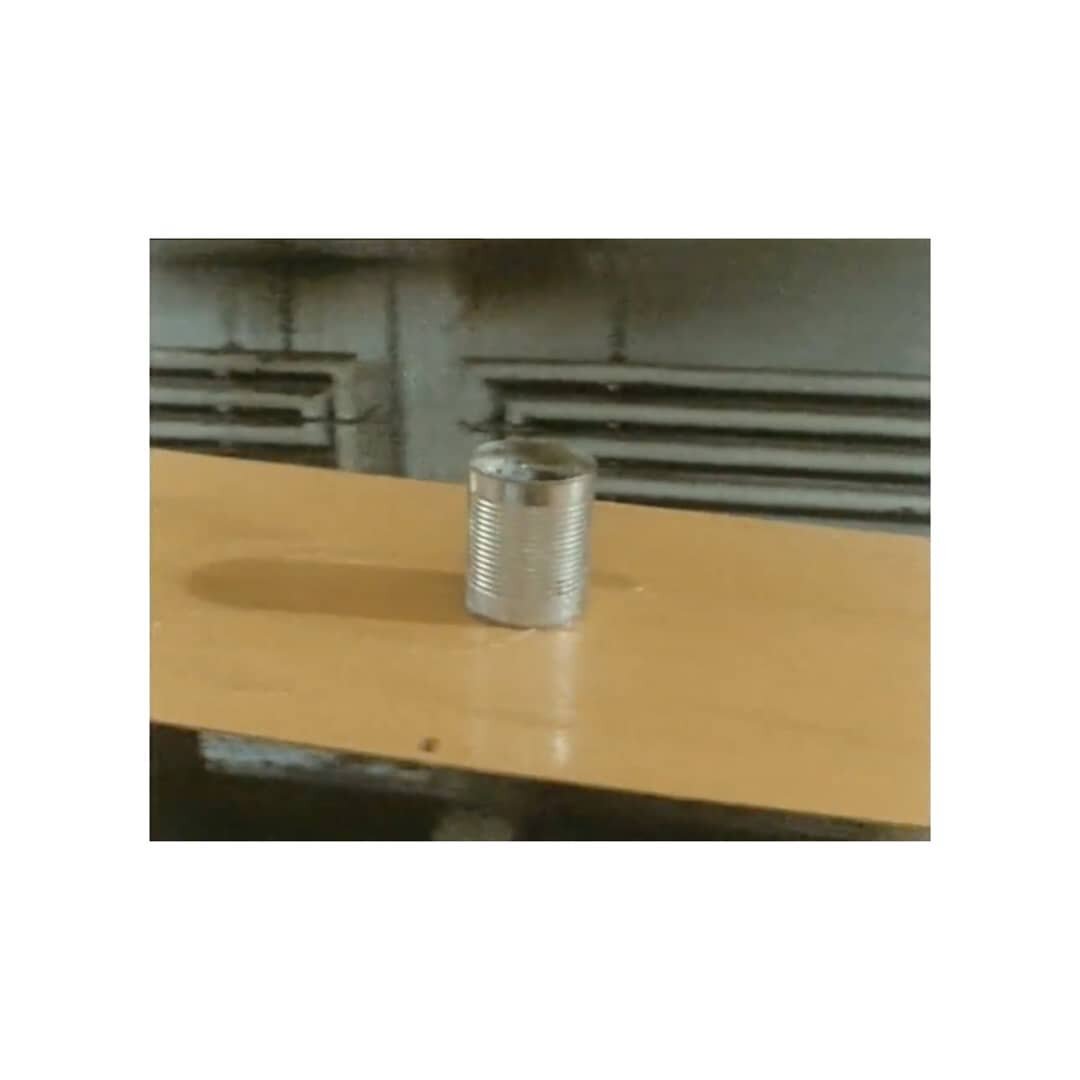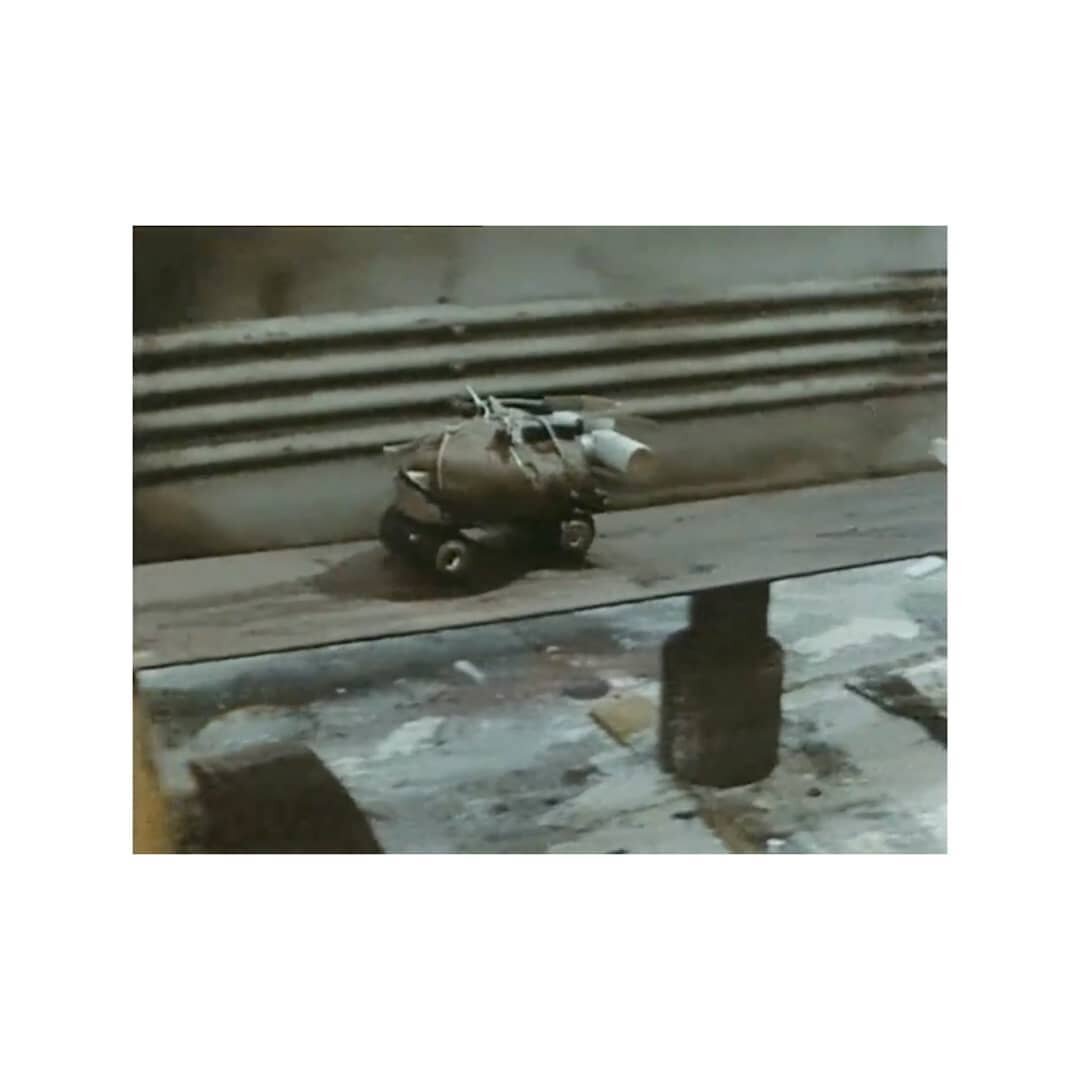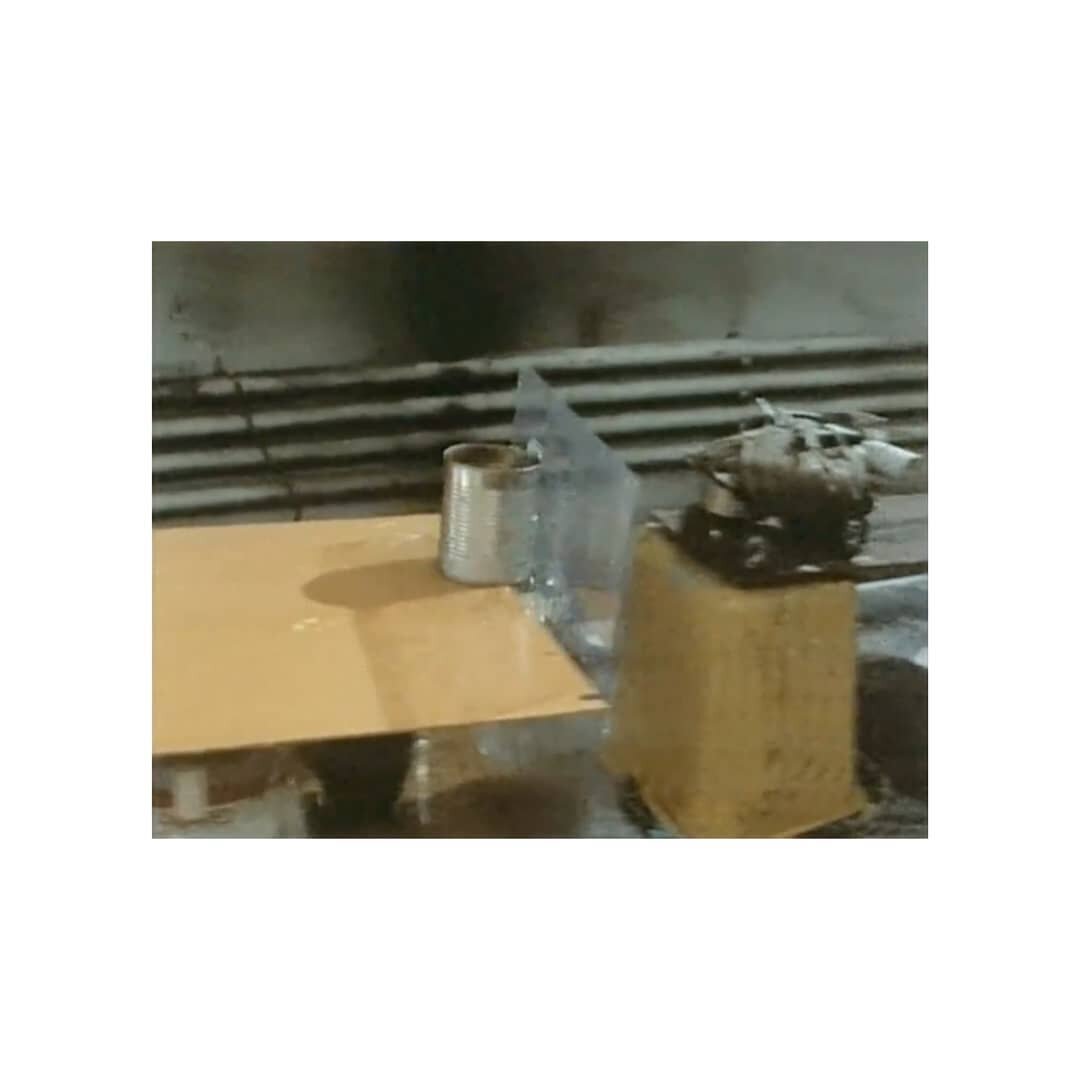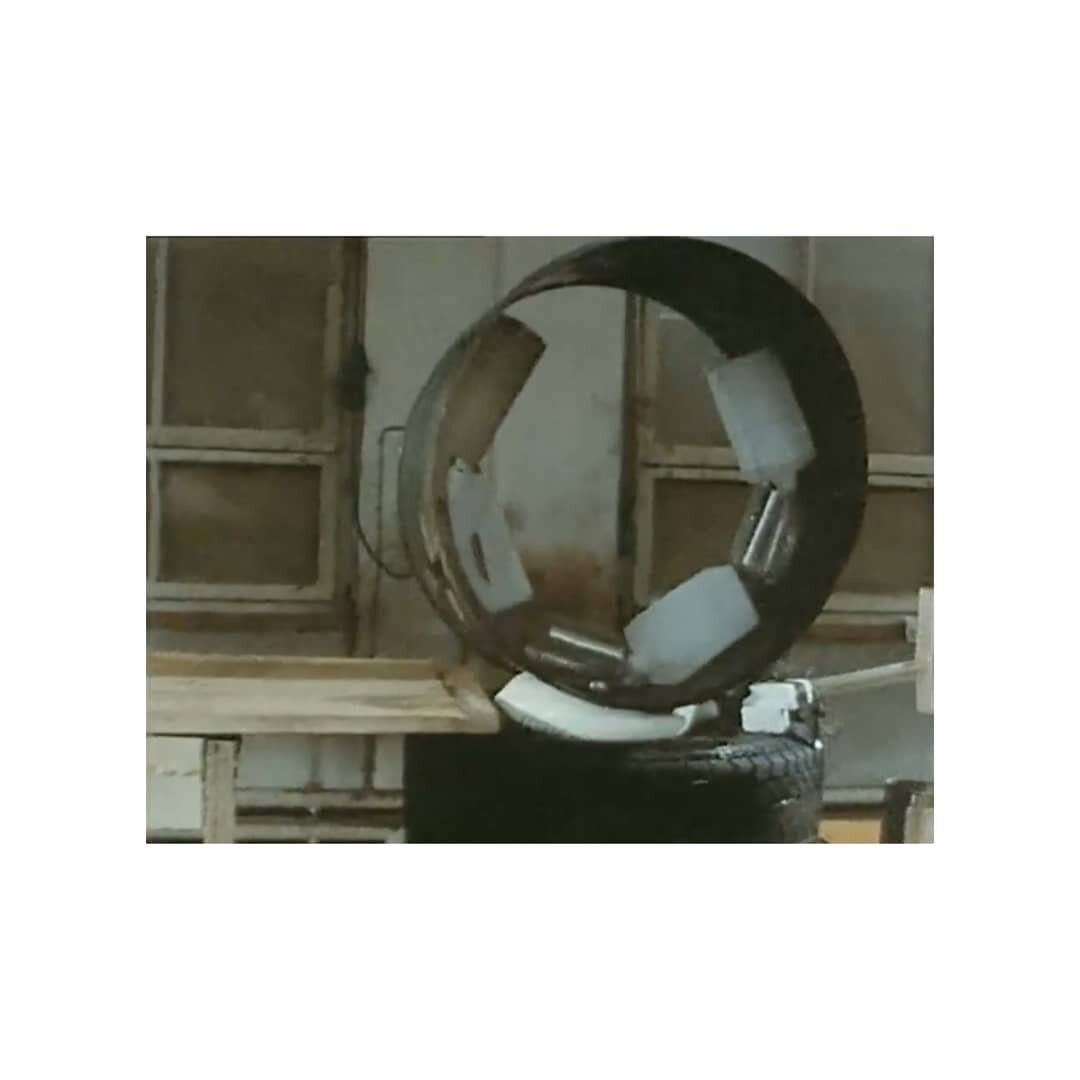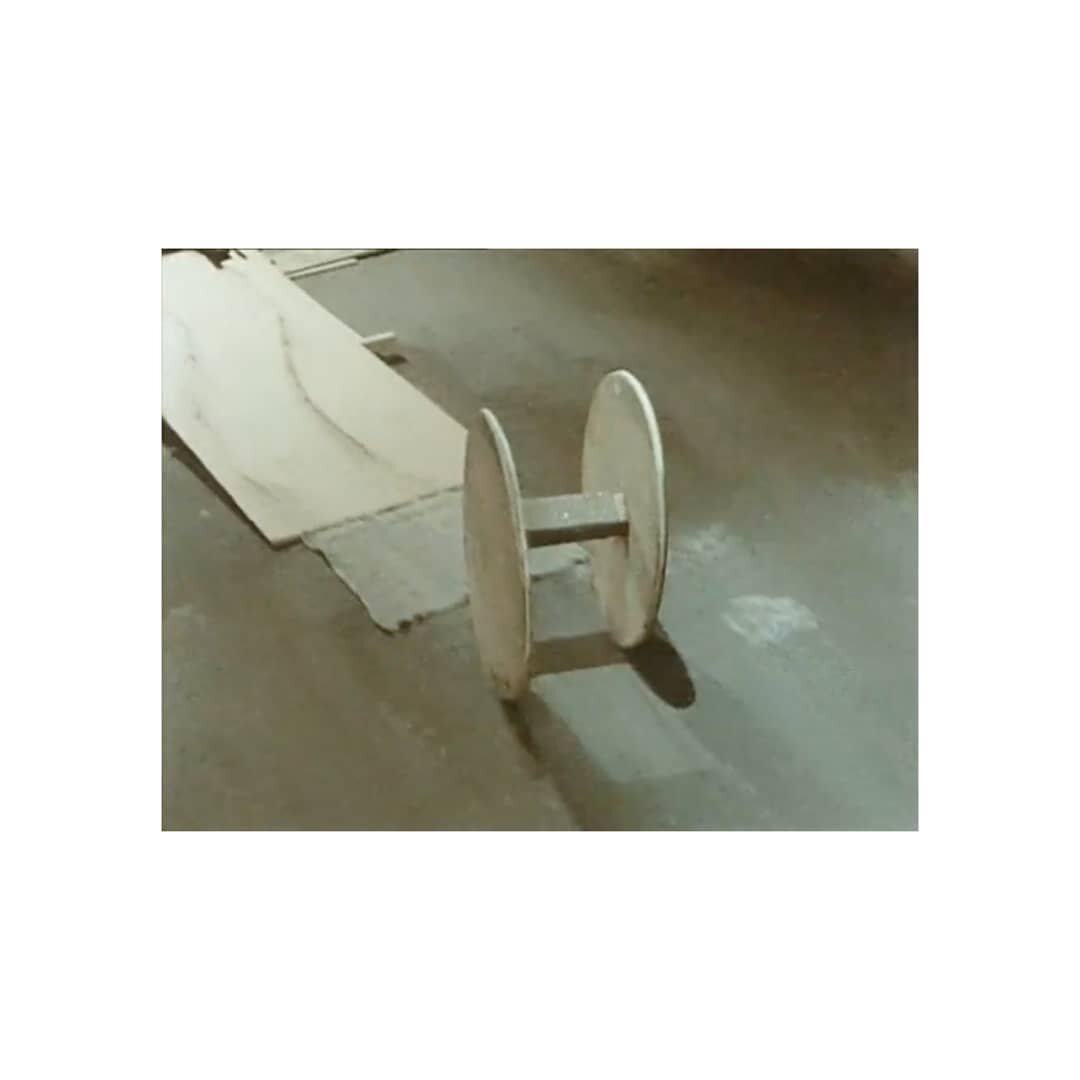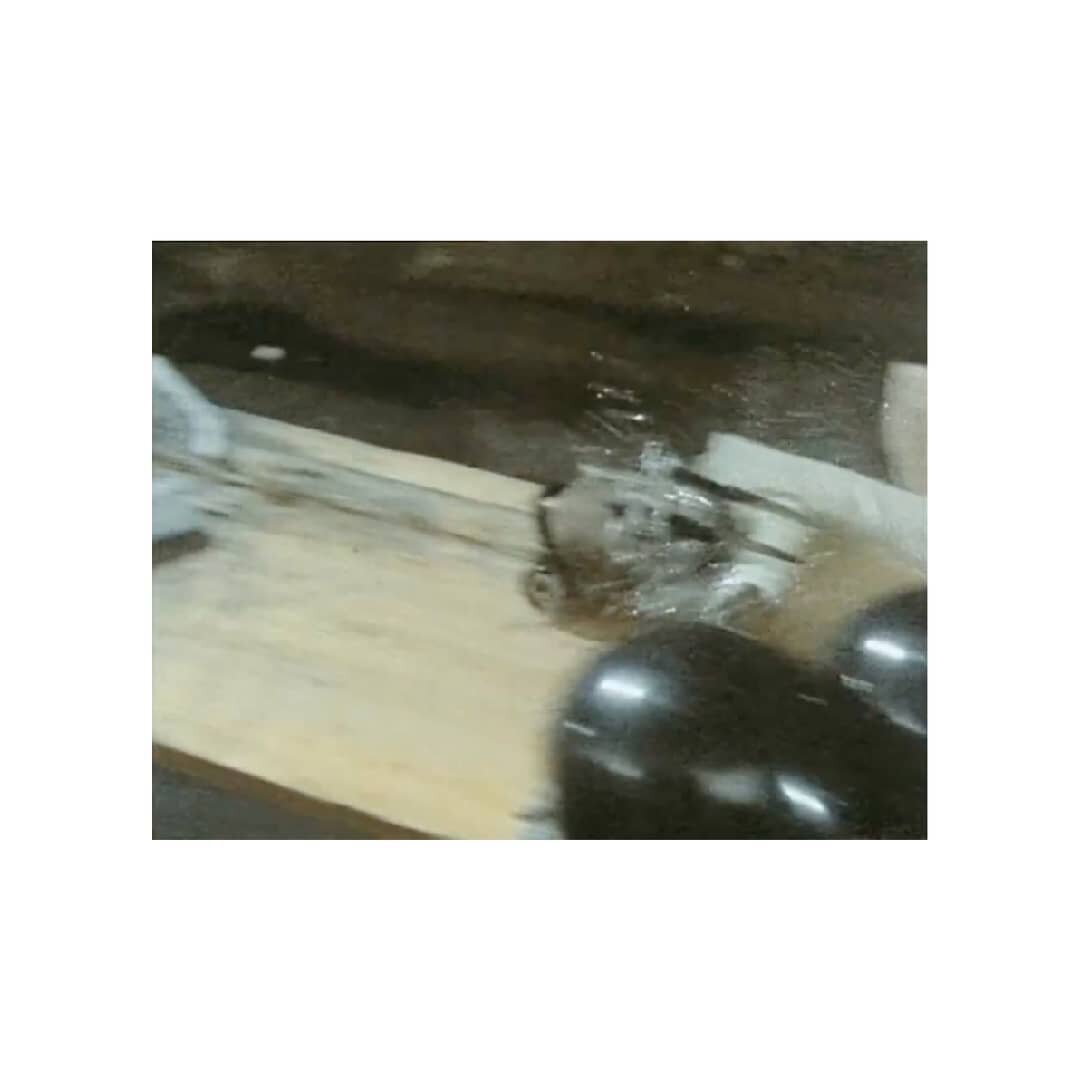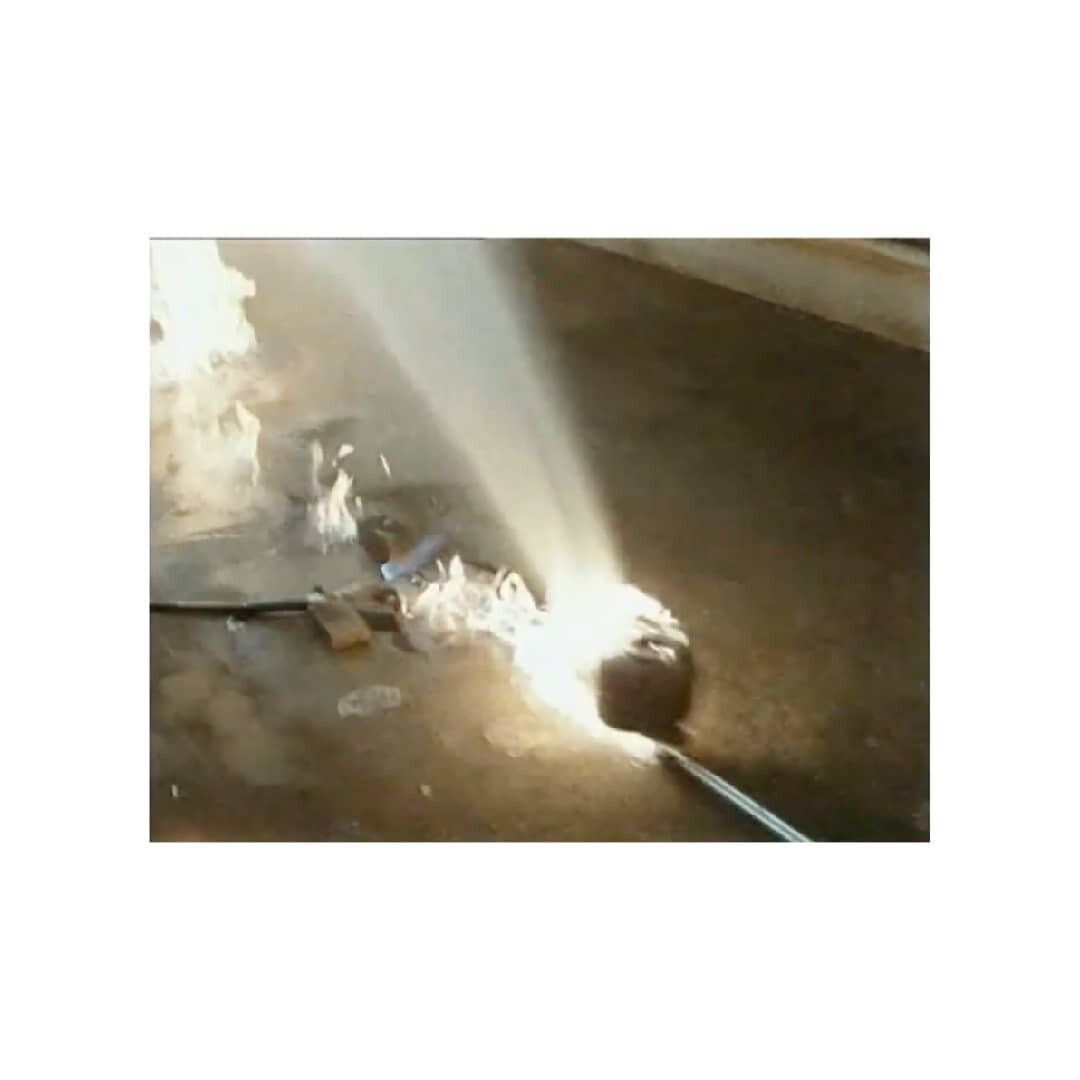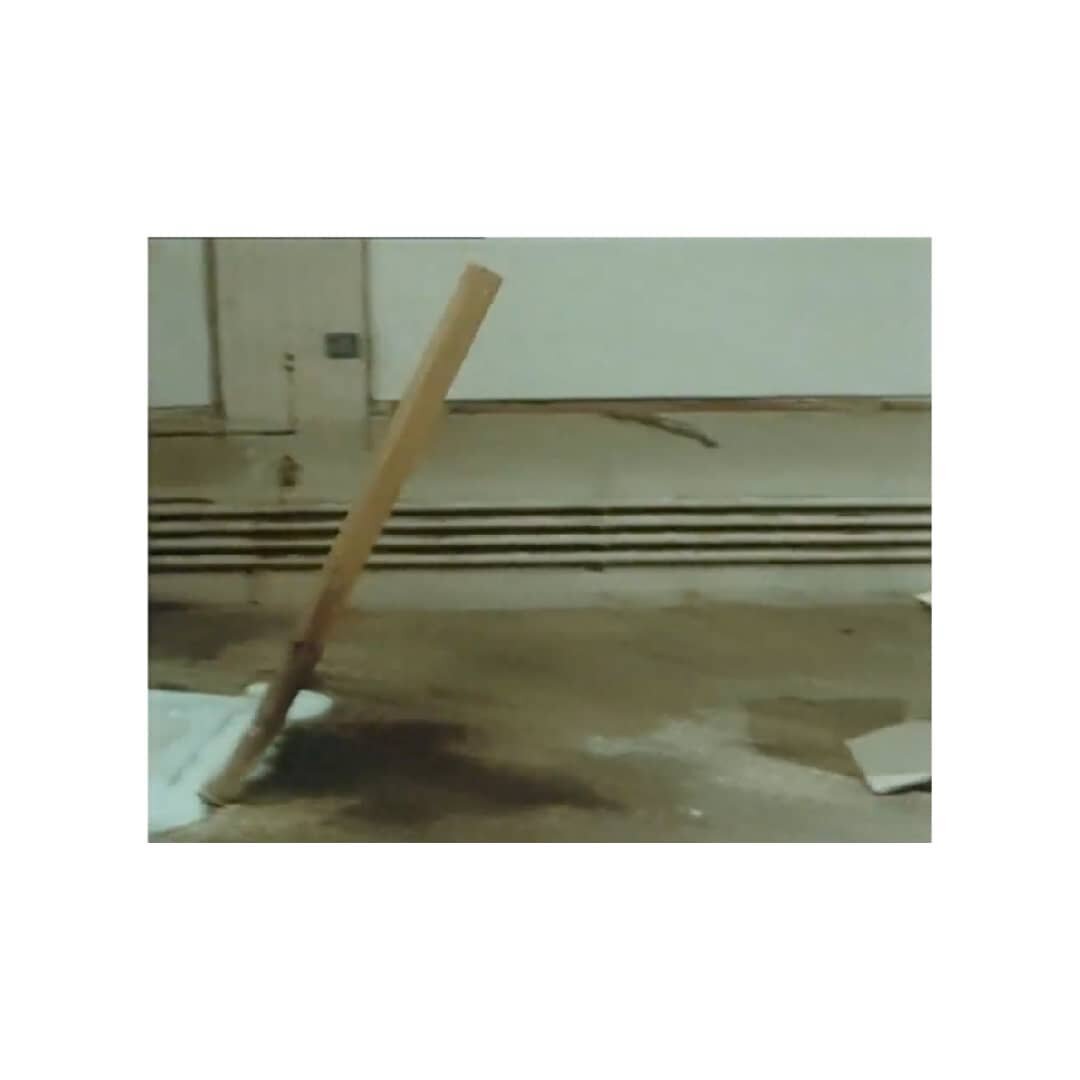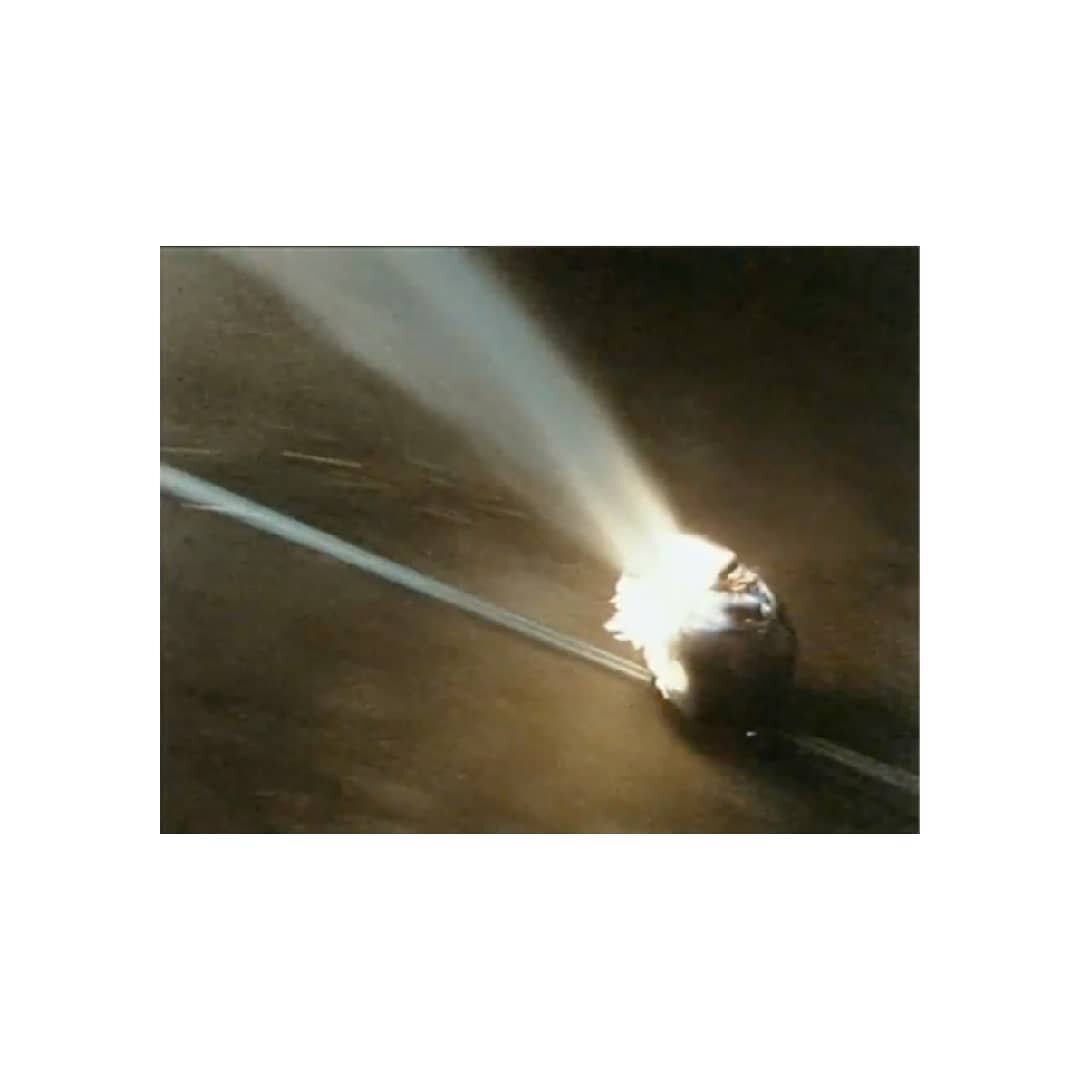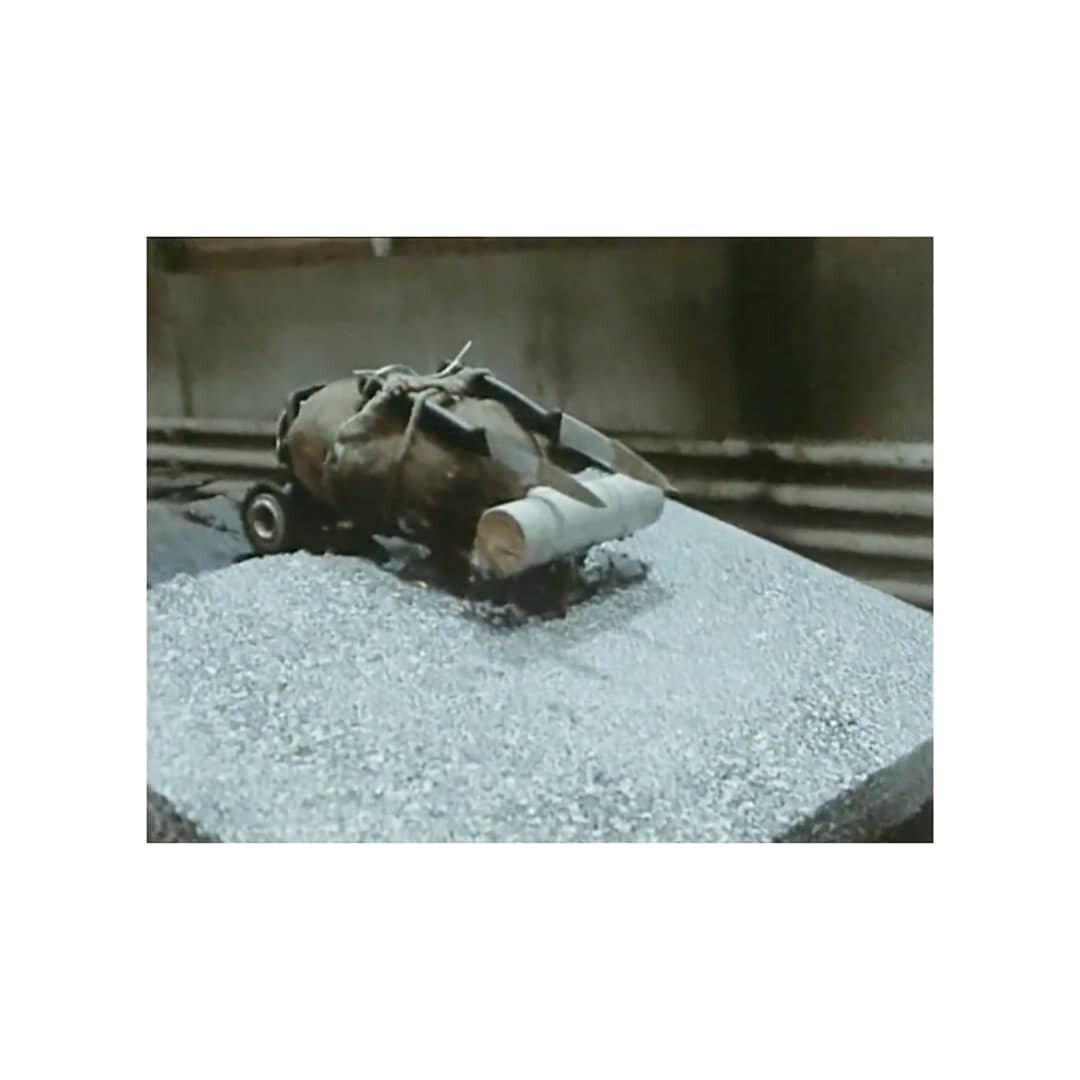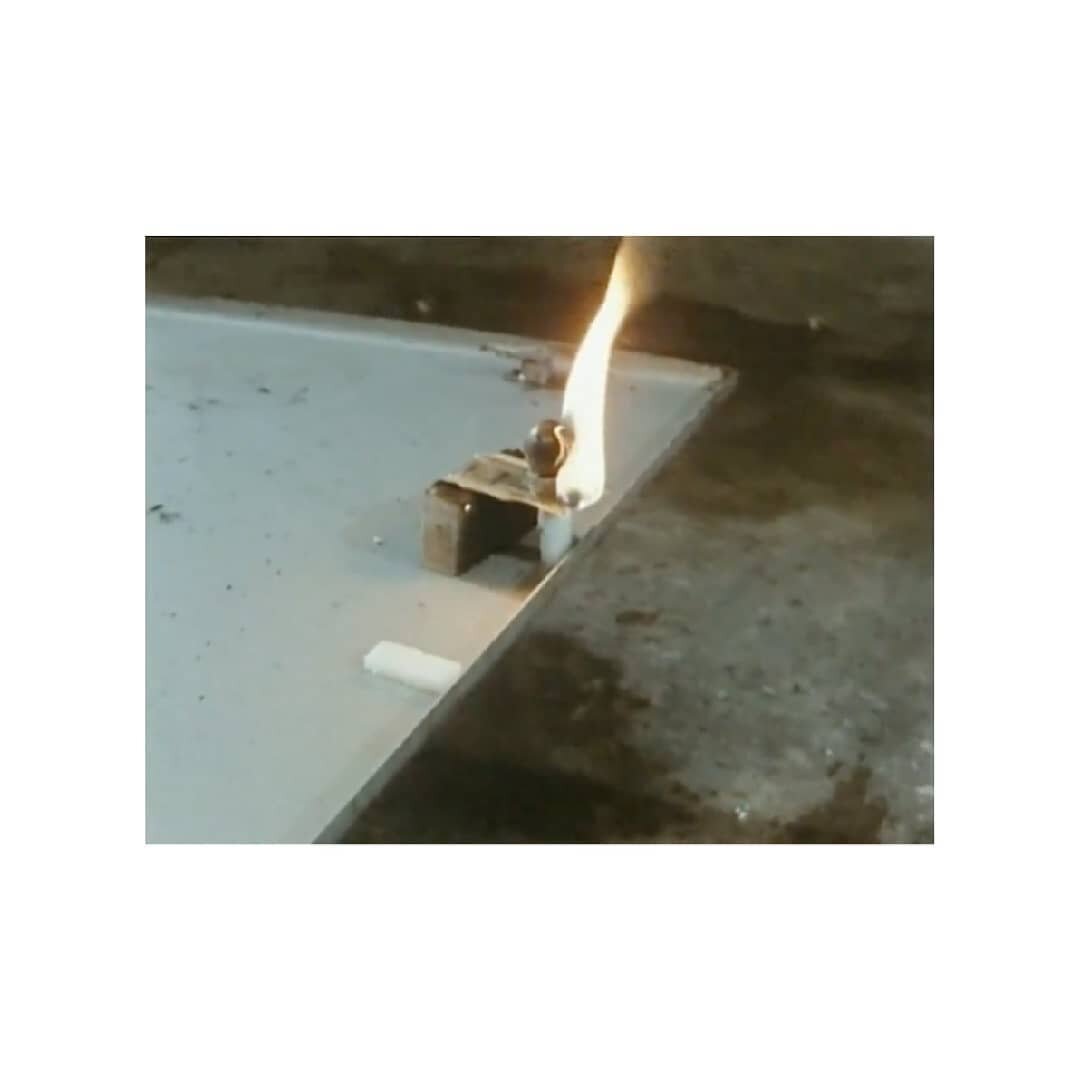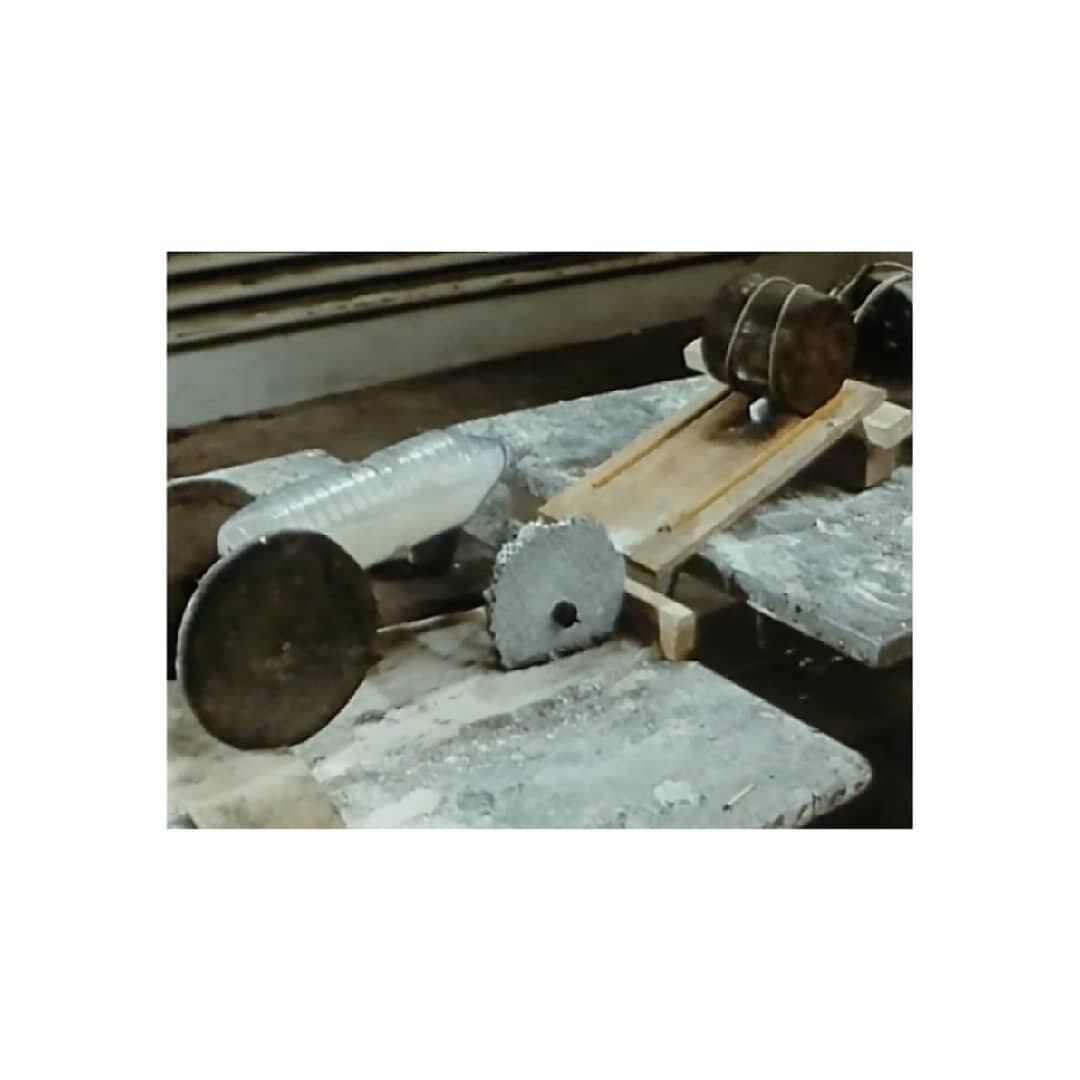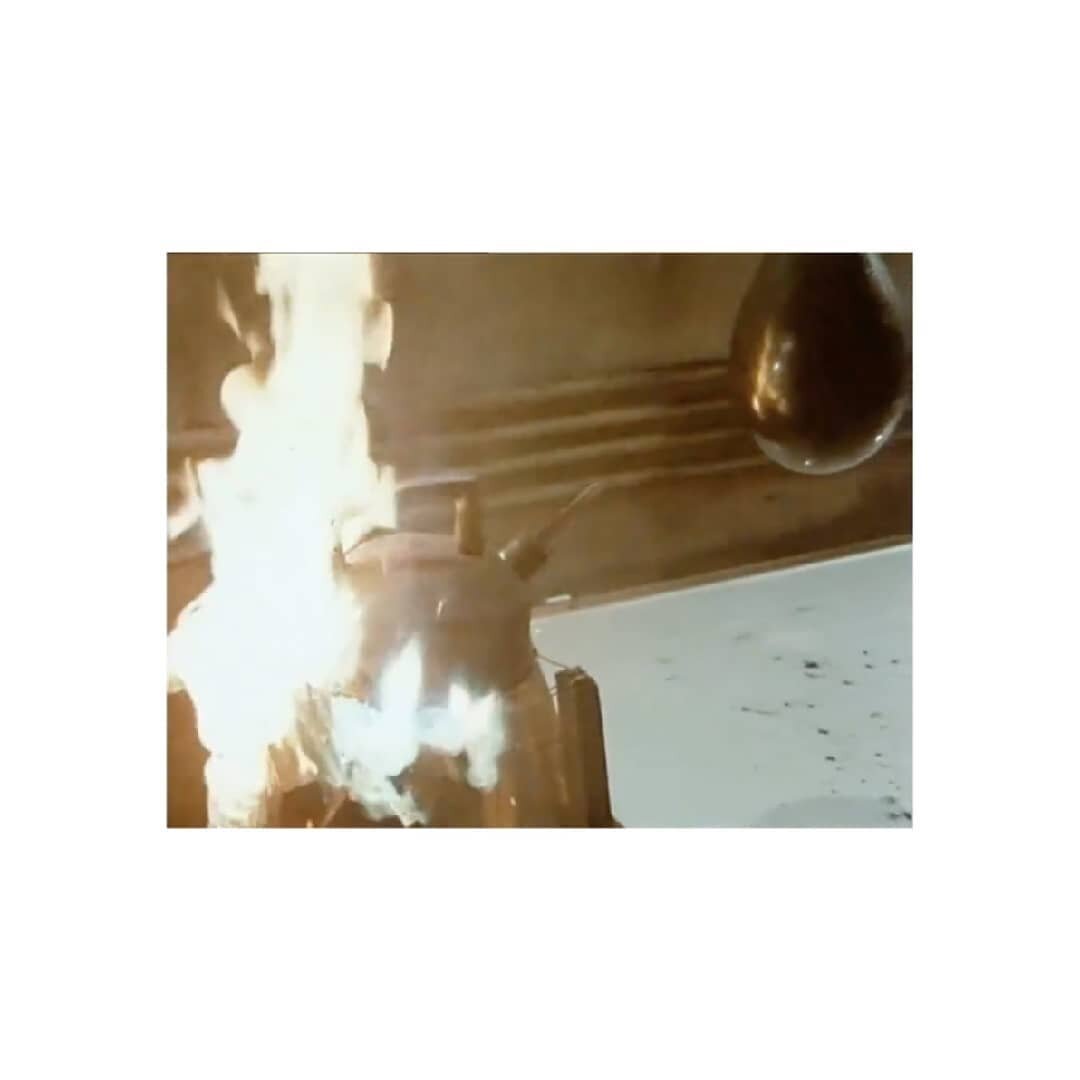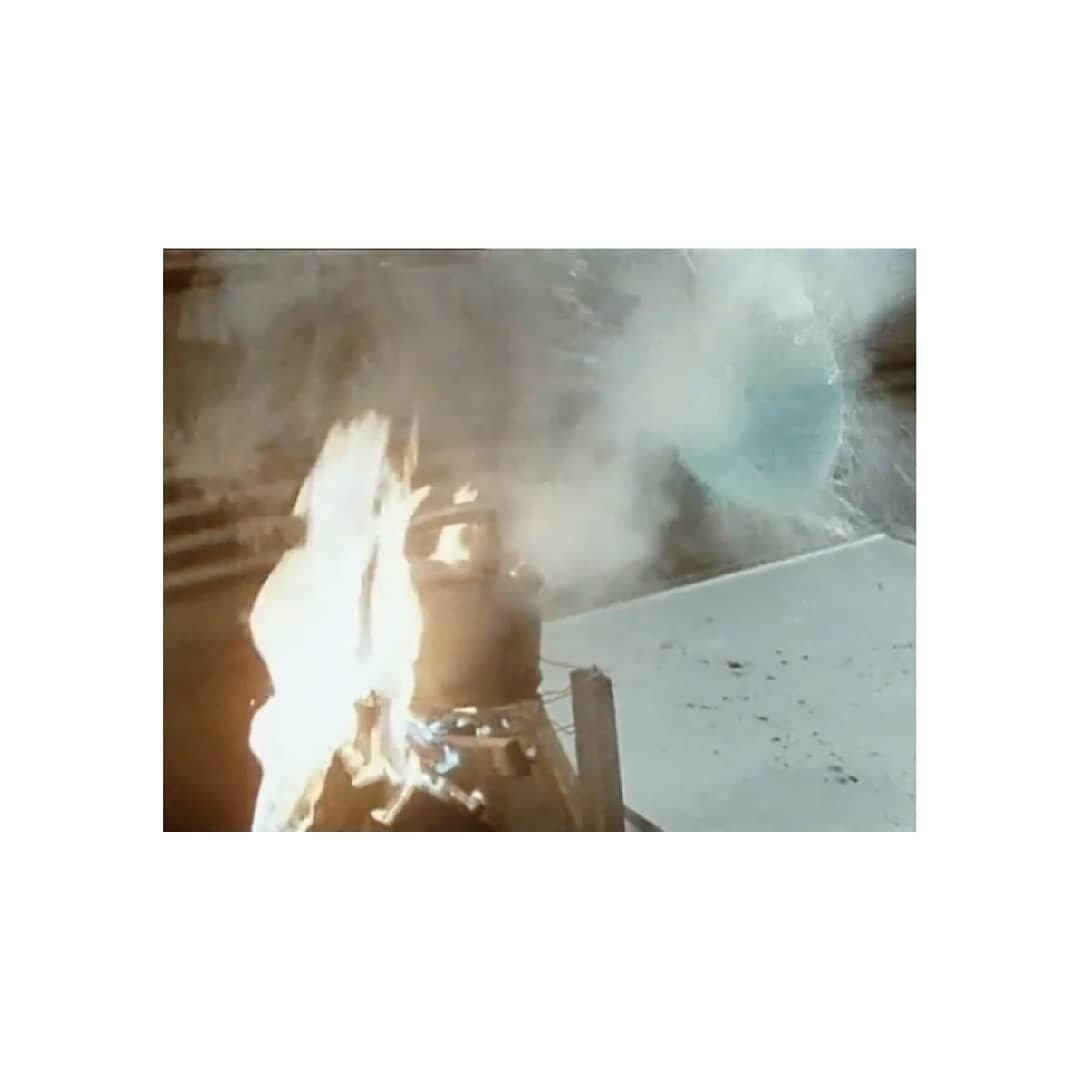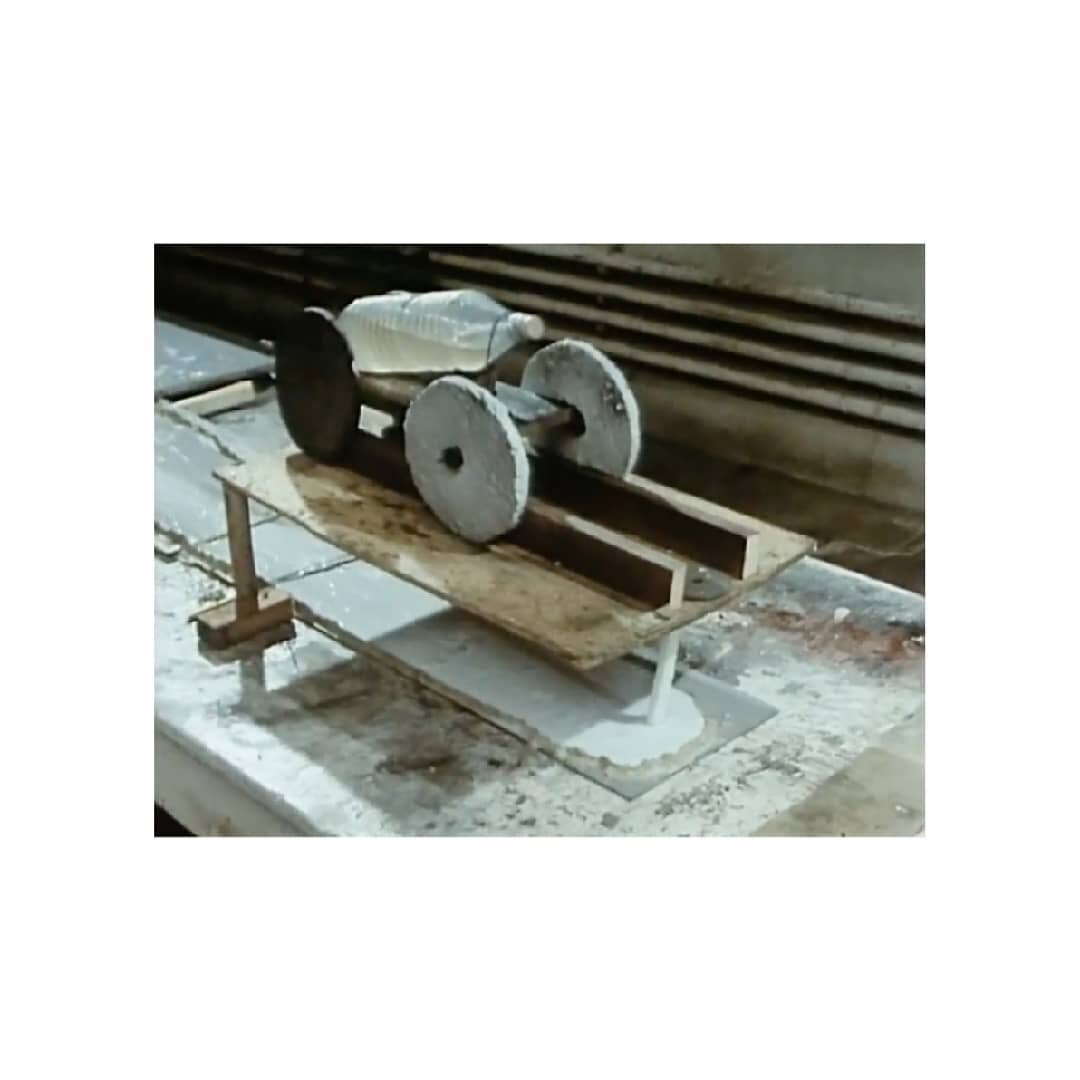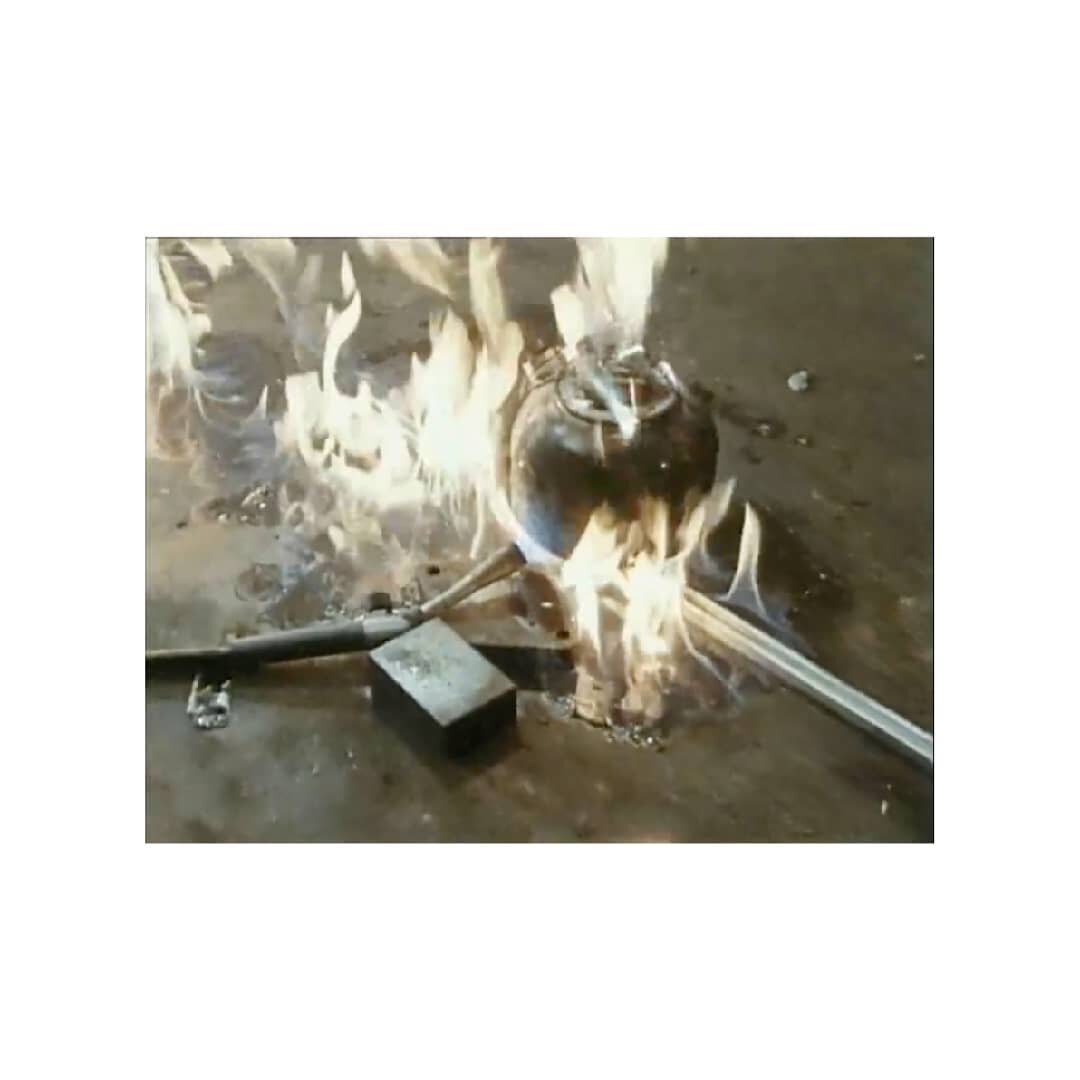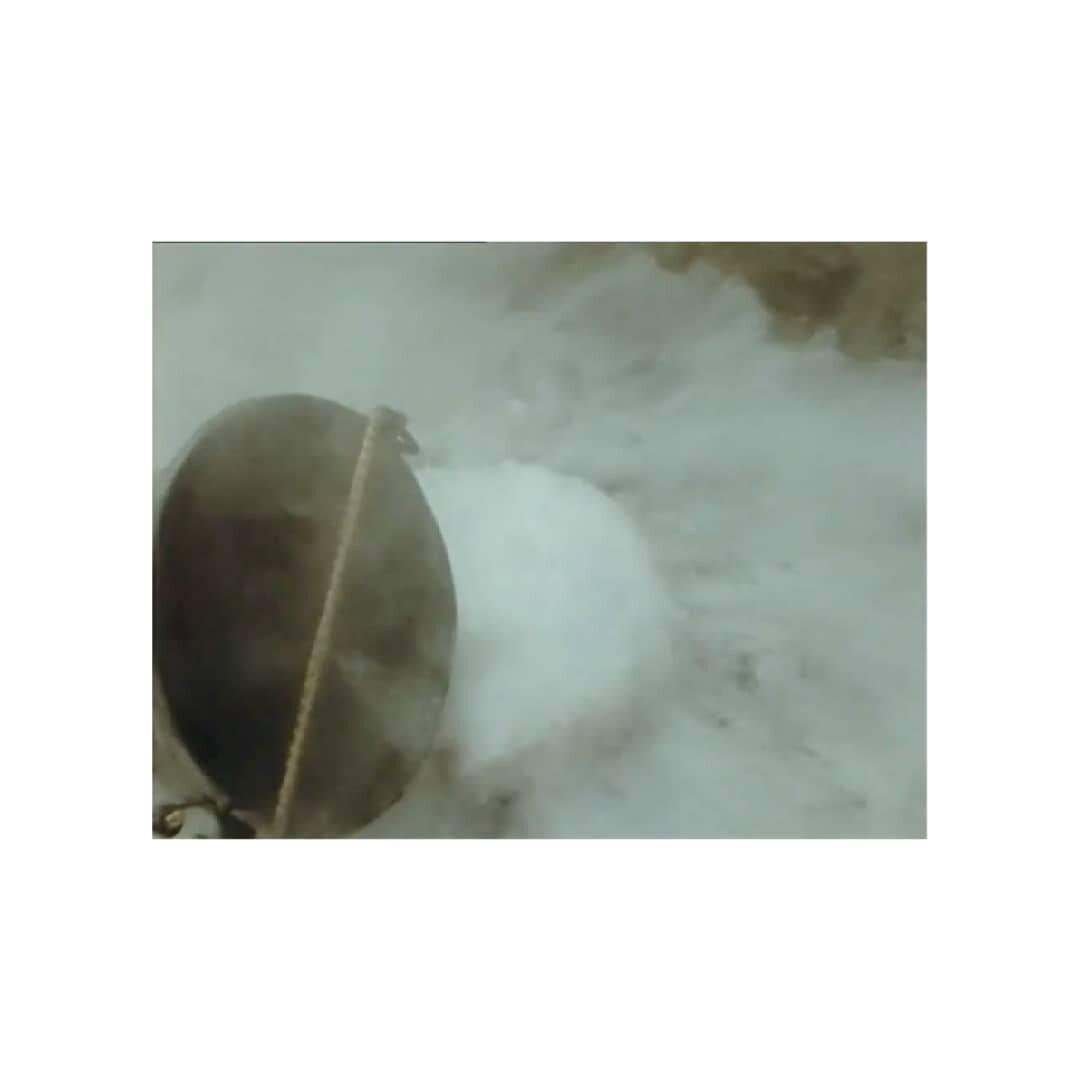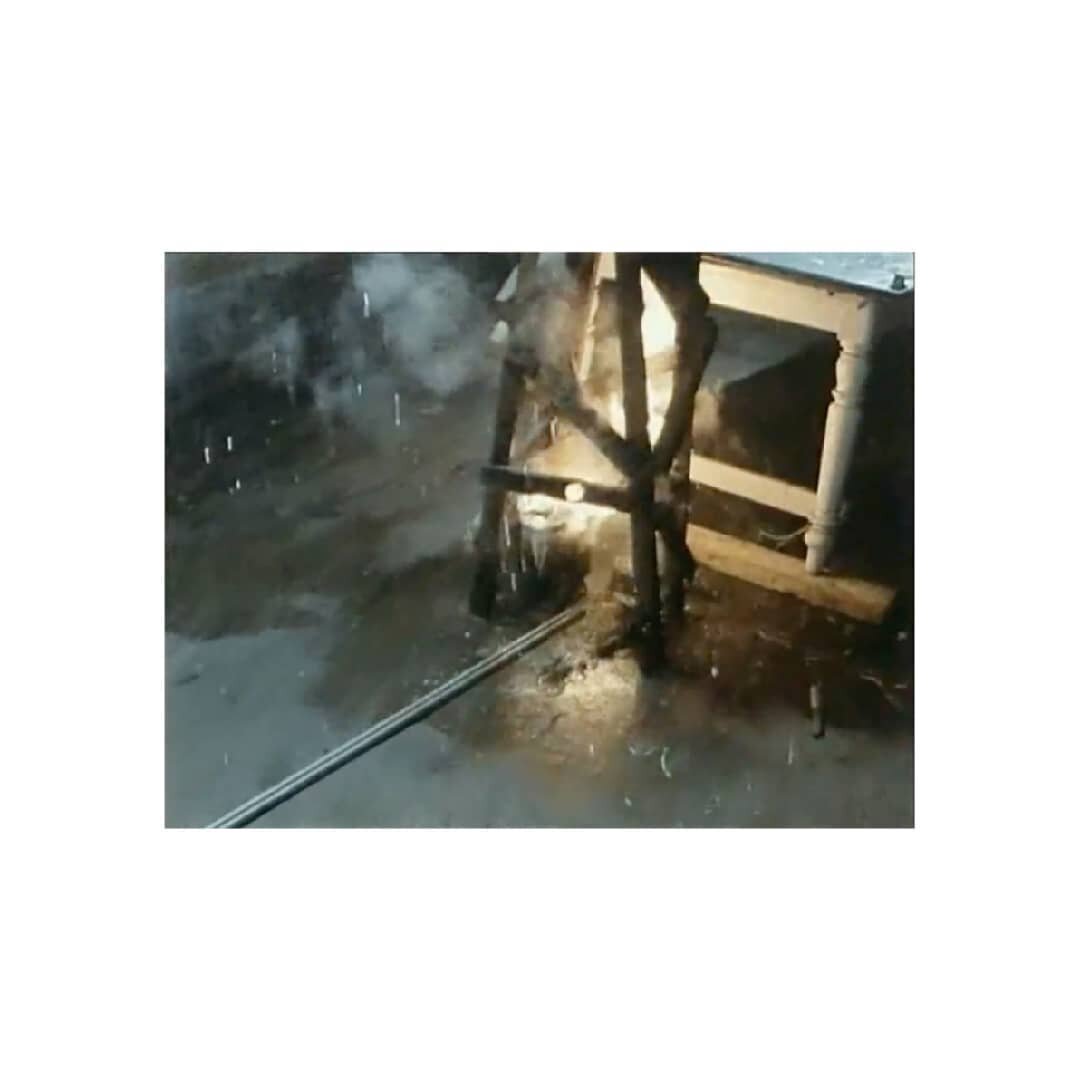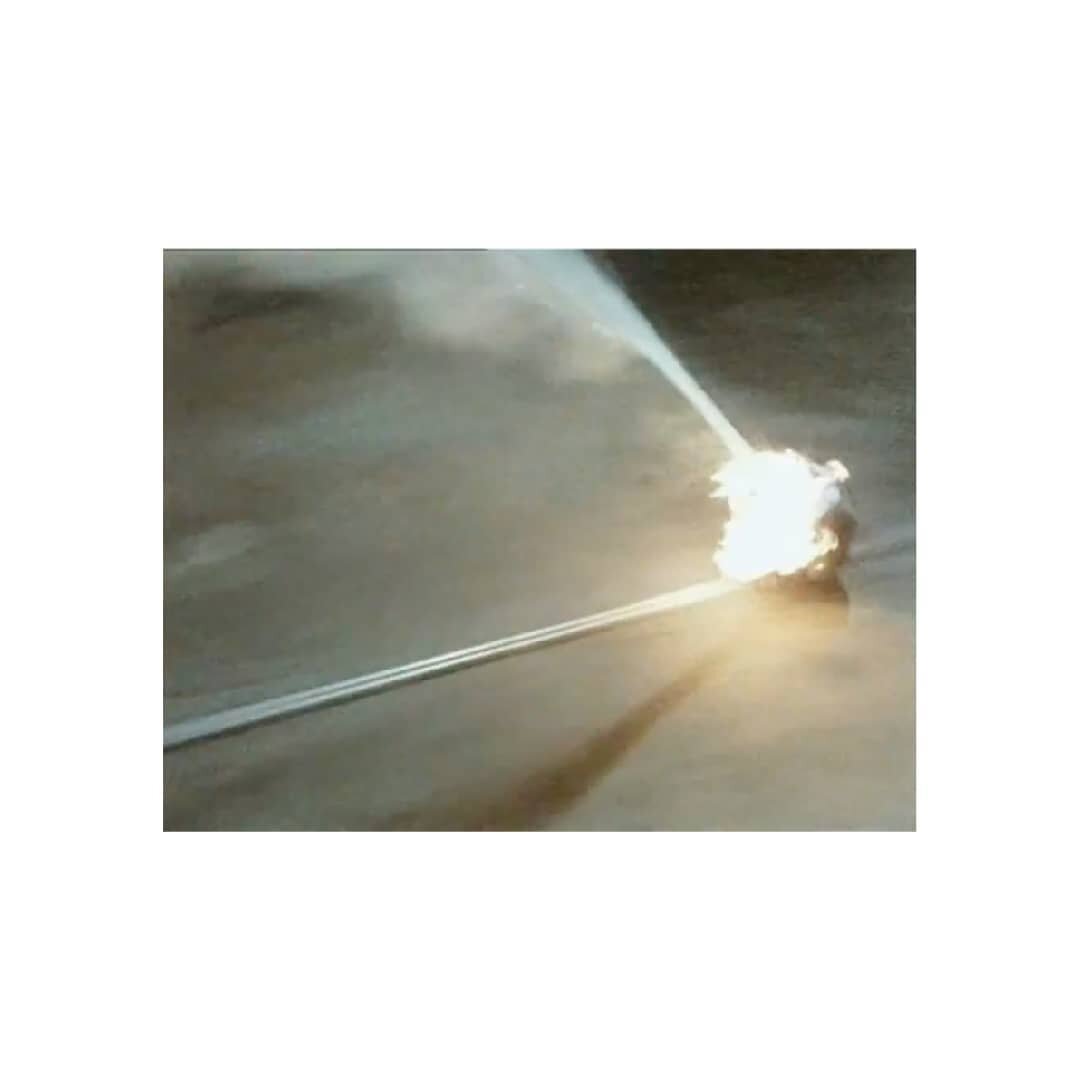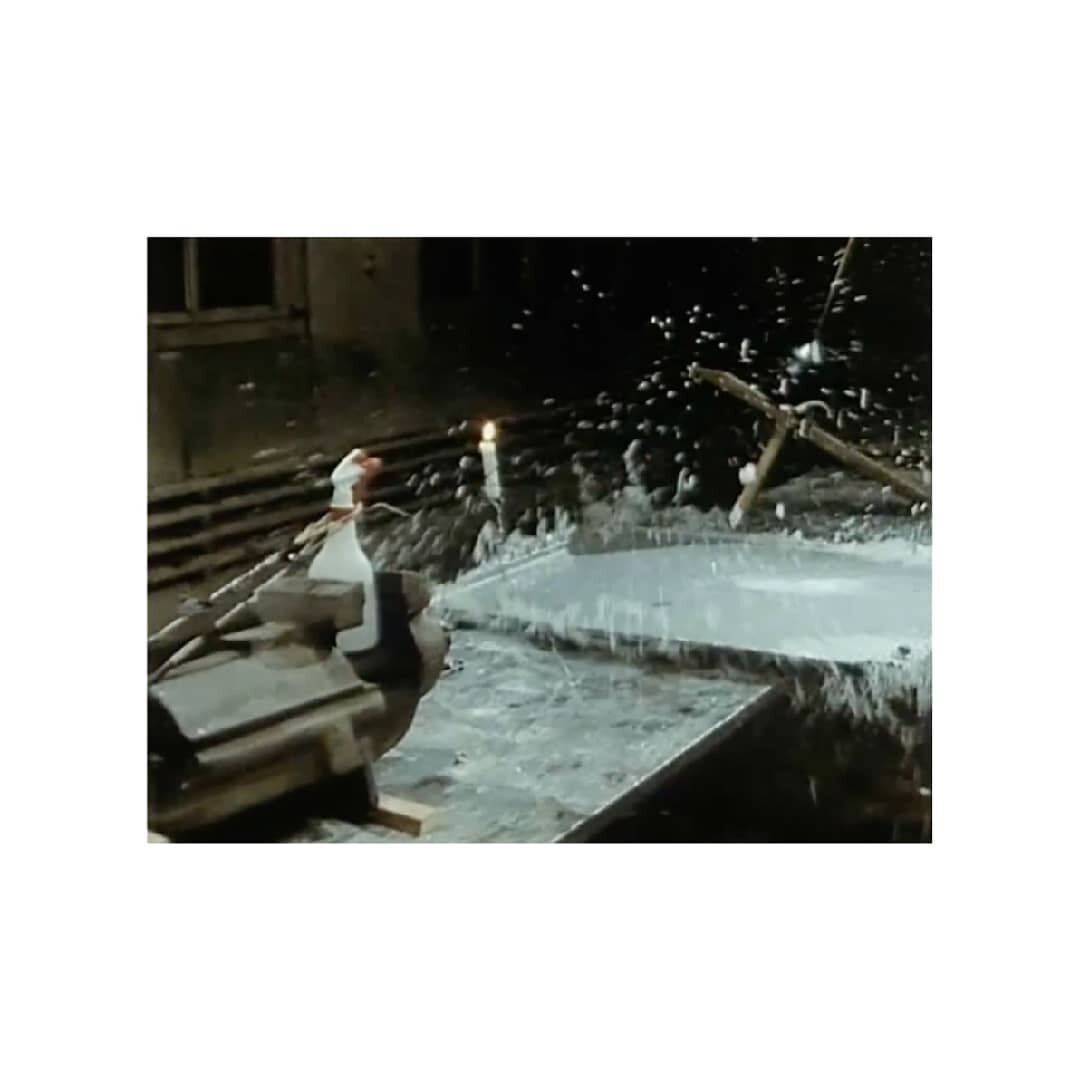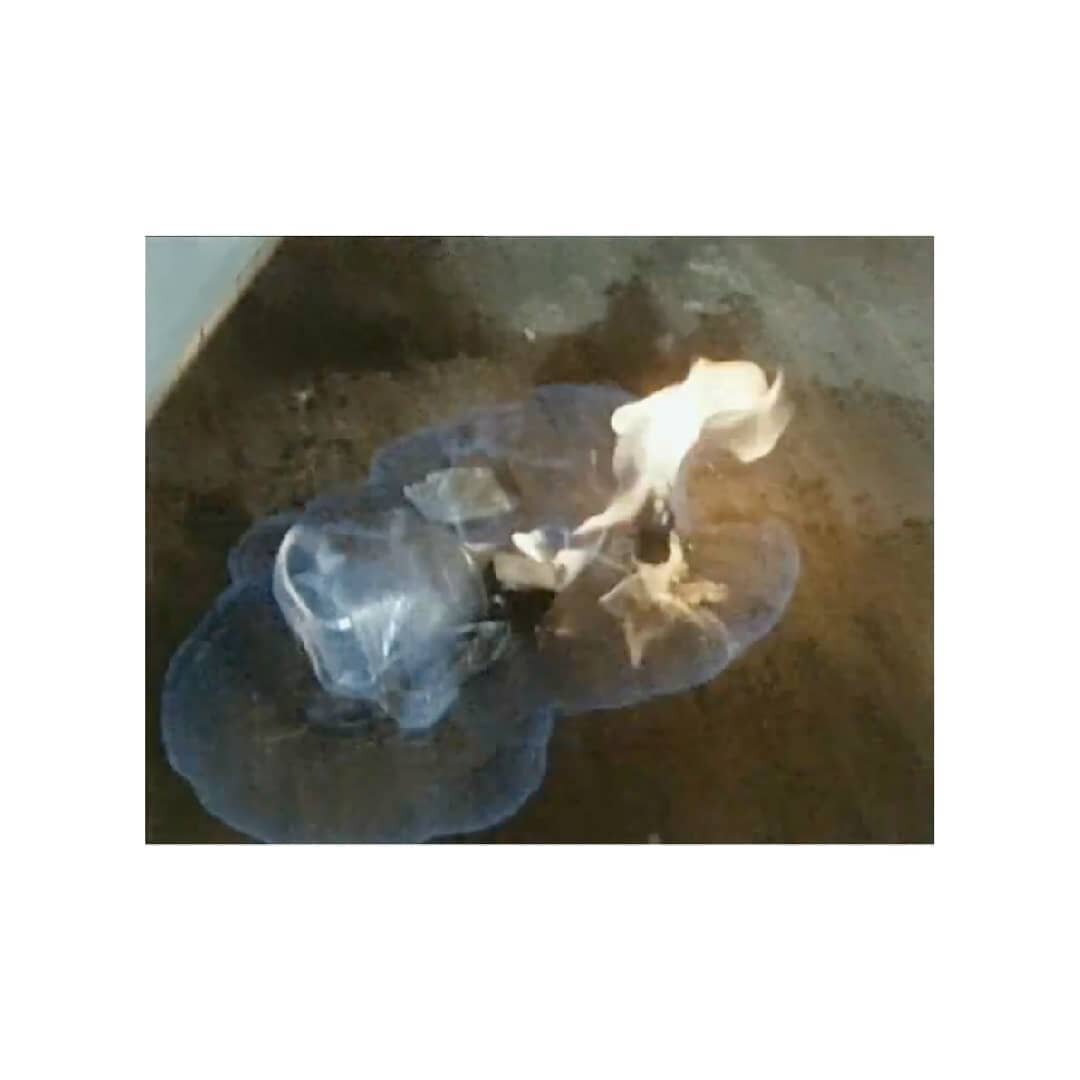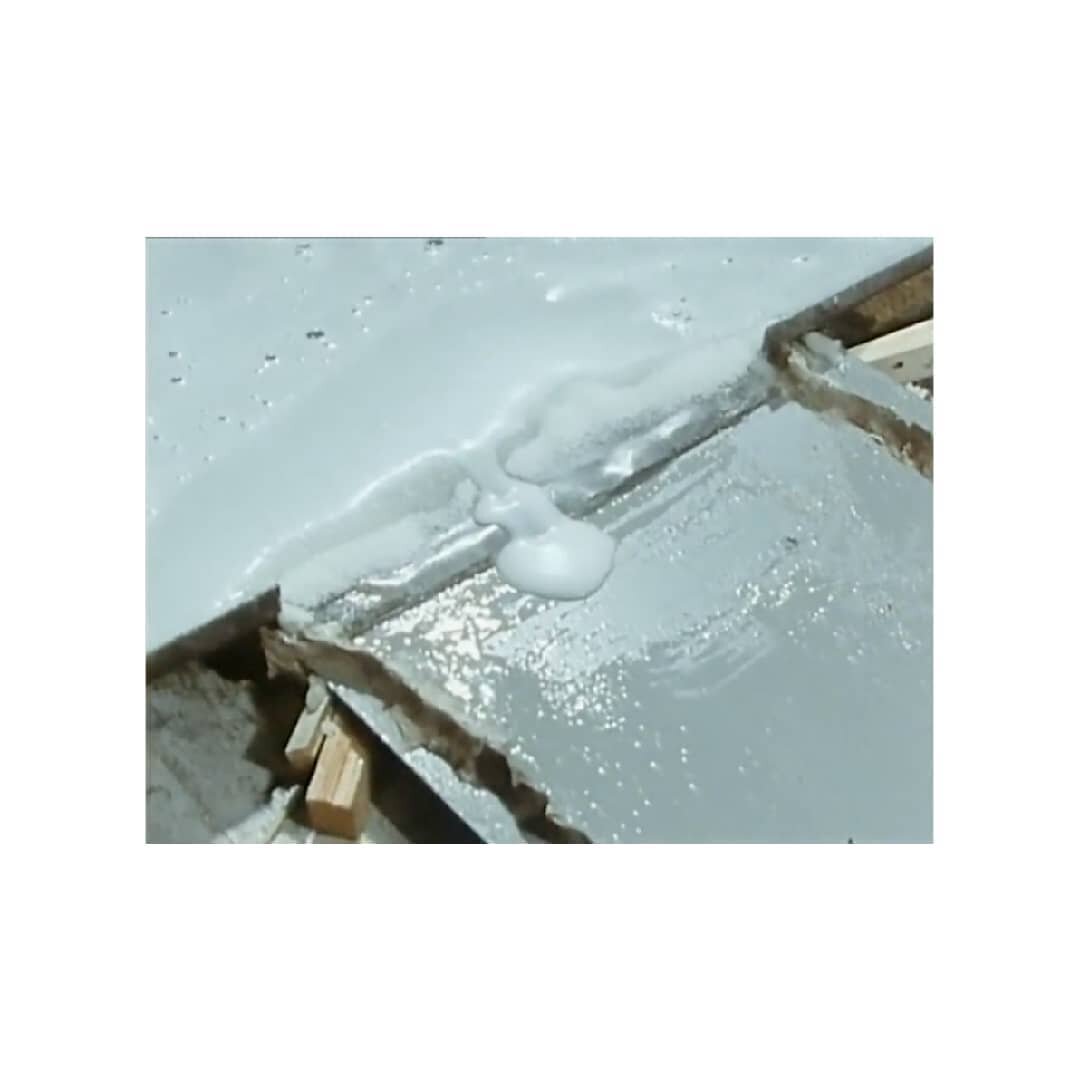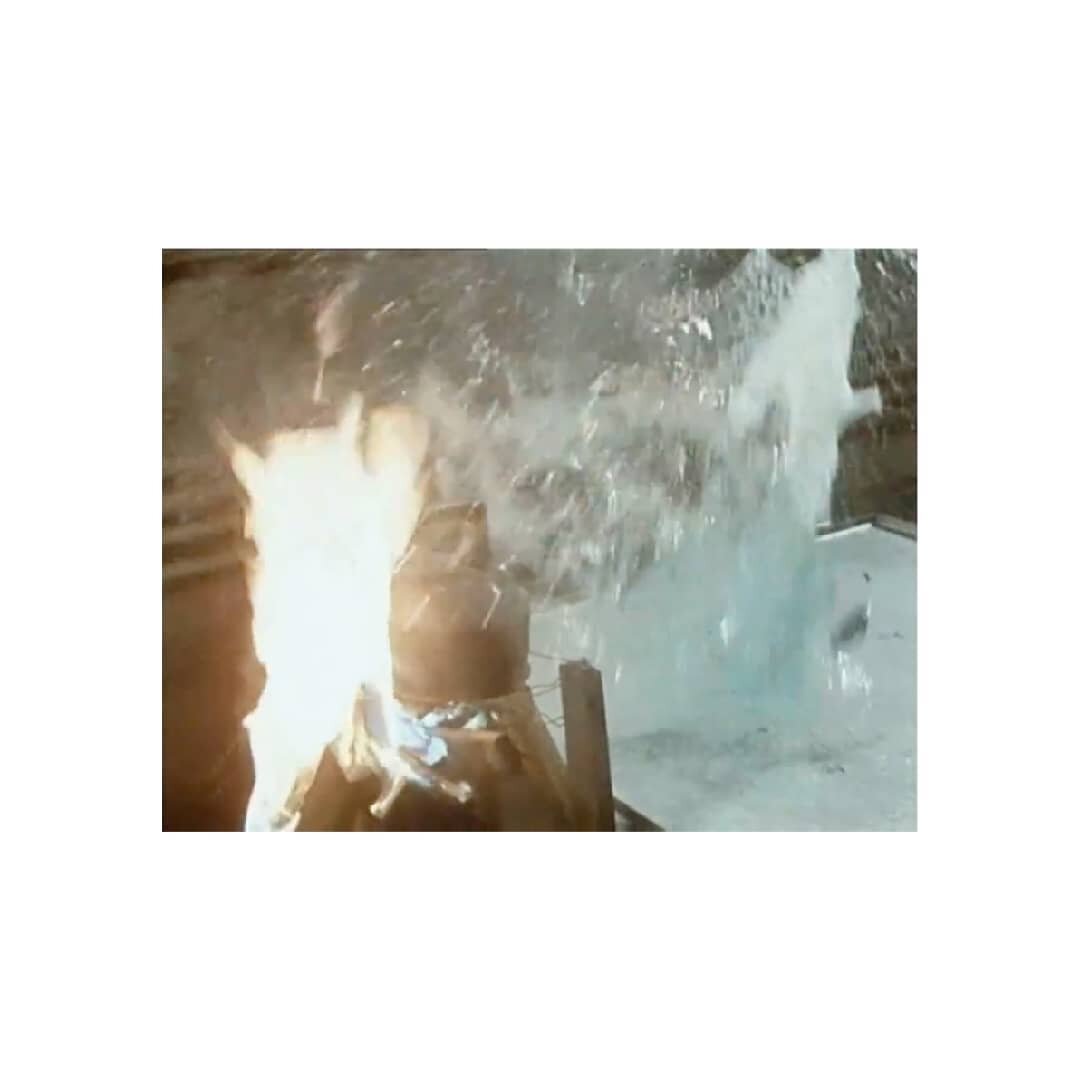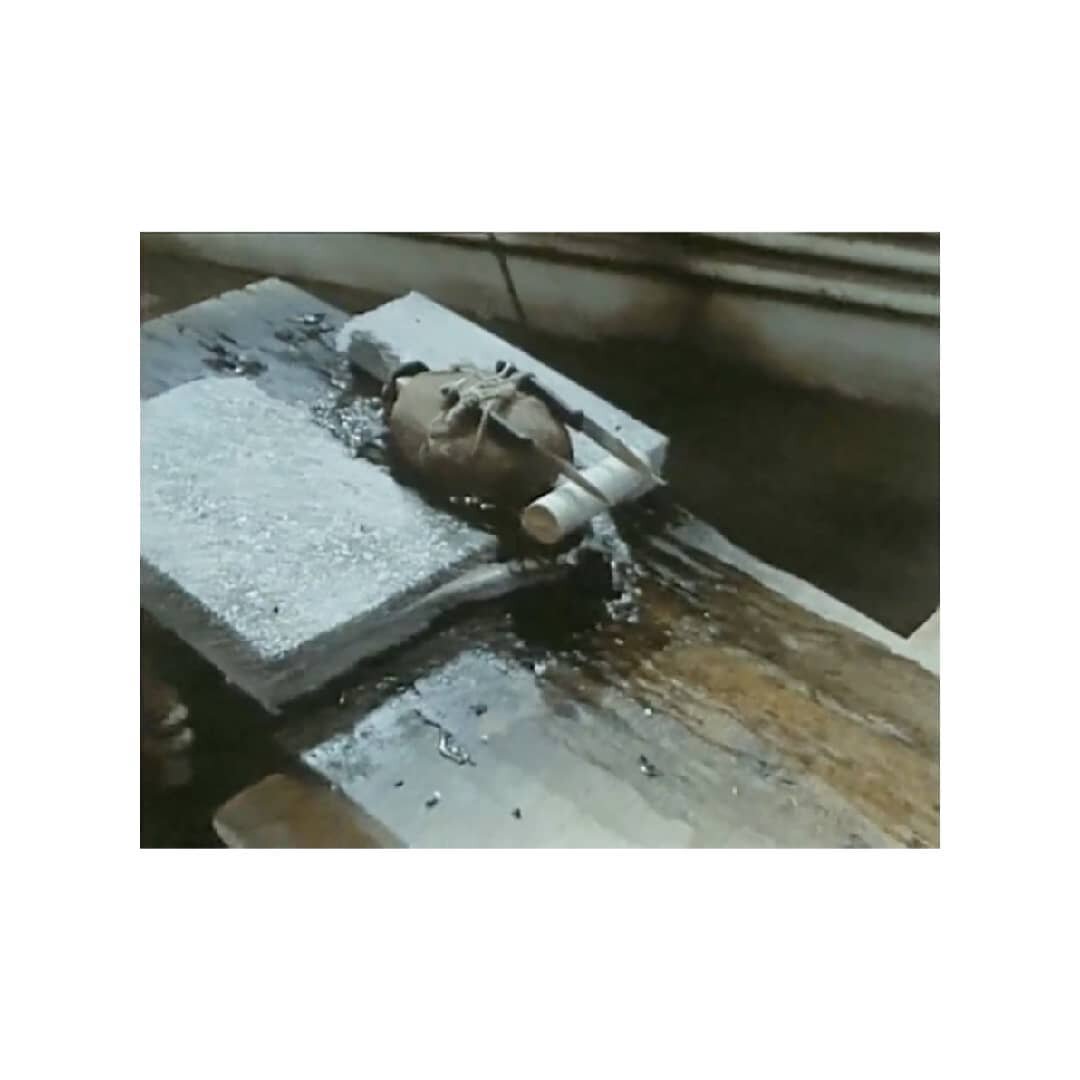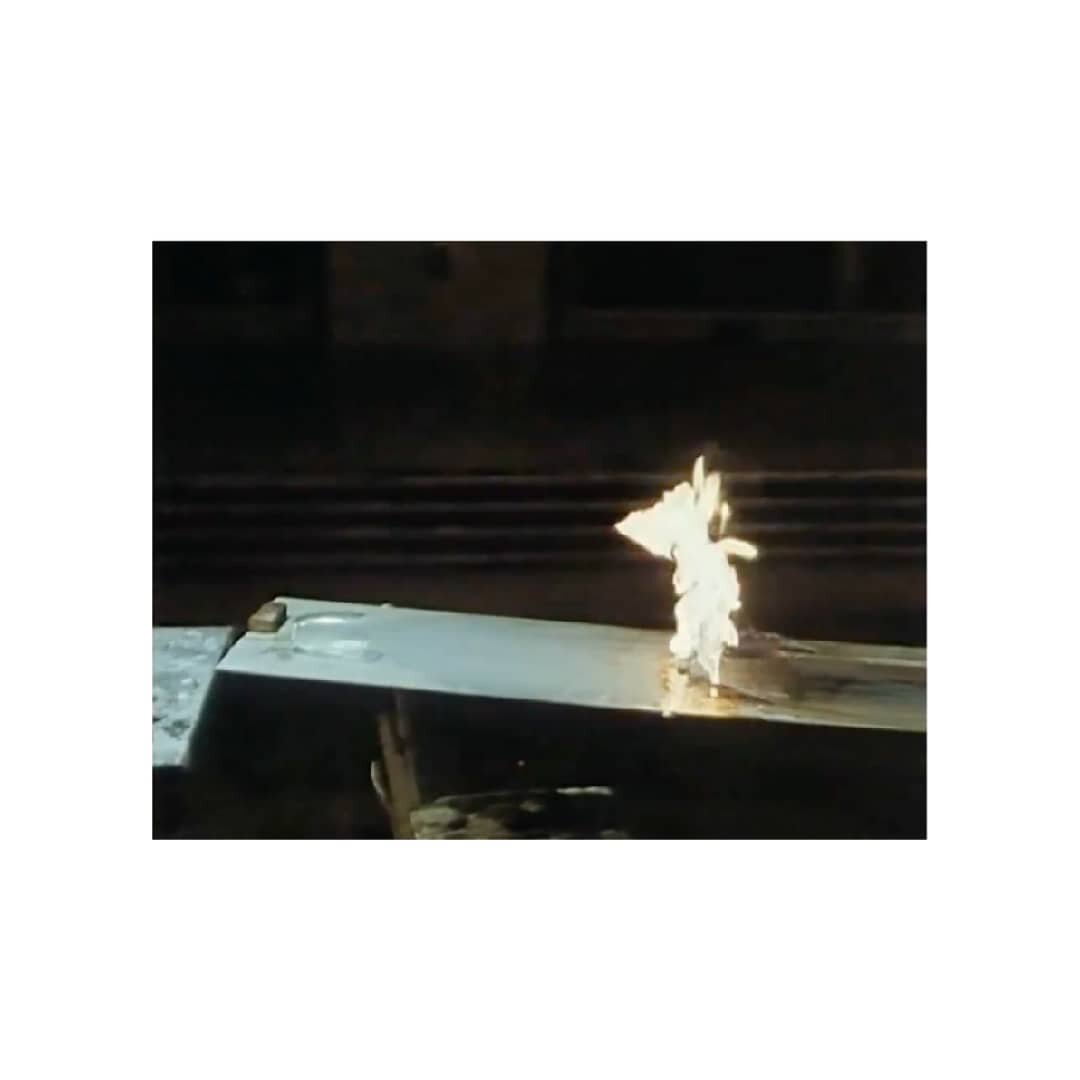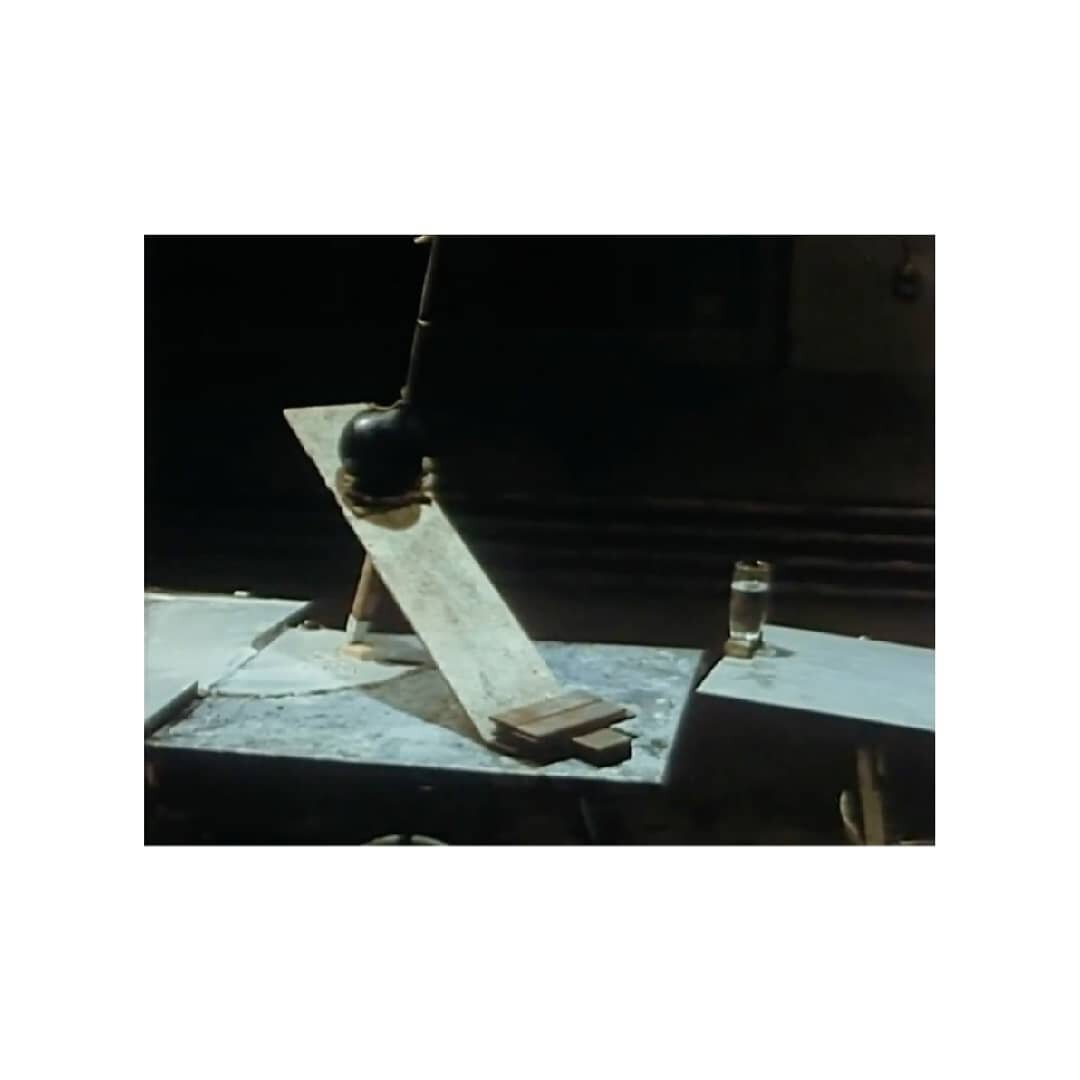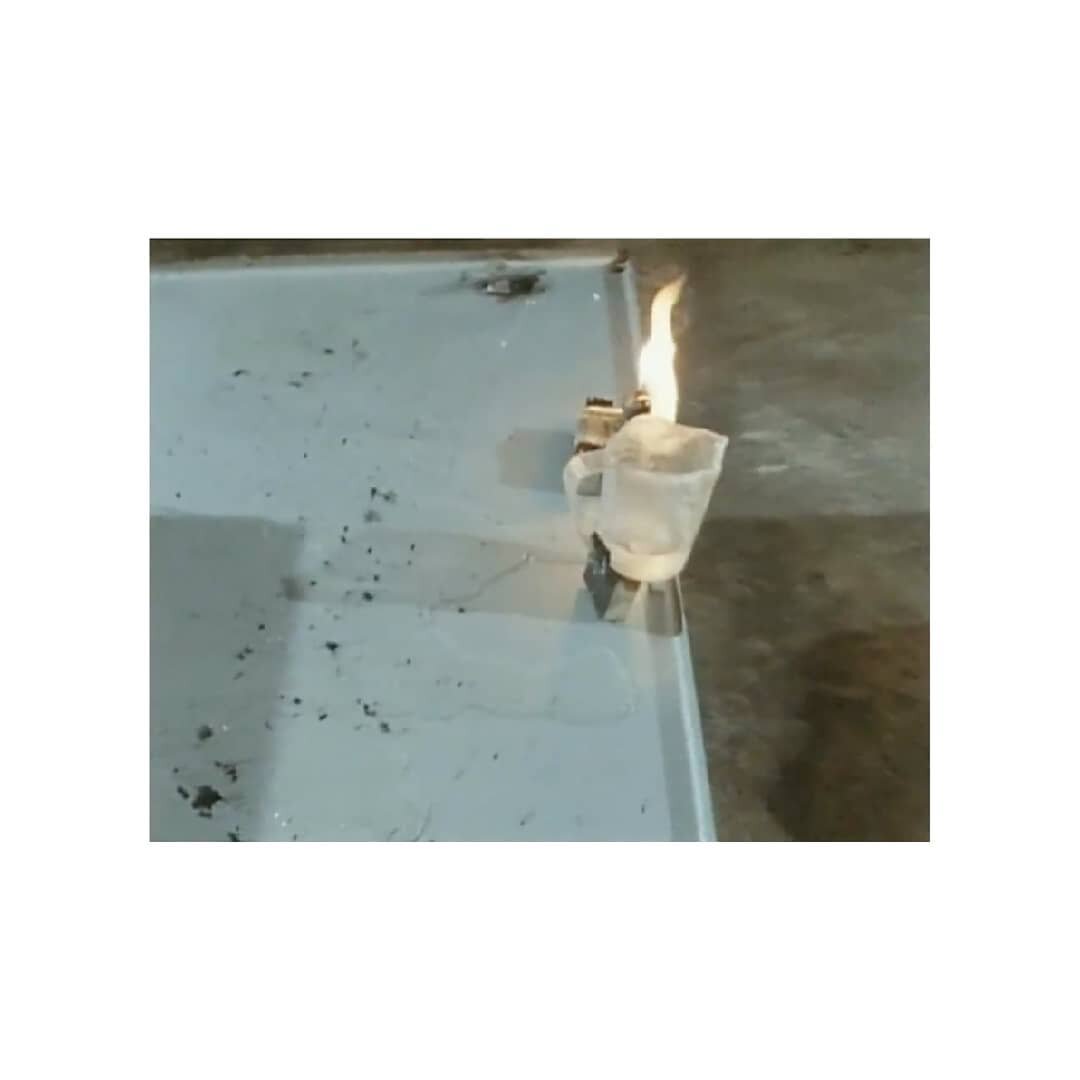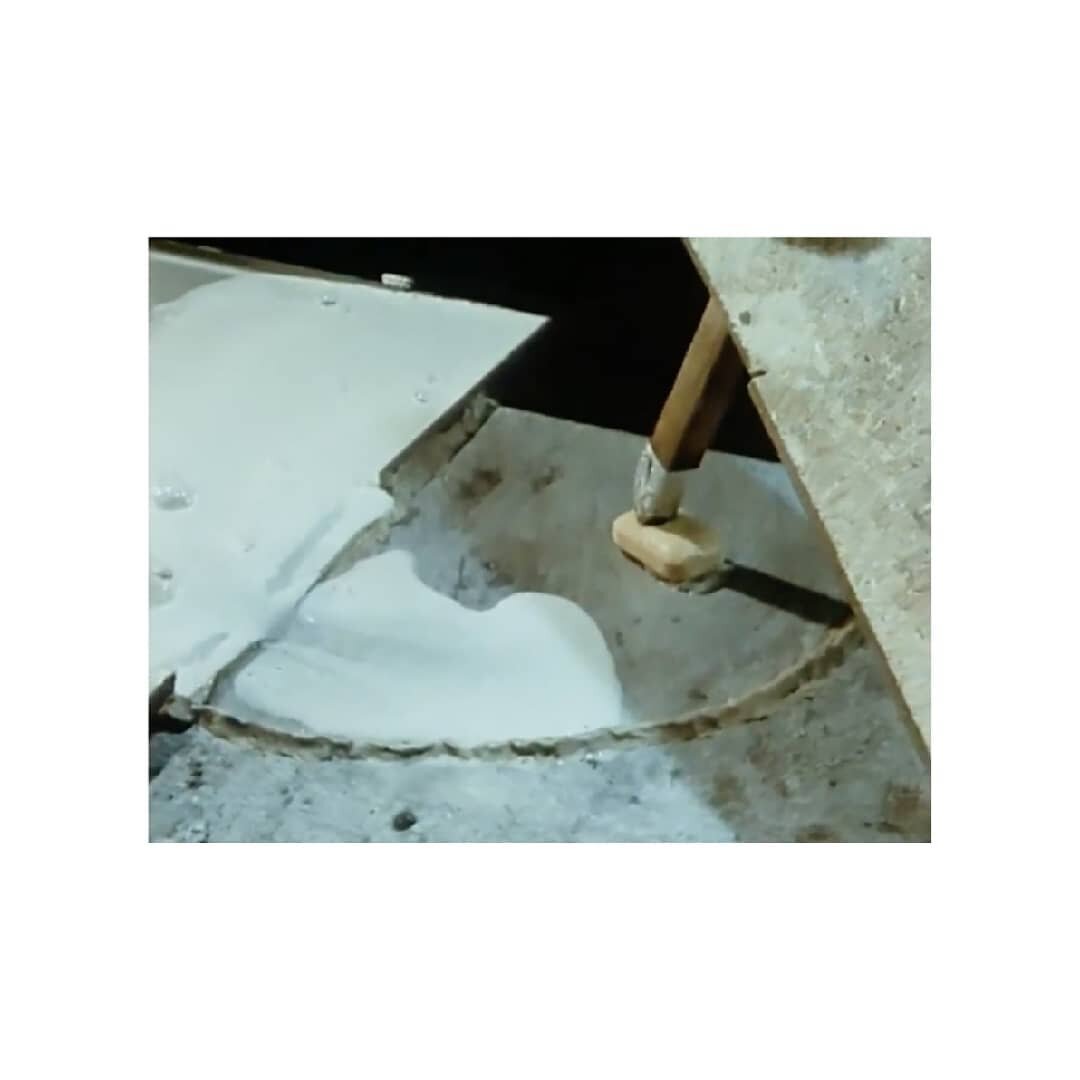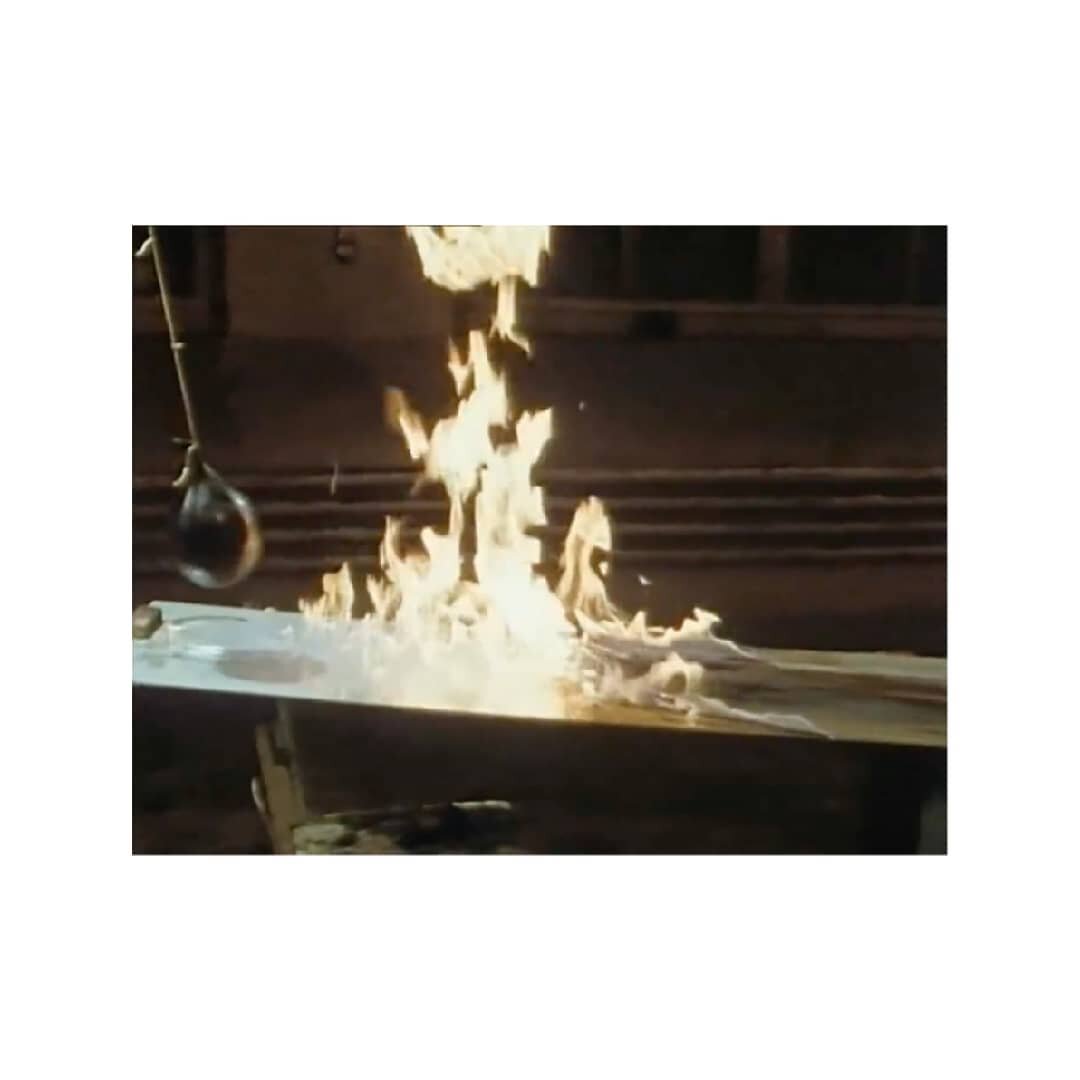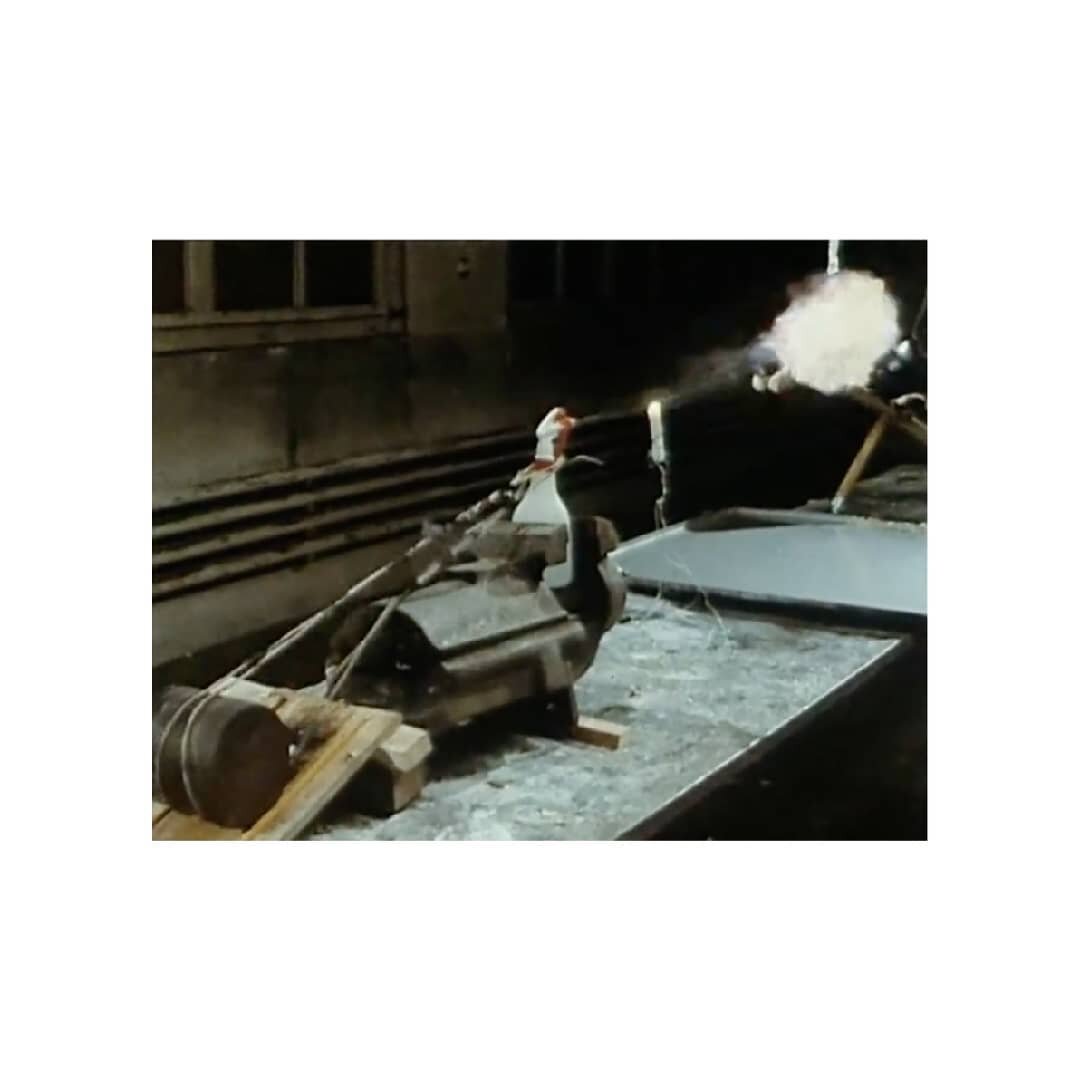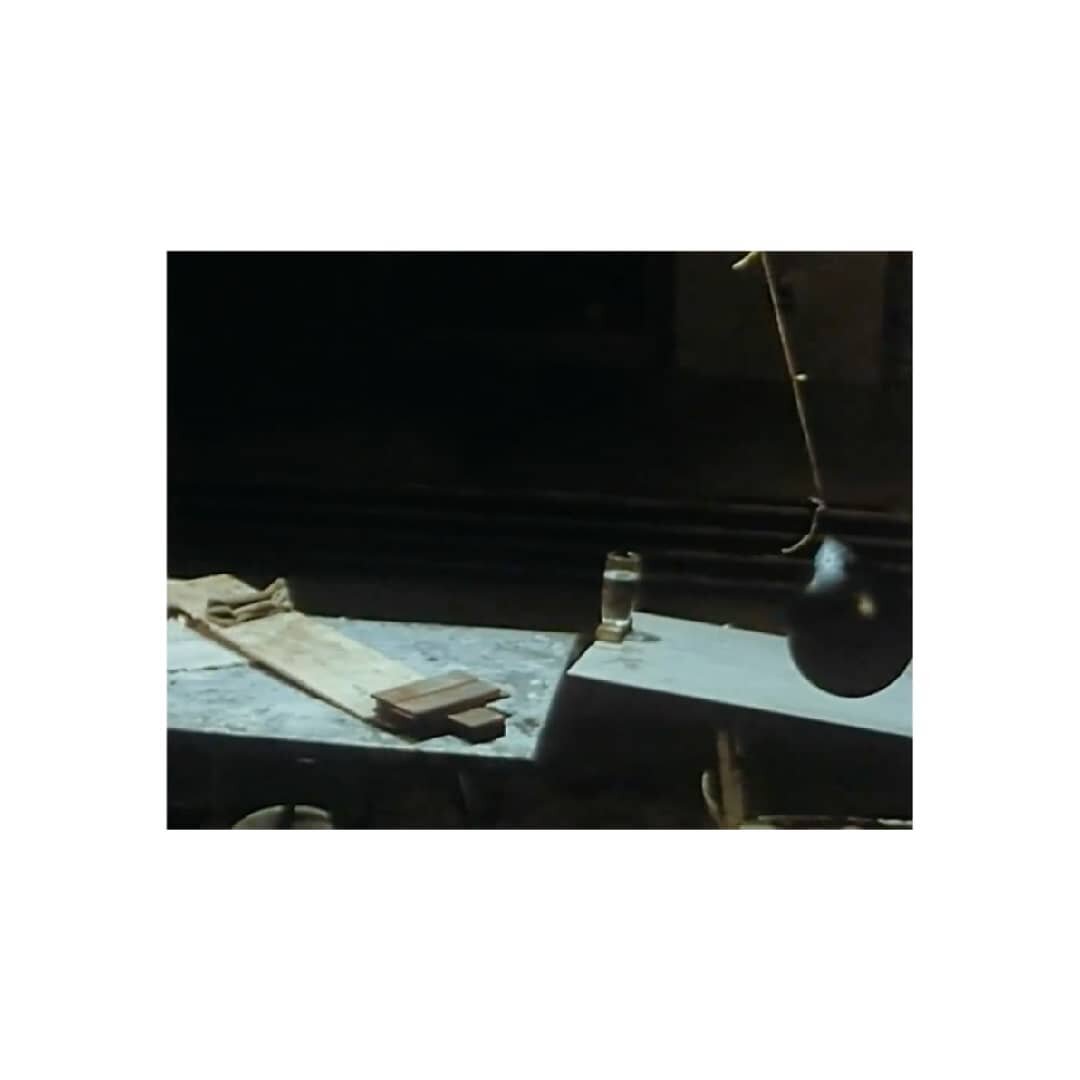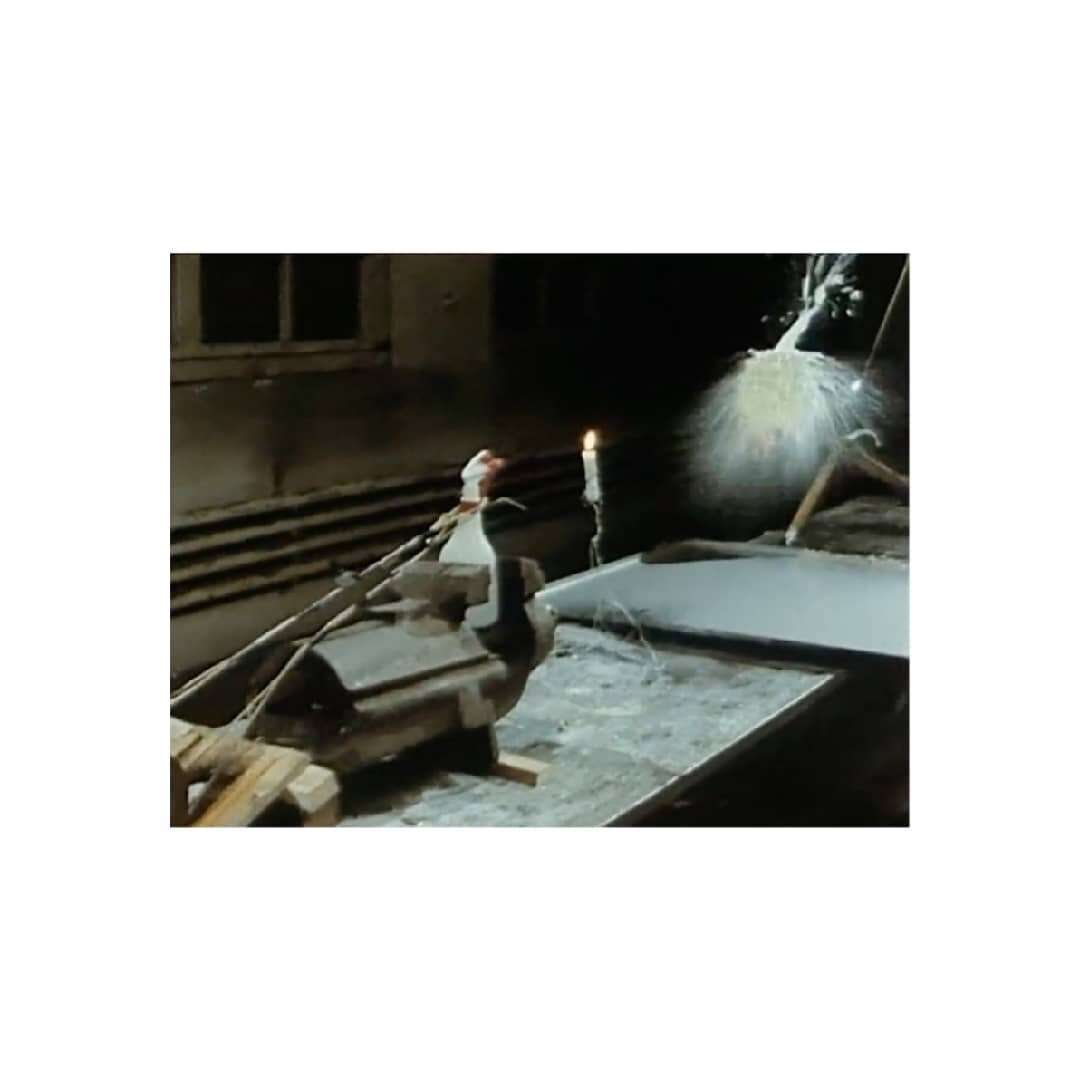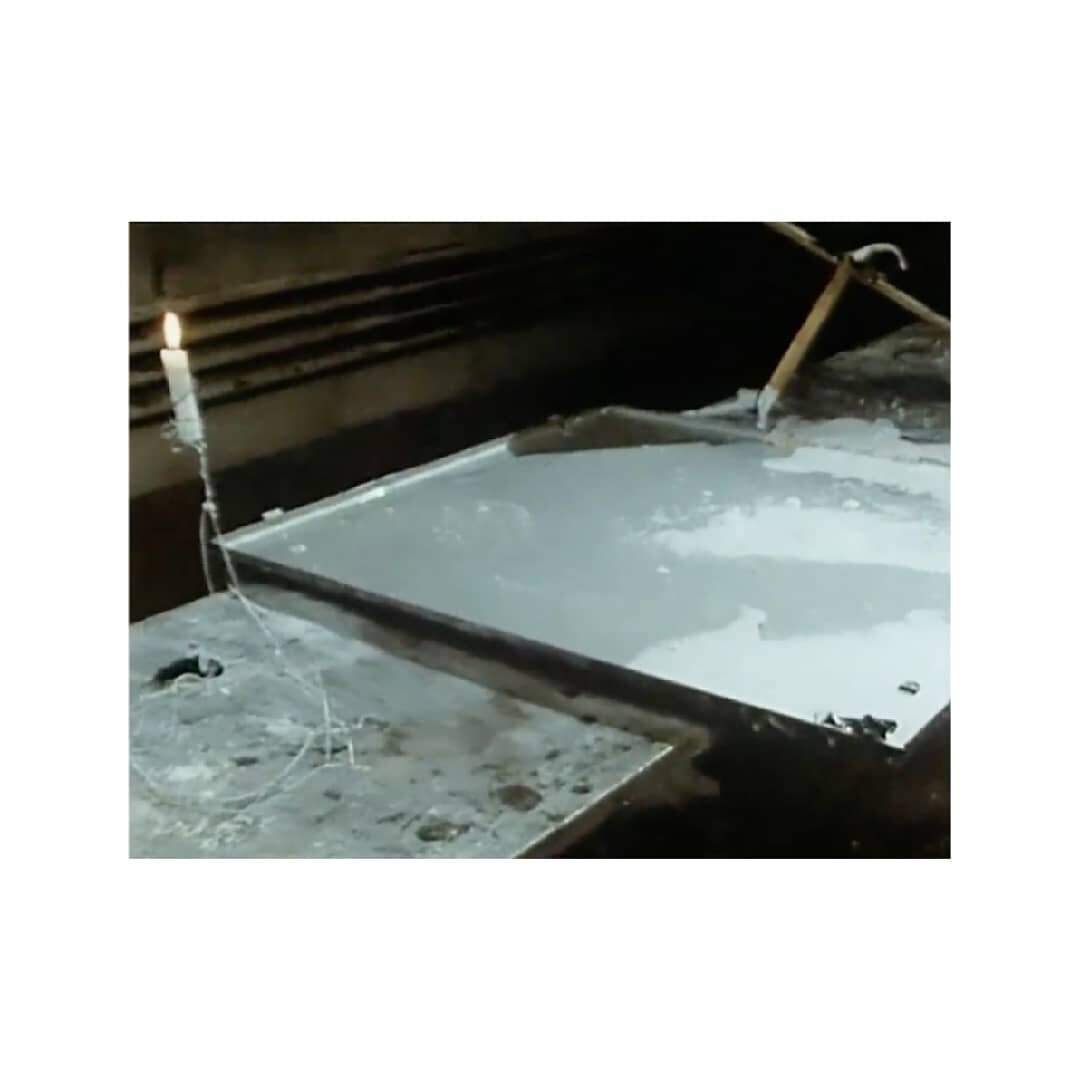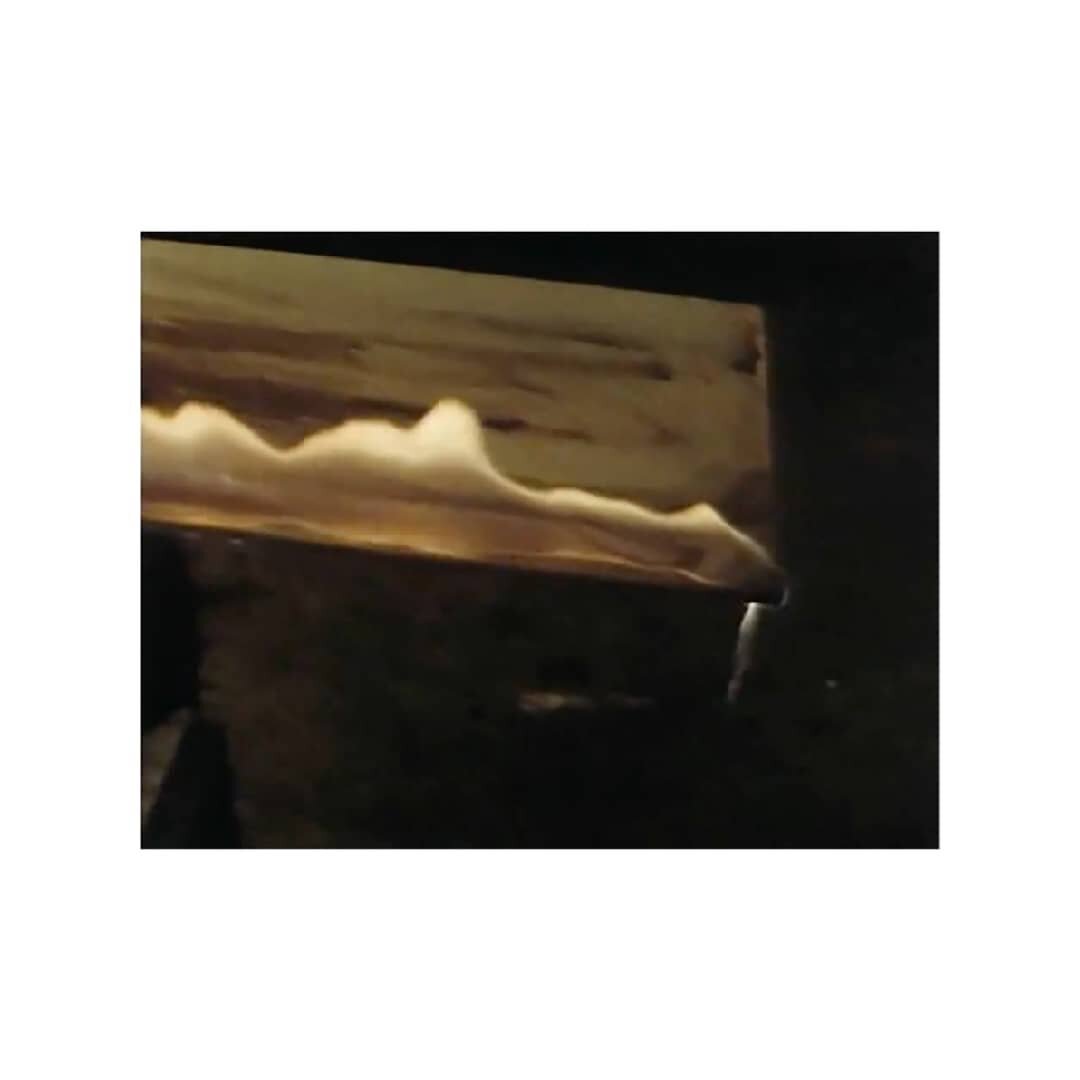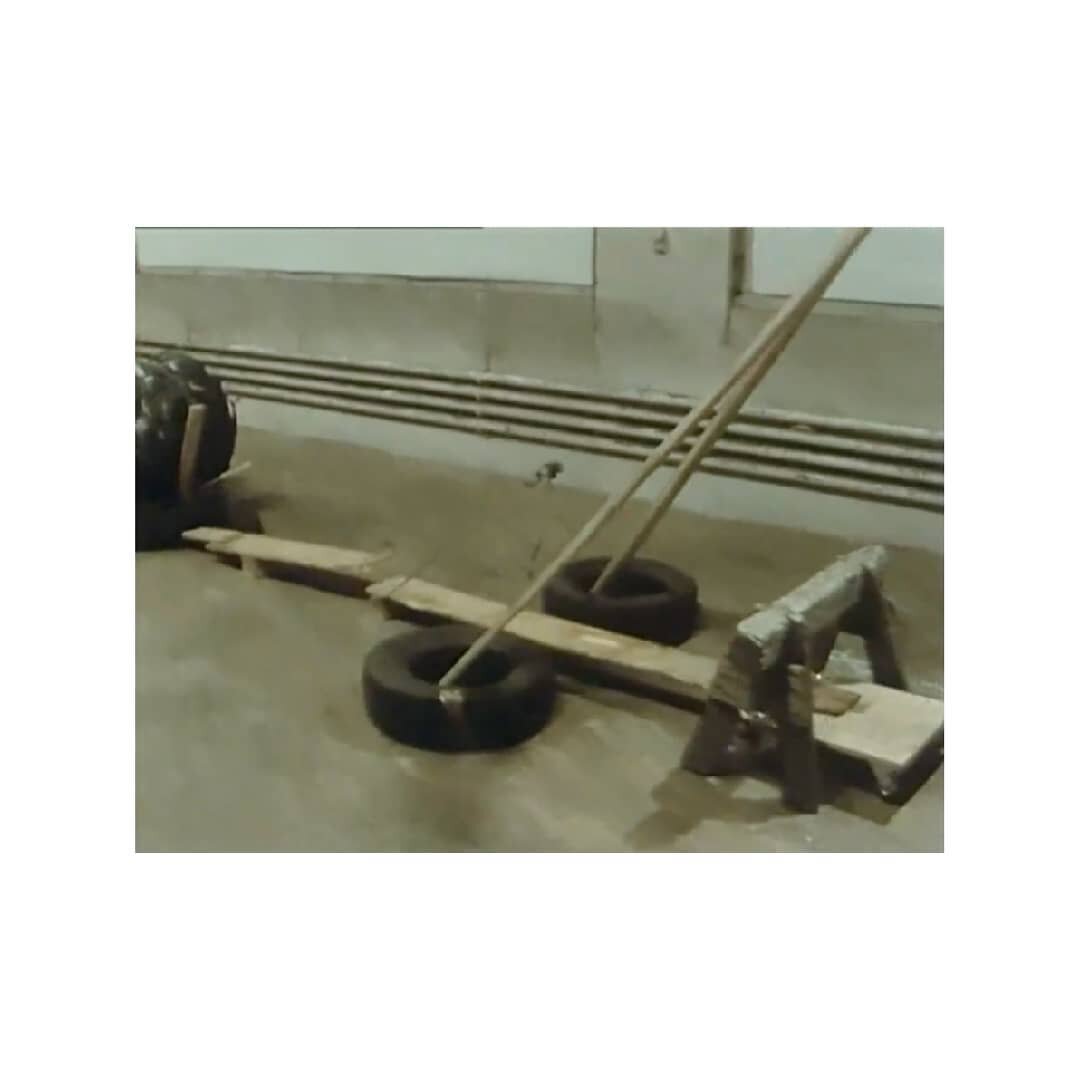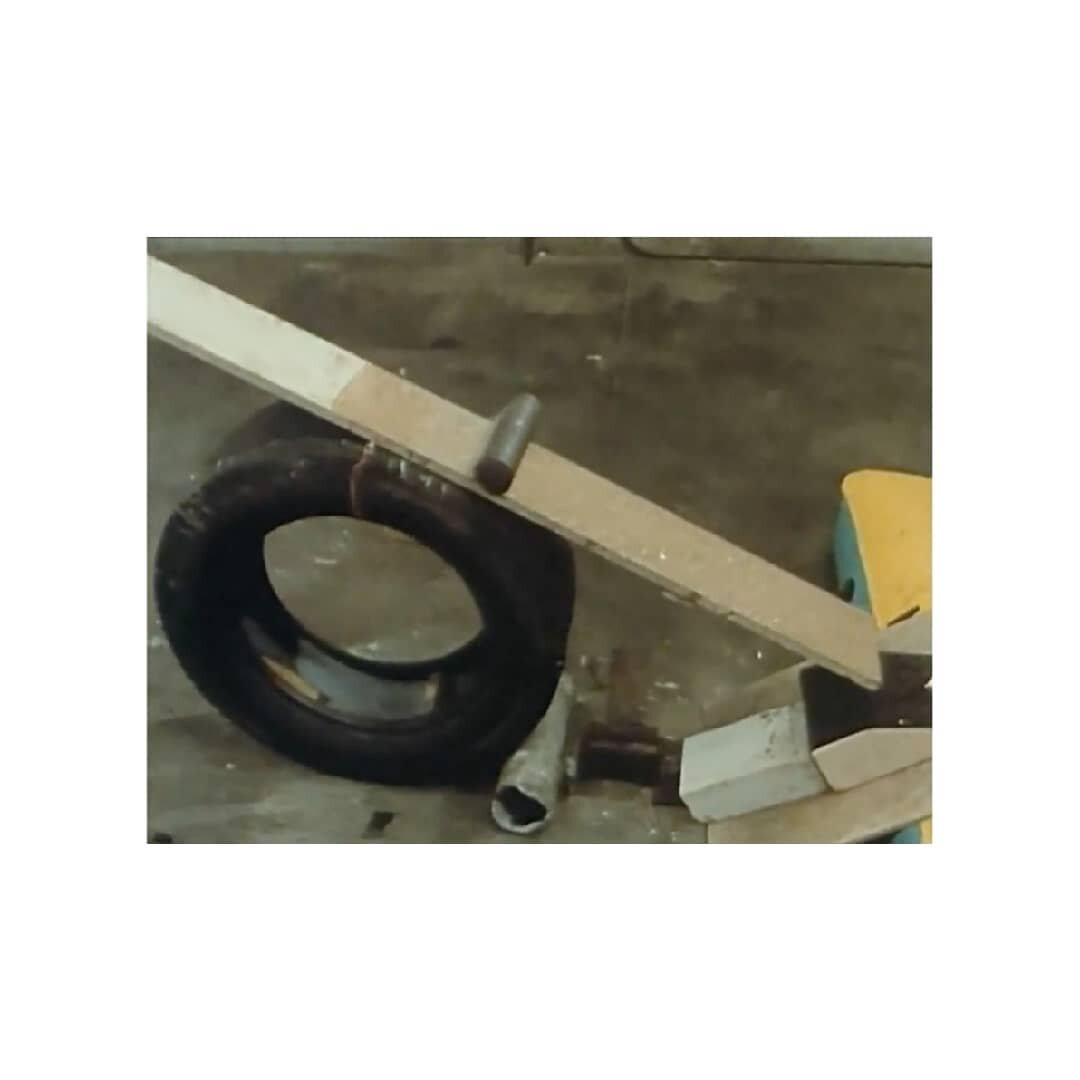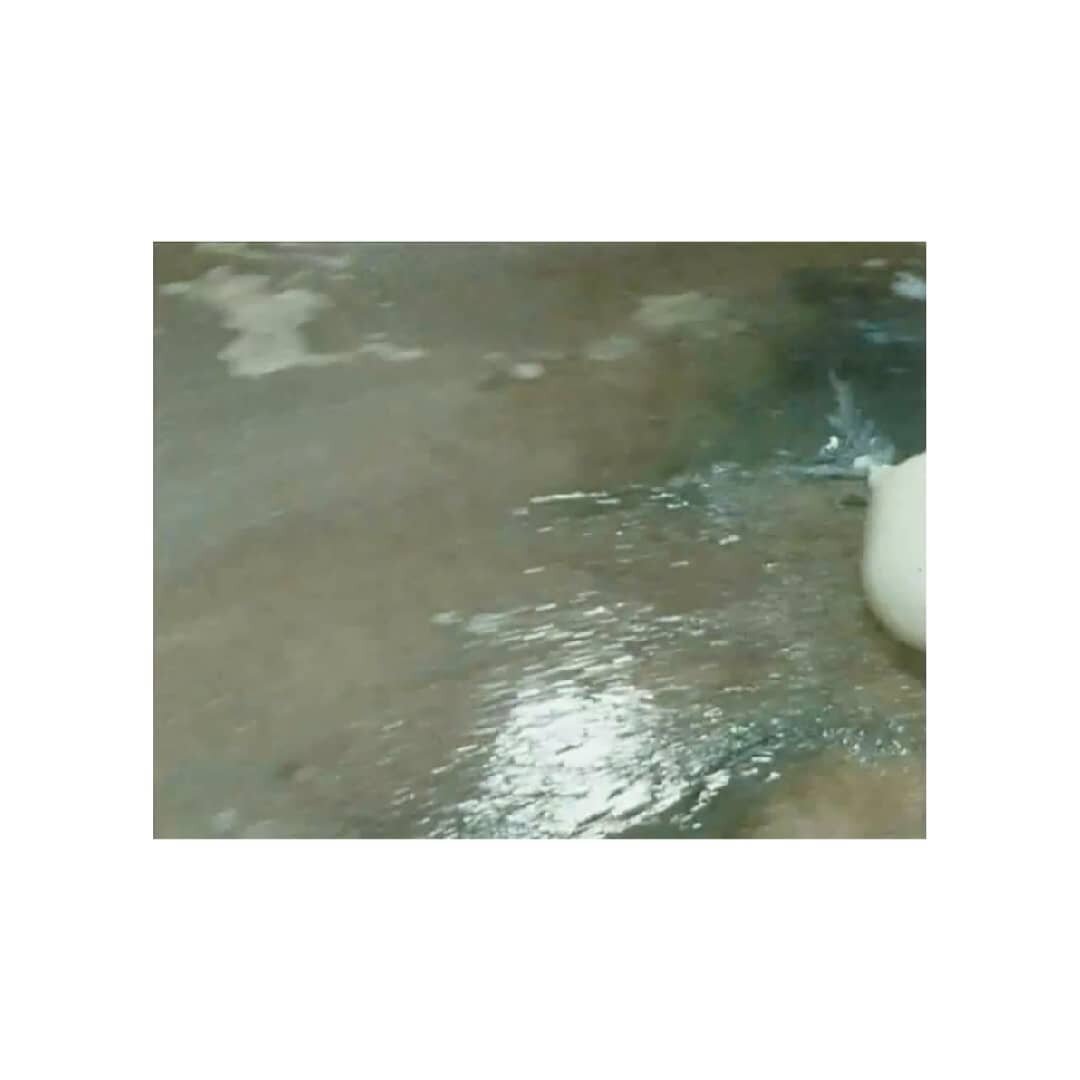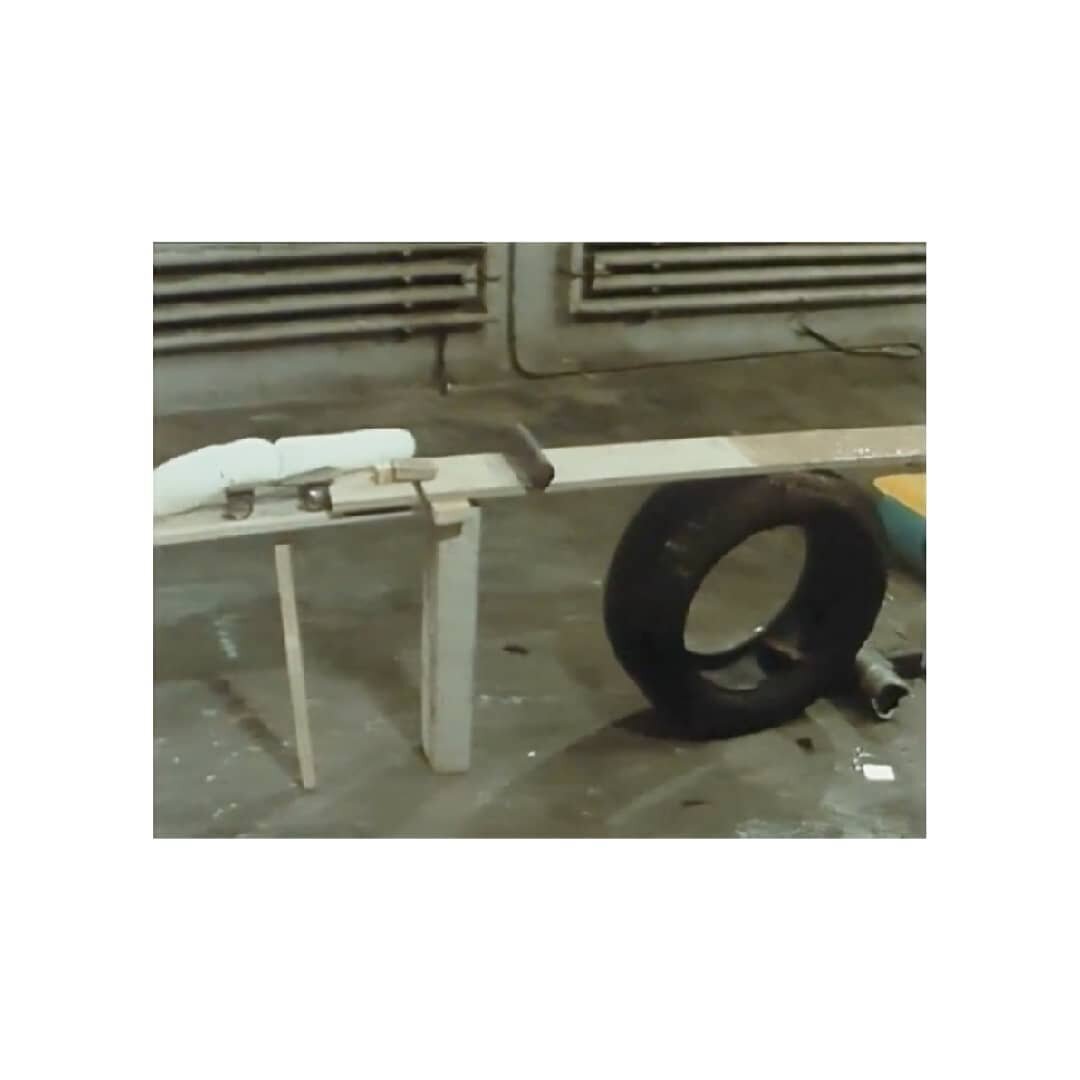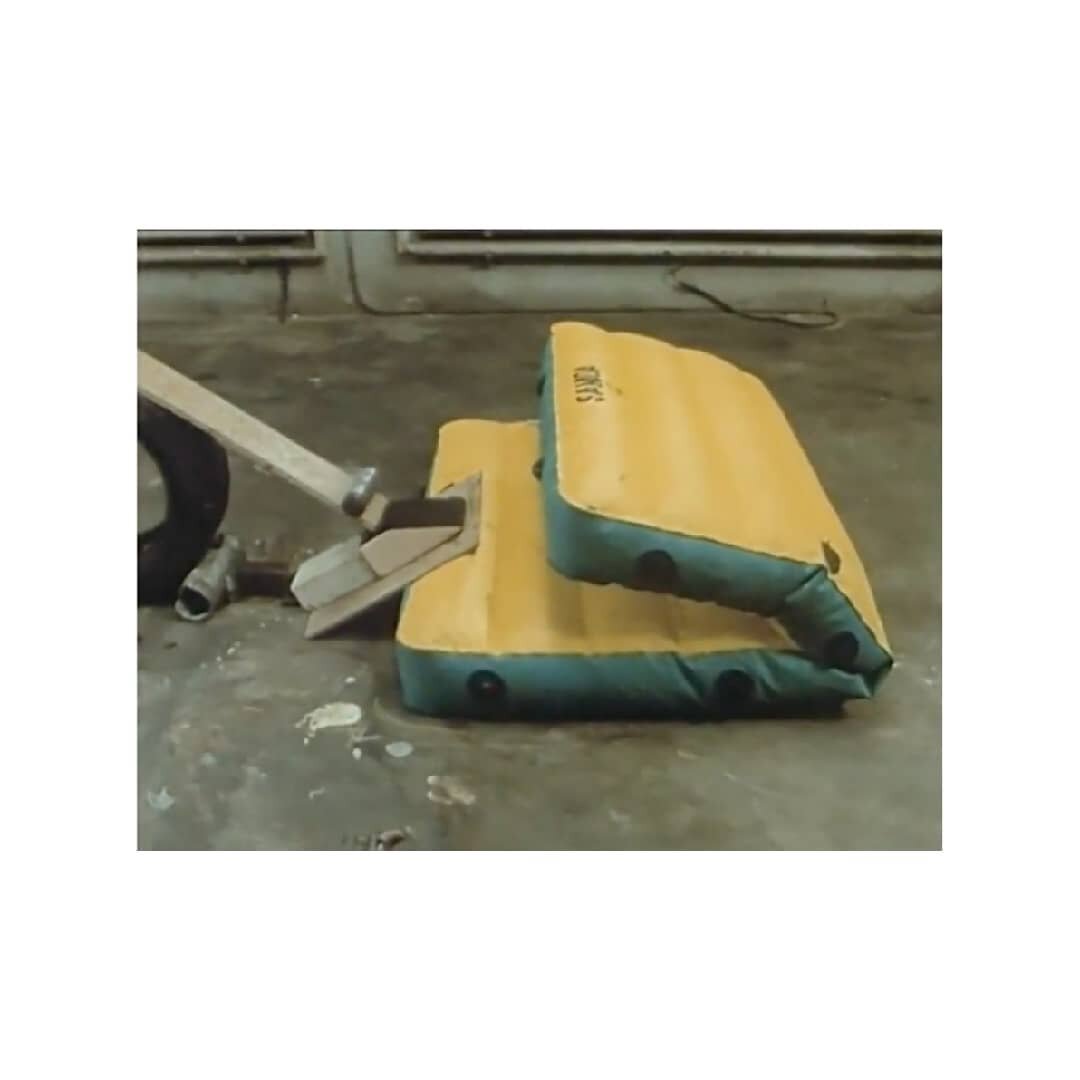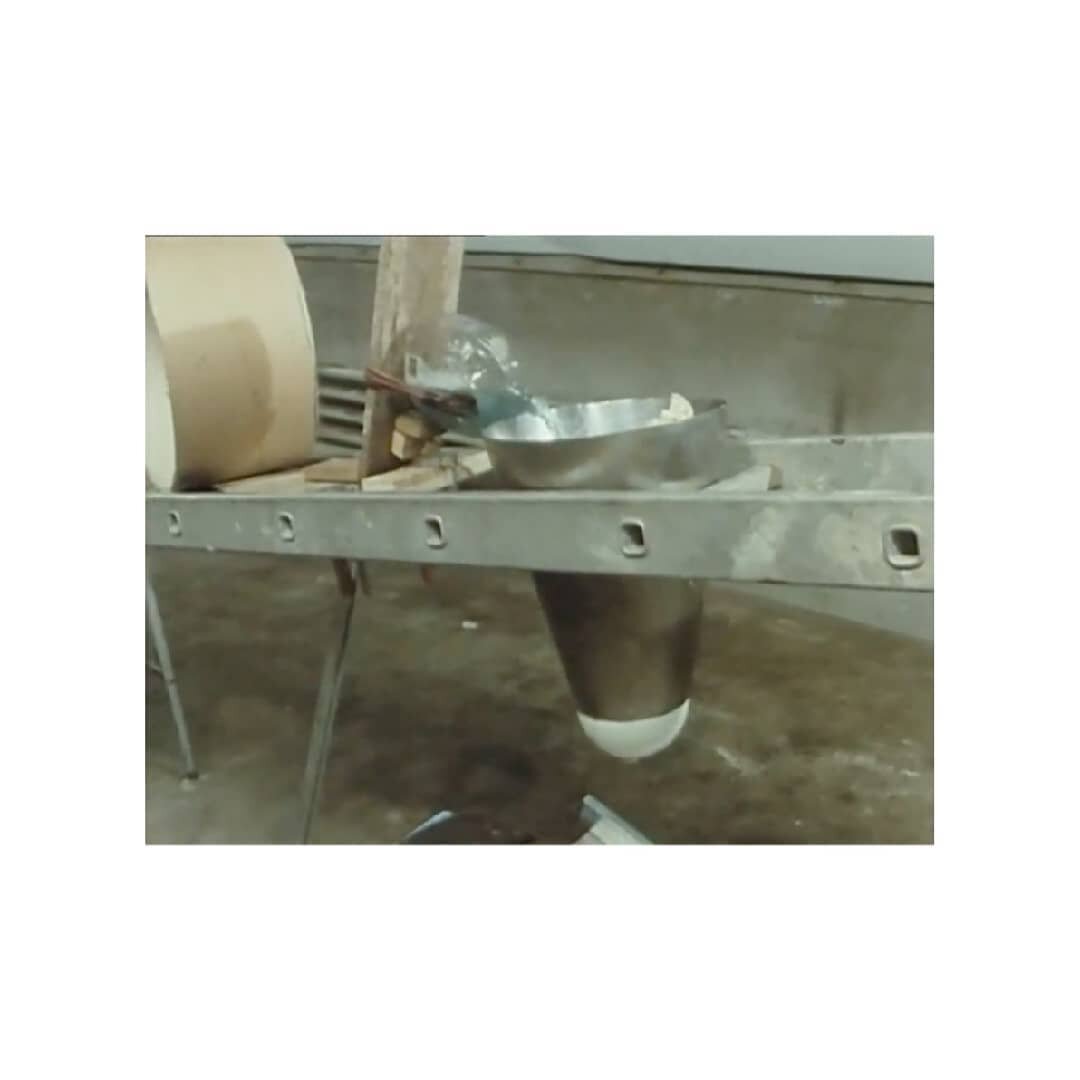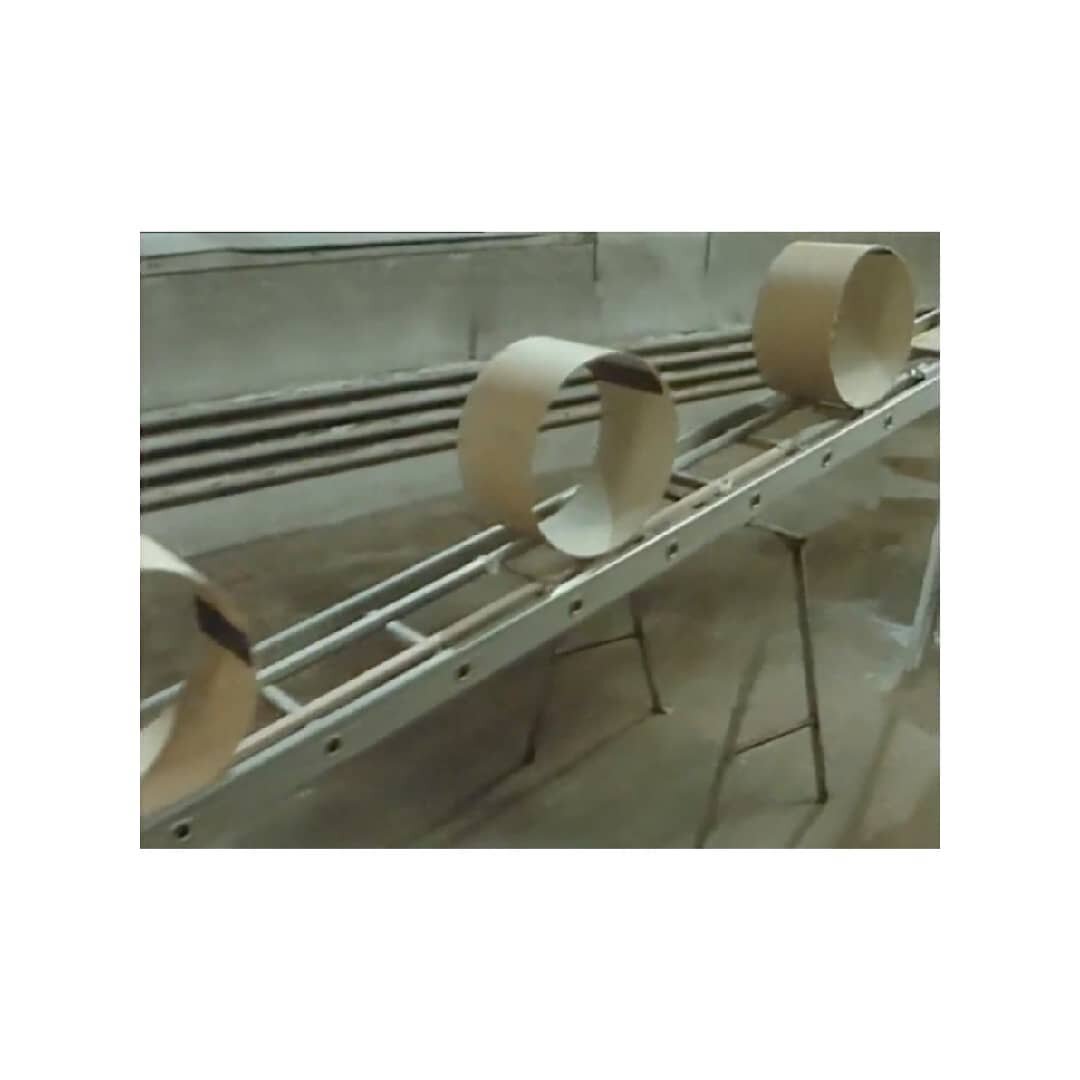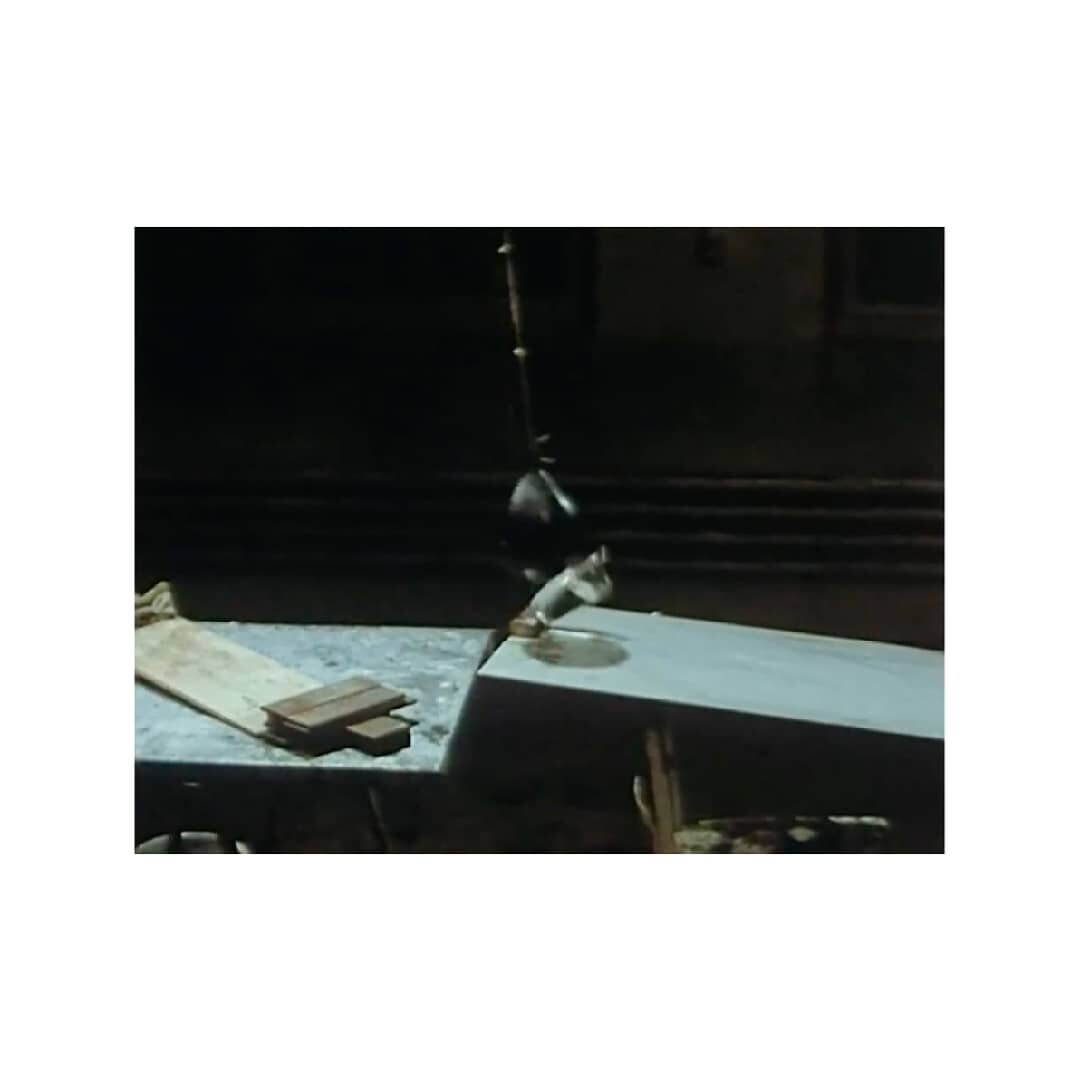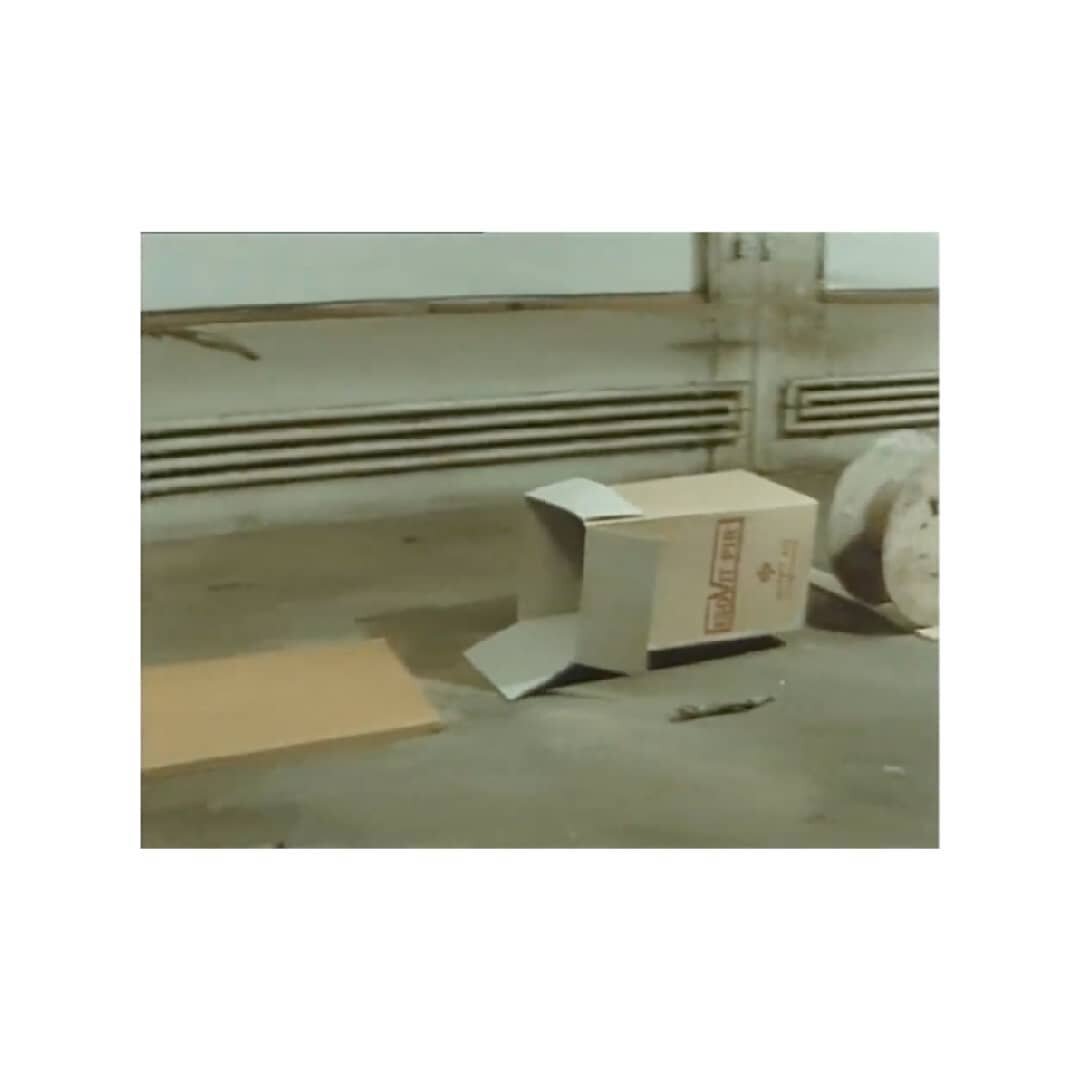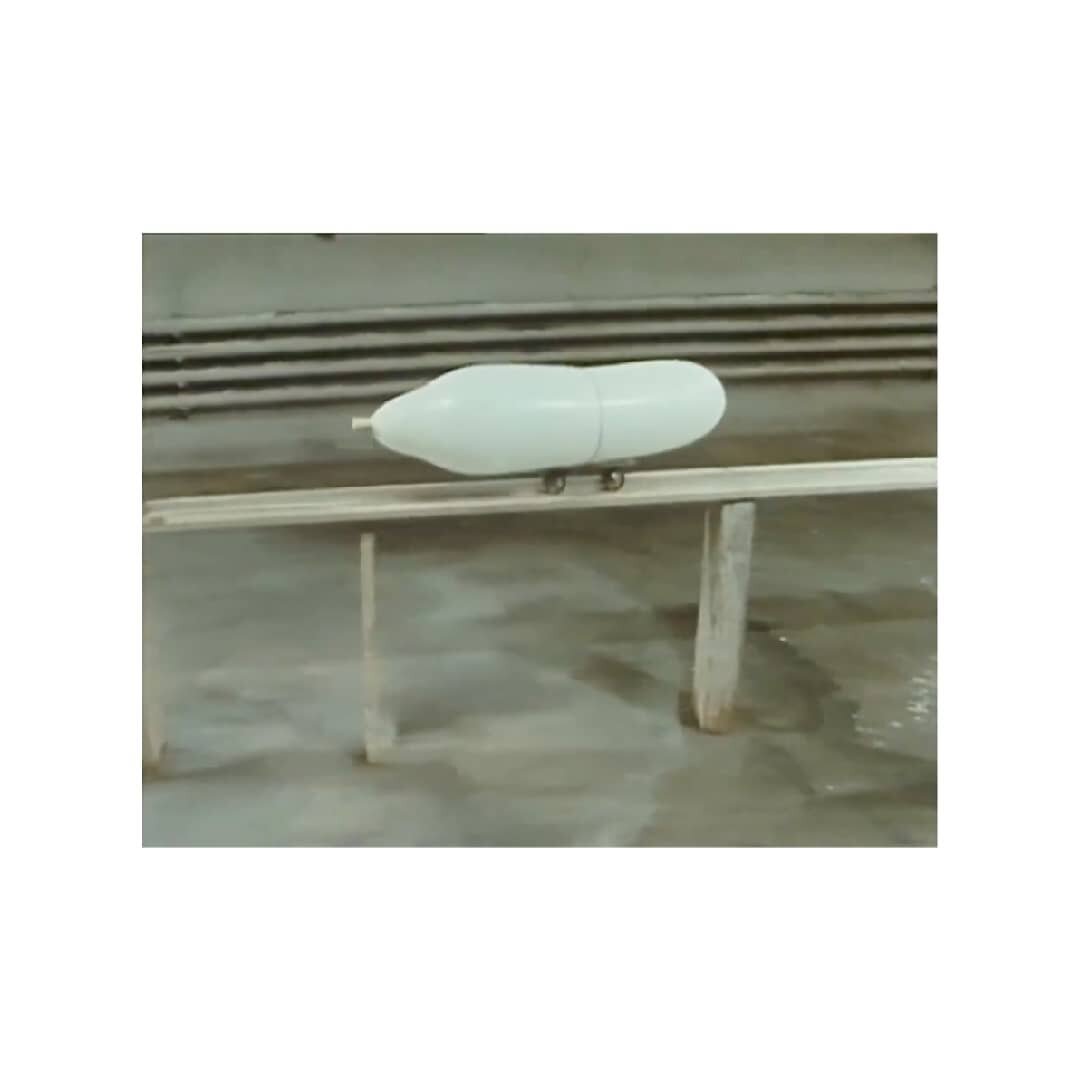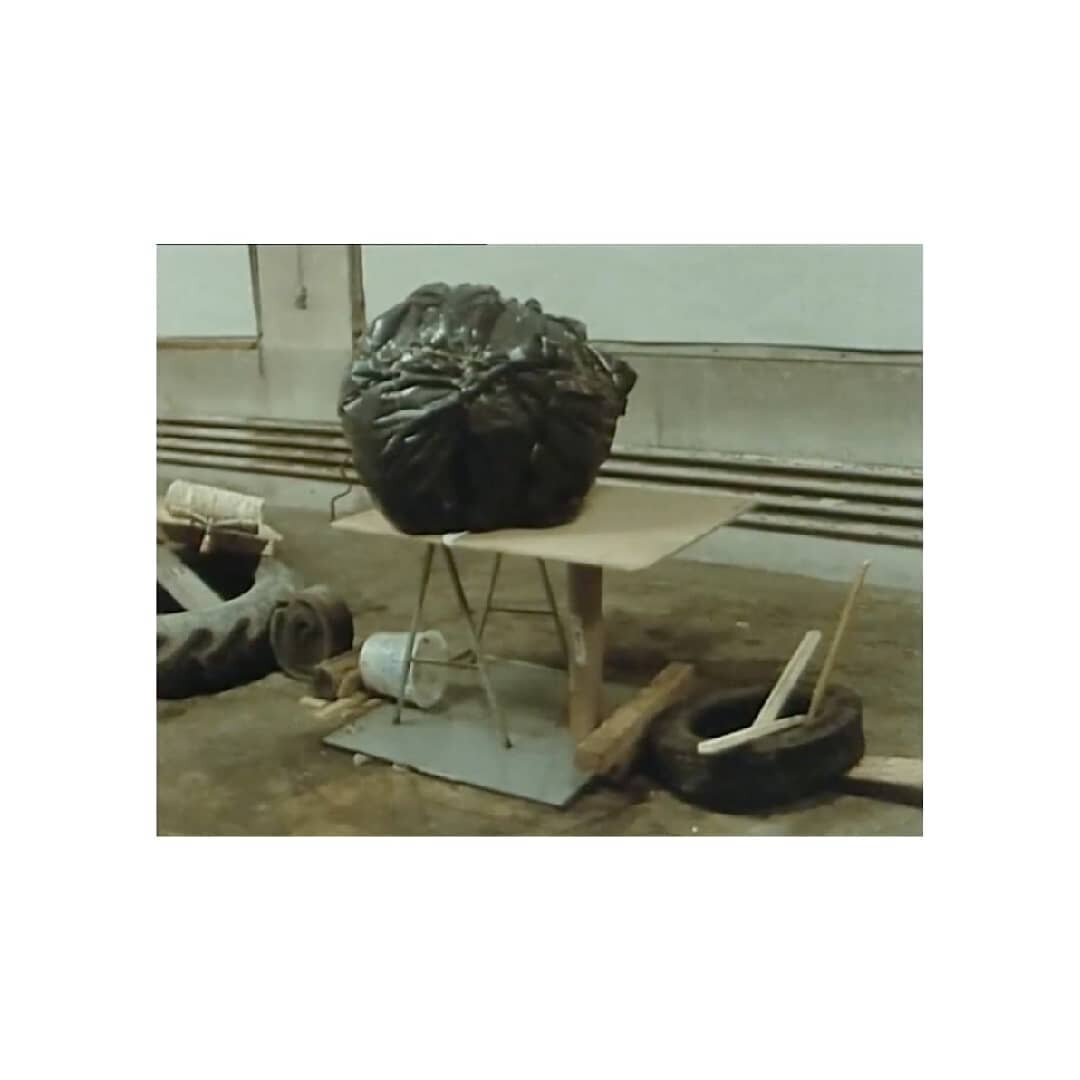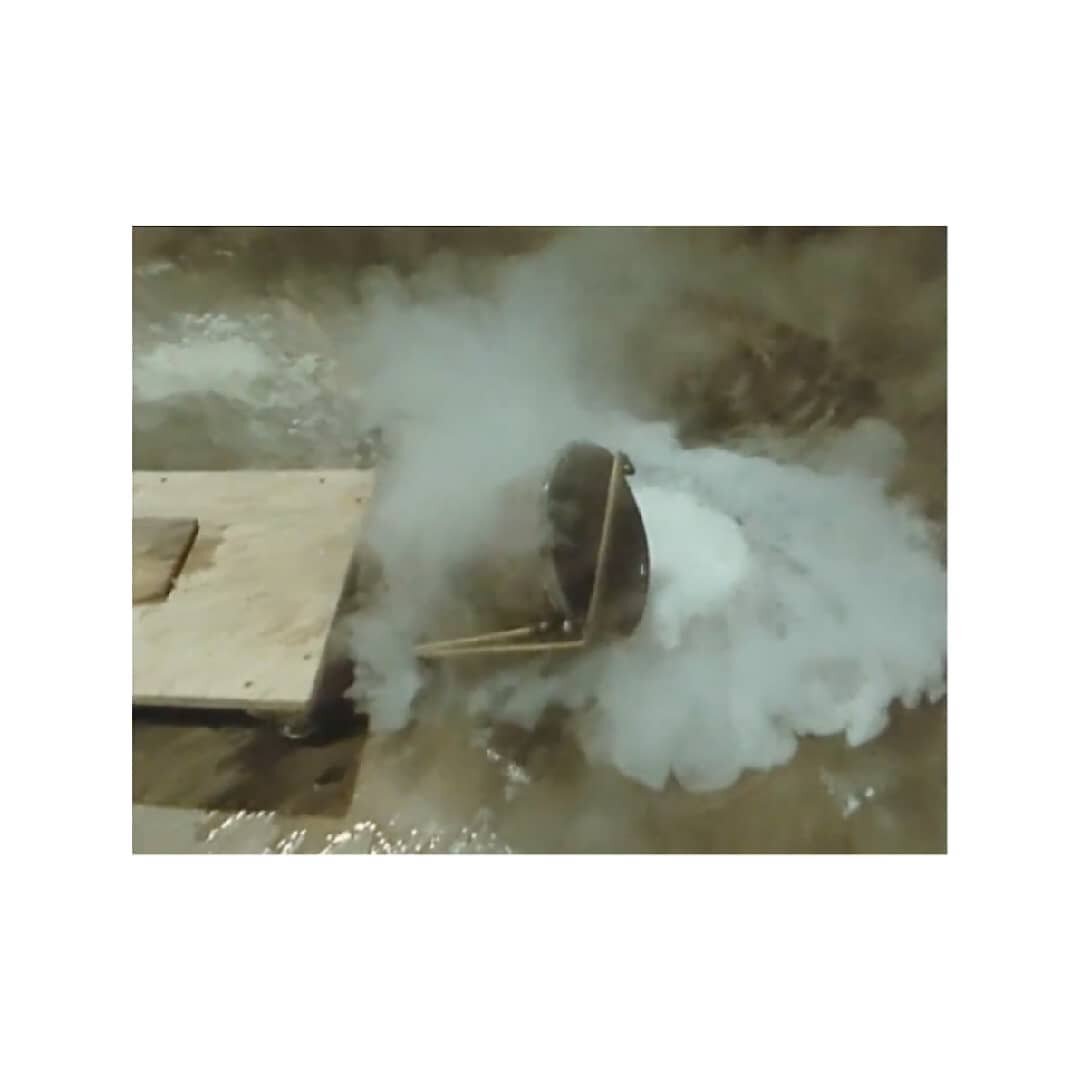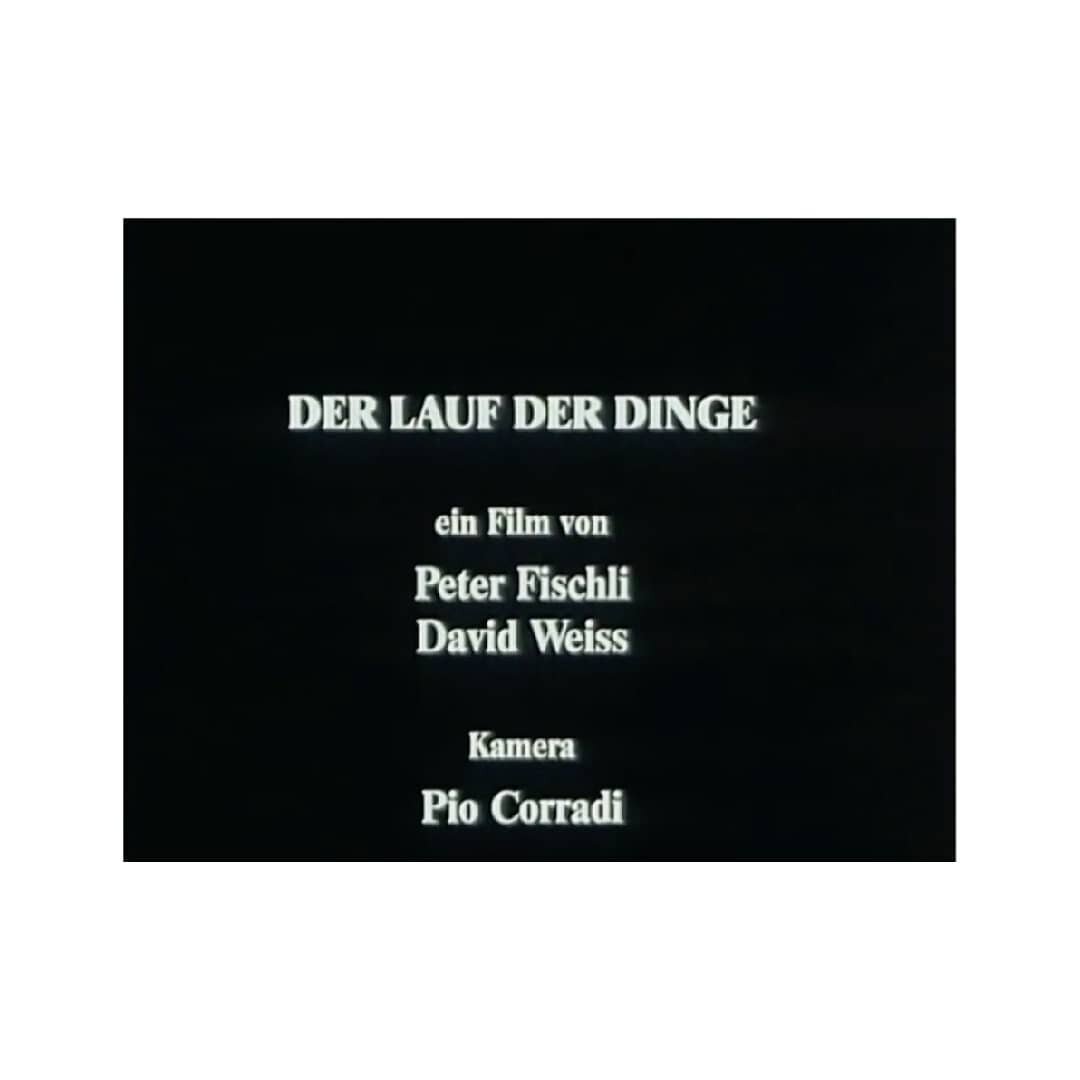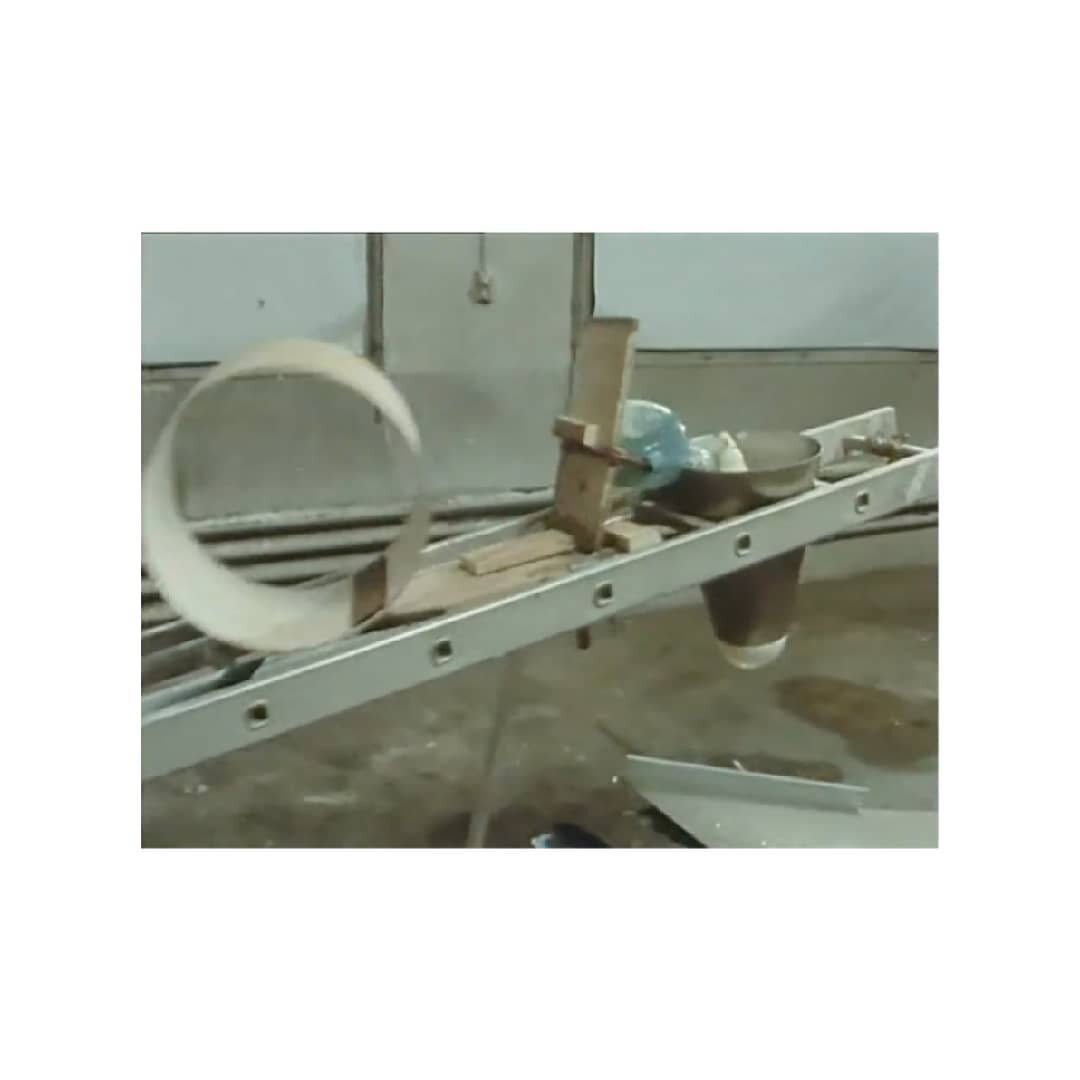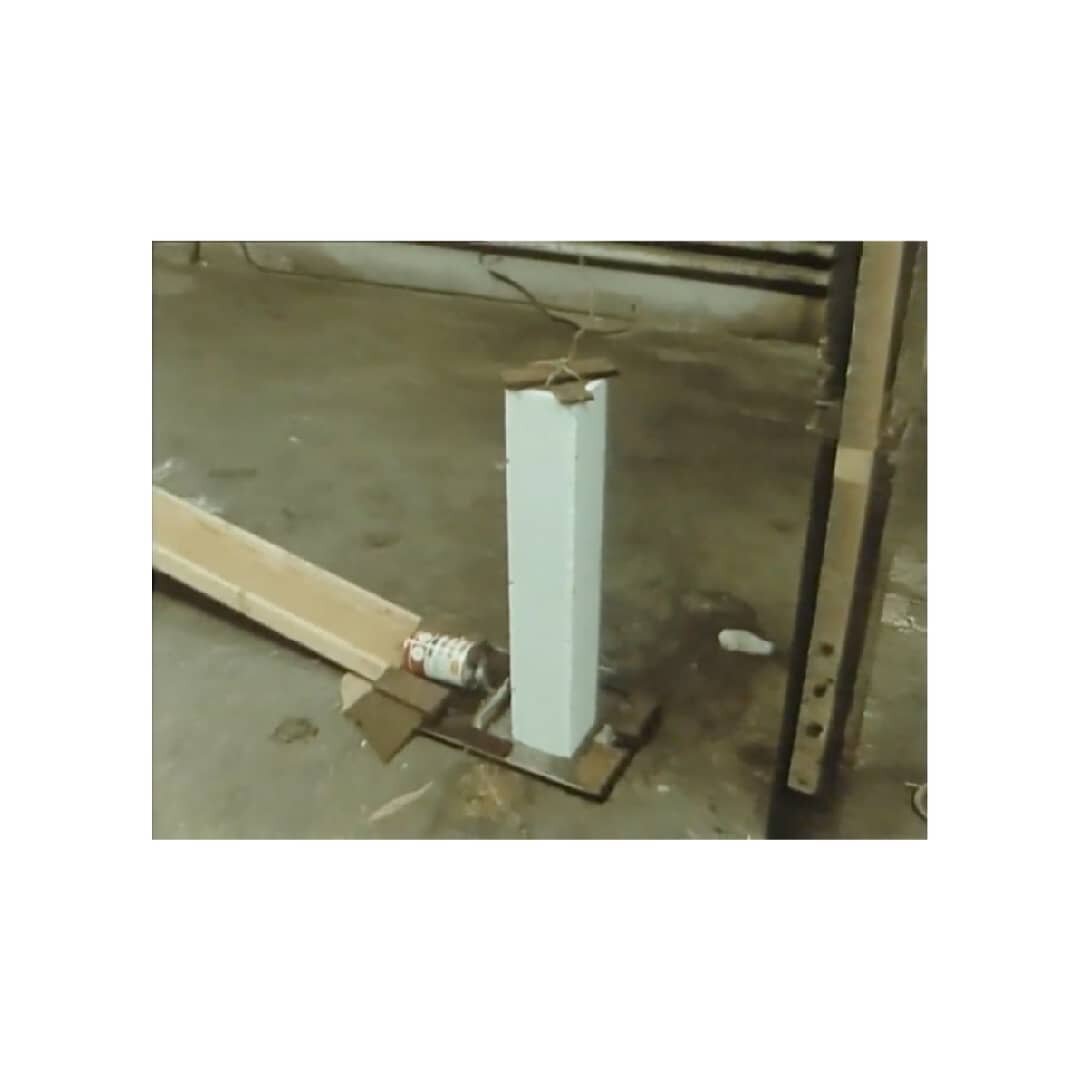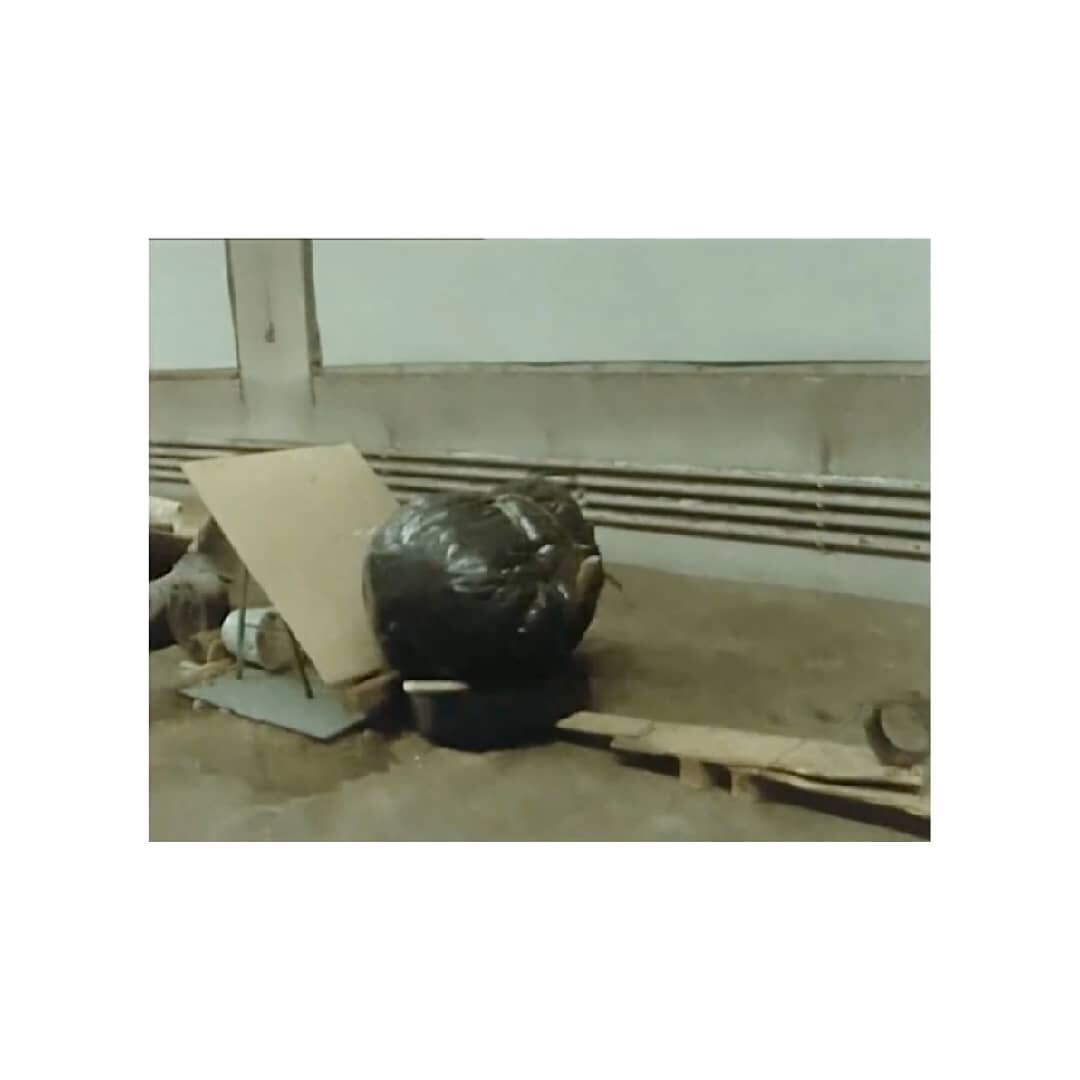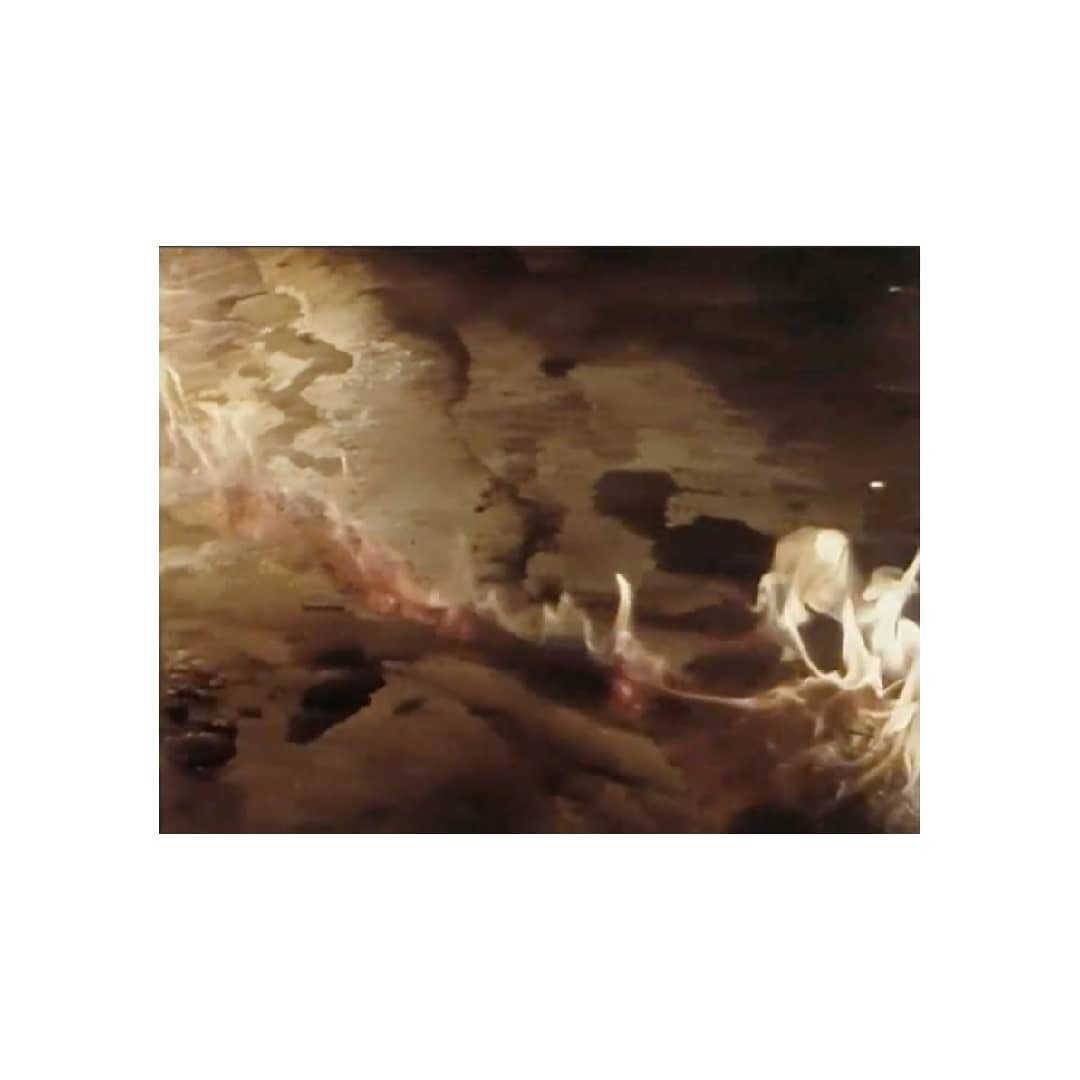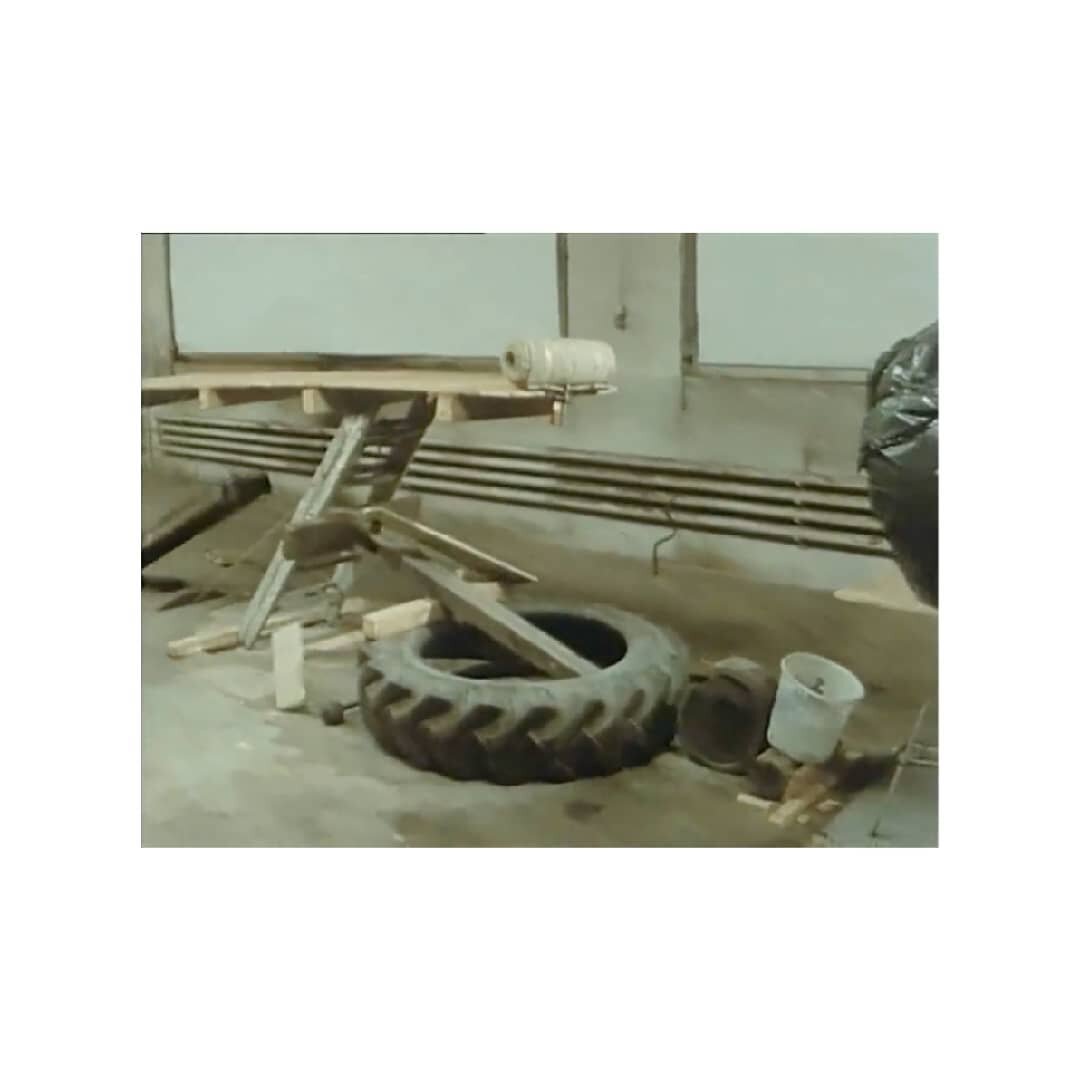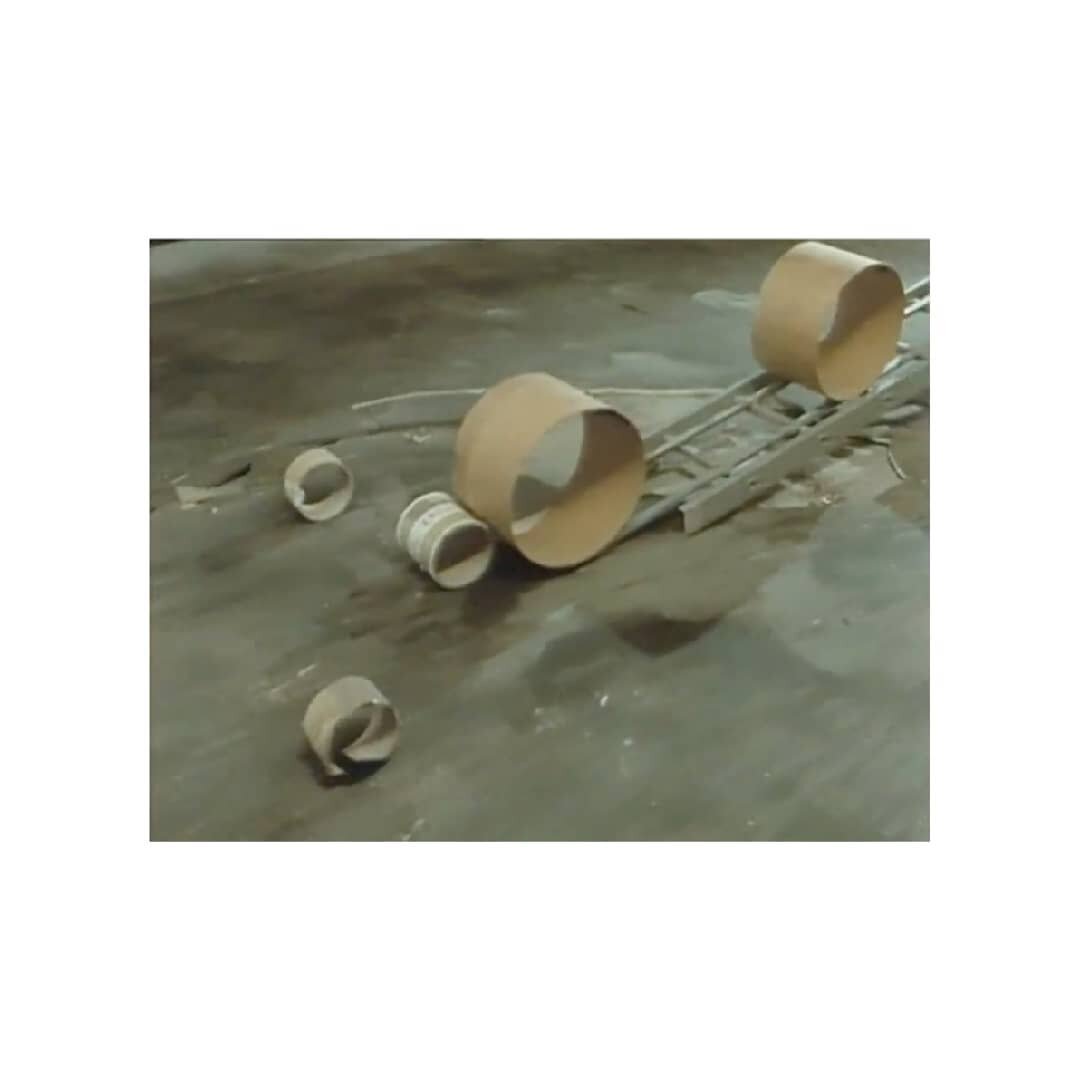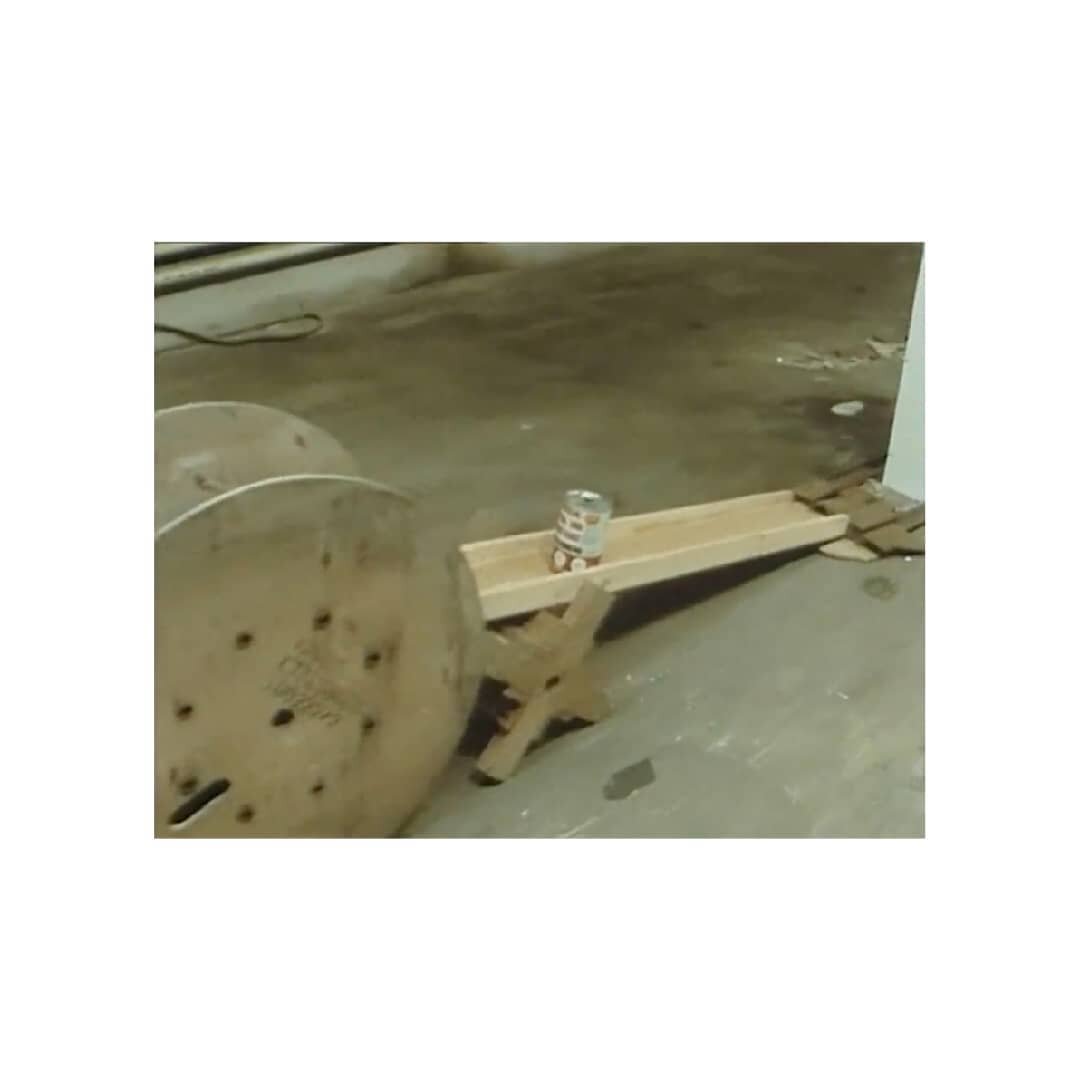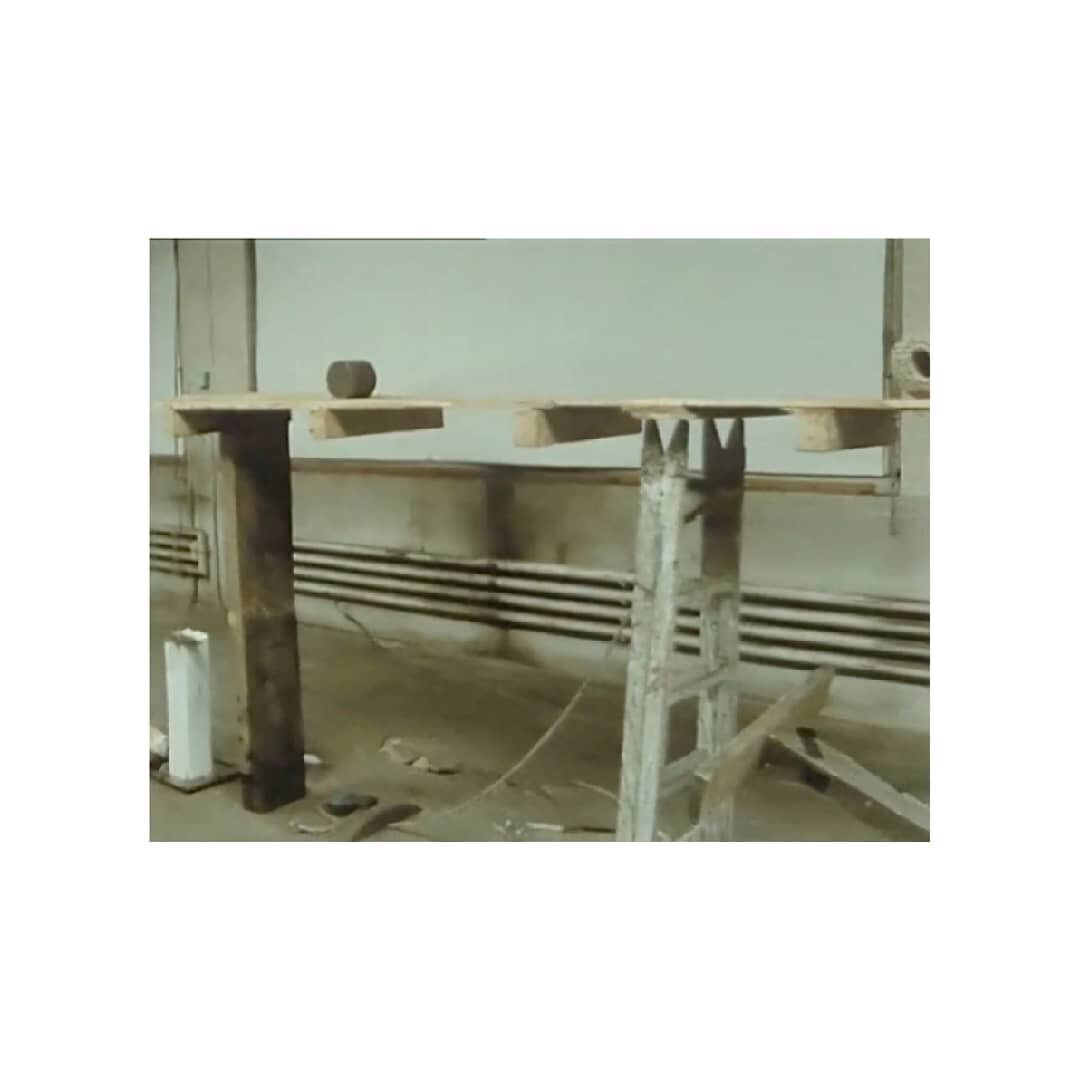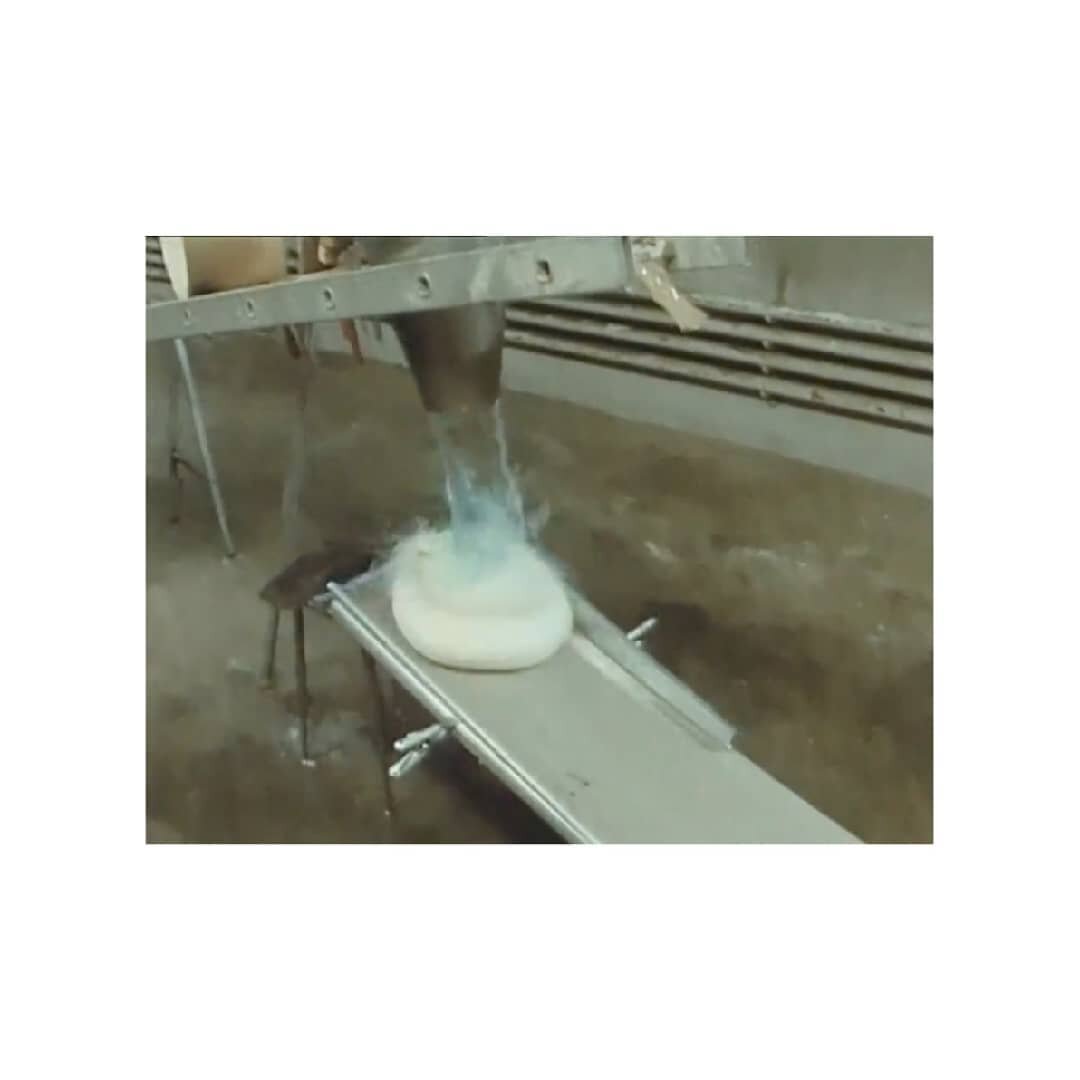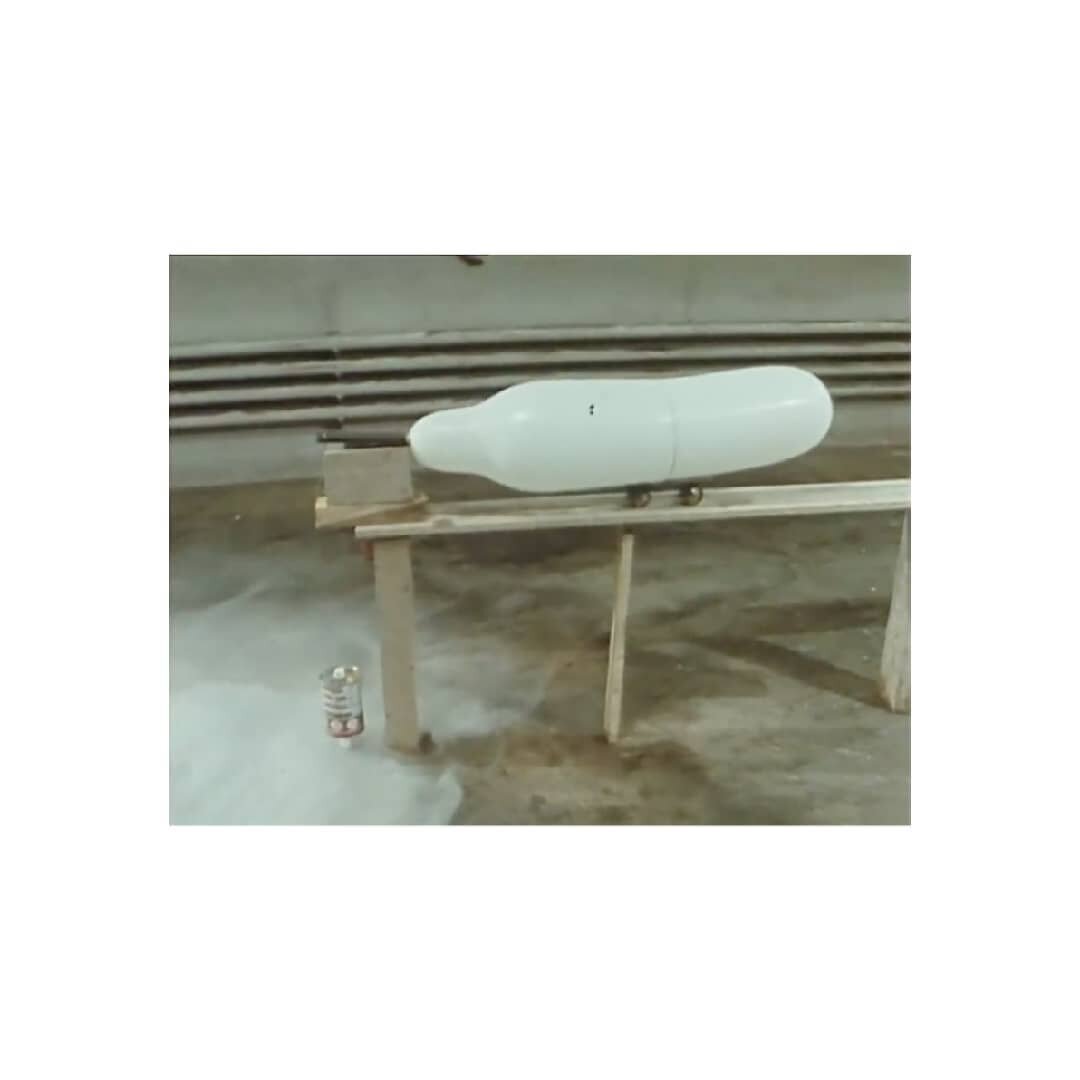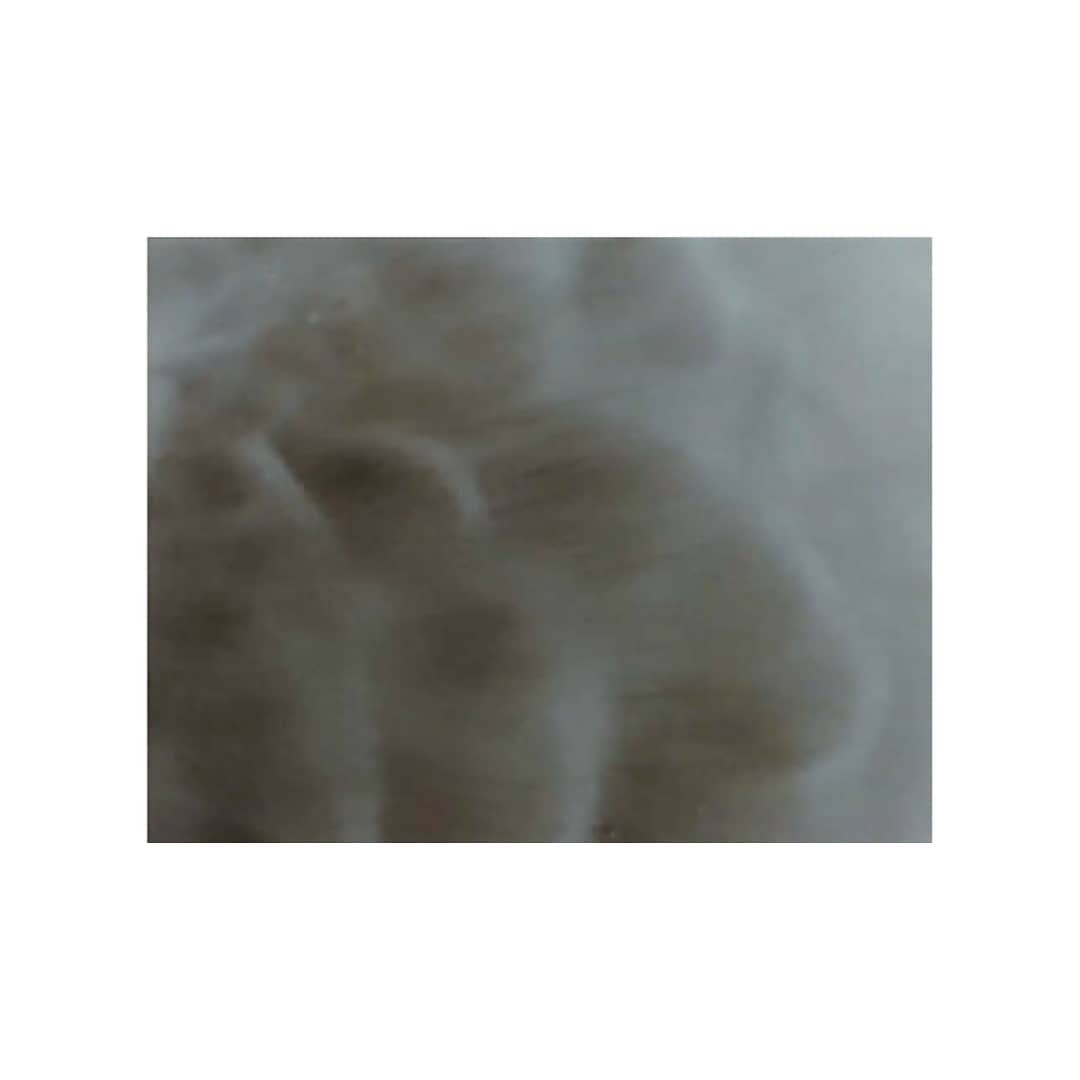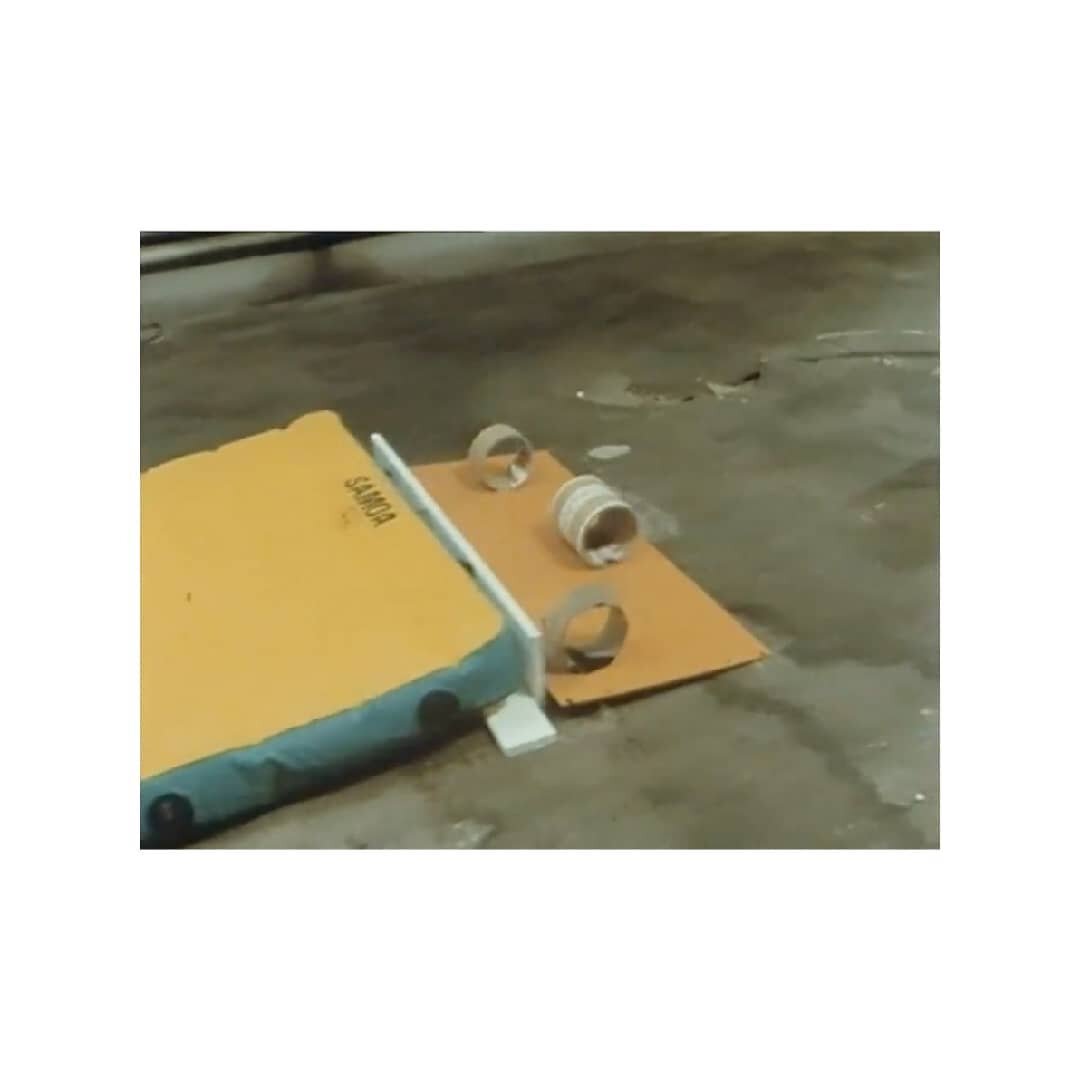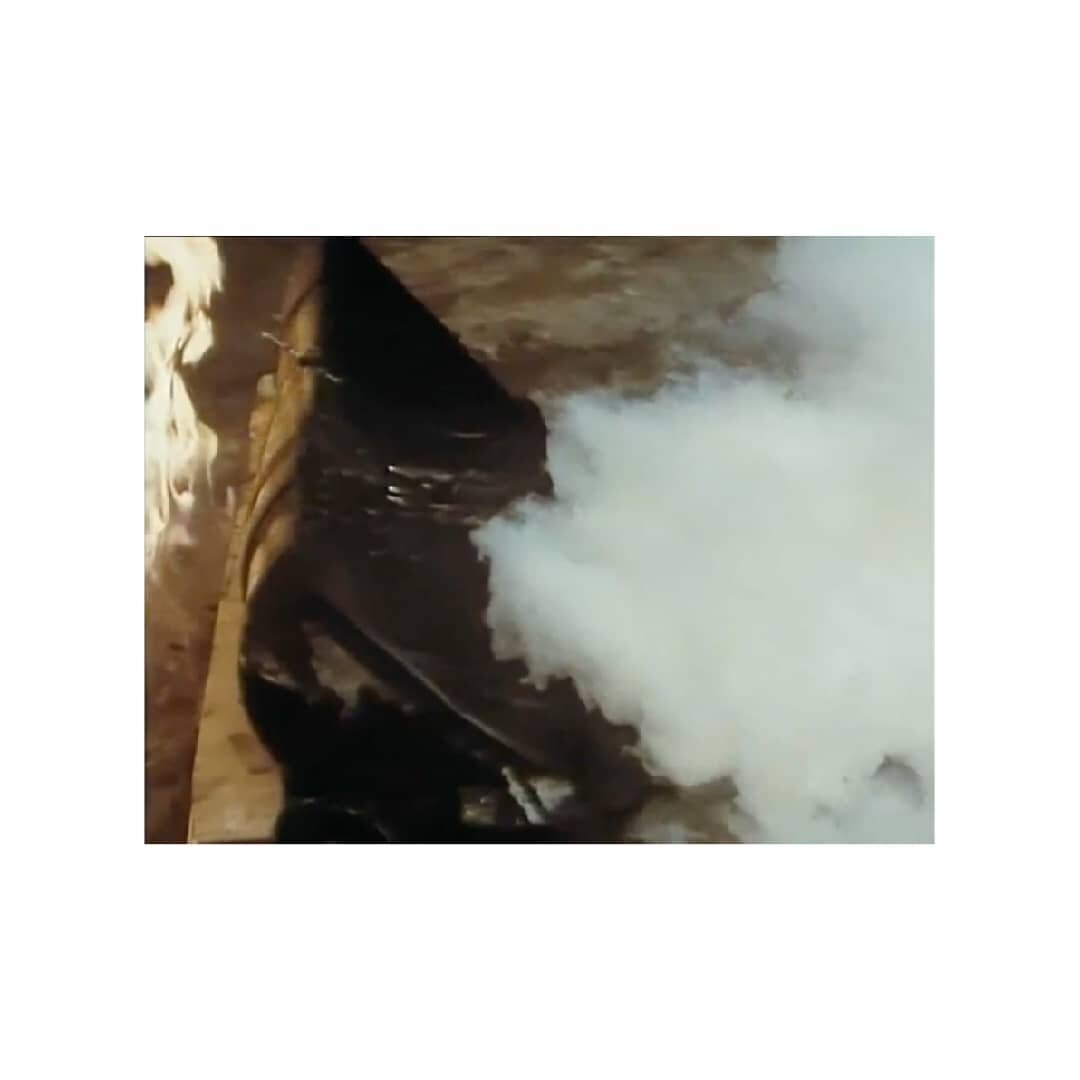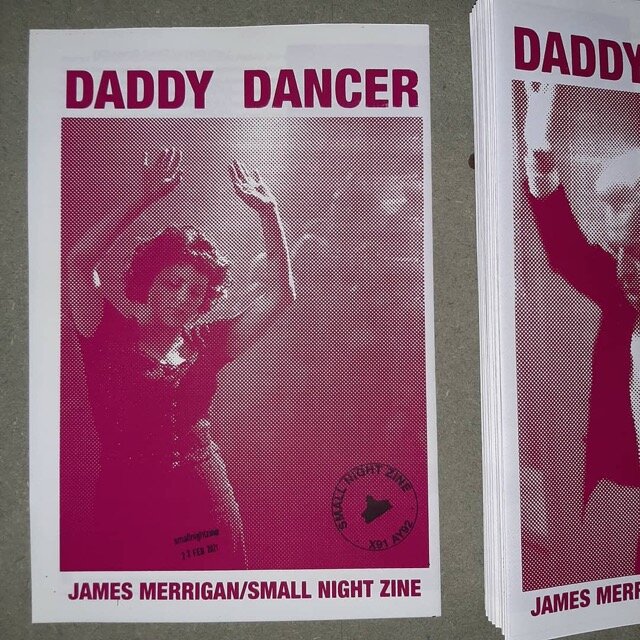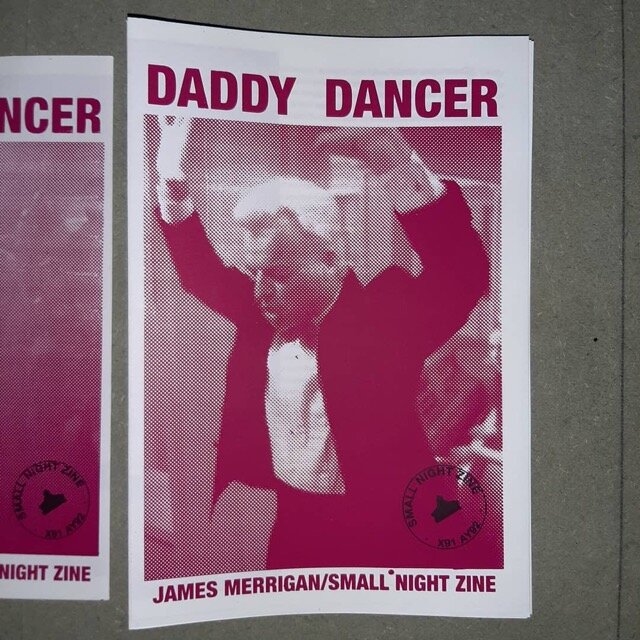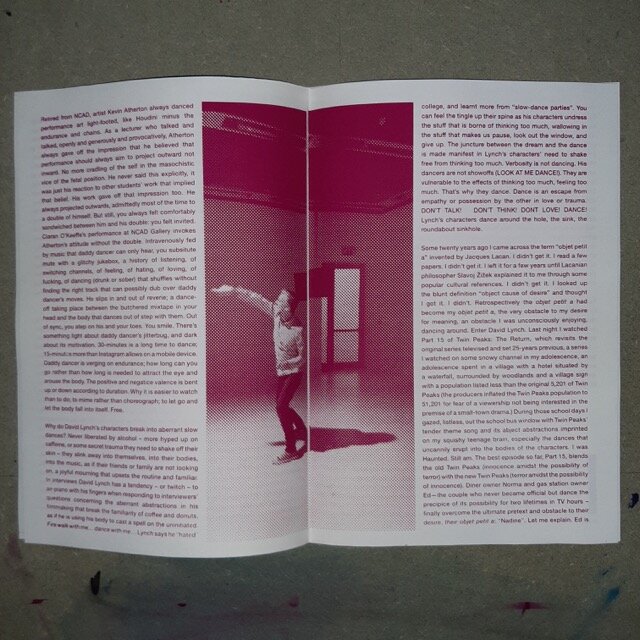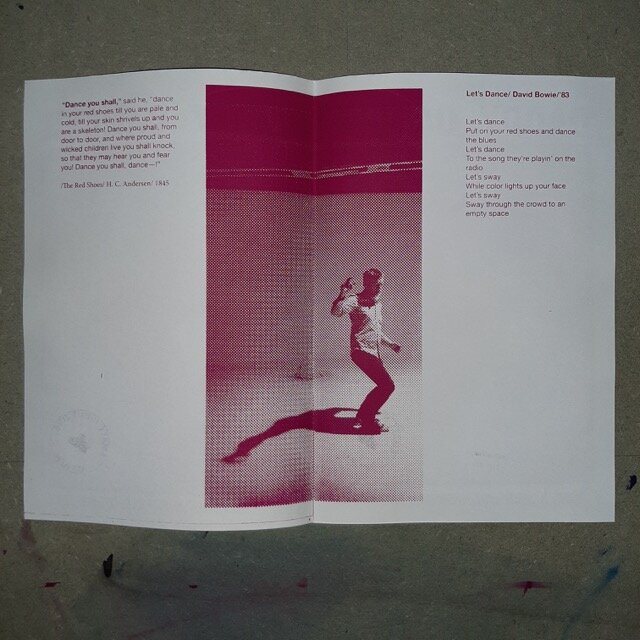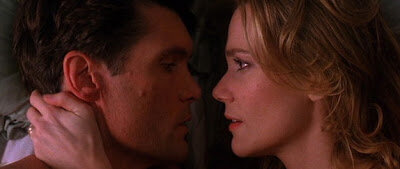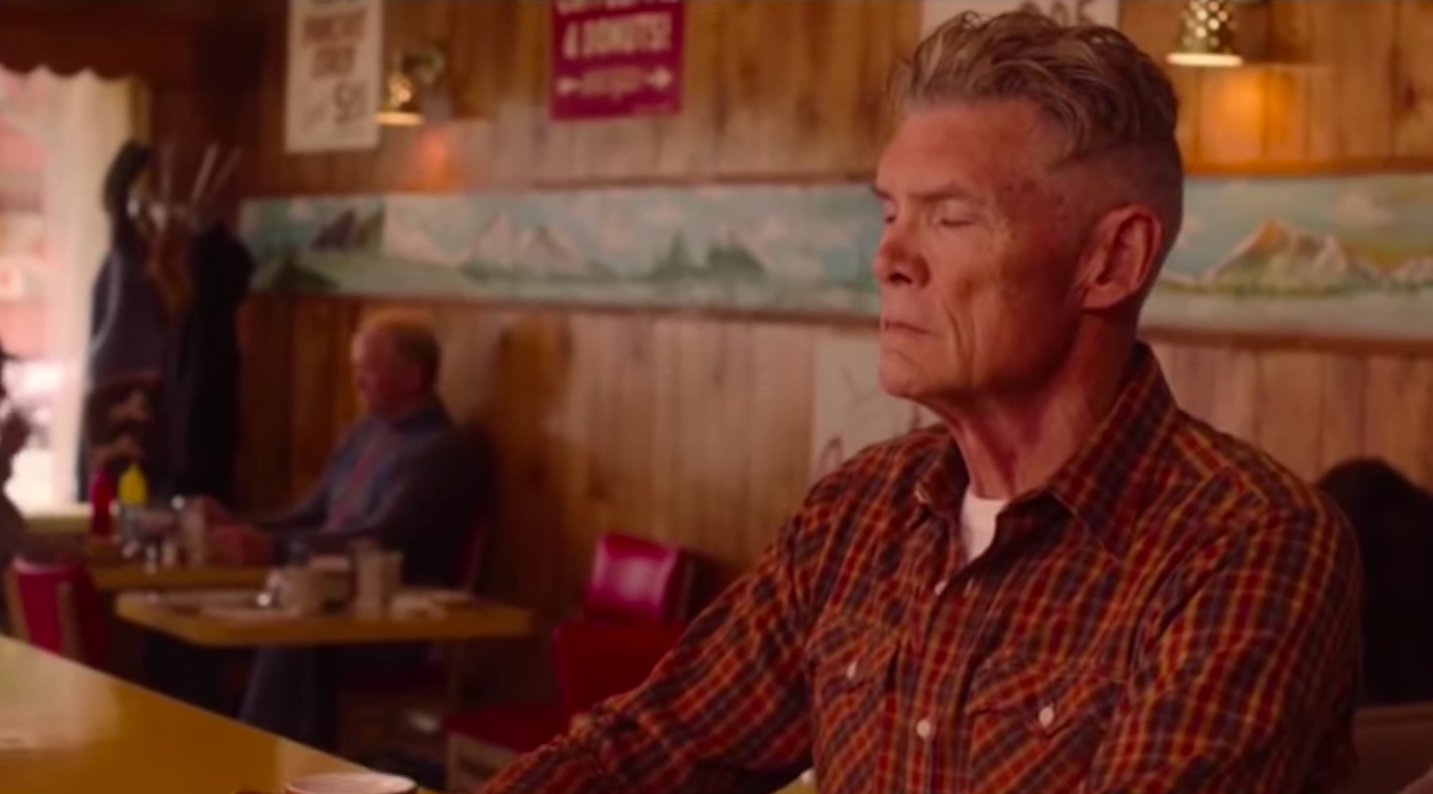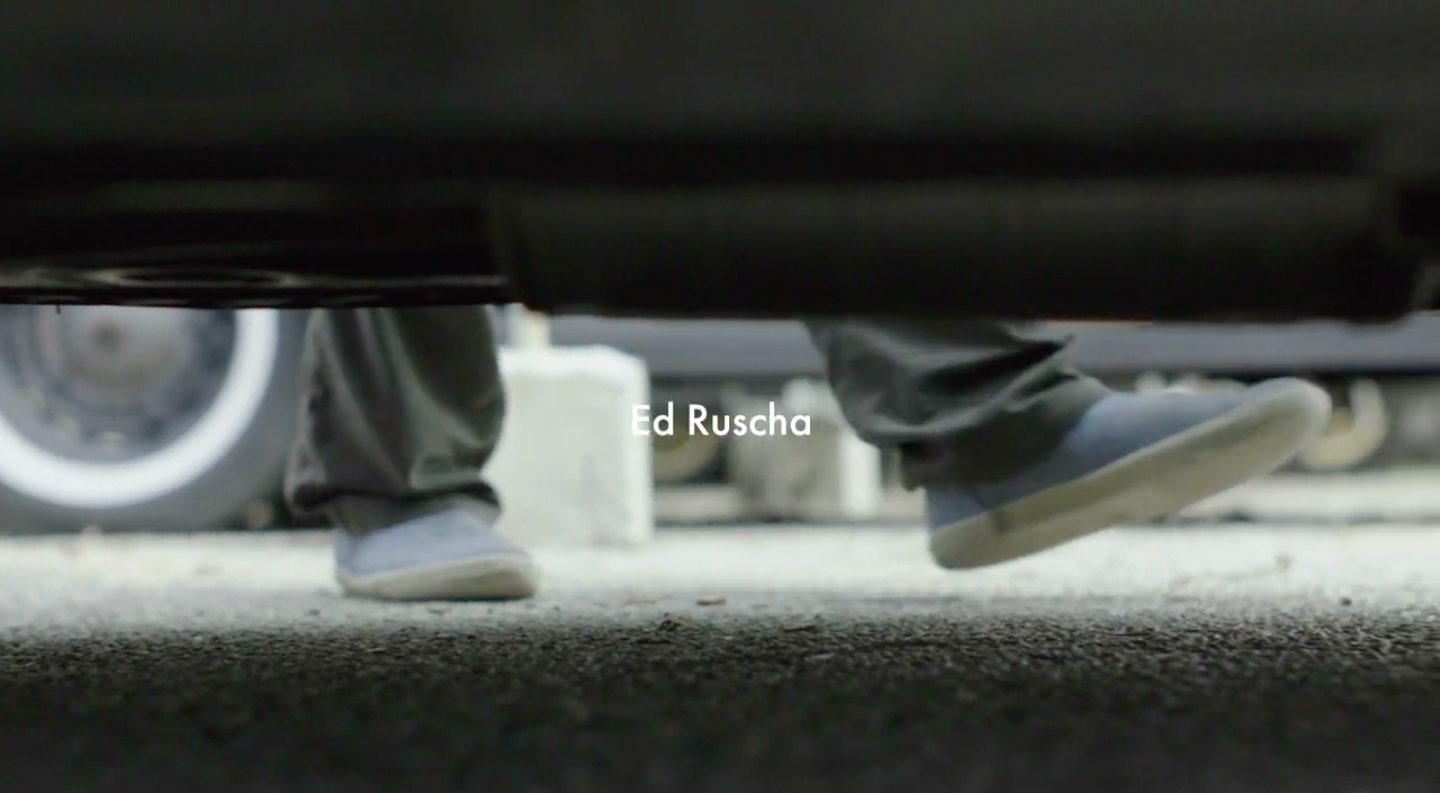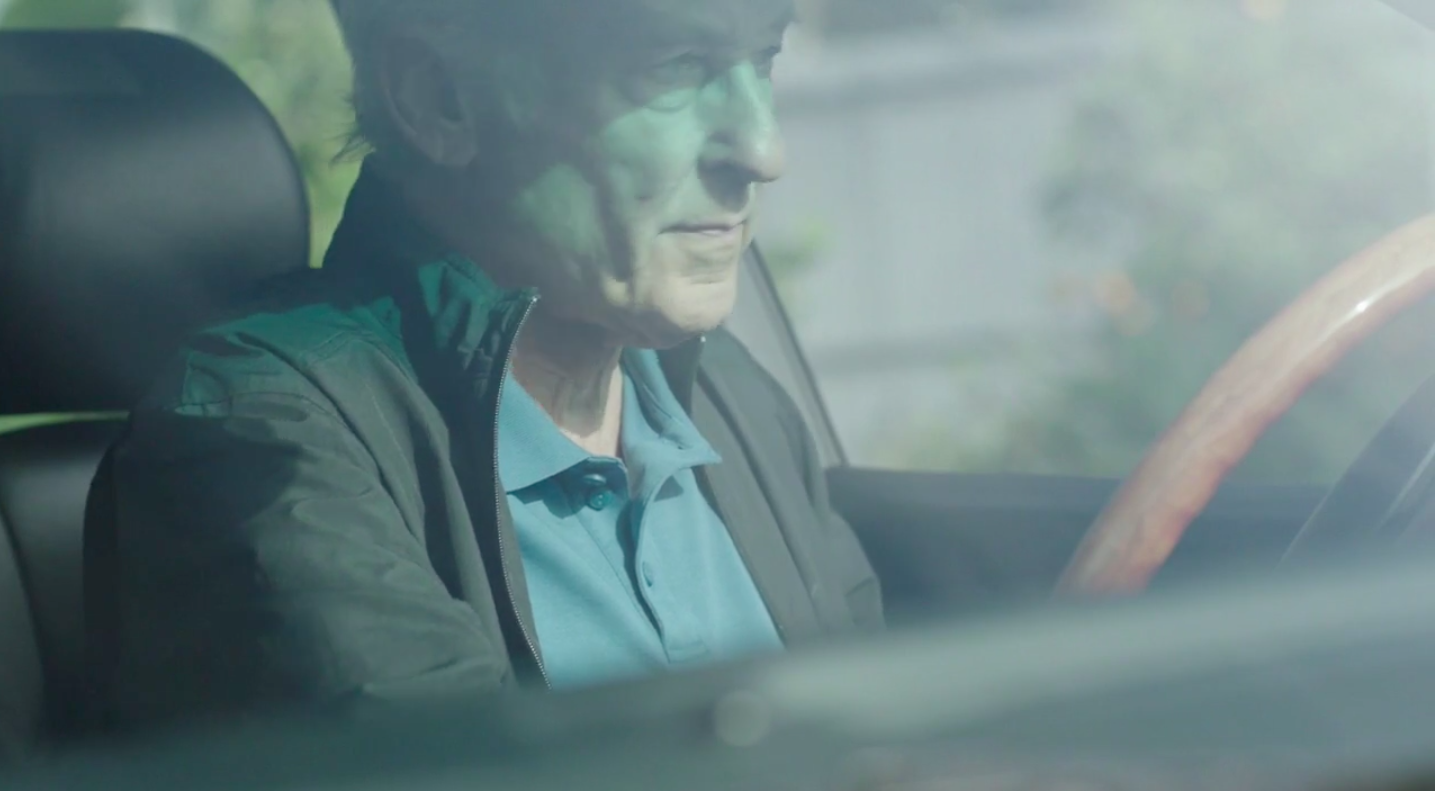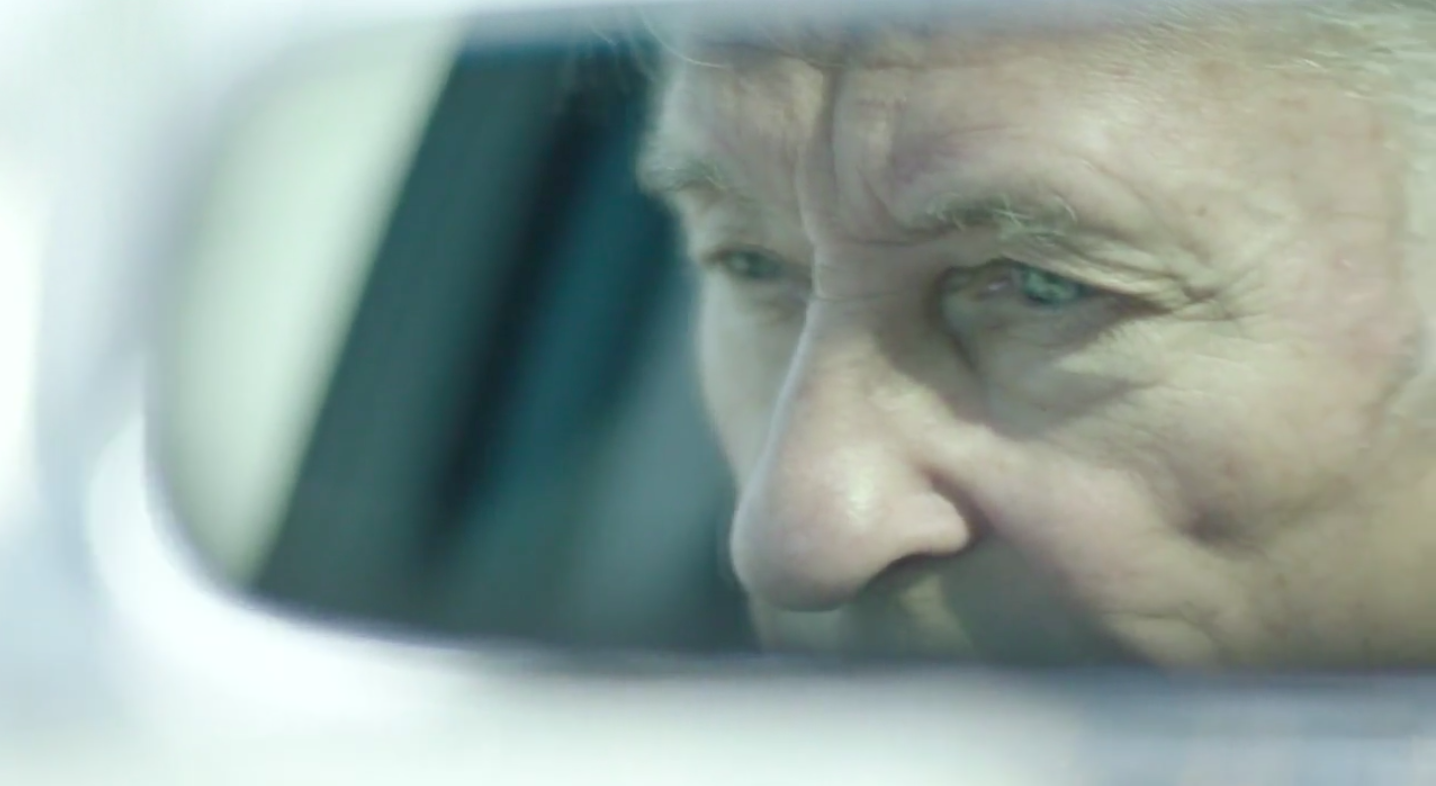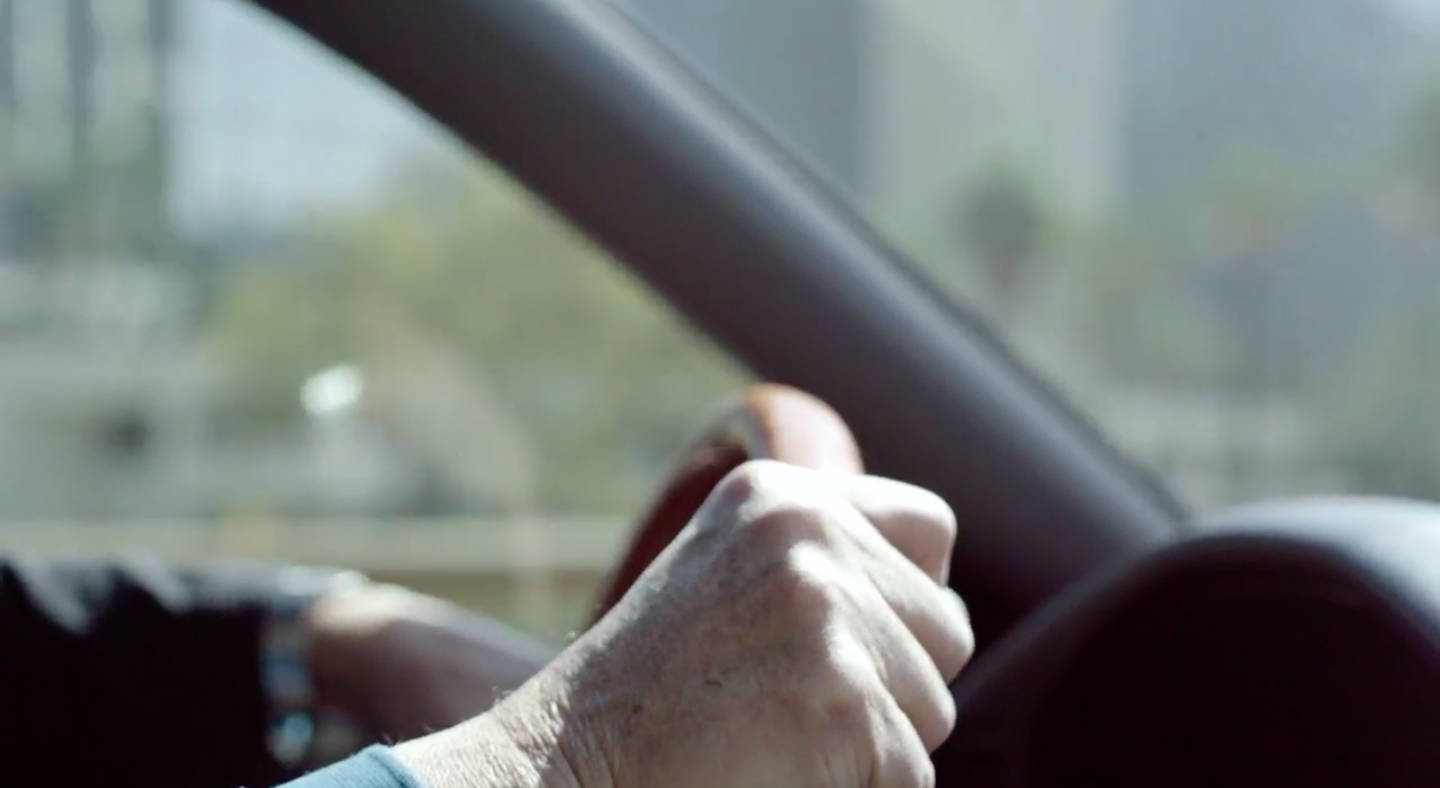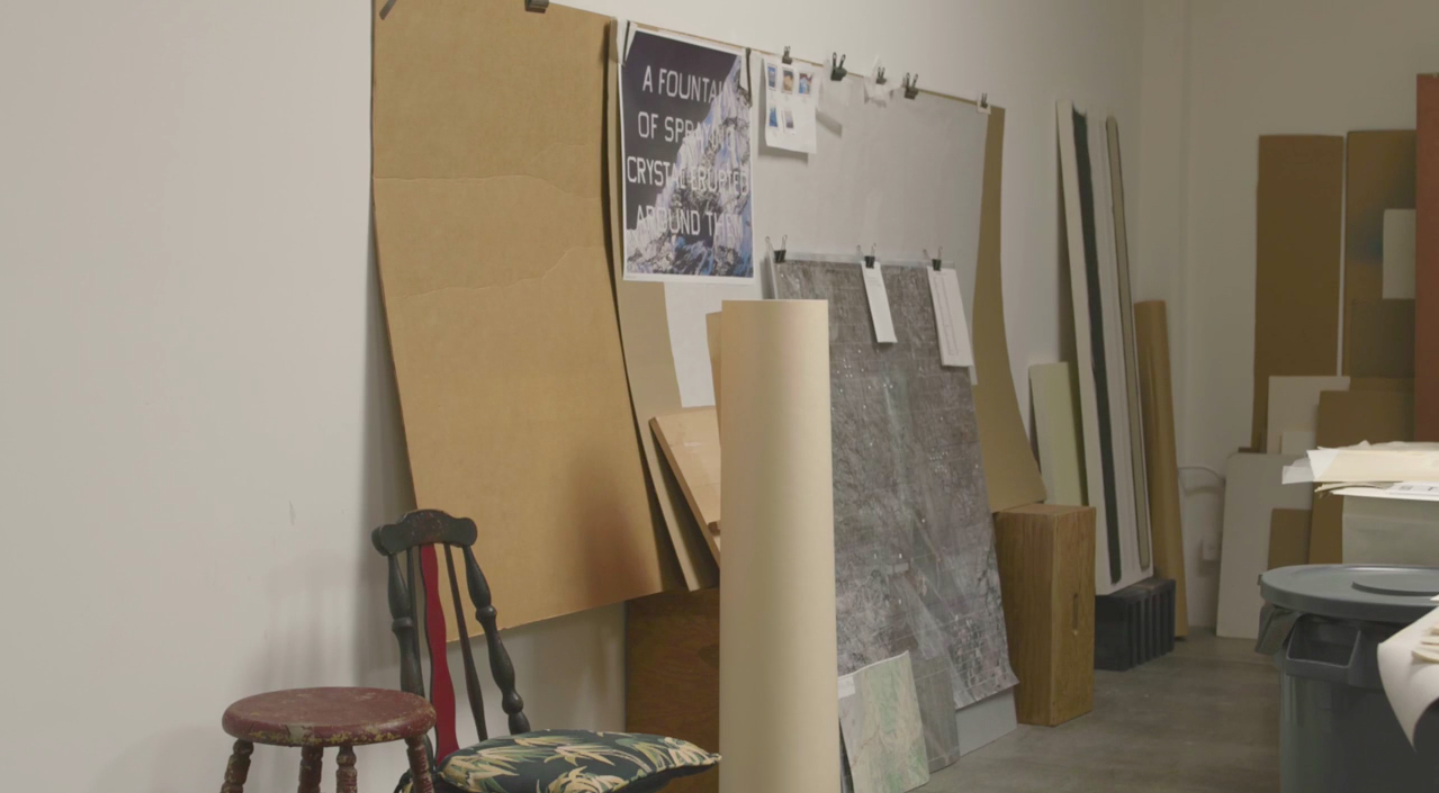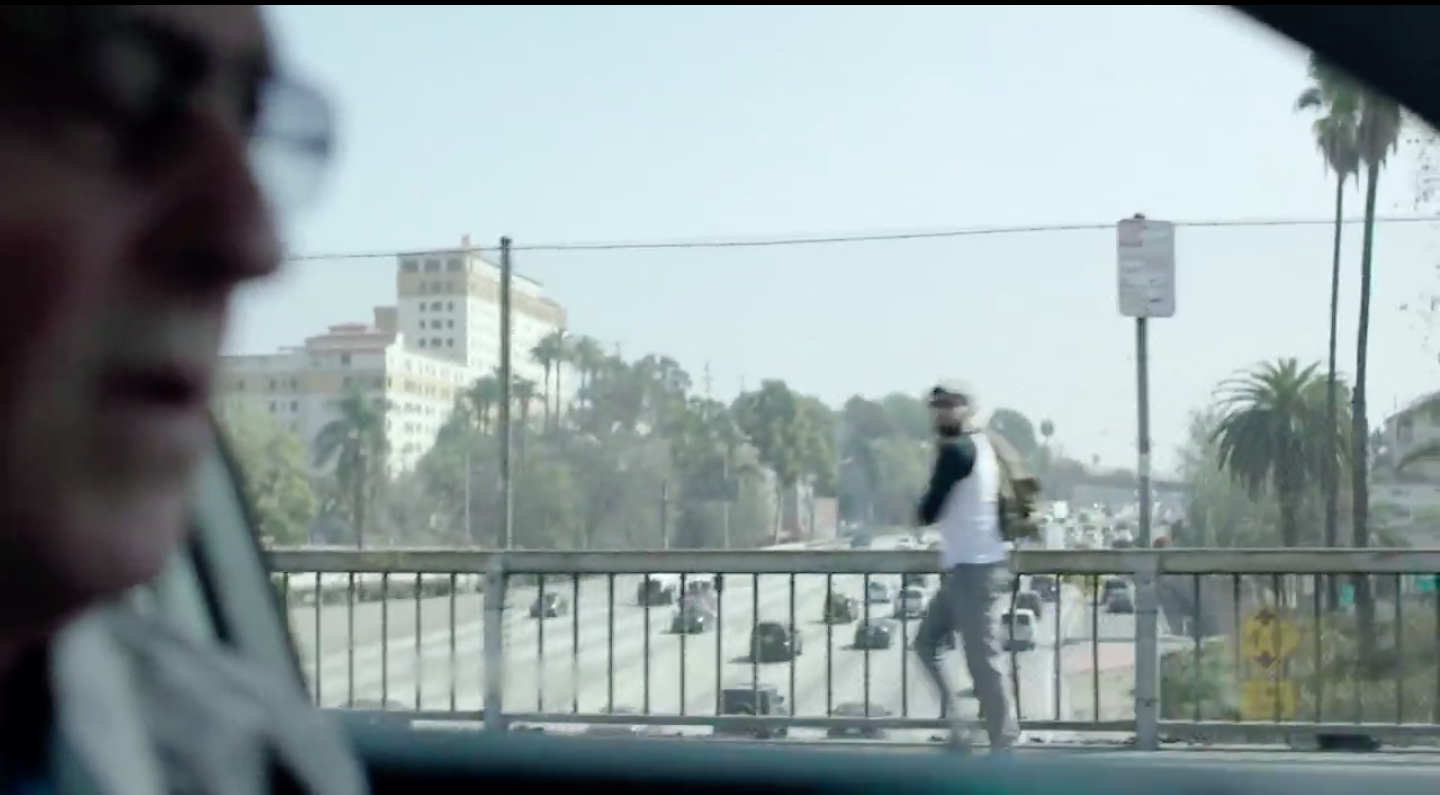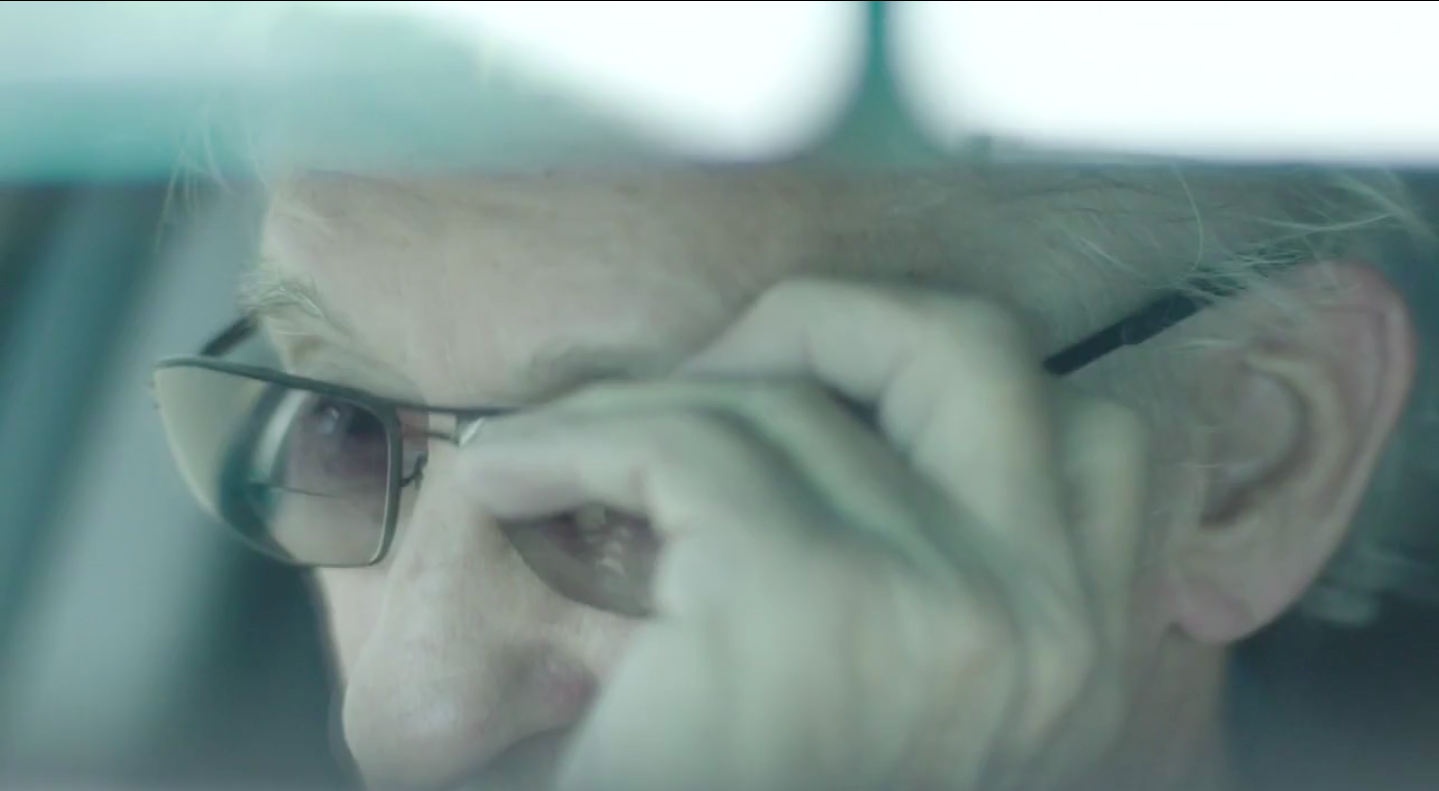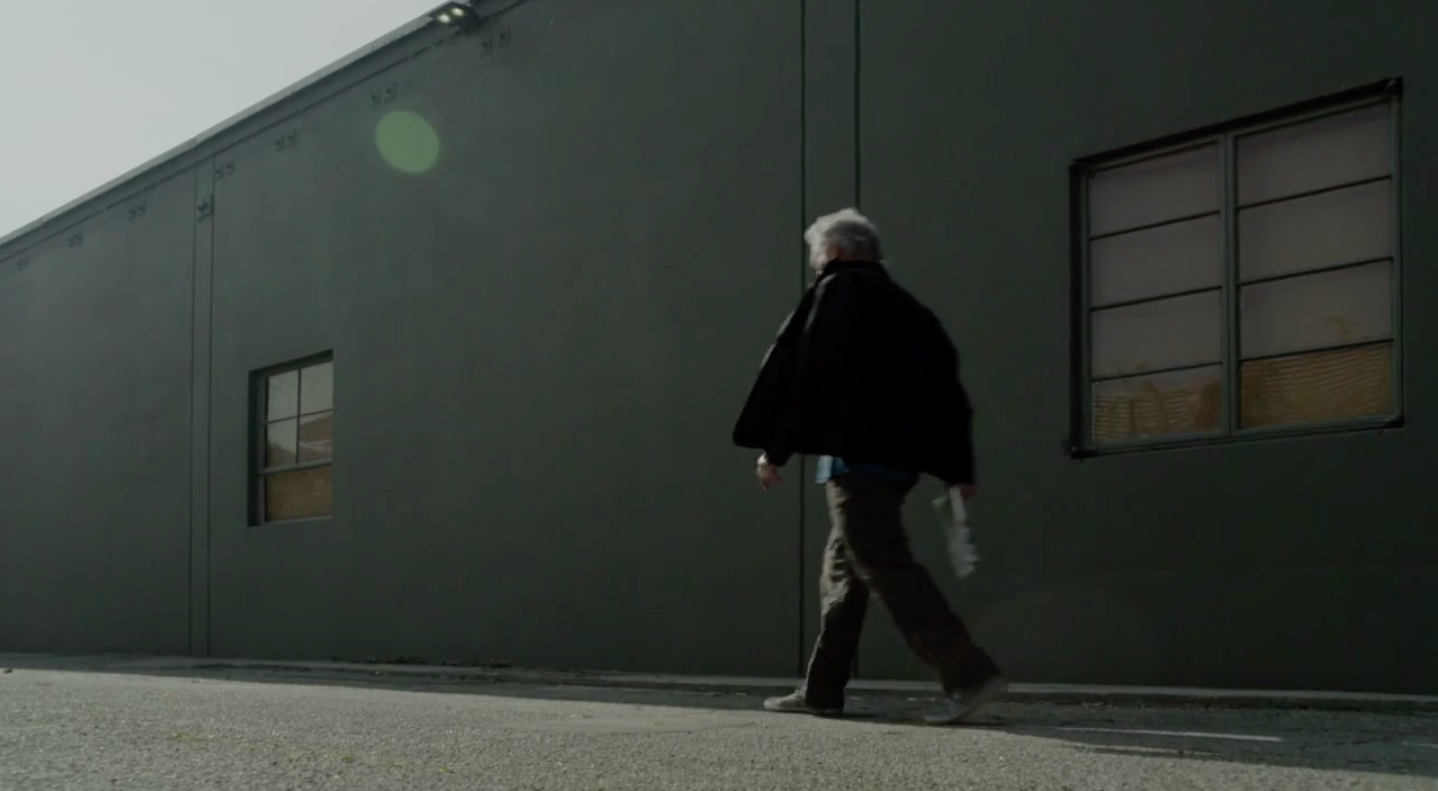///
READY… SET…. the strung-up black plastic sack – Santa-Claus big & full – rotates & descends just above the standing tyre set in the ad hoc starting-block placed on the timber sheet with the mellow incline in the warehouse in Zurich in 1987/
///
The black sack Goes... to make contact with the tyre's bulky threads; first a rub, then a slice, then another to make the tyre Go/ 𝘐𝘵 𝘎𝘰𝘦𝘴… down the ramp & under the scaffold-ladder that creates the bridge, the table, the prop under which the rolling tyre limbos/
///
The tyre bumps into the plastic drum – the beer-gut undercarriage of the plank cantilevered by the scaffold ladder & the concrete stub – that sets the rig of plank, drum, tyre & stub in a cartwheel of circles that bump, roll, smack, collapse & kick to Go, go again, roll again/
///
The tyre 𝘎𝘰𝘦𝘴... to rest & lean on the plank, supine on its horizontal edge, to stand domino-poised with the upright strut that dominos into the brick then the ramp-bound rig with the tall, timber stepladder & the inflated tyre tube under its armpit/
///
The rig 𝘎𝘰𝘦𝘴… peer-pressured by the cuff of rusted metal that hamster wheels the elongated dumbbell & offsets the rolling & bullying descent of the stepladder down the ramp by the contagion of timber & the tyres left leaning out of the frame/
///
The stepladder, hedged in by the timber rails, Goes to shimmy down the ramp into the maw of the tractor tyre from which the ramp says “AHHH!” like the doctor said “AHHH!” to the kid before the doctor administered the tongue spatula & the doctor & the kid said “AAHHHHHH!” in sympatico/
///
The stepladder Goes to stop in the maw of the tyre to neck – with the antenna that stick out of the tyre tube held in the stepladder's armpit – the custard-yellow plastic bottle with the red cap of the Fairy washing-liquid kind that stands on the office desk with the aluminium legs/
///
The bottle Goes to fall forward away from the edge of the desk that stands on the sheet propped by the leggy fulcrum that fails to counterbalance the weight of the bottle that slaps upon the desk, to pivot & create the avalanche of the desk, the timber & the dolly-on-rails & ejects et al from the potential pileup to shove the concrete lintel – supine upon the sleeper – & the upright post into the standing-tall yellow/green inflatable raft labelled SAMOA/
///
In the sleepy fall that suddenly picks up pace the lumbering inflatable smacks off the warehouse floor to lever-launch the bagged & tied weight that perches upon the upright metal pole/
///
The bagged weight maypole swings in an orbiting descent to topple the stick preventing the strung-up black plastic sack – Santa-Claus big & full – from rotating & descending just above the standing tyre set in the ad hoc starting-block placed on the timber sheet with the mellow incline in the warehouse in Zurich in 1987/
///
The black sack rotates, crackling like the contented fire in the heart of hearths, clipping then slicing across the upright tyre to make 𝘐𝘵 𝘎𝘰/
///
The tyre Goes …. down the ramp to run headlong into the timber stilt that stands erect against the table & checks the red-capped green bottle of alcohol solution, bound by the metal cuff, to fall & make the rolling arc down & under the bath of grey foam that silkily undulates like a massaged body/
///
The liquid Goes to pour into the bottomless plastic bottle bridging the bath of foam with the topless plastic container to vaporise & bubble over, down the acutely angled ramp where, the tyre strapped with the grey-green watering can & wedged between the two resting tyres, turns over like a clock dial pointing to 3A.M/
///
The grey-green watering can erupts in a Murakami Manga-jizz of foam to geezer towards the large metal tray where the liquid – melted-marshmallow consistency – spreads shallow & (s)low to pool & overflow on the treble-tiered trays scarred by the marbled residue of countless experiments/
///
The lit candles flambés the primordial marshmallow to the sound of the genesis that resounds deep & hollow within the apparatus like a distant fireworks display/
///
The piggy-tailed fuse – attached to the cannon propped towards its target by the lip of the metal basin… 𝘎𝘰𝘦𝘴 – fizzing & climbing like the roller coaster that erases its own track/
///
Like the muffled pop of a tennis-ball launcher the ammunition Goes off in a puff of smoke, tipping over the erect bottle and its solution into the limp white balloon, bottle-mouth to balloon-lip/
///
The white balloon 𝘣𝘢𝘭𝘭𝘰𝘰𝘯𝘴… a fluid-filled lung, inhaling the gap to chest-bump the water drum found pivoting on its hip with diamond ambition/
///
The water drum tips over -- will over gravity -- to right & relieve itself in the basin where, the chair, donkey-kicks from the chamber pot before Archimedes can shout "Eureka!"/
///
The chair -- wet shinned & yoking weight -- tilts forward to crash into the jug that falls upon the plate to create the ghostly vapour with a hollow cry/
///
From the pouring mist the upright post topples to tip the rolled-up runner rug from its starting-block/ It 𝘎𝘰𝘦𝘴… down the long, mellow incline to whip, with its unfurling, the green bottle – the fulcrum for which the plank seesaws & balances the oscillating desk to dislodge the white styrofoam cup that begins the goading pendulum swing & crackle, downward/
///
The styrofoam cup 𝘎𝘰𝘦𝘴…. to clip the teeterboard that lever-launches the lit candle -- a severed vampire's finger -- that touches the tantalising fuse in whoosh & flame/
///
Cue the silver bucket filled with explosives – BOOM! – & the resulting plume of dust, smoke & snap of the tethered black-balloon bicep, flexed tight by the cuff & the Iron-Jaw trapeze-act spin-out that deflates, then releases the cuff in a last whoopee of air/
///
The fallen halo tips the balance gently towards the tray with the charcoal foam creating the overflow into the bottomless & topless plastic bottle linked to the viaduct whereupon the wood chassis with the lit candle is propelled forward by the overflow that drenches the track in black/
///
𝘐𝘵 𝘎𝘰𝘦𝘴… diagonally, then across to reach its destination & the candle's terminus to set alight the Mad Max sun roof that goes up in flames to light the fuse attached to the chassis & the rocket that propels it on rails.
///
The chassis Goes... to butt the nozzle & deflate the small, marbled beach ball tugging the tethered slip of timber clothesline-crucifixiing the plastic bottle/
///
The metronomic hand releases the flammable catalyst in the saucepan to flambés the flyswatter pivoting on the mouth of the bottle counterbalanced by the cradled weight dropped into the cardboard conduit & released onto the chain of topsy-turvy timber seesaws that pivot & lever the black steel drum to bump & rotate the tireless car wheel strapped with the bottle that glug-glugs into the saucepan to weigh upon the timber lever curved like a bow under the growing weight of the saucepan & the chair that tip-toes before the A-frame held in check by the weight of the sweeping brush – like a pizza peel – shooting forward dry ice onto the hot plate that sizzles & melts while the work light with naked bulb turns on/
///
The tape -- the burning tether between the light bulb & the standing tyre on the table -- flairs brightly to snap & free the tyre to go… 𝘐𝘵 𝘎𝘰𝘦𝘴, from table to table to rumble-rung the supine stepladder, then bumble into the tyre bumped from its starting block, down & up the ramp to launch the tyre onto the dolly with the extra-small wheels that, on leaving the ramp, cause the dolly to nosedive & throw the tyre forward over the rags & through the timber bulwark with the tinsy fire torches that, on falling, set fire to the newspaper where the tyre rests/
///
Armed with petrol-doused fuses & motion-motivated by firework pulses the tyre inchmeals forward onto the lever tied to the skinny dumbbell that pivots on the vice-gripped post held in check by the handsaw found limbering on the table/
///
The handsaw flaps its silver blade like the last gasp of the dying fish, to lash the seesaw lever & free the roll… it 𝘎𝘰𝘦𝘴… to treble T (Tip, Tin-can, Tipple) liquid from the bottle into the cup & candle seesaw, that lifts & lights the fused alien antenna sprouting from the boxy paint brush wherein, its handle, fireworks flare/
///
The tyre 𝘎𝘰𝘦𝘴… to range down the ramp & across the warehouse floor in Zurich, where one seesaw leads the tyre to another to 𝘎𝘰 through & through the stepladder & mount the ramp tied hither-thither to cut the legs from under the stepladder & launch the tyre drunkenly towards the black steel drum/
///
The chassis with candle pops its perch to race down the ramp & across the floor to the terminus with the firework that sprays its sparks far-far away from the debris & destruction into the empty & the dark & timeless warehouse in Zurich/
///
The slick 𝘎𝘰𝘦𝘴… fire to fuse, fuse to floor, onwards towards the tower of blocks & timber that wedge & tension the handsaw by the nose of the blade that ignites & releases the whistling blade to catapult the projectile at the petrol-doused rag found roosting on the tall pole/
///
Engulfed in flame, the roosted rag maypole swings – like the sunken ghost ship that still burns in the depths – to enkindle the slicked ground and timber arm sent pivoting through the oily breath of the Zurich warehouse like a protest flag/
///
Like a one-way metronome the timber arm lays the flame on the bed of hay where the fuse emerges to light the raft-borne firework that jets across the shallow crust-bound reservoir (the shape of an ear) & into the rusted metal shack with the farmer's skylight/
///
The fuse 𝘎𝘰𝘦𝘴… to rise up-up-up & ignite the ring-of-fire firework that propels forward on wheels & rail -- a devil's sprinkler -- amidst the junkyard vista of debris & destruction to puncture the rubber lips of the tyre onwards to plop into the steel bucket that cauldron smoulders/
///
𝘋𝘰𝘶𝘣𝘭𝘦, 𝘥𝘰𝘶𝘣𝘭𝘦 𝘵𝘰𝘪𝘭 𝘢𝘯𝘥 𝘵𝘳𝘰𝘶𝘣𝘭𝘦; 𝘍𝘪𝘳𝘦 𝘣𝘶𝘳𝘯 𝘢𝘯𝘥 𝘤𝘢𝘭𝘥𝘳𝘰𝘯 𝘣𝘶𝘣𝘣𝘭𝘦 – shotgun to jam jar the firework screams to seesaw the metal nugget, 𝘎𝘰.../
///
Coast to cuff, fuse to fizz -- the limp balloon kisses the tube to come alive & hump the seesaw & dump the nugget onto the table where the fairground of rusted powder sparkles to black/
///
The tin cans rocket-orbit round the plastic bottles, & the voodoo figure -- alive under the spell & justice of two criss-crossed knives & hanging weights -- walks the plank to fall & activate Vincent's shoes propelled forward by the cuff of metal, the skinny dumbbell pedal, & madness/
///
Down the ramp the possessed shoes 𝘎𝘰 to kick the steel drum & free the cable reel that bumps & rolls the tyres that form a causal chain of water-swapping plastic containers & tacky masking tape rings that miraculously move up the ladder rungs & the ramps to set in motion the hollowed-out steel drum – internally filled with the mouth-to-ass plastic containers that cartwheel the drum forward – to squash the plastic container & evacuate the water via the tubular tap atop the tower of tyres into the tin can/
///
The tin can, filled to the brim, slides down the slick-backed table top to knock the pane of glass that nudges forward the chassis bearing the two knives & the acid dispenser that dissolves the styrofoam sheet on contact, a slow, serial, ritual contact, like skin under the peeling sun/
///
Momentarily slowed in a drift of gnawing styrofoam, the knife-wielding chassis 𝘎𝘰𝘦𝘴… to race down the ramp & headlong into the water balloons that explode to flood the tiered trays whereupon the jug filled with combustible liquid jumps, followed by friend flame/
///
The fire 𝘎𝘰𝘦𝘴…, carried along by its liquid accelerant to reach the kettle close to boiling from the blowtorch that curls under its carriage to propel forward, with extreme velocity & whistle, to crash inside the hay-strewn timber pylon that 𝘎𝘰𝘦𝘴 up in flames in the warehouse in Zurich in 1987/
///
The kettle with the sharp projectile piercing its spout, roosts till boiled, to harpoon the black water balloon above the tray of white foam that sizzles & feeds the tray down into the encrusted reservoir, lagooning/
///
The foam 𝘎𝘰𝘦𝘴 Head & Shoulders down the viaduct to surround the white column that gives way so the once supported jetty – upon which the big cookie-wheeled chassis armed with the corked bottle of liquid is parked – collapses to form the ramp for the big wheels to 𝘎𝘰/
///
𝘐𝘵 𝘎𝘰𝘦𝘴, down the ramp to butt the timber barricade where its front big wheels dissolve & sink, lowering the angle of the corked bottle that chemically churns to pop its cork off the ramp-bound knob of metal ribbed with rope hitched to a vice-gripped spray bottle -- head held high & red like a cockerel -- that hiss-spits its load upon the suspended balloon to burst & release the reactant in the tray of foam below/
///
The tray overflows with foam & pools around the beam that supports the sloped board upon which the black teardrop nestles in burlap/
///
The prop collapses & the teardrop swings in an ever-expanding arc to tip over the pint glass of solution that ignites into the field of flame on the metal table top to drip fire down below on the warehouse floor in Zurich in 1987/
///
The flame snakes along the slicked warehouse floor to inflame the sliced steel drum that tips its liquid load & the vaporous smokescreen from which emerges a ghostly Scooby Doo jetty where the oblong white balloon braces on wheels until the tin can topples into the vapour to tug at the lip of the balloon that 𝘎𝘰𝘦𝘴/
///
The albino balloon expels its lungs its first & last breath, to Moby Dick the dowel that barrels downhill to pivot upon the seesaw where the sticky back surface -- like insect tape -- slows the dowel to an inchmeal tug, roll, depress, unfurl, extend & slap of the inflatable raft to make the three cardboard cuffs 𝘎𝘰 from their starting block/
///
Like man-made tumbleweeds in the Warehouse in Zurich, one cardboard rim after another rim-riots the floor & rumble-rungs the aluminium ladder to nuzzle 1… 2… 3… 4… 5… 6… successive rims before finally tipping the board with the round bottomed flask & the blue liquid that pours into the bottomless silver funnel & gives birth to the white balloon that flounces & bungles into the tray of foam/
///
The foam flows & overflows beneath the towering sheet of timber -- TIMBER!! -- a gust of air propels the empty cardboard box on the dolly forward to nose the cable reel & kick the can down the ramp & tip its liquid load into the moat that encircles the pristine white tower/
///
The tower, tied to the towering plank cantilevered by the upright sleeper & the chunky metal dowel, is released to plod the plank & nudge the burlap from its roost, throwing the edifice & the T-square trigger forward under the Scrappy Doo hi-to-low jinks of the sleeper, stepladder, burlap & tractor tyre – all to the demolition's applause – knocking the bucket & its liquid load upon the tray under the A-frame balancing the big, soft sack that bundles over, lodging in the tyre to lever the metal cuff, double-back & unhook the tether tied to the timber A-frame, & release the dolly-borne plank that bullseyes the bucket & tips its last load into the container to form the vapour that drifts in concentric circles into the warehouse in Zurich in 1987 -- 30-minutes that stitched night & day & forever with smoke rings that hula hoop & release from the tongue & out beyond, way beyond, the wet lips of the lucidly bored/ calm/ credits■



